








TheMightyMississippi createdLouisiana,but thestate and nation arestruggling to contendwithits challenging newera
BY MIKE SMITH |Staff writer
First in aseries
ABOARD THE HURLEY Mayo Broussardisback at afamiliar bend in theMississippi River, looking over its deep,muddy currents, helping solve aproblem.
The world is depending on it.
The 78-year-old, with abushy white beard and apack of Marlboros in his pocket,ismaneuvering across the deck of an Army Corps of Engineers dredge ship downriverfrom Baton Rouge. Barges and tugboats are lined up nearby like an armada of commerce. Louisiana’sState Capitol building shimmers in the far-off distance.
Broussard has been up and down this stretch of the Mississippi, watching it and measuring it, clearing outthe muck buried deep below its surface so the giant vessels stacked with freight from across the globe can pass safely.For him, the calculation is simple: The goods must flow

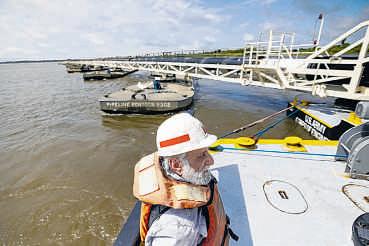
ABOVE: Mayo Broussard, with the U.S. Army Corps of Engineers, takesabreakonthe Mississippi River near Baton Rouge. ‘The river’s constantlytryingtochangeitself. We’retryingtocontrol it,’hesaid
TOP: The Mississippi River looking upriver with NewOrleans toward theright, withLakePontchartrain in the background STAFF PHOTO By DAVID GRUNFELD
“Bottom line —and whatever it takes, we do it,”Broussard said. But along the Mississippi from Baton Rouge to theGulf,
that vitalmissioniscolliding with new realities on the river thathold profound consequences for everyone living beside it. And as thenew eraemerges,
Louisiana and thenation are struggling to contend with it.
Broussard recalls his early years in the industry,doing the dirty work of managing the mud being dug up from the depths. There were goods to be shipped and money to be made, andthe river,despite all itstwists and turns, provided adirect path to prosperity.
That’seven more true now, and underneath the ship, the Hurley,isone of adozen curves in theriver between Baton Rouge and New Orleans that stack up with mini-mountains of mud, threatening navigation. It can takemore than amonth to finish the job here, even for theHurley,the largest dredge of its type in North America. Agiant dustpan-likemachine drops down from the ship, vacuuming sediment and spitting it back out from along pipe to be swept downriver with the currents. When it’s deep enough for vesselsthe size of three football fieldstopass, thework is done. For now.
ä See RIVER, page 10A
ä Foraninteractiveversion of this storywithavideo and map, go to theadvocate.com.
John Foster has lifted community aftertragedy
BY JANRISHER |Staff writer
first public place“American
The
Idol”finalist John Foster ever performedwas at Morley Marina in socalled “Back Brusly.” For the uninitiated, in Brusly,everything west of La. 1isconsidered
Back Brusly
“When you cross the highway, you go to Front Brusly,” explained Morley Marina manager, JeremyPrejean. Prejean has known Foster since he was atoddler.They were neighbors


for years. He remembersFoster’s first performance at Morley’swell and is quick to credit the young singer’srise to hisuncle, Gaylen Martin.
Prejean is not alone. RickBourgoyne and Blake Sarradet, both longtimeemployees at Foster’sfamily’sbusiness, Benoit’s CountryMeatBlock in Addis, also credit Martin for helping get Foster’s career off theground. So does his grandmother,Verbie Benoit. (Foster’slegal last name is Benoit. He grew up using thedouble name “JohnFoster.”)
Even so, Martin isn’tquick to take muchofthe credit, but he does acknowledge that he recognized early on that Foster,from Addis,had somethingspecial
“I just started teaching him some guitar chords and working withhim alittle bit. He was areally fast learner,” Martin said. “Anytime Iwould teach him something and tell him to go homeand practice it,the next day or so, he’d have it figured out.”
Martinhas taken time off from his jobasanoutside sales personfor a welding fabrication companytogo with Foster to the “American Idol” audition in Nashville, Tennessee, then to Hawaii. On Friday night, he was packing his bags,getting ready to leave early Saturday morning for his second trip to Hollywood. Martin, 55, married Foster’saunt his father’ssister —and becamepart
ä See FOSTER, page 9A
the course on currentbills
BY SAM KARLIN |Staff writer


Ayear after Republican leaders ushered in aseries of pro-industry changesina bid to alleviate the home insurance crisis in Louisiana, officials are confronting a hard truth: there are few immediate signs of relief Insurance rates are not likely to come downdramatically, at least in the near term And while the ongoing legislative sessionhas put the focusonauto insurance rates, many homeowners in south Louisiana stillface the threat of losing their homes over highpropertyinsurance bills. With homeowners’ insurance rates ticking upward for mosthomeowners since the changes theLegislature adopted last year, lawmakers appear poised to stay the course on aproindustry strategy They’ve rejected bills this session that would require insurers to reveal more information about their finances and to mandate certain levels of discounts for homeowners with fortified roofs. A broad tax break for homeowners paying high premiumsappears unlikely
The lack of progress has frustratedGov.JeffLandry,who is at odds with fellow Republican Insurance Commissioner TimTemple, thearchitectofthe insurerfriendly plan. But industry groups and Temple say they are starting to see signs of improvement. Ahandful of companieshavewon approvalto start writing home insurance policies in thepast year.And ahandfulofcompanies have filed rate decreases,though an analysis of state data from TheTimes-Picayune |The Advocateshows that rate increases are outpacing the declines.

on Wednesday.

Iran shrugs off threats, will continue nuke talks
TEHRAN, Iran Iran’s president said his country will continue talks with the United States over its rapidly advancing nuclear program but will not withdraw from its rights because of U.S. threats.
“We are negotiating, and we will negotiate We are not after war but we do not fear any threat,”
President Masoud Pezeshkian said during a speech to navy officials broadcast Saturday.
“It is not like that they think if they threaten us, we will give up our human right and definite right,” Pezeshkian said.
The negotiations have reached the “expert” level, meaning the sides are trying to reach agreement on the details of a possible deal. But a major sticking point remains Iran’s enrichment of uranium, which Tehran insists it must be allowed to do and the Trump administration increasingly insists the Islamic Republic must give up. President Donald Trump has repeatedly threatened to unleash airstrikes targeting Iran’s program if a deal isn’t reached. Iranian officials increasingly warn they could pursue a nuclear weapon with their stockpile of uranium enriched to near weapons-grade levels.
Comey over ‘86 47’ post
WASHINGTON Former FBI Director James Comey was interviewed by the Secret Service on Friday about a social media post that Republicans insisted was a call for violence against President Donald Trump.
The interview was part of an ongoing Trump administration investigation and was expected to help authorities assess the purpose and intent of the post and whether Comey intended to communicate a threat to the president, which he has flatly denied. Any decision on whether charges should be filed would be up to Attorney General Pam Bondi, Trump said Friday, though there’s a high bar in proving that comments or posts amount to direct threats of violence.
Homeland Security Secretary Kristi Noem confirmed in a post on X that Comey had been interviewed and said she would “take all measures necessary to ensure the protection” of Trump. The Secret Service is part of the Department of Homeland Security An interview is a standard part of an investigation into comments perceived as potentially threatening but does not suggest that charges are being considered.
At issue is an Instagram post from Thursday in which Comey wrote “cool shell formation on my beach walk” under a picture of seashells that appeared to form the shapes for “86 47.”
Merriam-Webster, the dictionary used by The Associated Press, says 86 is slang meaning “to throw out,” “to get rid of” or “to refuse service to.” It notes: “Among the most recent senses adopted is a logical extension of the previous ones, with the meaning of ‘to kill.’ We do not enter this sense, due to its relative recency and sparseness of use.”
2nd man booked in fires at U.K. PM’s properties
LONDON A second suspect was arrested Saturday on arson charges in connection with a series of fires targeting property linked to U.K. Prime Minister Keir Starmer, police said.
A 26-year-old man was arrested at Luton Airport on suspicion of conspiracy to commit arson with intent to endanger life, police said. The arrest came the day after a Ukrainian man appeared in court on charges of setting fire to Starmer’s personal home, along with a property where he once lived and a car he had sold. Police didn’t provide the nationality of the second suspect.
No injuries were reported from the fires which occurred on three nights in north London between May 8 and May 12. Roman Lavrynovych, 21, didn’t enter a plea Friday in Westminster Magistrates’ Court to three counts of arson with intent to endanger life.
Lavrynovych denied setting the fires and, at this point, there is no explanation for the crimes, a prosecutor said.
Starmer and his family had moved out of his home after he was elected in July
At least 27 killed, including 18 in Kentucky
BY DYLAN LOVAN Associated Press
LONDON, Ky. — At least 27
people have been killed by storms systems that swept across part of the U.S. Midwest and South, with Kentucky Gov Andy Beshear announcing Saturday that 18 of the deaths came in his state and 10 others were hospitalized in critical condition.
A devastating tornado in Kentucky damaged homes, tossed vehicles and left many people homeless. Seventeen of the deaths were in Laurel County, located in the state’s southeast, and one was in Pulaski County:
Fire Department Maj Roger Leslie Leatherman, a 39year veteran who was fatally injured while responding to the deadly weather
Parts of two dozen state roads were closed, and some could take days to reopen, Beshear said. He also said the death toll could still rise
“We need the whole world right now to be really good neighbors to this region,” the governor said.
State Emergency Management Director Eric Gibson said hundreds of homes were damaged, Kayla Patterson, her husband and their five children huddled in a tub in their basement in London the county seat, as the tornado raged around them.
“You could literally hear just things ripping in the

distance, glass shattering everywhere, just roaring like a freight train,” she recalled Saturday. “It was terrible.”
The family eventually emerged to the sounds of sirens and panicked neighbors. While the family’s own home was spared, others right behind it were demolished, Patterson said as the sound of power tools buzzed in the background.
The neighborhood was dotted with piles of lumber, metal sheeting, insulation and stray belongings — a suitcase, a sofa, some sixpacks of paper towels.
Rescuers were searching for survivors all night and into the morning, the sheriff’s office said. An emergency shelter was set up at a local high school and donations of food and other necessities were arriving.
The National Weather Service hadn’t yet confirmed that a tornado struck, but

PROVIDED By ABC7 LOS ANGELES
Debris
an explosion outside a fertility clinic in Palm Springs, Calif.
BY SEJAL GOVINDARAO, ERIC TUCKER and GENE JOHNSON Associated Press
An explosion killed a person and heavily damaged a fertility clinic Saturday in the upscale California city of Palm Springs in what the FBI characterized as an “intentional act of terrorism.”
Akil Davis, the head of the FBI’s Los Angeles field office, said in the evening that the clinic was deliberately targeted, while declining to elaborate on how authorities have reached a conclusion on a motive.
Authorities were still working to confirm the identity of the person who died at the scene. Davis would not directly say whether that person was the suspect but said authorities were not searching for a suspect.
Davis also said four people were hurt but provided no additional details on the severity of the injuries Authorities were also investigating the possibility that the explosion was being livestreamed.
The FBI said it was sent investigators, including bomb technicians, to the scene Palm Springs Police Chief Andy Mills said in a statement that the blast “appears to be an intentional act of violence” and several buildings were damaged, some severely
“There has been one fatality, the person’s identity is not known,” Mills said.
The act was being investigated as a possible car explosion, according to two law enforcement officials briefed on the matter who insisted on anonymity to discuss preliminary information from an ongoing investigation.
One of the officials told AP that investigators believe the person who died was likely the person who set off the explosion, but they cautioned that the investigation was still in its early stages.
Attorney General Pam Bondi said federal agents were working to learn more, adding, “Let me be clear: The Trump administration understands that women and mothers are the heartbeat of America. Violence against a fertility clinic is unforgivable.”
The FBI’s Los Angeles field office said via the social platform X that “investigators, bomb technicians & an evidence response team” were among assets that were deployed. Investigators from the Bureau of Alcohol, Tobacco, Firearms and Explosives were also assisting.
Dr Maher Abdallah, who runs the American Reproductive Centers fertility clinic, confirmed that his facility was damaged. He said all staffers were safe and accounted for
meteorologist Philomon Geertson said it was likely It ripped across the largely rural area and extended to the London Corbin Airport shortly before midnight
Resident Chris Cromer said he got the first of two tornado alerts on his phone around 11:30 p.m or so, about a half-hour before the tornado struck. He and his wife grabbed their dog, jumped in their car and scrambled to the crawl space at a relative’s nearby home because the couple’s own crawl space is small.
“We could hear and feel the vibration of the tornado coming through,” said Cromer, 46. A piece of his roof was ripped off, and windows were broken, but homes around his were destroyed.
“It’s one of those things that you see on the news in other areas, and you feel bad for people — then, when it happens, it’s just
surreal,” he said. “It makes you be thankful to be alive, really.”
The storm was the latest severe weather to cause deaths and widespread damage in Kentucky Two months ago, at least 24 people died in a round of storms that swelled creeks and submerged roads. Hundreds of people were rescued, and most of the deaths were caused by vehicles getting stuck in high water
A storm in late 2021 spawned tornadoes that killed 81 people and leveled portions of towns in western Kentucky. The following summer, historic floodwaters inundated parts of eastern Kentucky, leaving dozens more dead.
About 1,200 tornadoes strike the U.S. annually and they have been reported in all 50 states over the years. Researchers found in 2018 that deadly tornadoes were happening less frequently in the traditional “Tornado Alley” of Oklahoma, Kansas and Texas and more frequently in parts of the more densely populated and tree-filled mid-South area. The latest Kentucky storms were part of a weather system Friday that killed seven in Missouri and two in northern Virginia, authorities said. The system also spawned tornadoes in Wisconsin, brought a punishing heat wave to Texas and temporarily enveloped parts of Illinois — including Chicago — in a pall of dust on an otherwise sunny day
“Well that was something,” the weather service’s Chicago office wrote on X after issuing its firstever dust storm warning for the city Thunderstorms in central Illinois had pushed strong winds over dry, dusty farmland and northward into the Chicago area, the weather agency said. In Missouri, St Louis Mayor Cara Spencer said five people died, 38 were injured and more than 5,000 homes were affected in her city “The devastation is truly heartbreaking,” she said at a news conference Saturday An overnight curfew was to continue in the most damaged neighborhoods. Weather service radar indicated a likely tornado touched down between 2:30 p.m. and 2:50 p.m. in Clayton, Missouri, in the St. Louis area. The apparent tornado touched down in the area of Forest Park, home to the St. Louis Zoo and the site of the 1904 World’s Fair and Olympic Games the same year
Trump says he will call Putin, then Zelenskyy, on Monday
President to push for Ukraine ceasefire
BY YEHOR KONOVALOV and JOANNA KOZLOWSKA Associated Press
KYIV, Ukraine President Donald Trump said he plans to speak by phone Monday with Russian leader Vladimir Putin, followed by Ukrainian President Volodymyr Zelenskyy and leaders of various NATO countries, about ending the war in Ukraine.
Trump said the call with Putin will be about stopping the “bloodbath” in Ukraine.
“Hopefully it will be a productive day, a ceasefire will take place, and this very violent war, a war that should have never happened, will end,” Trump wrote Saturday in a post on his social networking site Truth Social. Kremlin spokesperson Dmitry Peskov confirmed in comments to Russian media that preparations were underway for Monday’s call.
Trump’s remarks came a day after the first direct talks between Moscow and Kyiv in years failed to yield a ceasefire. Putin had spurned Zelenskyy’s offer to meet face-to-face in Turkey after he himself proposed direct negotiations — although not at the presidential level — as an alternative to a 30-day ceasefire urged by Ukraine and its Western allies, including the U.S. Also on Saturday U.S. Secretary of State Marco Rubio had a phone call with his Russian counterpart, Sergey Lavrov During a visit to Rome, Rubio suggested that the Vatican could be a venue for Russia-Ukraine peace talks.
In Ukraine, a northeastern town declared a period of mourning after
a Russian drone hit a bus evacuating civilians from front-line areas, killing nine people, Ukrainian officials said. The strike came hours after the Russian and Ukrainian delegations left Istanbul, after agreeing to what would be the biggest prisoner swap to date between the warring parties. The talks in Istanbul on Friday broke up after less than two hours without a ceasefire, although both sides agreed on exchanging 1,000 prisoners of war each, according to the heads of both delegations. Ukraine’s intelligence chief, Kyrylo Budanov said on Ukrainian television Saturday that the exchange could happen as early as next week.
GET IN TOUCH
Customer Service: HELP@THEADVOCATE.COMor225-388-0200 News Tips /Stories: NEWSTIPS@THEADVOCATE.COM
Obituaries: 225-388-0289• Mon-Fri9-5;
Advertising Sales: 225-388-0262 •Mon-Fri8-5
Classified Advertising: 225-383-0111 •Mon-Fri8-5
Subscribe: theadvocate.com/subscribe E-Edition: theadvocate.com/eedition Archives: theadvocate.newsbank.com



BY IBRAHIM HAZBOUN and SAMY MAGDY Associated Press
JERUSALEM Israel said Saturday it launched a major military operation in the Gaza Strip to pressure Hamas to release remaining hostages, while Prime Minister Benjamin Netanyahu told a negotiating team to remain in Qatar for indirect talks with the militant group.
Defense Minister Israel Katz said Operation Gideon Chariots was being led with “great force.” Netanyahu had vowed to escalate pressure with the aim of destroying the militant group that has ruled Gaza for nearly two decades.
The military operation in the Palestinian territory came a day after President Donald Trump concluded his Middle East trip without a visit to Israel. There had been hope that his visit could increase the chances of a ceasefire deal or the resumption of humanitarian aid to Gaza, which Israel has prevented for more than two months.
An Israel official said that Netanyahu was in constant contact throughout the day with the negotiating team in Doha, Qatar, and U.S. envoy Steve Witkoff, and instructed the team to remain there.
The official spoke on condition of anonymity, because he wasn’t authorized to discuss the sensitive negotiations with the media.
Hamas, which released an Israeli-American hostage as a goodwill gesture before Trump’s trip, insists on a deal that ends the war and leads to the withdrawal of Israeli forces — something Israel said that it won’t agree to

Earlier this week, a new humanitarian organization that has U.S. backing to take over aid delivery said that it expects to begin operations by the end of the month, after what it described as key agreements with Israeli officials. The Gaza Humanitarian Foundation identified several U.S. military veterans, former humanitarian coordinators and security contractors to lead the effort.
Many in the humanitarian community, including the U.N., said that they won’t participate, because the system doesn’t align with humanitarian principles and won’t be able to meet the needs of Palestinians in Gaza.
Tom Fletcher, the U.N. humanitarian chief, said Friday that there’s already an aid delivery plan with 160,000 pallets of supplies ready to move: “It is ready to be activated — today — if we
are simply allowed to do our jobs.”
The war in Gaza began on Oct. 7, 2023, when Hamas-led militants attacked southern Israel, killing 1,200 people and abducting 251 others. Israel’s retaliatory offensive has killed more than 53,000 Palestinians, many of them women and children, according to Gaza’s Health Ministry, which doesn’t differentiate between civilians and combatants.
Israel’s army said on social media it wouldn’t stop until the hostages are returned and the militant group is dismantled. Israel believes as many as 23 hostages in Gaza are still alive, although Israeli authorities have expressed concern for the status of three of them.
More than 150 people had been killed in Israeli strikes in the last 24 hours, according to Gaza’s Health Ministry It said more than 3,000 have been killed since Israel broke a January ceasefire on March 18.
On Saturday afternoon, an Israeli strike killed at least four children in the Jabaliya refugee camp in the north, according to al-Awda Hospital, which received the bodies. Seven others were wounded in the strike, which hit a house. A later strike in Jabaliya killed four, the hospital said.
“This is unacceptable. Until when? Until we all die?” asked a sweating Naji Awaisa as he and others fled Jabaliya with their belongings down streets lined with shattered buildings. Smoke from airstrikes rose in the distance
Airstrikes around Deir alBalah in central Gaza killed 14 people, with the bodies arriving at al-Aqsa hospital
One strike on a house killed eight people, including parents and four children.
A strike hit outside a school sheltering displaced people in Gaza City, killing four, the Gaza Health Ministry’s emergency service said.
There was no immediate Israeli comment on the strikes. A separate statement said that the military had killed dozens of fighters while dismantling an “underground route” in northern Gaza.
Hundreds of protesters rallied Saturday night in Tel Aviv, some holding photos of Palestinian children killed in Gaza, with others demanding a deal to end the war and bring all hostages home.
“Let me be crystal clear All of Israeli society left, right, secular, religious, stands united in calling for a hostage deal. To miss this moment for a deal would be a betrayal of history a stain that will never fade,” Dalia Kushnir-Horn, sister-in-law of hostage Eitan Horn, told the crowd.
Gaza is in the third month of an Israeli blockade with no food, water, fuel or other goods entering the territory of more than 2 million people. Food security experts say Gaza will be in famine if the blockade isn’t lifted.
Officials report some injuries
By The Associated Press
NEW YORK A Mexican navy sailing ship hit the Brooklyn Bridge on Saturday during a promotional tour in New York City, the top of its three masts slamming into the iconic span and partially collapsing as the boat floated in the East River The New York Fire Department press desk confirmed that authorities responded to injuries but had no details about how many people might have been hurt or whether they were on the vessel or on the bridge.
In a scene captured in multiple eyewitness videos, the masts could be seen snapping and partially collapsing as they crashed into the deck of the bridge. Videos showed heavy traffic on the span at the time of the collision.
The vessel, which was flying a giant green, white and red Mexican flag, then drifted toward the edge of the river as onlookers scrambled away from shore.
Sydney Neidell and Lily Katz told The Associated Press they were sitting outside to watch the sunset when they saw the vessel strike the bridge and one of its masts snap. Looking closer, they saw someone dangling from high on the ship.
“We saw someone dangling, and I couldn’t tell if it was just blurry or my eyes, and we were able to zoom in on our phone and there was someone dangling from the harness from the top for like at least like 15 minutes before they were able to rescue them,” Katz said They said they saw two people removed from the ship on stretchers onto smaller boats.
The Mexican navy said in a post on the social platform
X that the Cuauhtemoc, an academy training vessel, was damaged in an accident with the Brooklyn Bridge that prevented it from continuing its voyage. It added that the status of personnel and material was under review by naval and local authorities, which were providing assistance.
“The Secretary of the Navy renews its commitment to the safety of personnel, transparency in its operations and excellent training for future officers of the Mexican Armada,” it said in Spanish.
The Brooklyn Bridge, which opened in 1883, has a nearly 1,600-foot main span that is supported by two masonry towers. More than 100,000 vehicles and an estimated 32,000 pedestrians cross every day, according to the city’s transportation department, and its walkway is a major tourist attraction.

By Amanda McElfresh | amcelfresh@theadvocate.com
Thesummermonthsoften mean people are spending more time outdoors –whether it’s relaxing by thepool, vacationingtopicturesque destinations,fishingthatfavoritehole,orplaying ball at thepark. Whilethese activities aregreat to relax andrecharge, it’s essentialtoprotect your skin from thepotential seriousdamage caused by sunexposure.
Accordingtothe Skin Cancer Foundation, more than 9,500peopleare diagnosedwith skin cancer everyday in theUnitedStates. In fact,moreAmericans arediagnosed with skin cancer each year than allother cancers combined.The Foundation also estimatesthat at leastone in fiveAmericans will developskin cancer by theage of 70
Dr.LaurenPetit,adermatologist at The BatonRouge Clinic,saidthose ratescan be even higher in places with awarmclimate and high UV index, like Louisiana. That’s whyit’s extremelyimportant to protectyourskinwhen yougooutside
“The bestthing youcan do is to findshade when youare outsideand wear sun-protective clothing. Look forthingsthatsay UPFonthem to providesomesun protection,” said Dr.Petit “Apply sunscreenanywherethe sunwillhit your body,and usesunscreen with at leastanSPF of 30.Alwaysmakesureyou arereapplyingit at leastevery twohours if youare goingtobe outsidefor awhile.”
Dr.Petit said people of allagesand allskin typesshouldtakeprotectivemeasures.However, people with afamilyorpersonalhistoryofskin
cancer,fairskin, ahistory of intensesunburns or ahistory of usingtanning beds maybemore susceptibletosun damage
It’s also importantfor people of allskintypes to regularlycheck theirskinfor warningsigns –suchasanew spot that looksdifferentfrom othermoles,one that is growingorchanging quickly, or an area of skin that is nothealing.Dr. Petitrecommends annual examswitha trained dermatologist foreveryone, but emphasizes that youshouldcontact your doctor betweenvisits if younoticeanythingunusual or concerning.
“Myadviceistonotbenervousorembarrassed if youwanttoget checked–weare always happy to look at everything” shesaid.
ThedermatologistsatThe BatonRouge Clinic areexperts treating awiderange of skin conditions,including acne,eczema, vitiligo, moles, psoriasis, shingles,skincancer, warts, skintags,discolorations,infections,andmore.To learnmoreorscheduleanappointment,please visithttps://batonrougeclinic.com/services/ subspecialties/dermatology/.




Finally, there’sa treatmenttoconquer lowback, neck, leg andarm pain without dangerousmedications or painfulsurgery
If yousufferfrom:
•LOW BACK PAIN
•SCIATICA
•NECKPAIN
•HIP PAIN
•LEG PAIN
•NUMBNESSINARMS, LEGS OR FEET
Non-surgical Spinal Decompressionmay be theanswerfor you!
We areDr. ScottLeBlanc andDr. Dana LeBlanc, a husbandand wife team,thatown LeBlancSpine Center. We have helped thousandsofpatientsget outof pain with Spinal Decompressiontherapy treatments, andwelove what we do.Discissuesare common,and patients sufferingare usuallygiven limitedoptions of treatment. We runthese bignewspaper advertisementstolet people in thecommunity know thereis anotheroptionoftreatment forpain- withoutmedication,injections, or surgery!
NON-SURGICALSPINAL DECOMPRESSION is a breakthrough,non-invasive treatmentthathas been proventoreverse disc herniationsand relievenerve pain in theneck andlow back.Duringthe procedure, aspinaldiscisisolatedand aseriesofdistraction andrelaxationphasesoccur at averyspecificangle targetingthe source of pain.A vacuum canbecreated inside thediscand thenegativepressuredeliversnutrients, oxygen,and fluidfromsurrounding tissues, to assist with repair of thedamaged disc Thetreatment is not painfulatall,and most patients read or even take anap whileontreatment!
PROOFTHIS TREATMENTWORKS There’splentyof researchtobackupthe claims of Spinal Decompression Therapyand itseffectiveness. Here arejusta few of thepublished scientificstudies
•“Patients reported amean88.9% improvement in backpainand better function .Nopatient required anyinvasivetherapies (e.g.epiduralinjections, surgery).”-AmericanAcademy of Pain Management
•“We thus submit that decompressiontherapy should be considered first, before thepatient undergoesa surgical procedurewhich permanentlyaltersthe anatomyand function of theaffectedlumbarspine segment.”-Journal Of Neuroscience Research
•“86%ofthe 219patientswho completedthe therapy reported immediateresolutionofsymptoms.”-Orthopedic Technology Review
•“Vertebralaxial (spinal) decompressionwas successfulin71% of the778 cases” -Journal of NeurologicalResearch
•“Good to excellentreliefin86% of patients with Herniateddiscs”- TheAmericanJournal of Pain Management
•“Decompression Therapyreporteda76.5% with complete remissionand 19.6%withpartial remission of pain anddisability” -Rio Grande Hospital, Department of Neurosurgery
At LeBlancSpineCenter, we utilizeadvanced, FDA-clearedtechnologythatisproventoeffectively

withoutpain. Ihad tried epidural steroidinjectionsand physical therapy in thepast, butwas stillsuffering.I have always beenactiveand my back pain wasaffectingmy lifestylegreatly IcametoLeBlancSpine Centerand began Decompression treatment. andIamnow 100% improved! Ican do everything Idid beforemypainstarted,and my favorite part aboutthistreatment is theresults! Ican do allofmydaily activities withoutany pain.The doctorsand staff here have also treatedmegreat IhaverecommendedLeBlancSpine Center to manypeople. andwillcontinue to do so!
Mark Evans (FormerHighSchoolCoach and InsuranceAgent) Hometown -Baton Rouge,LA
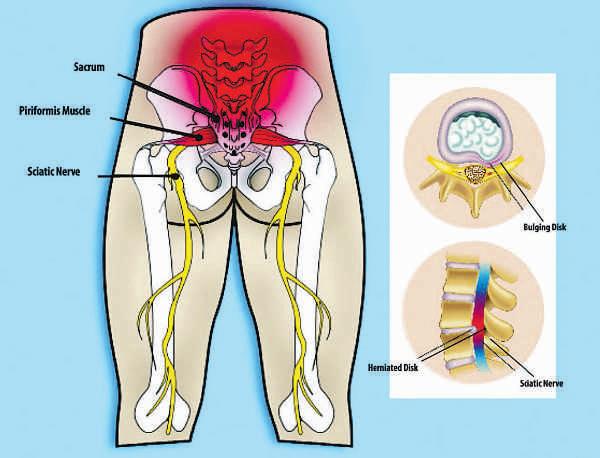
alleviatepain.
It’s importanttonotethatnot everypatient is a candidatefor Spinal Decompression, whichiswhy we prioritize athorough individual assessment for each person whowalks throughour doors. Our high successrateinpainreliefstems from our commitment to only taking on patients whom we confidently believewecan help
Forthe next 7days, we areofferingaspecial “Decompression Evaluation”offer,atnocostto you! What does this offer include? Everything we normally do in ournew patientevaluations:
•Anin-depthconsultationabout your health andwellbeing wherewewilllisten. really listen .tothe detailsofyourcase.
•Acompleteneuromuscular examination
•Afullset of specializedX-rays(if clinically necessary)
•Athorough analysis of your exam andX-ray findings
Youwillsit with thedoctorone on onetogoover your x-rays,and you’ll gettosee everything first hand
At LeBlancSpine Center,weare honestwithour patients andwegivepersonalized attentionand analysis to each case.Wetruly enjoymeeting with patients to answer theirquestions andtohelp find outifSpinalDecompression treatments couldbe theanswertotheir pain
Thereisnochargeatall andyou don’tneedtobuy anything.You have nothing to lose by taking us up on this specialoffer andyou will getanswers to
what is causingyourpain. If youhaveseenour adsinthe past and have thoughtabout calling, don’thesitate. Youdon’t have to go on living in pain,missing outonactivitiesand otherpartoflifethatyou enjoy. Call us today!


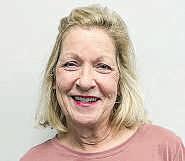
IcametoLeBlancSpine Center because Ihad beensufferingfor about2years with pullinginmy lowerbackdownintomylegs. Ihad triedphysical therapybut wasstill suffering. AfterstartingSpinalDecompression treatments Iamnow 70%improved! Ihavelesspain with walkingand more mobility.I have less pain in the morningwhenwakingup, andIcan nowlift, bend do household chores andother dailyactivitieswith lesspain.I am treatedwonderfully by thestaff and Idorecommend LeBlancSpine Center very often others.The doctorsare honest andsincere
Randi Henriques (SocialWorker) Hometown -New Orleans, LA



IcametoLeBlancSpine Center because Ibeen suffering with lowerbackand hippain, difficulty sitting, andrestrictedmobility.Ihad triedother doctorsinthe past,medication,physicaltherapy andmassage- alltonoavail Ibegan Spinal Decompression treatments andIamnow 90%improved! What Ilikemost aboutmycare at LeBlancSpine Centerismy improvement in pain.I cannow bend andlift withoutpain, andIevenhavefewer headaches. Thestaff is very friendly andcalls everyone by name. Iwould absolutelyrecommend LeBlanc SpineCenter. Thedoctors actually SHOW you what theproblemsare on thex-rays, andthey trackyourprogress. Youwillget resultsbut this is notaquick fix. Youhavetocommittothe time andefforttocometotreatment.Comparedto surgery, this aWIN forthe patient!
Paula Laird (CPA) Hometown -Baton Rouge,LA
Presidentwarns retailer to notup prices because of hislevies
BY JOSH BOAK Associated Press
WASHINGTON— President Donald Trump on Saturday ripped into Walmart, saying on social media that the retail giant should eat the additional costs created byhis tariffs.
As Trump has jacked up import taxes, he has tried to assure askeptical public that foreign producers would pay for those taxes and that retailers and automakers would absorb the additional expenses Most economic analyses are deeply skepticalofthose claims and have warnedthat the trade penalties would worsen inflation. Walmart warned on Thursday that everything from bananas to children’scar seats could increase in price.
Trump, in his Truth Social post, lashed out at theretailer, which employs 1.6 million people in the United States. He said the com-

pany,based in Bentonville, Arkansas, should sacrifice its profits for the sake of his economic agenda that he says will eventually lead to more domestic jobs in manufacturing
“Walmart shouldSTOPtrying to blameTariffs as thereason for raising prices throughout the chain,” Trump posted. “Walmart made BILLIONS OF DOLLARS last year, farmorethanexpected BetweenWalmart and China they should,asissaid,“EATTHE TAR-
IFFS,” and notchargevalued customersANYTHING. I’ll be watching, and so will your customers!!!”
The posting by theRepublican president reflected the increasingly awkward series of choices that manymajor American companies face as aresult of his tariffs,from deterioratingsales to thepossibility of incurring Trump’s wrath. Trump hassimilarly warned domestic automakers to not raise their prices, even though outside analyses sayhis tariffswould raise
production costs.
So far,those tariffs have darkened the mood of an otherwise resilientU.S. economy.The preliminary reading of the University of Michigansurvey of consumer sentiment on Friday slipped to its second lowest measure on record, with roughly75% of respondents “spontaneously” mentioning tariffs as theylargely expected inflation to accelerate.
In April, Walmart CEODoug McMillon was amongthe retail executives who met withTrump at the White House to discuss tariffs. But the Trump administration went forward despite warnings and has attacked othercompaniessuchas Amazon andApple thatare struggling withthe disruptionstotheir supply chains.
Walmart chief financial officer John David Rainey saidhethinks $350 car seats made in China will soon costanadditional$100, a29% price increase.
“We’re wired to keep prices low, but there’salimit to what we can bear,orany retailer for that matter,” he told The Associated Press on Thursday after the company reported strong first-quarter sales.
Theadministrationrecently ratcheted downits 145% tariffs on
China to 30% for a90-day period. Trumphas placed tariffs as high as 25% on Mexico and Canada due to illegal immigrationand drug trafficking, harming the relationship with America’stwo largest trading partners. There is auniversal baseline tariffof10% on mostcountries as Trump promisestoreachtrade deals in the coming weeks after having shocked the financial markets in early April by charging higher import taxes based on trade deficits with other countries. Trumpinsists he intends to preservethe tariffs as arevenue source and that aframework agreement with the UnitedKingdomwould largelykeep the 10% tariffrate in place.
Trumphas alsoplacedimport taxes on autos,steel andaluminum and plans to do so on pharmaceutical drugs, among other products. The tariffs and Trump’sown reversalsonhow much he should charge have generated uncertainty acrossthe U.S.economy,such that Federal Reserve Chair Jerome Powellhas heldthe central bank’s benchmarkrates steadyuntilthere is moreclarity.Powell has warned that tariffs can both hurt growth and raise prices.
BY ALANNA DURKIN RICHER Associated Press
WASHINGTON The Trump administrationwill allow the sale of forced-reset triggers,which make semiautomaticrifles fire more rapidly,with the federal government ending aban as part of asettlement that also requires it to return seized devices.
The agreementannounced Friday by theJustice Department resolvesa series of cases over the aftermarket trigger that the government had previously argued qualify as machine guns under federal law.The settlement is adramatic shift in Second Amendment policy under the Republican administration,whichhas signaled it may undo many
of the regulations that the previous administration of Democratic President Joe Biden had fought to keep in place in an efforttocurb gun violence.
“ThisDepartmentofJustice believes that the2nd Amendmentisnot asecond-class right,”Attorney General Pam Bondi saidin astatement.
BY CLAIRE SAVAGE
The Associated Press
Afederal judge in Texas
struckdown guidancefrom agovernment agency establishing protectionsagainst workplace harassment based on gender identity and sexualorientation.
JudgeMatthew J. Kacsmaryk of the U.S. District Courtfor the Northern District of Texas on Thursday determined that the U.S. Equal Employment Opportunity Commission exceeded its statutory authoritywhenthe agency issued guidance to employers againstdeliberatelyusing thewrong pronouns foran employee, refusing them access to bathrooms correspondingwiththeir gender identity,and barring employees from wearing dress code-compliant clothing according to their gender identity because they may constitute forms of workplaceharassment TitleVII of the1964Civil Rights Act protectsemployees and job applicants from employment discrimination based on race, color,religion, sex and national origin. The EEOC, which enforces workplace anti-discrimination laws,had updated its guidance on workplace harassment in April of last year under President Joe
SUNDAY NEWS SHOWS
ABC’s“ThisWeek”: Sen. Rand Paul, R-Ky.; Rep Ro Khanna, D-Calif.
NBC’s“Meet the Press”: Former Vice President Mike Pence; TreasurySecretary ScottBessent;Sen.Chris Murphy,D-Conn.
CNN’s“State of the Union”: Bessent; Rep. Jim Clyburn, D-S.C.
CBS’“Face the Nation”: Secretary of State Mar-

Guncontrol advocates said thesettlement would worsen gun violence.
Biden forthe first time in 25 years. It followed a2020 Supreme Court ruling that gay,lesbian and transgender peopleare protectedfrom employment discrimination.
Texasand the Heritage Foundation, the conservative think tank behind Project 2025,inAugust challenged theguidance, which theagencysaysservesasa tool for employers to assess compliancewith anti-discrimination laws andisnot legally binding. Kacsmaryk disagreed, writing that the guidance creates “mandatory standards from which legal consequences will necessarily flowifanemployer fails to comply.”
“The Trump administration hasjust effectively legalizedmachine guns Liveswill be lost because of his actions,”said Vanessa Gonzalez, vice president of
government andpolitical affairs at GIFFORDS, agun controlgroup. There had been several legalbattles over forcedreset triggers, which replace the typical trigger on an AR-15-style rifle.The
government foryearshad argued they are essentially illegal machinegun conversiondevices because constant fingerpressure on the triggers will keeparifle firing essentially like an automatic.
co Rubio; Sen. Chris VanHollen, D-Md.; formerDefense Secretary Robert Gates.
“Fox News Sunday”: Sen. TimKaine,D-Va.; House Speaker Mike Johnson, R-Benton; AdamBoehler,U.S. special envoy for hostageresponse.
TheAssociated Press




TheLSU LCMC Health Cancer Center is making progress towardsbecoming thefirst NCI-designated cancer center in Louisianaand on theGulfCoast Thedesignation is part of theNationalCancer InstituteCancerCenters Program, whichwas establishedin1971torecognizeinstitutions that meet rigorous standardsfor state-of-the-art research focusedonthe prevention,diagnosis andtreatment of cancer.There arecurrently 73 NCI-designated centersacrossthe United States Theclosest ones to Louisianaare in Texasand Alabama Having an NCI-designated center in thestate wouldyield numerous benefits forLouisiana residents.Those wouldinclude more accessto clinicaltrials, attracting top-tier medicaltalent to thestate,and LSULCMCHealthCancerCenter receivingsubstantial fundingfor valuable and potentiallylife-saving research that patients anxiouslyawait “NCI designationisthe single most transformative eventthatcould occurinthisstate in improvinghealthcarefor allLouisianianssaid
Dr.Steve Nelson,ChancellorofLSU Health New Orleans. “There is ahaloeffectwhenyou have an NCI-designated center.Not only does cancer care significantly improve, butall medicalservices advancebecause this achievementlifts everyone up.”
Dr.Lucio Miele, Director of theLSU LCMC Health Cancer Center,saidmanyinnovations in cancer treatment have come aboutasthe result of work at NCI-designated centers. Forexample, immunotherapyisnow considered thestandardof care for many typesofcancer, andcameabout as a direct result of NCI-funded research “Immunotherapyhas changedthe prognosis of cancersthatwereonceconsidered incurable, Dr.Miele said.“It hasrevolutionized treatment, anditwould be more available than it already is to patients throughout Louisianaifweweretohave an NCI-designated cancer center in thestate.”
Dr.Nelsonsaidthe economic impact to Louisiana is substantial. Previous studieshaveshown that for everyNCI dollar invested in astate,thatamount is multiplied by three. When acancercenterin Kansas received an NCIdesignation,the region sawaneconomicimpactofmorethan$4billion.In Tampa, theNCI-designatedMoffitt Cancer Center hasresultedina$2billion economic impact per year.Thisisdue to jobs created at NCI-designated centersand thedownstreamspendingthatresults from newjobs, as well as majorinvestments from companiesinindustriessuchasbiotechnology that want to locate closetosuchcenters.A designated cancer center willignitethe nascentbiotech industry andwillbethe centerpieceofmedical innovation in Louisiana.
“MostNCI-designatedcenters areonthe East andWestCoasts. It’s notacoincidence that thoseare also wherethe most successfulbiotech companies are,”saidDr. Miele. “Those companieswantaccess to academic institutions wherediscoveries are
happeningevery day. We believewecan make that happen in Louisiana.”
LSUHealthNew Orleansand LCMC Health have each committed $50million toward theNCI designationgoal. Thus far, that fundinghas allowed theLSU LCMC Health Cancer Center to invest in numerous resources. Thoseinclude hiringmedical investigatorsinpopulationhealth, cancer biology andgenetics, andexperimentalpharmaceuticals “Right now, we have theright number of people,but barely so.Tobetruly competitive, we need to bringinabout twicethe minimum levelofinvestigatorsthatare needed,” Dr.Miele said.“We’vebeenengaged in averyaggressive recruitmenteffortthathas resulted in hiring two basicscientistsand twocliniciansinthe last few months.Weknowweneedtobring highly-respected andhighly-funded research scientiststoLouisiana if we aretomakethishappen”
Dr.Miele said theLSU LCMC Health Cancer Center does have theright facilities in placetovie for theNCI designation, includingappropriate facilities forclinicaltrials, pathology andbiostatistical work,aswellas200,000 square feet of renovated research space. Allinall,adecisiononLSU LCMC Health Cancer Center’s NCIdesignation is aboutfive yearsaway. “Wehaveastrongfoundation, butweneedto grow that foundation.The $100 millionthatwe have invested so farneeds to doubleaswecontinue to buildour staffing andresources,” Dr.Nelson said.“We aregratifiedthatthe supportfor this effortcomes from thehighest levels,including theGovernor, both LouisianaU.S.Senators, our Legislature, as well as many privatecompanies andphilanthropic organizationsincluding theAlCopelandFoundation. Theleadership of LSU, includingPresident Tate andthe Boardof Supervisors, andGregFeirn wholeads LCMC Health,haveembracedthisboldvisionfor Louisiana. Thereisatremendousamountof excitement aboutour efforts to do this.” Dr.Miele said communityengagementisalso a core pieceofthe questfor an NCIdesignation.LSU LCMC Health Cancer Center hascreated an email newsletter to shareregular updates, anda team hasbegun hostingcommunity town hall meetings, screeningeventsfor certaintypes of cancer and directingpeopletothe nearestmedical center to receivecareupondiagnosis “Achieving NCIdesignation isn’tsomething we canaccomplish behind closed doors,”Dr. Miele emphasized.“It demandsthatwestepout,engage directly,and trulylistentothe voices in our communities. Theirconcerns, questions, andlived experiences must shapethe wayforward because withoutthem, this missioncannotsucceed.”
Dr.Nelsonconcluded,“When we aresuccessful allofLouisiana andthe region,north andsouth, east andwest, urbanand rural, will benefit from ourefforts.” Visitwww.lsulcmchealthcancercenter orgtolearn more aboutthe LSULCMCHealth Cancer Center
Woman describes ordeal after going missing in Calif.
BY JAIMIE DING Associated Press
LOS ANGELES
— A 28-year-old woman described Friday how she survived for weeks outdoors in California’s eastern Sierra Nevada by foraging for food and drinking melted snow after a solo camping trip went awry during harsh winter weather
Tiffany Slaton detailed her ordeal during a news conference with the Fresno County Sheriff’s Department two days after she was found in a cabin that the owner had left unlocked in case wayward hikers needed shelter Authorities said she had been there for only eight hours before the cabin’s owner arrived and discovered her Slaton described being caught in an avalanche at one point, causing her to fall and hurt her leg. She didn’t say which day that happened She had a bicycle, a tent, two sleeping bags and food, she said, but she ended up losing all of her equipment, leaving her with only a lighter a knife and some snacks She didn’t describe how she lost her tent or other gear
After she fell, Slaton said she tried calling 911 five times with no success but got a GPS signal on her phone “I ended up on this very

ASSOCIATED PRESS PHOTO
Tiffany Slaton, a hiker found in the High Sierra after going missing for three weeks, speaks during a news conference on Friday in Fresno, Calif.
“I would have never anticipated her in my wildest dreams being able to get back as far as she did,” Sheriff John Zanoni said Slaton had been on an extended biking and backpacking trip that also included time in Oregon, department spokesman Tony Botti said Her journey took her to the Sierras, where she decided to make the trek to the Mono Hot Springs before meeting a friend in mid-April, he said.
She was last seen on April 20 by a security camera near Huntington Lake, an unincorporated mountain community, riding on a bicycle and also sitting on a sidewalk with a backpack.
Slaton’s parents, who live in Georgia, reported her missing on April 29 after they hadn’t heard from her in a week.
Slaton, who was a competitive archer in her home country of Bermuda, said her ath-
leticism and foraging knowledge helped her survive. She had some snacks on her but eventually ran out
The owner of Vermilion Valley Resort, Christopher Gutierrez, said his staff left cabin doors unlocked during the winter in case someone needed shelter during the frequent mountain snowstorms. His backcountry lodge sits in the Sierra Nevada about halfway between Yosemite and Sequoia and Kings Canyon national parks and is a frequent stop for hikers on the John Muir and Pacific Crest trails.
Slaton found safe haven in one of those cabins during an intense snowstorm where all she could see was white, she said. It was just eight hours later that Gutierrez arrived to open the cabin for the season, authorities said.
“If he hadn’t come that day I think they would have found my body there,” Slaton said.
Two days earlier, the Fresno County Sheriff’s office called off a search that had covered more than 600 square miles of the Sierra National Forest, with no luck. Searchers were hampered by heavy snow blocking many roads.
Slaton emerged battered and bruised from the cabin
Wednesday
When she saw Gutierrez, she ran up to him to give him a hug.
“I really do have a new faith in humanity,” Slaton said of surviving her ordeal.
FRIDAY,MAY 23
DILLARD’SMALLOFLOUISIANA


BONUS: Receiveafreecosmetic bagwhen youmakean$80 Natori purchase Whilesupplieslast.


Those illustrateanuncomfortable reality for Louisianans: Ratesare not expected to go back to what they were before the crisis began in 2022, whichTemple acknowledged.
“It’snot going to come down as sharply as it increased,” he said in arecent editorial board meeting with the newspaper.
Signsofprogress?
Regulators believe many insurers in Louisiana were underpricingtheir products before aseries of hurricanes wipedout ahostof companies in 2022 and 2023. And the state is increasingly reliant on the global industry of reinsurance that has seen prices soar every year since 2017, in part because of worsening wildfires,hurricanes and other climate change-related disasters.
Still, Temple said that he sees signsLouisiana’smarket is improving. In town halls, he said he’sstarted hearing recently from more people who have seen their premiums drop. And he noted that he’sapproved 10 additional companies to start writing property insurance here, saying the resulting competition should drive down rates. Customers who get fortified roofs, in particular,have reported significant savings.
But Temple conceded that most Louisianans should not yet expect falling premiums, saying, “I don’tthink we’re there yet.”
Temple also expressed frustration that Landry said last Decemberthat he was unhappy with the pace of progress on property insurance. Some of the legislation meant to bring down rates didn’tgointo effect until January,Temple noted.
Temple toutedthat eight insurers have filed rate decreases, thoughthe Insurance Departmentlater clarified that three companies have filed for decreaseseight times. Still, that outpaces the fivetotal decreases companies asked for in all of 2024. Of the 10 companies that have becomenewly licensed to write homeowners policies, four of them won that approval before the package of laws was signed last year. One of the companies told The TimesPicayune |The Advocate it is not writing homeowner policies. The others didnot return messages for this story
Most of those companies are rated by AM Best, seen in the industry as the gold standard that indicates the companies are financially sound. Butthree are rated by Demotech, arating firm that has drawn scrutiny for rating companies that researchers say are of lower quality.
New market share data shows three of the companies had begun writing policies by the end of 2024: Acceptance Insurance Company,AurosReciprocal Exchange and Lilypad Insurance Company.They
collectivelyhad 0.15% of the market.
BenAlbright, headof the Independent Insurance Agents &Brokers of Louisiana, said he is seeingsome ratedrops incommercial property insurance, which often leads the market.But he’snot yet seeing widespread premiumdrops in home insurance,though people do have more options for insurers now,hesaid.
“I am optimistic that the homeowners market is starting to move in the right direction, but I’m not readytopredict that the average consumer will see a decrease on their renewal,” Albright said.
‘Difficult path’
As lawmakers havecontinuedtoembrace pro-insurance industry bills, it appears unlikely that they will pass abroad tax break for homeowners who are struggling with high premiums.
Landryispushing House Bill 148byRep.Jeff Wiley, R-Maurepas, to give Temple more authoritytoreject rates for being “excessive,” but the bill is unlikely to have any effect in theshort term. Temple hasindicated he wouldnot usethe authority because he already reviews whether rates are backed up by sound math He argued that rejecting rates arbitrarilywouldpush insurersout of the market.
Another bill by Sen. Royce Duplessis, D-NewOrleans, to dole out atax break for low-incomeresidents to offset premium costsis stillalive,recentlywinning narrowapproval from the Senate. Senate Bill 235still must win approval from the House, but it would give low-income homeowners a $2,000 tax credit,capped at $10 million ayear Rep. Brian Glorioso, RSlidell, also sponsored a bill to let homeownersdeducttheir home insurance premium from theirtaxes. Butafter fiscal analysts
estimated it would costthe state nearly $70 million a year,Gloriosoconceded House Bill 236 has little chance. An even more generousbill by Rep. Edmond Jordan,D-Baton Rouge, also has an uphill battle. Glorioso, whosupported Temple’spackageofbills last year,said there’s little the Legislature can do to bring costs down immediately,absent atax break.
“I never tellanyone your rates are going to go down,” he said. “I hope theywill. Realistically,what we’re hoping for is to slow the growth rate. It’sgoing to be adifficult pathabsent some coordination with other states on areinsurance plan or afederal reinsurance plan.”
Watching reinsurance
Insurance companies buy reinsurancetoprotect their balance sheet much in the same way homeowners buy insurancetoprotect their house against ahurricane. In effect,theyare sending some of the premium dollars they collecttoother insurers.
Starting in 2017, when wildfires rocked California, costs forreinsurancerose every year through 2024, according to an index published by thetrade publicationArtemis. That included anearly 30% jumpin2023. And those costs get passed down to homeowners, who seehigher property insurance bills as aresult.
Theindexforecasts a slight dip in costs this year, in partbecause aflood of investor capitallookingto cash in on the highprices is pushing costs down.
Still, amovementisafoot to setupa federalreinsurance backstop to help lower costs forhomeowners amid worsening naturaldisasters. Greater New Orleans Inc., the region’seconomic development arm, is lobbyingfor such achange.They similarly pushedfor aflood
insurance solution amid problems with the National Flood InsuranceProgram. Landryhas also raised thepossibilitythatLouisiana may need federal help. Democrats in Congress have introduced legislation to set up areinsurance backstop, but the idea has not gained traction “It’snot sustainablegiven where the reinsurance market is andthe larger numberofnatural disasters we’re seeing,” Glorioso said. “The only way it’ssustainable, to me, is to expand the national flood program
andinclude allnaturaldisasters in it.” Temple’soffice quietly completed areport in March that looked at the possibility of amultistate reinsurance pool or acatastrophe fund like Florida, whichestablisheda multibillion-dollar fund to reimburse insurers for part of their hurricane losses. But the report largely panned the idea, echoing concerns from the reinsurance industry that such amove would concentrate risk in hurricane-prone areas Temple has opposed the
idea of afederal intervention, saying theprivate marketiscapable of delivering affordable home insurance. Anotherchallenge is the setup of insurance being handled by state regulators. Giving thefederal government the ability to step into that role seems politically unlikely right now,said Carolyn Kousky,head of thenonprofit Insurancefor Good. “Not only is there no political support, but much of the capable federal workforcehas been eliminated,” she said.

By Amanda McElfresh | amcelfresh@theadvocate.com
AcademyinBaton Rougeisredefining
fitness andsportsdevelopment in theregion by
an unmatchedcombination of
andoutdoor facilities,including a3,000 square foot weight room,aswellasa60-yard indoor field and twofull-sizedoutdoor turf sportsfields that canbe used forsoccer, football andlacrossetraining and games. Elitealsooffersrecovery services such as hot andcoldplungetubs, infrared saunaand cryogenics Designedtoserve athletes of allagesand skilllevels, EliteTrainingAcademy provides aspace that rivals collegeand professional facilities in size,capability andexpertise.Fromyouth sports to adultrecreational leagues, Elitehas quicklybecomea hubfor people whoare seriousabout theirathleticdevelopment andoverall wellness.





“Our approach is really abouthelping people traintheir bodies to reachoptimal health,prevent injuriesandincreasesportspecificskilldevelopment,” said Greg Stringfellow,president of EliteTraining Academy. “Withour partnerOchsner Health-Baton Rouge, we’reabletohaveon-site physicians and physical therapists whoworkwithpeopletodesign workouts tailored to them andfocus on howtheir bodies should perform. That partnershipallows us to preventinjuriesand builda holistic training programfor each person.”
EliteTrainingAcademy,alongside Ochsner Orthopedicsand Sports Medicine InstituteatElite TrainingComplex –Burbank,willoffer variousfitness classesfor youthand adults that combinetraining in speed,agility,strengthdevelopment andoverall conditioning. Classescan be takenasagroup,or one-on-one sessions canbescheduled
“One of thethingswe’ve been focusing on is helpingmiddleschoolstudentswiththeir speed, agility, strength andskill developmentastheyget readyfor whatever sports they want to play in high school,” Stringfellow said.“Therereallyaren’tany middle school weight roomsand facilities in this area that canoffer what we do,along with theguidance on trainingthe rightway.”

Inclusivityand versatilityare at thecoreof EliteTrainingAcademy’s mission. Thefacilityhas developedleagues forflag football,soccerand lacrosse that areopentomen andwomen of allages, as well as area youth. Theseleagues offer people thechance to play asport that they enjoywhile stayingfitand forming newfriendships with others whoshare their same interests.
“I thinkwhatsetsour leaguesapart is that the playerslearnongoingskilldevelopmentfromcoaches,” Stringfellowsaid.“OurOchsnerPerformanceTraining team hasbuilt classesfor allsportsand agegroupsto coverthe entire spectrum of performancetraining. Thefacilitieswehaveallow them to do allthatwork on-site.
In addition to therapyand training,Ochsner Health-Baton Rougeoperatesthe only orthopedic walk in clinicinthe region outofthe Elitefacility. EliteTrainingAcademyalsohosts avariety of summer campsfor kids to stay active whileout of school.Thisyear, theRoadTrippin’atElite camp forchildrenages5to8willhave sessions filledwith sports,structuredgames,educational activities and more.The EliteJungleCamps arefor kids aged 8and 14 andwillfeature competitivesportschallenges, obstacle courses, adventuredrillsand teamwork development.
Visitwww.elitetrainingacademybr.comto learnmoreabout classes, campsand leaguesatElite TrainingAcademy

of the Benoit family
The lack of bloodconnection does not diminishthe bond the two share.
On Wednesday night, when Foster was back home to play his “American Idol” hometownheroconcert, Martin wasrightthere by his side, on the stage playing guitar as his nephew sangto thousands.
“That’sthe biggest crowd I’ve ever playedfor,” Martin said. When many people of the tight-knit communities on the west bank of the MississippiRiver,just across from Baton Rouge, recognized Martin on stage, they were cheering him on too.
Aimee Rabalais, secretary at Brusly High, was among those who took special joy in seeing Martin in the spotlight.
“I was so happy Gaylen got to play with John Foster on stage Wednesday night,” Rabalais said. “I said, ‘Oh, I know his heart must be just swollen.’”
It’sashared performance thatmightnot have happened.
Though Martin has performed throughout the region for more than 35 years, he took abreak from music three years ago after his brother and musical partner died of aheart attack.
“I gotawayfrom music for awhile, and John Foster brought me back,” Martin said. “So, I’m very grateful.”
Avoice forthemall
That theme of going from sorrow to gratitude runs true on many levels forFoster— andthe Addis/Brusly community at large.
The school has experienced more than its share of tragedy going back to the 2011 murder of Sylviane Finck Lozada,who taught at Brusly High In less than anine-month span, three high school students died. On Sept. 1, 2023, 15-year-old Ja’Kobe Queen was shot and killed at the firstfootball game of the season at Port Allen High. On Dec.31, 2022, friends and cheerleaders Maggie Dunnand Caroline Gill were killed when an Addis police officer rana red light and crashed into their vehicle.
“Over the last several years, the scale of emotion leaned heavy toward sorrow and tragedy,and then, alongcomes John Foster, said Walt Lemoine, the much-loved and longtime principal at Brusly High.
Foster wrote the song “Tell That Angel ILove Her,” which he performed earlier this season on “American Idol,” about his friend Maggie
Thetwo were close and even wenttothe homecoming dance together.Foster spoke of her in his valedictorian speech, which his mom posted on social media and rackedupmore than 400,000 views —before he became “American Idol” famous.
Lemoineremembers the speech well.
“If Ilet you read it on paper,you’d think itwas justlike most anyother valedictorianspeech, but theway he delivered it— man, that little sucker won every speech competition he was ever in,” Lemoine said of Foster.“Thatguy just has it.”
Arising star
On Saturday morning, Lemoine, likemuch of the rest of theAddis/Brusly community,was loading up hiscar to head to Sulphur, where theBrusly High baseballteam was playing the third in aseries of games for thestate championship.
Lemoine described this last week as “a carousel, amerry-go-round, aroller coaster” all in one.
The track team won state week before last.The softballteam went to the state finals last weekend. On Sunday and Monday nights they are allgluedto“American Idol.” OnWednesday, they hosted the John Foster “American Idol”pep rally, parade and concert.
Thursday was graduation.
On Saturday afternoon, Lemoine was in Sulphur, with therest of the Brusly faithful, cheeringonthe baseballteam.At4 p.m., in thebottom of the fifth, Brusly wasdownbyfour runs.North DeSotowas up 7-3.
Butinthe stands and back home, the Brusly fans were keeping hope alive.
“It’salmost been like adream,” Lemoine said.
“Our valedictorian Thursdaynight,our first valedictorian since John Foster,she just nailed it.The word she used was ‘chaos.’
Through the chaos comes the victory and learning how to weather the storm.”
Ultimately,the No. 1-ranked BruslyHigh baseball team lost to North DeSoto, 7-3— apainful loss inaweek of so much triumph.
Butthe team andthe community have been down before. They know a lot about bouncing back— and lifting one another up.
For Addis, for Brusly,for the whole west side,Foster isn’tjust singing on anational stage or forthe title “American Idol”— he’s carrying their story with him, note by note.
If you holdyour ear in the right directioncome Sunday night, chancesare you’ll hear themsinging rightalong withhim —no matter which side of the MississippiRiveryou’re standing on.
Sunday watchparties
Theshowairs from 7p.m. to 10 p.m. Sunday night on ABC. These local spots are hosting watch parties: n Side Porch Daiquiri, 6641 La. 1, Addis n Morley’sMarina, 7675 Choctaw Road, Brusly n Walk Ons, 437 Oak Plaza Blvd., Brusly n RioCantina, 400 W. St Francis St., Brusly
Email Jan Risher atjan. risher@theadvocate.com

By The Associated Press
SAOPAULO Mexico, Chileand Uruguay have halted poultry imports from Brazil after the country confirmed its first bird flu outbreak on acommercial farm, authorities saidSaturday
On Friday,Brazil’sAgricultureand Livestock ministry said China and the European Union had halted poultry imports from Brazil.
Mexico’sNational Servicefor Agro-Alimentary Health,Safety andQuality said in astatementSaturdaythatitsuspended temporarily the import of chicken meat,fertile eggs, live birds andother poultry products from Brazil as aprecautionary measure.
Chile and Uruguay have also halted poultry imports, LuisRua,secretaryofinternational trade at Brazil’sMinistry of Agriculture,told local news service Broadcast Agro.

Brazil is one of theworld’s leading producers andexporters of poultry,accounting for 14% of global chicken meat production, according to theU.S.Department of Agriculture.
An egg shortage in the United States following abird flu outbreak there boosted Brazilian eggexports to the U.S.,rising by more than 1,000%between Januaryand April 2025 compared to the same period theprevious year,according to tradedata from the Brazilian government.
Brazilian authorities said Friday thevirus was found at afacility in thesouthern
state of Rio Grande do Sul, adding thatacontingency planhas been implemented “not only to eliminate the diseasebut also to maintain the sector’sproductive capacity,ensuring supply and, consequently,food security forthe population.”
Theagriculture ministryalso said it notifiedthe World Organization for Animal Health, the Ministries of Health andthe Environment and Brazil’strade partners.
Restriction on poultry exports follows rules agreed on with each importing country, basedoninternational health certificate
requirements, theAgriculture and Livestock ministry added. Depending on the type of disease, some deals apply to thewhole country while others involve limits on where products can come from —for example, aspecific state, city or just theareaofthe outbreak Brazilianchickenexports have previously faced resistance over sanitary concerns.In2018, theEuropean Union temporarily bannedimports of chicken from 20 Brazilian plants due to concerns aboutsalmonella. Brazil brought the casetothe World TradeOrganization.














Continued from page 1A
Few see or understand the world that exists along the river But Broussard, from the tiny town of Coteau Holmes near the Atchafalaya Basin, knows its high-stakes implications. He also senses the ultimate futility of the work he has spent his life performing.
“The river’s constantly trying to change itself. We’re trying to control it,” he said. “One day, Mother Nature’s going to prevail. She’s going to have the final say-so no matter what we do.”
‘The river is different
The Mississippi River built south Louisiana with its sediment. It is the reason New Orleans was founded. It supplies the region with drinking water provides jobs for its people and serves as one of the world’s most important shipping lanes. But it has always made for an uneasy bargain.
Louisiana’s reliance on the Mississippi means the mighty river can take away as much as it gives — and both the state and the nation are reaching a moment of reckoning.
Decades of human interference with the river’s course fusing with the power of its natural fluctuations have left south Louisiana vulnerable in myriad ways. Drinking water and infrastructure are increasingly threatened, the rapid disappearance of the land near its mouth poses risks to communities and shipping, and the battle to keep the river from shifting course is an ever-present challenge.
These are not far-off, theoretical problems. But public awareness of their serious, urgent challenges is scant.
New Orleans and its suburbs have already had to scramble to find ways to deal with the threat of salt water moving up the river and corroding drinking water systems.
Sea level rise, combined with the dredging of the river for shipping and breaks in its lower banks, is worsening the problem to the point that hundreds of millions of dollars may have to be spent to deal with it.
The Bird Foot Delta, the gangly splotches of land at the river’s mouth resembling its name, providing protection for shipping routes and communities farther inland, is sinking at an astonishing rate of about a half-foot per decade, and projected sea level rise will worsen it.
The delta has already lost more than half of its wetlands over the last century As it gradually withers in the decades ahead, the nation may have to decide how to maintain a reliable shipping route to enter and leave the Mississippi — at a potentially high cost and with significant implications for global commerce.
Louisiana’s shipping interests are also fighting to adapt in other ways. Growth in vessel size has led to the deepening of the river channel, and the Port of New Orleans is warning that it must build a new, expansive terminal and related infrastructure farther downriver in St. Bernard Parish in the face of opposition from residents.
The principal reason: Ships have become so large, with containers stacked so high, they cannot fit under the 165-foot-high Crescent City Connection bridge crossing the river in New Orleans.
Underlying it all is the river’s course itself. It is constantly seeking to break through in its search for the fastest way to the Gulf, necessitating the elaborate Old River Control Structure north of Angola, keeping it from jumping course to the Atchafalaya River Its operations are currently being reassessed.


Below New Orleans, after the levees end, the river has broken through in spots more recently. There are benefits to this in terms of land building in a state fast losing its coast, but shipping interests are worried and scientific modeling indicates it is worsening saltwater intrusion.
All of these issues are quietly intensifying in the background of south Louisiana’s daily existence, adding to the question facing coastal communities additionally threatened by land loss, storms and skyrocketing insurance rates: How long into the future can they remain viably livable, and at what cost?
It’s already preoccupying scientists, shipping leaders and the Corps of Engineers Two far-reaching studies are underway, and the results may serve as a test of whether the nation is prepared to address the concerns they identify
The two studies, both lasting five years and designed to complement each other, are delving into a wide spectrum of concerns along the lower Mississippi basin across parts of seven states.
In Louisiana, that means everything from the Old River complex to saltwater intrusion and underwater mudslides that endanger oil and gas infrastructure. Incorporated into them will be the changing river’s effects on the communities that rely upon it.
The Trump administration’s costcutting and rejection of the science surrounding climate change, meanwhile, may further complicate the challenge. One example on the horizon: The Corps’ study is not yet fully funded, not to mention solutions to the problems it identifies.
It has been nearly a century since the lower river’s modern shape took form with the construction of the vast levee system and control structures that hold it in place — paradoxically protecting Louisiana from flooding while setting its land loss crisis in motion Decisions taken in the near future in response to a new set of challenges will determine the river’s next era.
“Thomas Jefferson thought this was the most important place in North America,” said Donald Boesch, a respected coastal scien-
tist and New Orleans native who was instrumental in securing $22 million from the National Academies of Sciences, Engineering and Medicine for one of those sweeping studies, focusing particularly on the delta.
“That’s not changed. It’s really very important in terms of the national commerce in and out of the river to the world. That makes it strategically important for the nation. And then, with that, of course, is that the decisions we make also affect where and how long you can live.”
Sam Bentley, an LSU geologist co-leading the National Academysponsored study, said “none of these things are unconnected” while seeking to convey the importance of the moment. He noted that a century has passed since the last sweeping plan to manage the river
“The river is different. The Gulf of Mexico is different,” said Bentley, whose research on underwater mudslides around the Bird Foot has shed new light on the problem.
“And so we need to have a new set of tools to manage it.”
‘A generational impact’
The giant blue cranes tower above the New Orleans riverbank, hovering next to a container ship stretching nearly three football fields long. Blue, red and yellow metal boxes rise atop its deck, stacked like mismatched Legos. Before arriving here, at the terminal at the end of Napoleon Avenue, the MSC Agrigento had been to ports in Mexico and Houston. It would later cross the Atlantic and make its way into the Mediterranean, with stops in Spain and Italy Ronald Wendel Jr stands nearby, aboard a Port of New Orleans fire boat bobbing on the river currents talking about the past, present and future of the shipping industry in the city where he grew up.
“New Orleans was founded to have a port at the bottom of the Mississippi River,” said Wendel, the port’s acting CEO at the time, who recently left for the private sector “So everything about New Orleans started by being a port.” At its heart, New Orleans has always been a port city, the main reason such a motley collection of cultures collided here, from the haunting history of enslaved African Americans to the arrival of Europeans with varying motivations.
The first steamboat to work the river, beginning in 1811, was called the “New Orleans,” and at one point in the 19th century the city was considered the world’s fourthlargest port, Tulane geographer Richard Campanella noted But it has never been steady sailing, with fortunes fluctuating like the river stages themselves.
The modern river took shape after the great flood of 1927, whose biblical proportions left a permanent mark on Louisiana. Business interests played a major role in decision-making then, advocating for the river levee to be blown up south of New Orleans to protect the city eventually carried out, inundating St. Bernard and Plaquemines parishes. It was later determined that the dynamiting essentially had no effect on New Orleans’ fortunes, as author John Barry explains in his monumental book “Rising Tide.” In the flood’s aftermath, the nation embarked upon a project so



It has beena century since the modern lower Mississippi Rivertook shape.A convergence of issuesare requiring anew set of strategies central to Louisiana’sfate.
OLD RIVER CONTROL STRUCTURE: Controls the flow between the Mississippi and Atchafala ri entingthe



PORT OF NEW ORLEANS:The city haslong






















Staffgra
Sources: CH2M Hi

splotche land at the end of the river are fast disappearing. Subsidence, erosionand sea levelrise are posing serious concerns for residents and shipping interests.
*Accordingtothe most severe scenario modeledbythe state


large and consequential that it changed Americanhistory.The MississippiRiver and Tributaries Projectbuiltthe levee system as it is known today,keeping the communities nexttoitsafefrom flooding while providing areliable shipping lane.
Since that time, shipping along the river itself from Minneapolis on down has exploded fromaround 19 million tons in 1934 to 480 million in 2022 —anincrease of nearly 2,500%.Four Louisiana portsbetween Baton Rouge and the Gulf, including the Port of New Orleans, have regularly ranked among the top 15 in the nation.
Morethanhalfofthe nation’s grain exports pass through the Port of South Louisiana, situated betweenNew Orleans and Baton Rouge. But keeping up with the changing industry has alwaysbeen a challenge. Alitany of strategies have been contemplated over the years, including grand plansabandoned to history
They included “Centroport, USA,” an ambitious idea to relocate Port of New Orleans facilities to the Mississippi River Gulf Outlet andAlmonasterarea, with alock built in St. Bernard Parish. It was canceled in the 1980s, and the lock, opposed by St. Bernard, was never built. The MRGO, responsible for widespread wetlands destruction and blamed for funneling storm surge into the city during Hurricane Katrina, is now shut off with adam. Amovementalsotook shape, spurred in part by planning forthe

Ronald Wendel Jr., once the Port of NewOrleans’ acting CEOwho recently leftfor the private sector,said,‘NewOrleans was founded to have aportatthe bottom of the Mississippi River.Soeverything about NewOrleans started by beinga port.’
1984 World’sFair,toredevelop New Orleans’ riverfront fortourism, conventions and otherpublic uses insteadofthe wharves for shipped goods. That movement eventually won out, helping lay the groundwork forprojects like theErnest N. MorialConventionCenter andthe Warehouse District, definitively setting New Orleans on atourismdependentcourse. Port business was also well on its way to being transformed through the growing use ofcontainer shipping. Anotherturning pointhas arrived. ThePortofNew Orleans
is banking on growthincontainer shipping forits business model, but the expanding size of vessels and what theycarry posesa dilemma. Ports like Mobile, Alabama, and Houstonthreaten to stealaway more of New Orleans’ business if thelargerships cannot pass beneaththe Crescent City Connection to the Napoleon Avenue terminal throughout theyear,they say Shipping interests have sought two waysofdealing with growing vessel sizes. One is aplan to build a new terminal downriver in St.Bernard andassociated roads andinfrastructure, eliminating the need
for the larger ships to navigate the bridge.
Those plans are moving forward, though St. Bernard officials, again seeingthemselves as being bullied by NewOrleans,are firmly opposed, and Plaquemines Parish is proposing an alternative. It is unclear whetherSt. Bernard can derail the project.
Hundreds of millions in federal and state money have already been committed to it.One Port of New Orleans official said recently the port would be reduced to a“niche” role in theindustry withoutthe project, expected to cost at least $1.8 billion, though opponents contend it will be far higher Wendelsaidthe port hasspent many hours listening to St. Bernard residentsand making changes to bring themonboard.
“I’m anative New Orleanian. This is important to me. This is generational impact,” he said as the boat meanderedupriver from theCrescentCityConnectionand the cityskyline. “I reallywant my grandchildren to be telling their grandchildren one day that ‘oh, my grandfather wasa big part in helping keep the port growing.’”
‘Tofeedthe world’
The other strategy is not as immediatelynoticeable to residents, but so far has been more impactful, both because of shipping and its unintended effects. That has been to deepen the river itself
Thebiggerships have deeper drafts,causing largervessels to lighten their loads during certain times of theyear to travel upriver,
adding costs to thejourney —another threat to port business. Congress responded in the 1980s by providing theCorps withthe authority to deepen the lower river channel from 40 feet to 55 feet. The Corps proceeded in stages, first going to 45, thento50, now completedtoDonaldsonville. Digging down to 55 feet is notonthe books.
But there wasacatch. Saltwater intrusionupthe Mississippi had occasionally been aproblem during low-water periods, even as far back as the1930s,but theCorps acknowledged the deepening project would worsen it.
It is not aminor issue. More than amillionpeople in southLouisiana depend on the river fordrinking water. High salt content can pose risks for people with kidney diseaseorhighblood pressure, as well as infants and pregnant women.But that is only part of the concern. The region’swater infrastructure includes an unknown though certainly large—number of lead pipes threaded throughout their systems that salt water dangerously corrodes.
In New Orleans alone, the numberhas been estimated at over 50,000 —though 100,000 service lineshavebeen classifiedasunknown. One estimate shows Louisiana with nearly 267,000 service lines containing lead.
“Itwill increase the corrosion of thepipe,and that will also cause chemicals like lead from thepipe

Continued from page 11A
material to leach into our drinking water,” said Tiong Gim Aw, an expert in environmental health sciences at Tulane University.
Because of that, the Corps spelled out a plan to “mitigate” the effects — not solve it completely, but reduce it to the level it was before the deepening of the river
The plan included building an underwater barrier, or sill, in the Mississippi when necessary to block the salt water’s advance, though it would be constructed above lower Plaquemines Parish, leaving those coastal communities to cope with the problem in other ways.
But evidence is emerging that the saltwater problem is worsening more severely than envisioned because of the river deepening combined with other factors, particularly breaks in the lower Mississippi’s banks bleeding out water
flow. The barrier, or sill, has now had to be built three years in a row after having previously been necessary about once a decade.
The sill was also shown to be insufficient in 2023. With river levels especially low, the sill slowed the salt water’s advance, but it was eventually overtopped, requiring the Corps to heighten it.
A notch was left in the middle of the sill to allow enough space for ships to pass, limiting traffic to one way in that location. The disruption to shipping was minimal, said Sean Duffy executive director of the Big River Coalition, which advocates for commercial navigation interests.
It also set off panic in the New Orleans region, leaving officials to figure out how the metro area would be supplied with drinking water should the salt water reach treatment plants, as was being predicted. The White House declared a federal emergency
For a solution for that year alone, New Orleans planned to build a temporary pipeline stretching farther upriver, at a cost of up to a quarter of a billion dollars. It turned out not to be necessary, but it is widely acknowledged now that sea level rise may help worsen the problem as it gains pace.
Permanently upgrading treatment plants to deal with salt water would be an extreme cost. Replacing lead pipes also comes with a hefty price tag.
New Orleans would have to spend $1 billion to replace all of the city’s lead service lines by 2037, a deadline that had been set under the Biden administration, the Sewerage and Water Board estimates.
The Environmental Protection Agency says no level of lead should be considered safe in drinking water ‘Threat to health of populations’
There are other related problems. In lower Plaquemines, unprotected by the sill, the high salt content appears to have reacted with disinfectants normally used for drinking water That seems to have produced an unusually high

Sulphur water system’s high salt content appears to have reacted with disinfectants normally used for drinking water An unusually high level of byproducts were detected that can be harmful to health in cases of long-term exposure.
level of disinfectant byproducts — collectively known as DBPs that can be harmful to health in cases of long-term exposure.
The parish’s Port Sulphur water system was hit with a violation by state authorities in part because of that. It was graded an “F” by the state Department of Health in 2023, also partly for that reason.
Aw, the environmental health expert, said high levels of DBPs in drinking water over many years can cause problems with the liver, kidneys or central nervous system. There may be an increased cancer risk, but there is no conclusive evidence, he said.
Plaquemines was better prepared in 2024, installing advanced filtration machines using reverse osmosis technology at three plants in the lower parish But it is a costly, temporary solution, running an estimated $1 million per month to rent the machinery last year Purchasing them and ensuring upkeep would be far more.
On the front lines of the problem, Plaquemines is instead planning other solutions, mainly expanding the capacity of its infrastructure to be able to pump more water from farther upriver But if those upriver plants were also affected, the parish would be back to relying on water brought in on barges and the filtration machines, parish officials say In Orleans and Jefferson parishes the filtration machines are inadequate to deal with the far larger
amounts of water consumed there.
A report compiled by the Federal Emergency Management Agency following the 2023 saltwater intrusion, obtained by The Times-Picayune | The Advocate, warns of the need to prepare for future occurrences and dire consequences.
“It was clear that a saltwater intrusion could precipitate a significant if not severe threat to the health of populations involved and to the immediate- and long-term viability of the infrastructure and water systems themselves,” it said.
Modeling by both the Corps and academics has been delving into the challenge, including how best to build or position a sill to deal with it. Ehab Meselhe, a Tulane professor who has conducted a range of modeling independently and for the state, said the threat may become more severe if seas rise as predicted toward the end of the century
Some modeling, while rudimentary, has shown that around 5 inches of sea level rise could move the saltwater wedge a couple miles farther upriver, Meselhe said, though there’s also lots of uncertainty related to breaks in the lower Mississippi’s banks.
Projections for sea level rise along Louisiana’s coast by 2100 range far higher — from around 3.5 feet to roughly 9 feet above 2000 levels.
Analysis by the Corps of Engineers, also approximate, shows

that around 3 feet of sea rise would see the wedge move 4 miles to 8 miles farther upriver reaching a given location three to six days sooner than it does today
Meselhe and his colleagues also ran modeling comparing 2023 conditions to 1994 data. The rudimentary results found that if no sill would have been built, the saltwater wedge would have advanced about 20 miles farther upriver in 2023.
Asked about the problem while out on the river, Wendel asserted that the port would always take the community’s interests in mind, but that saltwater intrusion has long been an issue, even before the recent deepening. As for the models showing it worsening he said experts at the Corps would have to answer those questions.
“We need this to feed the world,” he said of shipping along the river, specifically naming grain exports from the Midwest. “The whole Mississippi River is not just the Port of New Orleans. There are ports all up and down this river bringing in deep-draft vessels all the way to Baton Rouge.”
Dangerous stretches
Indeed, new modeling is showing that three key factors are worsening saltwater intrusion when the river is low They include the deepening of the river for shipping, but also sea level rise and breaks in the lower river bank, weakening the Mississippi’s flow
The biggest factor in the most recent academic modeling has been the breaks in the river bank far down in Plaquemines Parish, commonly referred to as crevasses, Meselhe said. One in particular, called Neptune Pass, has been taking as much as 16% of the river’s flow since it drastically widened when the Mississippi was exceptionally high and powerful in 2019, notes coastal scientist Alex Kolker, who has closely studied the channel. In total, only 20% of the river’s water at New Orleans was making its way down through the three main channels in the Bird Foot to the Gulf, one study analyzing 2022 data determined.
Corps modeling so far also suggests the crevasses may be the most significant factor in the recent worsening.
The crevasses’ effects on saltwater intrusion involve how they slow the river The weakened currents make it more difficult for the river to push back the salt water moving up from the Gulf in the shape of a wedge along the bottom when the Mississippi is low A crevasse as large as Neptune Pass can also be a problem for navigation. The slower currents allow sediment to drop out and build up along the bottom, creating a hazard for vessels, leading the Corps to dredge in areas it hasn’t had to before. Its strong pull also produces a countercurrent posing dangers for ships.
Finally, Corps modeling illustrates how sea level rise combined with the crevasses and land subsidence could be problematic, effectively deepening the breaks in the river and potentially creating new ones.
The good news concerning the crevasses is that partial solutions may exist. The Corps is planning to construct a sill to reduce the flow of Neptune Pass while still allowing it to build land with sediment flowing through it. That plan has come as somewhat of a relief to coastal advocates who do not want it shut off completely For them, the crevasses are acting as natural river diversions, building land the way the Mississippi did before the levees were built. But that does not address sea level rise or the other existing and future crevasses. Reducing emissions and heading off the worst effects of climate change may be the only true solution when it comes to limiting rising seas.
The issue is in such flux and poses so many risks that the Corps is planning to build a physical model on a section of the river to study saltwater intrusion and sill dynamics.
Mead Allison, a Tulane University geologist co-leading the National Academies study on the lower river, points out the range of emerging challenges, but said he nonetheless sees hope. He notes the gargantuan task of creating New Orleans in the first place in what was essentially a swamp whose land was “jello.”
“And we managed a way to create a navigation channel through one of the most dangerous stretches for shipping in the world, through
the mouths of the Mississippi River, and New Orleans would have not flourished,” he said over lunch on Tulane’s campus recently, not far from where the Mississippi begins its half-circle cradling the Crescent City
“There are a whole series of those kinds of emergencies that you would have said threaten the future of New Orleans And I have to feel like we’re going to come up with a solution to this one, right? There is a solution to this, and there are a lot of smart people working on it, and so we’re going to get there.”
‘We’re still people’
Justine DeMolle, wearing a blue fishing shirt with her name embroidered above the pocket, hustles between her kitchen and the dining room at her restaurant, perched near the spot where Louisiana reaches its end.
She is not the type to make excuses or dwell on challenges, instead leaving her fate in God’s hands. Family pictures adorn the dining room along with a painting of the Last Supper and a cross with the words “Amazing Grace.”
The restaurant in Venice, almost as far south as you can go in Plaquemines Parish, is called Changes, and painted on the peachcolored outside wall is the motto: “One season at a time.”
But it hasn’t been easy for the 63-year-old since she bought the restaurant over six years ago. Business has fluctuated. Fishing lodges nearby now provide their own food for guests, she said The oil companies that use the area for a base often do the same, and few residents from farther up the parish make the drive down to dine. The saltwater intrusion that hit lower Plaquemines hard for a couple years in a row certainly didn’t help, though DeMolle is hesitant to make too much of it. She had to get rid of her fountain drink machine and sell bottles, and she could no longer serve tap water to customers, causing an increase in prices. She stopped selling her homemade sweet tea, and “that was a real big thing,” she said. Later, she said the water had a chemical-like taste. But she has not yet had to replace any corroding equipment, unlike others in the parish who have spent huge amounts of money doing so She understands Venice is particularly vulnerable and mentions she does not want to sound “selfish” — but wishes those in charge of dealing with the problem would explain “why you can’t protect me like you’re doing up the road.”
“I know it has a lot to do with New Orleans and all of those places, but we’re still people. We’re people and we live here,” said DeMolle, a mother of three who grew up in Buras about 20 minutes upriver. “I feel like, if you’re going to do it, just do it. Take care of where you have your people.”
Others have seen far more damage. That includes Dylan Butler, whose family owns the popular Venice Marina a short drive away, where a sign reading “Fishing Capital of the World” may not be much of an exaggeration. It serves as an ideal launching point for both inland and offshore fishing, from freshwater species like largemouth bass to the red snapper that weave their way through the legs of Gulf oil platforms.
Butler, a 32-year-old former University of Louisiana at Lafayette baseball player said he could not venture to guess how much it all cost his family’s business and the wider fishing industry in lower Plaquemines, but that it was likely in the hundreds of thousands, if not millions. Commercial docks had to replace expensive ice machines Water pumps corroded. Supplying water to the restaurant, bar, rental camps and houseboat slips owned by his family’s marina was endlessly complicated.
“It takes over every aspect of what you have going business-wise and life-wise,” he said. “What you drink from how you get up to brush your teeth in the morning, to the water that is sent to your refrigerator.” Residents dealt with similar issues.
Relaxing on his porch in Venice with his wife and great-grandson, his shrimp boat on a trailer out front, Johnny Bourgeois said he had to replace two hot water heaters in 2023, spending about $1,200. They corroded and busted due to the salt water He spent months that year picking up bottled water from the nearby fire station provided by the parish. He was grateful for it and said it was sufficient, but getting through the day without a reliable drinking water supply was complicated.



It was better in 2024, but there were still periods when the water seemed to taste salty or like chemicals, he and other residents said.
“That’s the first couple years that I’ve seen it that bad,” said the 68-year-old retired shrimper and lifelong resident of the area, referring to 2022 and 2023. “Plenty people had to change their hot water heater their washer and dryer.”
‘Is this for society?’
Not far from Changes, the marina and Bourgeois’ house, the river reaches its end — and the root of many of Louisiana’s problems related to the mythic waterway reveals itself.
It is here, at what is known as the Bird Foot Delta, that the Mississippi completes its 2,350-mile journey and tumbles into the Gulf, the work of draining more than 40% of the contiguous United States complete.
What remains of its muddy flow splinters off into three principal directions, the wisps of land encasing it simultaneously sinking and being washed away
It can feel like the end of the world past these withering wetlands, once so labyrinth that European explorers had trouble finding the river’s mouth. Beyond them, the turbid, green waters of the Gulf are wide open, oil and gas structures like space stations in the distance.
Signs of the sinking and disappearing land are everywhere. The rusty Pass a Loutre lighthouse, moved here in 1855, stands on a narrow shifting sandbar Its door has sunken beneath the sands, the flight of steps inside of it drowning in the Gulf’s waters
Farther inland, along South Pass, where James Eads’ construction of jetties transformed river shipping in the late 19th century, there is more of the same.
The steps leading down from the door of South Pass Light at Port Eads plunge into the water, illustrating how far the rusted, white landmark has sunk into the subsiding ground.
Later, by around 1910, shipping companies had already needed a deeper channel and concentrated on the adjacent Southwest Pass, which now ushers towering tankers and container ships from across the globe into the river and back out again.
The Corps’ dredging budget for the Mississippi from Baton Rouge
to the Gulf for the 2024 fiscal year was $228 million by far the largest dredging program in the country, including Red Eye Crossing, where Mayo Broussard helped stand watch.
It removes roughly 46 million cubic yards a year of sediment from that stretch, enough to fill 10 Superdomes. Nearly half of it comes from Southwest Pass alone.
The funding is not always enough, particularly if the river runs unusually high and more extensive dredging is necessary Corps spokesperson Ricky Boyett said the agency works with whatever it gets and makes do, sometimes delaying less urgent projects if needed. There is a benefit to all of that digging beyond shipping The Corps reuses a large portion of the mud dredged from Southwest Pass to build land along the 22-mile channel in the vanishing Bird Foot, though much of it eventually disappears again.
Taking into account land loss, the Corps has built roughly 750 net acres per year since 2010 through what is officially known as “beneficial use.”
“We’ve done enough of that activity in the last 15-20 years that we’re actually seeing a net land gain in areas serviced by Southwest Pass or areas adjacent to Southwest Pass,” said Jeff Corbino, an environmental specialist with the Corps. “So we have the setting where everything’s sinking around us, but we’re outpacing the rate of subsidence.”
The Corps does not do it as a charitable contribution. Building up the surrounding land helps allow it to keep the riverine highway into the nation’s heartland open.
“It’d be extremely difficult for us to maintain a 50-foot-deep channel for 30 miles of open gulf before we hit deep water,” Corbino, 50, said while aboard the Hurley after watching its dustpan dredge descend into the river’s depths. “If we let that marshland subside and disappear, we would have a tremendous problem maintaining that channel.”
Duffy, of the Big River Coalition, said the importance of maintaining Southwest Pass cannot be overstated.
He dismissed talk of seeking to reposition the river’s main entry and exit, calling it simply unrealistic, though a range of academics and others have said the possibility must be studied considering future projections.
When the river was deepened to 50 feet, the Corps spelled out a compelling economic case. Its cost-benefit analysis was 7.2 to 1 meaning the economic benefits outnumbered the costs by that much, and that was prior to the huge liquefied natural gas plant being built in Plaquemines Parish.
But when it comes to the Bird Foot, it is a race against time, and time may eventually win. The state is also pursuing its own plan to restore part of the delta, but with sea level rise driven by climate change projected to further gain pace toward the end of this century, how long before it risks overwhelming these already fragile wetlands?
Down off the Bird Foot, Richie Blink navigates his skiff among the jetties, lighthouses and oil and gas installations. The 38-year-old, a former Plaquemines Parish Council member oil industry boat operator and son of a shrimper, now conducts tours to draw attention to Louisiana’s severe land loss crisis. His boat is named after an area lost to erosion, Dry Cypress. He said the Corps should think more creatively and work to build land, even if it means narrowing shipping lanes, and laments what he sees as industry’s overwhelming influence.
“We’re still operating like it’s the 1880s and we can’t afford to do that,” he said after having motored his skiff into South Pass behind a shrimp trawler, its green nets splayed out to the sides like a bat’s wings. “Who are we doing this for?
Is this for the tugboat company, or is this for society?”
‘Lifeblood of this country’
Mayo Broussard pulls out a cigarette as he exits the boat bringing him back to dry land, joking with other Corps workers familiar with his rascally persona. He is nearing retirement, and he mentions he’d like to tell his story while he still remembers it.
His life and career stand as a symbol of the intertwined existence of Louisiana and the Mississippi. The Atchafalaya Basin, where the Mississippi once ran, was his backyard as a kid, and he recalls drifting in a pirogue, taking in the sounds of the swamp and little else.
He followed his father and other family members into the dredging profession, beginning in the summers when he was a kid as a dishwasher and all-around helper sometimes sleeping on the quar-
terboats that housed workers.
“It was a family atmosphere,” Broussard said, unspooling his long experience in his raspy voice. “A lot of that intrigued me.”
His early jobs were with private companies wherever they’d send him, from the river to the Gulf and beyond, as far away as Asia. But he was given a tragic reminder of the hazards of the job when his dad was severely hurt and permanently disabled in a work accident aboard a dredge off Beaumont, Texas.
He said he wished he had “half the toughness” of his father, who lived into his 90s despite the accident. Broussard went to work in the industry full time when he turned 18.
An old timer informed him of the basics: “It ain’t pretty, it don’t smell good, but you got to have it,” he said. “I’m thinking, ‘What the hell is he talking about?’ And he started explaining about, when you’re moving volume, the cheapest way to do it is by water.”
The Vietnam veteran admits to having had a hard time balancing the demanding schedule requiring him to be away from home for long stretches, recalling some choice words an ex-wife had for him. He jokes that at times the job has been his “mistress.”
“Basically the doctor told me that if I didn’t change my lifestyle, that I probably wouldn’t make it to 45,” Broussard said. With that in mind, he made the jump to the Corps in 1988, inspecting work sites and informing his superiors that he did not want a desk job.
He became a senior construction representative, overseeing inspectors and quality assurance, “making sure the taxpayer gets his bang for the buck.”
He’s set to retire later this year He wants to spend his time afterward on a houseboat and move anytime anybody gets close, though he also enjoys being around his 16 grandchildren and one greatgrandchild.
He’s grateful to the Corps, which has provided him with a good, steady living, and, by extension, to the river itself. His existence, like Louisiana’s, has depended upon it.
“It’s the lifeblood of this country man — the Mississippi,” Broussard said. “Always has and always will be.”
Email Mike Smith at msmith@ theadvocate.com.
BY PATRICK WALL Staff writer
More than half of Louisiana children from poor families start kindergarten without basic reading skills —and most fail tocatch up by third grade,a critical year for literacy development, according to anew study
The study by researchers at Tulane University has alarming implications for the 75% of kindergarten students in Louisiana public schoolswho qualify as economically disadvantaged. Many of thosechildren will face readingdifficulties from the moment they start school,and alarge share will continue to struggle years later

“Weare seeing that there’sa group of kids who start kindergarten way behind —and stay behind,” said Tulane Early Childhood Policy Research Lab Director Lindsay Weixler, who conducted the analysis withAlicia Gerry and TynesiaFields. The group, which received afederal grant, partnered with the Louisiana Department of Education
The study also points to a powerful preventative measure: preschool. Poor students whoattend prekindergarten aretwice as likely to enter kindergarten with foundational reading skills, comparedwith 4-year-olds whostay home, the researchers found.
The findings are based on an analysis of economically disadvantaged students’ scores on an assessment called DIBELS,which tests kindergarteners’ ability to

recognize letters and sounds, and elementary school students’ ability to soundout words and read sentences. Under state law,Louisiana public schools must give the assessment to students in grades K-3.
Studentswith the lowest scores are labeled “well below level” and considered significantly at risk for readingdifficulties. Beginning this year,anew state law says that third graders who fall in that category can beforced to repeat the grade.
More than 50% of studentsfrom low-incomefamilies score “well below” theexpectedreading level when they start public kindergarten, according to theanalysis of data from the2023-24 school year.Asthe report putsit, “these children arriveatkindergarten without basic literacy skills.”
Many of them struggle to catch up. Only 20% of economically disadvantaged studentswho were behind in kindergarten became proficient readers by thirdgrade, as measured by their English scores on the stateLEAP test. By contrast, 46% of students who entered kindergarten with basic reading skills met expectations on the third grade English test.
Weixler said that because the DIBELS test only became mandatory in 2023, the analysis of students’ progress from kindergarten tothird grade is based on older data from studentswho started school in 2012 and 2013. It’spossible that schools today do abetter job of helping students advance than they did adecade ago. Still, she said, thestudy calls into question the new law that will
require struggling readers to repeat thirdgrade.
Below,Weixler discusses her findings andhow to help off-track students. The interview has been condensed and edited forclarity
What happenstostudents who startkindergarten behind in reading?
By themiddle of first grade, only athird of students whoare economically disadvantaged are still scoring “well below.” But of that one-third of kids, the overwhelming majority were already well below at kindergarten entry
So this is astory not of kids who are falling behind or falling off track. It’sastory of kids whoare having areally hard timecatching up when they’re starting so far behind.
Whyare students fromlow-income families starting behind?
There’ssome really great research nationallyshowing that when we talk about opportunity gaps and achievement gaps, much of that gap is already present at kindergarten entry between lower-income kids and their higherincome peers.
Lookingwithin Louisiana’s data, we see it too. That quarter of kids who are not economically disadvantaged, on average, they are doing better at kindergarten entry and at every point in time we’ve measured.
What did you find about the importance of preschool?
This is not acausal study of whether pre-K participation caused students to have greater literacy skills at kindergarten entry. Butwedosee apretty strong correlation here.
The data indicate that, on average, kidsare doing better at kindergarten entry if they have been to pre-K. And Ithink, anecdotally,you hear from schools and teachers that they feel like kids are just moreprepared to be in aclassroom and moreprepared
WE’RE ASKING EXPERTS ACROSS THESTATEHOW TO TACKLE THEBIGGEST CHALLENGES FACINGLOUISIANA SCHOOLS.





to be in aschool environment if they’ve been to pre-K
When you don’tstart supporting kids’ education until they enter kindergarten, you’re starting really late in the game.
Should the state encouragemore families to send their kids to pre-K?
One of the things that’sreally stark to me is when we look at kids whose parents report that they were at homefor their preKyear,which is about 25% of Louisiana kindergartners. Threefourths of those kids, if they are economically disadvantaged, are scoring well below the benchmarkwhen they enter kindergarten.
They are just really unlikely to have these kindergarten readiness skills as measured by the DIBELS. So Idothink that, as a state, we should be working to provide access to pre-K programs to any family that wants to send their child.
Based on your findings, what do youthink about the newthird grade reading law?
If they werebehind at kindergarten entry and spent four years struggling to learn to read, Idon’t think another year of third grade is likely to solve the problem
My general understanding of the research is that these kind of policies that hold kids back based on test scores don’tset those kids up forsuccess downthe line.
What these data are showing us is that we need earlier intervention. There’sawealth of other research that supports that birth to age 5isacritical window forcognitive development and language development. Ithink the answer is, if we want to see these kids proficient at third grade, we’ve got to start much earlier in supporting kids and families.
Email Patrick Wall at patrick. wall@theadvocate.com.












performed your friend’s life-saving surgery. taught your child howtoread. trained your favorite athlete for next season. grew the rice in your family’s gumbo. movedone step closertocuringbreast cancer. publishedthe next bestsellingmemoir. helped youplan for an abundant retirement. opened your new favorite restaurant. nursed rural communities to good health. counseled youthrough apersonal emergency. designed better houses for hurricanes. stoppeda hacker fromstealingyour identity. filed your taxes for the best refund. kept your grocery storestocked. offeredyou your first job.



Welcome, 5,428new alumni, to apowerful community of changemakers.



WE BUILD TEAMSTHATWIN




WASHINGTON —House Speaker
Mike Johnson and his chief lieutenant, House MajorityLeader
Steve Scalise, both of whom favor football metaphors, find themselves in aclutch drive to push their “one big, beautiful bill” into the end zone.


Mark Ballard
But the two LSU boys wholead the lower chamber have an unbalanced line.Some ultra-conservative Republicansare pulling one way and some moderate GOP representatives are thrusting the other
The friction threatens to scuttle the single spending instrument that is chock-full of President Donald Trump’slegislativewants for the next decade.
Heading between meetings, Scalise pointed out that thelegislation has alot of moving parts— each one withaconstituency that needs to approve the languageon their specific issue.
“This always happens when you have abig bill like this. There’re always some final details to work out,” Scalise said. Each step is fraught with hurdles.
First, the “titles” from 11 House committees must be merged into asingle measure, properly called abudget reconciliation bill. The House Budget committee Friday voted it down with 16 yeas to21 nays, which included fiveRepublicans. But the bill likely will be
House cries foul in legislative basketball
State senators and representatives frequently find themselves at odds during the legislative session over taxes, the budget, education policy and the like.
Add anew topic of dispute —basketball.
“The Senate cheated,” said state Rep. Dixon McMakin of Baton Rouge, referring to the outcome of the annual House v. Senate basketball game known as Hoopla.
“Wewere playing against teenagers. It was astacked deck,” said state Rep. Matthew Willard of New Orleans.

reconsidered SundayorMonday If it passes then, theHouse Rules committee needs to approve it before the full House gets avote.
Thelegislation,ifpassed by the House, goes to theGOP majority Senate, whose members already have said they plan somemajor rewrites.
The bill then likely will require further negotiations between the chambersonlanguage that allthe Republicans canapprove —and thus avoid Democratshaving input.
children,” McMakin said to laughter in the Senate chamber. Senators are always at a disadvantage during Hoopla because there are39senators and 105 House members, and senators tend to be older.

BUZZ staff reports
To be clear,McMakin and Willard made the statements tongue-in-cheek, or at least somewhat. It was, after all, only agame of basketball. The two chambers play for charity —and bragging rights.
The official score showed the Senate won, 51-40.
But, as McMakin noted, when he and two other House members brought the trophy to the Senate on Monday,actual senators scored only 13 of the 51 points.
“Congratulations Sen. Reese, Sen. Talbot, Sen. Bass and to your wives for making very fine athletic
So theytypically draftringers.Former Sen. RickWard of PortAllen played this yearagain, and he still hasmoves. Whatwas differentthis yearwas theextensive play of MikeReese’s 16-year-old son Greyden, Kirk Talbot’s21-year-oldson Michaeland Ryan Ward,anLSU student who is aclose friend of Adam Bass’ family Greyden outjumped the House members, and allthreeyoungsters racedupand down the court while the House members,ahem, chugged up and down.
“I was out of breath,” said Rep. Tehmi ChassionofLafayette,the leading scorer for theHouse with nine points. Willard, awhirling dervish onthe court,contributed eight.
Sen. Blake MiguezofNew Iberia ledthe senatorswith nine points.
Chassion showed video to areporterofSen. Caleb KleinpeterofPortAllen signaling forseveral young-



Republican leaderschose to advance Trump’slegislative agenda using reconciliation rules that allows Congress to attach language as it relatestospending. The method would allow asimple majority to pass thebill rather than requiring 60 votes in the Senate, whereRepublicans hold 53 of the 100 seats
Moderate Republicans arearguing thatdeep spending cuts in Medicaid, redirecting funding for Biden-era climate change incentives, and refusing to allow an abundant deduction for state and
sters to enter the game with the House ahead, 4-0.
“The Senate does what it has to do,” Kleinpeter said later,withalaugh.
Rep. John Illg of Metairie, who oversees Hoopla, said theyought to institutearule whereasenator’s child can play only if the senator is on the courtatthe same time
But he noted,withthe help of the New Orleans Pelicans,the gameraised $25,000 to refurbish abasketball court in alegislator’s district.Willard won the draw,and he said themoney will go to Harris Playground in Gentilly Woods
“It was anice event,” Illg said.
LSU grad to run Postal Service
The new leader of theU.S. PostalService is an LSU graduate.
David Steiner,who graduated LSU with an accounting degree in 1982, was named Postmaster General by theU.S. Postal Service BoardofGovernors. He has been thechief executive officer of WasteManagement for thepast dozen years and is amember of FedEx’s board.
In astatement announcing Steiner’sappointment,USPS officials praised his tenure at Waste Management,saying he “is credited with leading tremendous change in the organization, transforming operations and culture
local taxes will comeback to haunt themnext year whenthey face reelection in their largely purple districtsand thereby endanger the narrow Republican congressional majorities.
Conservatives see the current GOPmajoritiesasaprime opportunity to demand deeper cuts in Medicaid and food stamps, plus quicker elimination of energy tax credits.
The bill’s$5trillion in proposed cutspartially offset its increased costs.
The future of Medicaid has been the focus of attention nationally —and Louisiana in particular,becauseathird of the state relies on the state-federal health care insurance. Louisiana providers are still sorting out just how the spending cutsinthe 160-page title would impact the state’slow-incomepeople.
Initial calculations by the bipartisan Congressional Budget Officeindicate that about 8million Americans would lose coverage from the changes to Medicaid, plus millions more with rollbacks to the Affordable Care Act.
One majorengagement in the overall battle doesn’treally involve Louisiana.
Members representing wealthier states want to raise alimit on federal deductions allowed for taxes paid to state and local governments, called SALT.
Starting in 2026, the cap disappears, allowing filers to deduct the state and local taxes they paid throughout the year —atgreat costtothe national treasury,spur-
and delivering strong financial results.
“Dave is ahighly regarded leader and executive with tremendous vision, experience and skill that can be applied tothe long-term mission and business needs of the Postal Service,” said Amber McReynolds, chair of the BoardofGovernors. Postalunions fear that, in taking the position first held by Benjamin Franklin nearly 250 years ago, Steiner will move towardprivatizing the quasi-public institution that is largely self-funded and delivers mail to almost170 million addresses.
Steiner joins LSU alums in top federal government jobs, House Speaker Mike Johnson, R-Benton;House MajorityLeader Steve Scalise, R-Jefferson; and U.S. Sen. Bill Cassidy,R-Baton Rouge and chair of the powerful Senate HealthEducation Labor &Pensions committee.
Jim Brown ends weekly column
In 2004, Jim Brown began writing aweekly column to vent at what he called his unjust conviction and six monthsinprison, from actions while he was Louisiana’sinsurance commissioner
Soon enough, Brown discovered that he liked writing the column and branched off ontoavariety of other topics —including
ring effort by fiscal conservatives to reinstate the cap. Republicans from wealthier states want ahigher cap. Both sides are arguing over where that limit should be set and for how long.
The “big, beautiful bill” is 1,116 pages and, if passed as it sat before the budget committeevoted, would put $46.5 billion toward completing the wall along the Mexican border; $45 billion for building immigrant detention centers; plus $150 billion more for the military.Italso would include an increase for the child tax credit; make tips and overtimetax deductible; and allow tax deductions for interest on loans to buy American-made cars.
The big-ticket item is renewal of the 2017 tax breaks that was Trump’ssignature legislation during his first term. Extending those tax breaks, whichare set to expire, would add about $4.5 trillion to the $36.2 trillion national debt. But the average Louisiana taxpayer could face an increase of $2,135 if the bill doesn’tpass, according to the National Taxpayers UnionFoundation, aWashingtonbased conservative advocate on taxing issues.
“Wedeliver on all of President Trump’spriorities,” Scalise said as he headed off for another meeting. The talks have “narrowed down to ahandful of issues that need to be fixed.”
EmailMark Ballard at mballard@theadvocate.com.
stories from his 24 years as an elected official in Louisiana, colorful personalities he met along the wayand also everyday concerns that sparked his interest as afather and grandfather
Two weeks ago, Brownannounced he had written his final column.

“Besides these weekly ramblings, I’ve been able to tuck seven books into my portfolio,” he wrote. “I haven’tgained alot in personal renumeration, but Ihope Ihave been able to continue receiving my readers’ respect.”
The nearly 1,100 columns were published in smalltownnewspapers throughout Louisiana and on his website.
In an interview,Brown noted that he had just turned 85 and is recovering from acar accident.
He said he was no longer willing to devote the time needed to research and write 52 columns ayear
“I like to paint and wasn’t painting enough because I got bogged downwith my column,” Brownsaid. “I didn’texercise enough. I just wanted to have timeto do other things.”
Those other things include four children and seven grandchildren, and
he also keeps an eye on the grandchildren of Steve Carter,his former brotherin-law,and his brother,both of whom have died. Brownmakes apoint of sending ahandwritten note to each of them on holidays. Over the years, Brown wrote about his encounters with former Gov.Edwin Edwards, former President Bill Clinton, musician Jerry Lee Lewis and the Rev Jimmy Swaggart.
“When (chef)Paul Prudhomme died, Iwrote about my relationship with him and the world of food,” Brownsaid. “I wrote about [trumpet player] Al Hirt whotraveled on my campaign bus when Iran for governor in 1987.” Brownlost that election. He previously served as astate senator from Ferriday,which is where he met Jerry Lee Lewis, and as secretary of state. In the 1990s, he wasinsurance commissioner Along the way,Brownhas operated Lisburn Press, which has published some 50 books (including “Long Shot,” about the 2015 governor’srace, written by Advocate reporter Tyler Bridges and journalist Jeremy Alford).
Asked what he’ll miss mostabout the column, Brownsaid, “Itwas very rewarding to see people say how much they enjoyed it and shared it with family members.”

By The Associated Press
NEW YORK Testimony in the sex trafficking trial of hip-hop mogul Sean “Diddy” Combs began this week opening a window into what prosecutors say was the sordid world of group sex, drugs and violence beneath the glittering, jet set persona cultivated by the Bad Boy Records founder
Much of the testimony was hard to watch. Combs’ exgirlfriend, Cassie, recounted being beaten and pressured into degrading sexual performances with strangers.
Here are five key moments from the trial, which resumes Monday: Defense arguments
Lawyer Teny Geragos took a novel approach to defending Combs in her opening statement.
She conceded the hip-hop impresario has a “bad temper” and is prone to violent outbursts that are often fueled by alcohol, jealousy and drugs.
But she maintained that while his actions might have warranted domestic violence charges, they aren’t proof he engaged in sex trafficking and racketeering — the charges he faces.
Geragos argued that Combs’ sexual habits were part of a swinger lifestyle involving consenting adults and reminded jurors that “kinky” sexual predilections don’t equate to sex trafficking.
“Sean Combs is a complicated man. But this is not a complicated case,” she said. “This case is about love, jealousy, infidelity and money.”
Jurors sees video of attack
The packed courtroom fell silent when jurors were shown security camera video of Combs assaulting Cassie in a Los Angeles hotel in 2016
The video depicts Cassie, an R&B singer, headed

off,” she wrote in one 2009 message read in court.
Later that year, however, Cassie expressed frustration with the state of their relationship and told Combs she needed something more from him than sex.
In a 2017 text message, Cassie told Combs: “I love our FOs when we both want it,” using the initials of freak-off. On the stand, Cassie explained: “I would say loving FOs were just
words at that point.”
Dawn Richard’s testimony
Dawn Richard, a former cast member on Combs’ MTV reality show “Making the Band,” testified that she saw Combs physically attack Cassie on multiple occasions.
During a 2009 incident in his home, Richard said Combs tried to strike Cassie in the head with a black skillet before he put his arm around her neck and
dragged her up the stairs.
“I was scared for her and scared to do anything,” she said. “I had never seen anything like that before.” Richard, who was later a member of the Combs’ band Diddy — Dirty Money, sued the producer last year, accusing him of physical abuse, groping, and psychological abuse during the years they worked together His representative denied the claims at the time.
down a hallway toward the hotel’s elevators just before Combs rounds a corner, strikes her and throws her to the ground before kicking her and then dragging her back toward their hotel room.
Jurors also viewed photographs of damage in the hotel hallway, including flowers strewn on the floor and soil spattered against a wall. Later as Cassie testified about the attack, they were shown photos of the musician’s swollen lip.
The trial’s first witness was a former security guard at the hotel Israel Florez testified Combs attempted to bribe him, holding out a stack of money with a $100 on top, telling him: “Don’t tell nobody.”
Florez said he responded: “I don’t want your money. Just go back into your room.”
Cassie’s testimony
The “Me & U” singer, whose legal name is Casandra Ventura, testified that Combs was into voyeurism and dictated every aspect of sex events he dubbed “freak-offs.”
The highly orchestrated affairs, which Combs also called “wild king nights” or “hotel nights,” involved male sex workers, heavy
drug use and copious lubrication.
“It was his fantasy,” Cassie said.
Cassie said each “freakoff” involved about 10 large bottles of baby oil — heated up.
“It was such a mess,” she said. “It was like, ‘What are we doing?’”
She said Combs also asked her to perform degrading and painful sex acts with male sex workers.
Cassie said eventually she was doing “freak-offs” weekly for a decade, with the final one in 2017 or 2018.
“The freak-offs became a job,” Cassie recounted.
She said she felt she couldn’t refuse because she feared the videos would be made public.
Jurors also heard from Daniel Phillip, who said he was a professional stripper paid to have sex with Cassie while Combs gave instructions. He testified that he once saw Combs drag Cassie by her hair as she screamed.
Combs, Cassie messages
Defense lawyers, during their cross examination of Cassie, sought to cast the musician as an enthusiastic participant in the sex marathons.
“I’m always ready to freak








Louisianaisexperiencing amajor economic developmentboom, with more than $50billion in construction projects expected to beginby this summer.Large projects like theMetadata center in Richland Parish,the Hyundaisteel plantinAscensionParishandCFIndustries’low carbonammoniaplant,alsoinAscensionParish, areall expected to create hundreds of localjobs.
Theseroles willinclude skilledtradessuchas electricians,plumbers, andHVACtechnicians aswellastechnologyprofessionals,accountants business managers,and more
Thoseupcomingprojectsare poised to add to thesteadydemandfromexistingLouisiana businesses in sectorssuchashealthcare, manufacturing, andenergy.
Allofthese companieswillhavelong-term needsfor employees whoare dedicated, driven andproperlytrained in keyskills. That is where theLouisianaCommunityandTechnicalCollege System(LCTCS)playsakeyrole,withitsunique abilitytorapidly createand launch certification programs that getLouisiana residentsinto high-wage, high-demandjobs. In addition to preparingnew workers, LCTCSalsopartners with employerstoupskill currentemployees for career advancement, expansionopportunities, andevolvingindustry needs.
“Ithas always beenthe goal of LCTCStobe thedevelopment armofeducating andtraining Louisiana’sfutureworkforce,”saidDr.Chandler LeBoeuf, LCTCSVicePresident of Education. “Wewanttomakesurethatstudentsare receivingthe training they need to be competitivein thejob market.Whenpeopleask aboutLCTCS impact,it’sabout students earningcertificates credentialsanddegreesthatenablethemtomake alivable wage andbea successfulprofessional. We wouldn’t be able to do that withoutstrong industry partnerships.”
Dr.RickBateman,ChancellorofBossierParish Community College, said that when General DynamicsInformationTechnology(GDIT),aglobal technology andprofessionalservicescompany withalargepresenceinNorthLouisiana,needed to expand itsworkforce,its leadersimmediately approached BPCC aboutthe company’sneeds
“Theywerelooking forpeoplewitha mixture of skills.Welistenedtothemand then quickly developedacurriculumforanAssociateofApplied SciencedegreeinSystemsAdministrationwith aconcentration in DevOps.Wewereabletodo that in less than sixmonths,”Dr. Batemansaid.
“Weare nowa couple of yearsintothe program, andGDIThas asteadysupplyofpotential new

employees thanks to that degree offeringhere at BPCC.”
Dr.BatemansaidthatnimblenessandresponsivenesstoindustrydemandsarecoretoLCTCS’s structureand philosophy
“Werealize that businesses arelooking to our institutionstodeliverontheirtalentdevelopment needs,”hesaid.“Theyaremovingquickly,andwe have to do that as well.”
This summer,Bossier Parish Community Collegewilloffer asix-weekpre-employment programdesignedtoprepare people to enter theworkforce.Dr. Batemansaidthe program, calledEMPWRLA(EmploymentandWorkforce Readiness)wascreatedindirectresponsetolocal employer demands. In addition to introducing students to basicskillsinareas such as manufacturingandlogistics,itwillalsoteachstudents aboutthe realitiesofbeing aprofessional, such as theimportanceofwearing proper clothingor uniforms,drugtesting andteamwork.
“Wealready have more than adozen companies that have told us they want to interviewthe graduatesofthisprogram upon completion,” Dr Batemansaid.“Manyareofferingtosupportthis with scholarships as well.Wewereparticularly intentionalabout embeddingsoftskillsinto this curriculum –things like conflictresolution, collaborationand problem-solving.We’ve heard employers saytheir newemployees don’t have a strong enoughfoundationinthose areas, so we want to addressit. We believewecan move the needle forbothcompanies andlocalfamilies with this program.” PhillipMay,PresidentandCEOofEntergyLouisiana,saidthecompany’slongstandingpartnership withLCTCShashelpedcreateasteadypipelineof line workerswho go on to jobs with thecompany andmanyofitsvendors.Inaddition,institutions like RiverParishesCommunity Collegeand SOWELA TechnicalCommunity Collegehave createdprogramsforcurrentEntergyemployees to upskill, expand theircapabilitiesand position themselvesforstrongercareeropportunitiesand upward mobility “LCTCS is very responsive to theneeds of business,”May said.“Rightnow,Louisiana has some of thegreatesteconomicdevelopment opportunitieswe’ve seen in ageneration. Those opportunitiesarecontingentonhavingaworkforce that canmeetthe needsofnew andexpanding businesses.HavingapartnerlikeLCTCSthatcan help trainthatworkforce is critically important. Ifwedidn’thavethat,wewouldn’tbeabletohave
BY MATT BROWN and LEAH ASKARINAM Associated Press
WASHINGTON Days before Republicans unveiled their sweeping tax cut plan, the chairman of the powerful Ways and Means Committee had one last person to consult. He went to the White House, where he and President Donald Trump went over the legislation “line by line.”
“He was very happy with what we’re delivering,” said Rep Jason Smith, R-Mo. Trump had every reason to be pleased. His imprint is all over on the bill making its way through the House, starting with its title the “One Big Beautiful Bill Act.”
The legislation realizes many of Trump’s campaign promises, temporarily ending taxes on overtime and tips for many workers, creating a new $10,000 tax break on auto loan interest for American-made cars, and even creating a new tax-free “MAGA account” — a nod to his “Make America Great Again” movement, but in this case, it means “Money Accounts for Growth and Advancement.” This would contribute $1,000 to children born in his second term.
The Trump-inspired contours of the legislative package, months if not years in the making, reflect not only the president’s considerable influence over the Republican Party, but also the hard political realities in the House, where Republicans have only the barest of majorities and often find it difficult to find consensus without Trump’s involvement.
Speaker Mike Johnson, RBenton, effectively owes his job to Trump and has kept in constant contact with him during the negotiations, including during his overseas trip last week.
“He’s excited about our forward


Then-Republican presidential nominee Donald
dances Oct 15, 2024, at a campaign event at the Cobb Energy Performing Arts Centre in Atlanta.
The Republican bill runs a whopping 1,116 pages and includes more than $5 trillion in tax cuts, costs that are partially offset by spending cuts elsewhere and other changes in the tax code. The legislation would make permanent the tax cuts from Trump’s first term while reducing funding for programs involving food assistance, college financing and environmental protection.
As talks over the bill have progressed, divisions have emerged among Republicans, particularly between fiscal hawks most concerned about federal deficits and others more focused on the impact of cuts back home.
That’s where Trump usually comes in, playing the “closer” who turns no votes to yes.
“President Trump has gone out of his way to ask us: ‘Are there any members you want me to call? Anybody that you want me to talk to?’ And he calls them right then,” said House Majority Leader Steve Scalise, R-Jefferson
“He’s been incredibly handson and incredibly helpful at getting the bill to where it is.”
Trump’s involvement seems certain to grow as Johnson labors to get the tax package through the House by a self-imposed Memorial
sale repeal of Biden-era
green energy credits. They vowed to hold firm until their demands are met
Trump took notice, applying pressure even before the gavel went down on the failed committee vote.
“We don’t need ‘GRANDSTANDERS’ in the Republican Party,” Trump wrote on social media. “STOP TALKING, AND GET IT DONE!”
Negotiations were expected to stretch through the weekend, with the Budget Committee reconvening late Sunday night in hopes of a breakthrough.
Rep Mike Rogers, R-Ala., chairman of the House Armed Services Committee, predicted the tax package will ultimately get over the finish line once Trump — just returning from a tour of the Middle East — starts making calls to skeptical lawmakers.
“You may have noticed he likes talking on the telephone,” Rogers said.
Added Rep. Tim Burchett of Tennessee, “I think the only way we’re going to get on track with it is with Trump.”
The close coordination with Republican leaders stands in stark contrast to Trump’s first term, when the party first enacted a slew of personal and corporate tax
as Obamacare.
This time, White House aides have been in regular contact with GOP lawmakers as the tax bill progresses through drafts and markups, highlighting programs they aim to overhaul and provisions they’d like to add or cut.
The president “is much more engaged in directing what happens than the first time because he and the leadership of Congress in 2017 were not seeing eye-toeye,” Scalise said. “He didn’t necessarily want health care to be the first thing that was done, and yet it was. This time around we talked a lot before he was sworn in to make sure we were all on the same page.”
Trump first began to set the course of the GOP’s current legislative strategy back in January, when he posted to social media that Republicans should pass “one pow-
erful bill” that would tackle all of the party’s priorities instead of splitting the agenda into two packages.
Senate Republicans argued for a different approach. They urged quick passage of a bill to provide billions for the Pentagon and Trump’s immigration clampdown, saying a second tax package could wait until later Trump wavered for a time, giving Republicans on Capitol Hill mixed signals over the best approach. But his original preference for one bill won out in the end, in part because House Republicans insisted their chamber could not do it any other way Democrats uniformly oppose the package but have little power to stop it from becoming law if Republicans remain unified. As they continue to grapple with the party’s losses in last year’s election, Democrats have
worked to mobilize public opposition to the bill, decrying it as a giveaway to the rich paid for with cuts to health care and other social services.
Rep. Pramila Jayapal, DWash., called it “one big, beautiful betrayal.” Republicans, meanwhile, are eager to press ahead and get the tax package to the Senate, with hopes of getting it on Trump’s desk by the Fourth of July Burchett said that while “everybody rises up in righteous indignation” over the details, Republicans will start “coming to the table” once Trump is fully engaged.
“It’s like an NBA basketball game right now,” Burchett said. “Don’t watch the game. Just wait till the last two minutes and then turn on the TV.”






























PROVIDED PHOTO By PER ERIKAHLBERG
Aslab of sandstone foundnear Melbourne, Australia, preservedfossil footprints from areptile-likeanimal that lived around 350 millionyears ago. The footprintsare highlighted in yellow(front feet) and blue (back feet) and showthe movements of threesimilar animals, researchers say.
BY CHRISTINA LARSON AP science writer
WASHINGTON Scientists in Australia have identified theoldest known fossil footprintsofareptile-like animal,dated to around 350 million years ago.
The discoverysuggests that afterthe first animals emerged from theocean around 400 millionyears ago, they evolved the ability to live exclusively on land much faster than previouslyassumed
“Wehad thought the transition from fin to limb took much longer,”said California State University paleontologist Stuart Sumida, who was notinvolvedin thenew research.
Previously the earliestknown reptile footprints, found in Canada, were datedto318 million
They beatontree trunkslikean instrument
BY CHRISTINA LARSON AP science writer
Chimpanzees drum with regular rhythm when they beat on tree trunks, anew studyshows.
Chimpanzees and humans last shared acommon ancestor around 6million years ago. Scientistssuspectthis ancient ancestor must have been adrummer —using beats to communicate.
“Our ability to produce rhythm —and to use it in our social worlds —that seems to be something that predates humans being human,” said study co-author CatHobaiter,aUniversityof St. Andrews primatologist
Previous research has shown that chimps have their own signature drumming style. Anew analysis of 371 bouts of chimpanzee drumming demonstrates that the chimps “clearly playtheir instruments —the tree trunks —with regular rhythms,” said University of Amsterdam music cognition researcher Henkjan Honing, who was not involved in thestudy When bounding through the jungle, chimpswill often grab hold of the tallbuttress roots of rainforest trees. Sometimes they pound them several times to create lowfrequency sounds that can be heard for akilometeror more through the forest.
Scientists believe that the drumming is aform of long-distance communication, perhaps to alert other chimps where one chimpis waiting or the direction it is traveling.
“It’saway of socially checking in,” said Hobaiter, addingthateachchimp has

its own “individual signature —apattern of beatsthatallows youtorecognize who’s producing thatdrumming.”
Thenew work showed that chimpsfrom different regions of Africa drum with distinctly different rhythms, with western chimps preferring amore even beat while eastern chimps used varied short andlongintervalsbetween beats. The research was published earlier last monthinthe journal Current Biology
It’swell-known that chimps use toolssuch as rocks to crack open nuts and sticks to “fish” termites from their mounds.Tree roots can also be tools,the researchers say Chimpsare selective about which rootsthey pound, said co-authorCatherineCrockford,a primatologist at the CNRS Institute for Cogni-
tiveSciences in France. Certain shapesand wood varieties create sounds that travel well through dense jungle. The drummings are likely “a very important way to makecontact,” she said.
At closerdistances, chimps usearepertoireof vocal calls more complex thanscientistsonce thought, according to aseparate study in Science Advances.
Researchers analyzed how chimps combined sounds —suchasacall associated with resting and one used to invite play —tocreatenew meanings. In this example, the combined call was an invitation to nest together nearby at night
“Wehaveprobably underestimated the flexibility and complexity of animal communication,”saidCrockford,who waspartofboth research teams.
yearsago.
The ancientfootprintsfrom Australia were found on aslabof sandstone recovered near Melbourne andshowreptile-like feet with long toes andhooked claws.
Scientists estimate the animal wasabout21/2 feet longand may have resembled amodern monitor lizard.
Thefindings werepublished lastweek in Nature.
The hookedclaws area crucial identificationclue, said study coauthor andpaleontologist Per Ahlberg at Uppsala University in Sweden.
“It’sawalking animal,” he said.
Only animals that evolved to live solely on land ever developed claws.
The earliest vertebrates —fish and amphibians —never developed hard nails andremained dependent on watery environments to lay eggs andreproduce.
But the branchofthe evolutionary treethatled to modern reptiles, birds and mammals— known as amniotes —developed
feet with nails or claws fit for walking on hard ground.
“This is theearliest evidence we’ve ever seen of an animalwith claws,”saidSumida
At the time the ancientreptile lived, theregionwas hotand steamy andvastforests began to cover the planet. Australia was part of the supercontinent Gondwana.
The fossil footprints recorda series of events in one day,Ahlberg said.
One reptile scampered across the ground before alight rain fell.
Someraindrop dimples partially obscuredits trackways. Thentwo more reptiles ranbyin the opposite direction before the ground hardened and was covered in sediment.
Fossil “trackways are beautiful because they tell you how somethinglived, notjust what something looked like,” said coauthor John Long, apaleontologist at Flinders University in Australia.








BY JONATHAN J COOPER Associated Press
PHOENIX Joe Biden’s time in public office is now behind him, but his age and mental acuity have become a litmus test for the next leaders in his party Audio was published Friday from portions of interviews Biden gave to federal prosecutors in 2023, the latest in a stream of reports putting questions about Biden’s health back in the spotlight. Months after former Vice President Kamala Harris lost to President Donald Trump, a new book alleges that White House aides covered up Biden’s physical and mental decline.
Several potential Democratic contenders for the 2028 nomination have been asked in recent days whether they believe Biden was declining in office or whether he should have sought reelection before a disastrous debate performance led to his withdrawal.
Many Democrats would prefer to focus on Trump’s second term Trump has done his best to prevent that — mentioning Biden’s name an average of six times per day during his first 100 days in office, according to an NBC News analysis — and Republicans have followed his lead, betting that voters frustrated by Trump’s policy moves will still prefer him over memories of an unpopular presidency.
In the race for Virginia governor, one of this year’s highest-profile contests, Republican Winsome Earle-Sears is running a pair of digital ads tying Democrat Abigail Spanberger to Biden, with images of the two hugging and the former president calling her a friend.
“The stench of Joe Biden still lingers on the Democratic Party,” Democratic strategist Sawyer Hackett said. “We have to do the hard work of fixing that, and
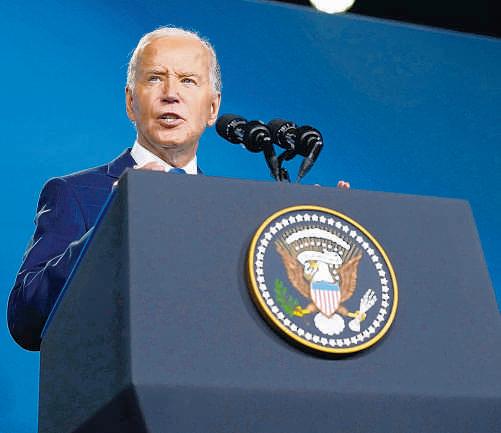
I think that includes telling the truth, frankly, about when we were wrong.”
Democratic Sen. Chris Murphy, of Connecticut told Politico last week that “there’s no doubt” that Biden, now 82, experienced cognitive decline as president.
Pete Buttigieg, the former transportation secretary, wasn’t nearly as blunt but still stopped short of defending Biden’s decision to run. He responded “maybe” when asked Tuesday whether the Democratic Party would have been better off if Biden hadn’t tried to run for a second term.
“Right now, with the advantage of hindsight, I think most people would agree that that’s the case,” Buttigieg told reporters during a stop in Iowa.
Illinois Gov JB Pritzker said he didn’t see signs of
mental or physical decline in his meetings with Biden.
“I saw him a few times,” he told CNN last week “I certainly went to the White House whenever there was an opportunity for me to make the case for something for people in my state. And I never had the experience of anything other than a guy who brought to the table a lot of good ideas about how to solve problems.”
The book “Original Sin,” by journalists Jake Tapper of CNN and Alex Thompson of Axios, revives a core controversy of Biden’s presidency: his decision to run for a second term despite voters, including Democrats, telling pollsters that he should not run again. Biden would have been 86 at the end of a second term had he won in November
A spokesperson for Biden did not respond to a request
for comment.
“We continue to await anything that shows where Joe Biden had to make a presidential decision or where national security was threatened or where he was unable to do his job,” the spokesperson has told many media outlets in response to the book.
Late Friday, Axios published portions from audio recordings of Biden’s six hours of interviews with prosecutors investigating his handling of classified documents after his term as vice president ended in 2017.
The Biden administration had already released transcripts of the interviews, but the recordings shed light on special counsel Robert Hur’s characterization of Biden as “a sympathetic, well-meaning, elderly man with a poor memory” and appeared to validate his claim that the then-president struggled to
recall key dates, including the year his son Beau died of cancer in 2015.
Biden and his aides pushed back aggressively against Hur’s report, which they characterized as a partisan hit. Biden was at that time — early 2024 — still planning to run for a second term and fending off accusations that he was too old for another four years in the job.
The recordings released by Axios include Biden’s discussion of his son’s death.
His responses to some of the prosecutors’ questions are punctuated by long pauses, and his lawyers at times stepped in to help him recall dates and timelines.
Before he dropped his reelection bid last summer, Biden faced widespread doubts within his own party even as Democratic leaders dismissed both a series of verbal flubs and Republican allegations about his declining acuity
In January 2022, just a year into Biden’s first term, an AP-NORC Center for Public Affairs Research poll found that only 48% of Democrats wanted him to seek reelection. That fell to 37% of Democrats in an AP-NORC poll conducted in February 2023.
Three-quarters of Americans — and 69% of Democrats — said in August 2023 that they believed Biden was too old to serve as president for another four-year term.
And shortly after his debate flop, nearly two-thirds of Democrats said Biden should withdraw from the race.
Biden and former first lady Jill Biden appeared on ABC’s “The View” in a preemptive defense of his health and decision-making before the first excerpts of “Original Sin” were published.
Patricia McEnerney, a 74-year-old Democrat in Goodyear Arizona, said Biden should not have tried to run again.
“I think it’s sad the way it ended,” she said. She compared him to Douglas MacArthur, the World War II and Korean War general famously dismissed by President Harry Truman.
“I think he needs to stop giving interviews. I think that would help,” McEnerney said. “Like MacArthur said, generals just fade away.” Janet Stumps, a 66-year-old Democrat also from Goodyear, a Phoenix suburb, had a different view
“I don’t think it’s going to hurt the Democrats,” Stumps said. “I feel badly that he feels he has to defend himself I don’t think he has to. Everybody ages. And the fact that he did what he did at his age, I think he should be commended for it.”
Hackett, the Democratic strategist, predicted Biden won’t be a major factor in the 2026 midterms or the 2028 presidential primaries But he said Democrats who want voters to trust them would be well-served “by telling the truth about the mistakes that our party made in the run-up to 2024.”
“Those mistakes were largely driven by Joe Biden, and I think any Democrat not willing to say that is not really prepared to face the voters, who want the truth and they want authenticity,” Hackett said. Rick Wilson, a former GOP strategist who co-founded the anti-Trump group the Lincoln Project, said Republicans want to talk about Biden to avoid defending Trump. But he said the strategy is folly Besides “political nerds,” he said, “no one else cares.” Associated Press writer Thomas Beaumont contributed to this report from Cedar Rapids,
He said he’s responsible for Trump’s victory but attributed Harris’ loss, at least in part, to sexism and racism He maintained that he would have won had he remained the Democratic nominee. Both Bidens rejected concerns about his cognitive decline.


































































































BY POET WOLFE Staff writer
New census data reveals that
Baldwin County, a corner of Alabama on the Gulf Coast known for its white-sand beaches and genteel towns, has experienced an upsurge in population and tourism within the last decade.
Home to the cities of Daphne, Fairhope and Foley, Baldwin County is the sixth fastest-growing metropolitan area in the nation, according to a 2023-2024 report by the U.S. Census Bureau. With over 260,000 residents, its population has increased by 66.3% in the last 20 years, making it the fastest-growing county in the state.
The Census Bureau noted that 97% of the uptick is due to incoming migration especially people who are 65 years or older
This suggests that the area has become a retirement destination, potentially due to its cheaper housing market. In Baldwin County, the median value of homes is $287,000 while the national average is $303,400, according to census data.
Though Viktoria Riiman, a former socioeconomic analyst at the University of Alabama, said in 2018 that other age groups are also moving to Baldwin County for reasons besides its cheaper housing.
“Both retirees and younger families are moving to the county because it offers a high quality of life, from great amenities to quality schools and great economic opportunities,” Riiman told the university’s news center But the growth spurt in population and residential development has strained local infrastructure, particularly in Fairhope, where the City Council recently approved a 9-month ban on new



searching for ways to ease congestion caused by an influx of residents and tourists.
Areas like Gulf Shores are longtime vacation hot spots for people living in neighboring states like Louisiana.
This especially rings true for New Orleanians, who no longer have a beach getaway after two local ones, Pontchartrain and Lincoln, shut down years ago
Beyond its beaches, Gulf Shores has attracted more visitors after Buc-ee’s — a Texas-based megastore gas station chain expanding across the Gulf Coast opened a location about half an hour away in Robertsdale, Alabama
The sprawling convenience store, known for its brisket sandwiches, endless merchandise and pristine bathrooms, immediately drew in thousands of customers.
As an attempt to ease congestion at its Alabama location, the company made a deal to open a Bucee’s nearby in Harrison County, Mississippi, which is launching this summer
“They needed our store to take the pressure off of Alabama,” Bill Lavers, the executive director of Harrison County Development Commission, said in February “They knew that that’s what they needed because of the traffic that was going to come.”
Throughout the year, Gulf Coast residents also flock to Fairhope, a town that carries the patina of Southern charm with its blend of boutiques and natural beauty for an affordable vacation stay
Similar to Gulf Shores, corporate chains like Wawa and Publix have opened storefronts on the outskirts of Fairhope in response to Baldwin County’s immense growth in population and tourism.
The Alabama Tourism Department said that 72% of travelers made a trip to the state, attracting 29 million tourists and generating nearly $30 billion in economic activities.
Email Poet Wolfe at poet.wolfe@ theadvocate.com.







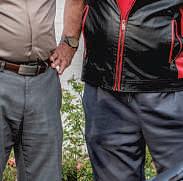





























It’s thesitewhere OskarSchindler saved1,200 Jews
BY KAREL JANICEK Associated Press
BRNENEC, Czech Republic A dilapidatedindustrial site in the Czech Republic where German businessmanOskar Schindler saved 1,200 Jews duringthe World WarIIis coming back to life.
The site, aformer textile factory in the town of Brnenec, about 100 miles east of Prague, was stolen by the Nazis from its Jewish owners in 1938 and turned into aconcentration camp. This weekend it welcomed the first visitorstothe Museum of Survivors dedicated to the Holocaust and the history of Jews in this part of Europe.
The opening was timed to coincide with the 80th anniversary of the endofWorld WarII. It wasalso in May1945 that Schindler received a golden ring from grateful Jewish survivors, made with gold taken fromtheir teeth The ring was inscribed with theHebrew words from Talmud, saying “Whoever saves onelife saves the world entire.” Schindler’sstory was told in Steven Spielberg’sOscar-

Schindler savedsome1,200 Jews duringWorld WarII, in Brnenec, Czech Republic
winning movie, “Schindler’s List.
DanielLöw-Beer was a driving forcebehind the project. His predecessors livedinthis part of Czech Republic for hundreds of years, acquiring theplant in Brnenec in 1854 and turning it into one of Europe’smost important wool factories.
“Wehad to flee for our lives, lost abit of ourhistory, so putting alittle bit of history back to aplace andhopefully bringing out as well the history of Oskar Schindler and thevillage is what we’re doing today,”Löw-Beertold TheAssociated Press. Today, hisfamily members are scattered around theworld
“I’m pleased to put alittle bit,ofcourse emotionally,of my family back in theplace because they were survivors. My grandfather lived here,myfather livedhere, and then the world was shatteredone day in 1938,”he said.
Separate past,present
The museum, housed in partofarenovated spinning mill,displaysthe historyof Schindler,his wife Emilie, the Löw-Beer family and others linked to thearea, together with the testimonies of Holocaust survivors. It includesa space for exhibitions,lectures, film screenings andconcerts, as well as acafé.
Atransparent glass wall between this part and the bigger,stillruined area behind it separates the present and history
“It’s auniversal place of survivors,”Löw-Beersaid. “Wewantthose stories to be told and people to make their own opinions.”
In 2019 Löw-Beer setupthe Arks Foundation to buy the warehouse and turn it into amuseum, investing money and renewing apartnership withthe local community to revive the neglected site.
The regionalgovernment contributedfunds, while a grant from the European Unionbrought childrenfrom five European countriesto Brnenec to come up with ideas thathelped shape the museum design.
The official opening on the weekend completed the first step but alot remains to be done.
The remaining buildings are still waitingtobefully restored.
They include Schindler’s office wherethe town hall planstocreateaninformationcenter,the barracks of the SS troops,which will provide moreexhibition spaces, andthe entire building of Schindler’sArk where the Jewish prisoners lived and worked.
Currently,the museum is not open on adaily basis and focuses on education activi-
BY MOLLYQUELL
Associated Press
AMSTERDAM The fire that caused significantdamagein April to historic buildings in Suriname’scapital city was not the only threat facingthe nearby Neveh Shalom Synagogue. As firefighters battledto save thehistoriccity center of Paramaribo —aUNESCO World Heritage site —the synagogue’svolunteers were busy scanning thousands of archival documents in an effort to preserve the history of the thousands of Jews who havecalled the Surinamese capital home since the 1700s

The operation to digitize the birth records, land sales andcorrespondencehas been overseen by Dutch academic Rosa de Jong, who hadused the archive as part of aPh.D. study on how Jewish refugees fled thehorrors of World WarIItothe Caribbean, including the tiny South American country of Suriname.
to Suriname with theaim of making high-quality scans of thehundreds of folios held by the synagogue. The result is morethan 600 gigabytes of data stored on multiple hard drives.
ties for schools.
Previous projects to restore the site failed due to alack of funds. In contrast, theArks Foundation took astep-by-stepapproach.
When skeptical local residents could see something was really happening this time, they offered help. A firm came with abig truck loaded with bricks,dropped them and just went off, LöwBeer said.
“Wewanted to show that you have to do something for something else to happen,” said Milan Šudomaof the foundation. If organizers had waited until they had secured allthe necessary funding, nothing would likely be done by now,hesaid.
“Oskar andEmilie Schindlerare proof that one personcan makeadifference,”the museum quotes Rena Finder,one of the Schindler’sJews, as saying.
“Everybody said there was nothing Icould do. And that’s alie because there is always something you can do.”
Hundreds of livessaved
Schindler,anunlikely hero, was born in the nearby town of Svitavy(Zwittauin German) in what was then the Sudetenland in Czechoslovakia,witha Germanspeaking majority and asubstantial Jewish population.
ASvitavy museum said Schindlerwas amass of con-
tradictions: atroublemaker, awomanizer,aspy for the Germans, aNazi but also a man whosaved people from the Holocaust. After thewar broke out in 1939, Schindlermoved from Svitavy to Krakow, nowPoland, whereheran an enamel andammunition plant and treated Jewish workers well. With theRed Army approaching in 1944, he created alist of Jewish workers he claimed wereneeded to resettle the plant in Brnenec.
When atransport with 300 womenwas diverted to the Nazi death camp at Auschwitz, Schindlermanaged to secure their release.
YadVashem,the Holocaust memorial centerin Jerusalem, said it’sthe only knowncase“that such a large group of people were allowed to leave alive while the gas chambers were still in operation.”
In another bold act, Emilie Schindler led an effort to savemore than 100 Jewish male prisoners who arrived at anearby train station in sealed cattle wagons in January 1945. In 1993, YadVashemrecognizedEmilie andOskar Schindler as Righteous Among the Nations, the honor awarded to those who rescued Jews from theHolocaust.
of the Holocaust, arrived in Paramaribo.
The blaze was contained beforereaching thesynagogue, but at the mercyof other threats, including the tropical climate, insects and time, it was areminder of howfragile the 100,000 historic documents, kept on pages stored in filing cabinets for decades, were and howvital the preservation project was
“I felt thatmyworkcomes with an obligation to preserve the past that I’m buildingmycareer on,” De Jong told The Associated Press. When she finished her academicresearch,atthe UniversityofAmsterdam,last year,DeJong saw an opportunity to return to Suriname andsafeguard the filesthat had been crucial to her work. She raisedthe financing for cameras, hard drives and travel expensesand returned



The archived documents show how Surinamewas a hub of Jewish life for the Americas. The British who colonized the region gave Jews political and religious autonomywhenthey first moved to Suriname in 1639 to manage tobacco and sugar cane plantations When theDutch took control of the colony,theycontinued this practice. When Jewish people wereforced out of other places in the Americas,they often fled to Suriname.
On Christmas Eve in 1942, morethan100 Dutch Jewish refugees, fleeing thehorrors
Liny Pajgin Yollick, then 18, wasamongthem.Inan oral history project forthe UnitedStates Holocaust Memorial Museum, shedescribed the relief she felt when she arrived in Suriname to the sound of afamiliar song.
“I remember it wasmorningand they played Dutch National Anthemfor us when we arrived, andeverybody was crying. We were very emotionalwhenweheard that because many of us neverthought we would ever hear it again,” she said. When the Netherlands was freed from Nazi German occupation three years later Teroenga, the magazine published for the Jewish congregations in Suriname, ran with the headline “Bevrijding”
(“Liberation”). The archive at Neveh Shalom has acopy of every edition of Teroenga. Key to De Jong’spreservation project has been 78-yearoldLilly Duijm, who wasresponsiblefor the archive’s folders of documents for more than two decades. Born in Suriname, when she was 14 she moved to the Netherlands where she eventually became anurse. But she returned to her homeland in 1973, just before the colony got its independence, and her four children grew up in Paramaribo. She knows how precious the archive was.
“I told the congregation, as long as the archive is still here, Iwill not die. Even if Ilive to be 200 years old,” she tearfully told AP.“This is keeping the history of my people.”









WeareproudtosponsorTheAdvocate’s StarofStarssportsawardscelebratingthebesthigh schoolstudentathletesintheBatonRougearea.






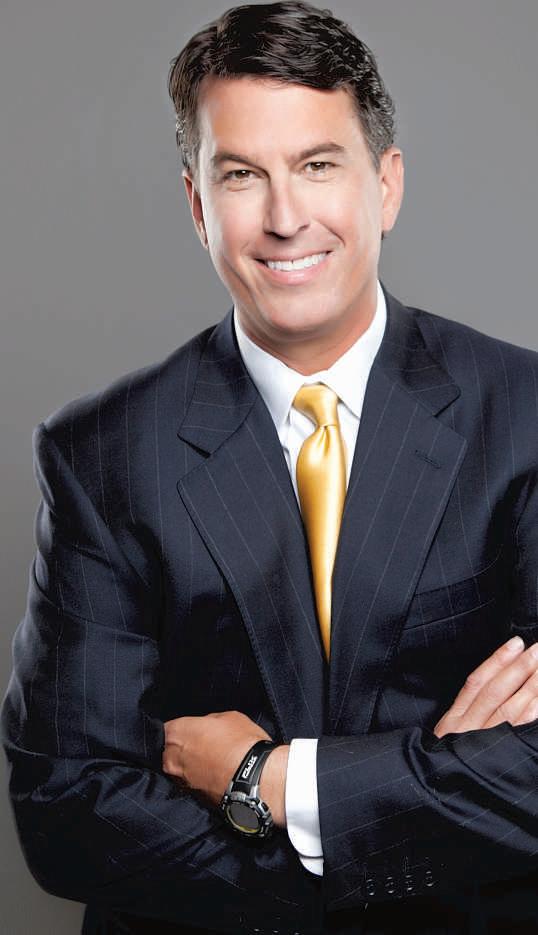


about her.”
BY QUINN COFFMAN Staff writer
The last time Shaquinnta Scott’s mother saw her was at a family gathering at the end of March
Three weeks later, the body of Scott — a 34-year-old mother of four — was found in an abandoned apartment complex on Monet Drive in the Melrose East neighborhood.
Funeral set Thursday for former mayor-president
Staff report

Funeral services for former East Baton Rouge Parish Mayor-President Kip Holden have been scheduled for Thursday The 72-year-old Holden died Wednesday after a lengthy illness. His service will be held at 11 a.m. at Greater King David Baptist Church, 222 Blount Road in Baton Rouge. The Rev Dr John E. Montgomery II will preside. Visitation will be held from 8 a.m. to 10:45 a.m. at the church before the service.
On Wednesday, Holden will lie in state at Baton Rouge City Hall, 222 St. Louis St. Mayor-President Sid Edwards and other dignitaries will welcome the body at 4 p.m. After a brief ceremony in the City Hall lobby, the building will be open for the public to pay respects until 8 p.m. The city said more details will be provided on Monday Holden took office in 2005 as the city-parish’s first Black mayor-president after defeating Republican incumbent Bobby Simpson in what was considered an upset. He served three terms, with his tenure bookended by Hurricane Katrina and the 2016 floods. He was known for helping revitalize downtown Baton Rouge, pushing for economic development and successfully convincing voters to tax themselves for road and infrastructure improvements worth more than $2 billion.
Holden was a state representative from 1988 through 2002, then a state senator from 2002 until he was elected mayor-president in 2004.
He is survived by wife Lois, five children and two sisters.
Her body was in a state of deep decay, according to the East Baton Rouge Parish Coroner’s Office. At the time, police said they believed Scott was homeless.
The case is being investigated as a homicide, but no official cause of death has been released. The Coroner’s Office said more forensic studies are being conducted, and final results could take months.
In the meantime, members of Scott’s family say they are looking for justice and hoping she won’t be forgotten.
“I want them to not just throw her to the side because they thought she was homeless,” her mother, Charmaine Scott, said.
Charmaine Scott said her daughter had been suffering with drug addiction for the past few years.
She had been staying with different relatives on and off, but always “had family that loved and cared
A spokesperson for the Baton Rouge Police Department said the case is not being disregarded. The department encourages anyone with information related to Shaquinnta Scott’s killing to reach out to police.
Shatara Williams, a childhood friend, said Shaquinnta Scott made staying in contact with her children a priority, even after she gave up custody to friends and family Her oldest son graduated from high school this month. Williams said Shaquinnta Scott wouldn’t have missed the event.
“That love for her kids never changed,” she said. “I don’t care what kind of drug you were on Her
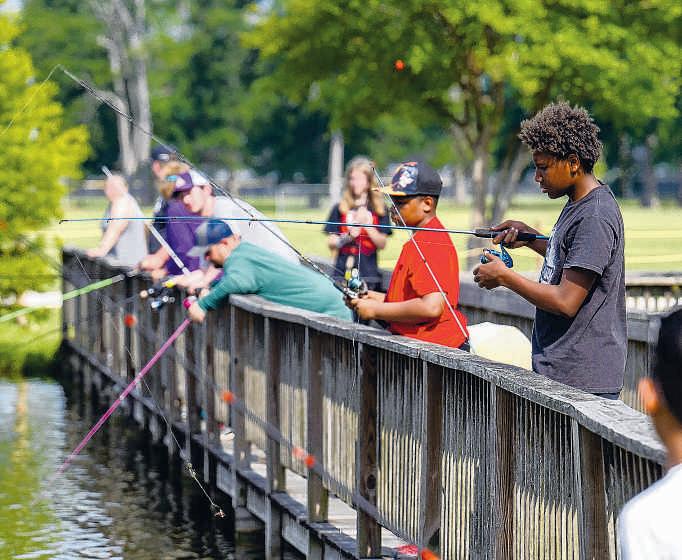

Ex-users share testimonials at drug court graduation
12 complete sobriety program
BY MATT BRUCE Staff writer
love and redemption. “Success is not final, and failure is not fatal,” District Judge Will Jorden, who presides over the program, told graduates. “Whenever you find out what your purpose is, that is a blessing. Whenever you’re able to give back to someone, even in the least, that is a blessing. And I want to congratulate each and every one of you and remind you do not get caught up in deficit thinking what I don’t have, what I wasn’t afforded, how somebody’s trying to get me down. Who cares? You’ve got to have
ABOVE: Cedric Jackson, 13, gets ready to cast a line Saturday during Walker’s fourth annual Get Out & Fish! event at Sidney Hutchinson Park.
LEFT: Braeden Austin, 13, poses with his first catfish.
Future operation could depend on property tax renewal
BY DAVID J MITCHELL Staff writer
Funding for 23 stream and river gauges across major watersheds in East Baton Rouge Parish has been restored after it was cut late last year in postSt. George budget trimming.
But, the dollars are only for the current year and the gauges’ continued
operation could depend on the passage of the “Thrive! EBR” plan this fall, city-parish officials said. And the U.S. Geological Survey gauges also could become part of a broader discussion already underway about reassigning costs now borne by the city-parish, one East Baton Rouge Parish Metro Council member said, after St. George emerged last year as the parish’s fifth municipality following lengthy litigation. The gauges monitor flood-prone waterways across the parish, particularly in their upper reach-
es. The loss would have meant having no USGS gauges on entire waterways or long stretches of them through Central, Zachary, the unincorporated part of the
parish, and central and southern parts of the
Among the waterways where gauges operate are the Comite River, White Bayou, Beaver Creek, Sandy Creek, Ward Creek, Dawson Creek, Bayou Fountain, Claycut Bayou, Jones Creek, Bayou Manchac, Hurricane Creek and Corporation Canal, according to a listing pro-
Monitors: Nighttime checks conducted only 7% of time
BY JILLIAN KRAMER, MISSY WILKINSON and JOHN SIMERMAN Staff writers
Three of the 10 men who joined in a brazen jailbreak Friday morning in New Orleans sat inside the lockup for nearly two years or longer before their run for freedom, records show, a duration that is common in Orleans Parish, where a spotlight now hovers over Sheriff Susan Hutson and an understaffed jail stretched to capacity
The length of jail stays among violent offenders in New Orleans and their impact on the population and climate inside the jail was among several issues drawing concern Saturday as the sun set on the second day of a massive law enforcement search, with seven of the escapees still on the lam.
The brazen escape unfolded after midnight Friday from a unit staffed by a single deputy reportedly on a meal break, according to authorities. The breakout went unnoticed for more than seven hours, until a routine head count exposed the missing inmates.
It was the largest escape ever at the 9-year-old lockup, where longstanding, documented problems at the troubled facility faced mounting scrutiny Many of the issues that may have contributed to the jailbreak including overcrowding, defective cell doors and lax security — have been well-documented and the subject of urgent warnings.
Attorney General Liz Murrill was among those who pointed to prisoners who have remained in the jail for years as a contributor
“Long stays certainly increase the likelihood of danger and increase the ability of offenders to find and exploit weaknesses in the facility or its staffing,” Murrill said.
“This is a known problem — Judge Africk recognizes it.”
U.S. District Judge Lance Africk has since 2013 overseen a federal consent decree governing conditions inside the Orleans Parish jail, under a settlement reached between former Sheriff Marlin Gusman, plaintiffs’ attorneys and the U.S. Justice Department, which intervened in the case. The agreement emerged from a class-action
Continued from page 1B
love for her kids never changed.”
Charmaine Scott said she last saw her daughter during a family gathering on March 30 A post on Shaquinnta Scott’s Instagram account from April 4 shows her singing and playing a guitar Body found John Shields, a maintenance tech contracted to board up the doors and windows of many of Melrose East’s abandoned buildings, said he found Shaquinnta Scott’s body He said part of his job is doing a sweep of each building to see if anyone is inside.
The morning of April 21, Shields and his team were tasked with replacing plywood boards blocking the entrances to an abandoned two-story apartment complex and leasing office in the 700 block of Monet Drive. While he wouldn’t go into too much detail on the state of the second-story room Shaquinnta Scott was found in, he did say the decomposition seemed advanced. Police estimate she had been dead for two or three weeks before being found. Shields also said the windows in the room had been blocked out with quilts.
lawsuit over unsafe and unconstitutional conditions, among other issues.
For a time, Africk seized oversight of the jail from Gusman, who said in an interview Saturday that the building was state-of-the-art when it opened and “highly secure” — but reliant on proper staffing and supervision. The escape was a “lack of vigilance, maintenance and clearly lack of supervision,”
Gusman said.
Hutson, who beat Gusman to take her seat as sheriff, has pointed to a tangle of persistent problems at the jail he built: Malfunctioning locks that make it harder to secure cells; dangerously low staffing levels that leave housing units unmonitored for long stretches; and a rising jail population that she says is placing growing strain on an already overextended workforce.
Federal monitors have echoed many of those concerns, documenting lapses in medical care, use-offorce protocols and basic supervision — all contributing to what they have described as a jail in a state of ongoing instability
Months ago, federal monitors overseeing court-mandated reforms warned that jail staff were conducting nighttime security checks only 7% of the time a pattern they described as part of a broader web of “systemic deficiencies” plaguing the facility
Those and other warnings now appear prophetic They also are raising new questions about the jail’s chronic understaffing and fragile infrastructure and fueling condemnation of the Orleans Parish Sheriff’s Office, which manages the jail.
Long stays and overcrowding
In an October report, the monitors overseeing the consent decree wrote that many of the jail’s chronic issues continued to place detainees, deputies and the public at risk.
Although a recent status report from the Sheriff’s Office touted improvements in staffing and oversight, the escape has reignited debate over how best to manage the jail’s most dangerous detainees.
Of the 10 inmates who escaped, five are charged with murder or attempted murder, court records show Two have been held in the city’s jail for at least two years, court records show.
Lengthy stays can also contribute to overcrowding. A city ordi-
nance mandates that the jail house no more than 1,250 inmates at a time. Yet public data show the jail’s population was 1,374 people as of Wednesday, and it topped 1,500 inmates in November Murrill on Saturday cited one particular escapee — 27-year-old Derrick Groves — who court records show has been incarcerated for more than two years in the jail. Groves was convicted in October of second-degree murder and, in a separate case, manslaughter He is awaiting sentencing in Orleans Parish Criminal District Court Criminal District Court Judicial Administrator Robert Kazik did not return a phone call Saturday evening. Chief Criminal District Judge Tracey Flemings-Davillier did not immediately respond to an email requesting comment Security lapses
In Hutson’s most recent court status report, she said night-shift security checks had improved in all pods, or residential units of the jail. She said data showed that between 88% and 100% of checks had been completed in certain pods. Her report did not include data on night-shift security checks in Pod 2E, where the inmates escaped early Friday morning.
The men exploited a hole behind a cell toilet to access a maintenance corridor Surveillance footage later showed them slipping through a loading dock area and scaling the facility’s perimeter wall, using blankets to soften the barbed wire.
A spokesperson for the Sheriff’s Office did not return a phone call Saturday afternoon. Neither did Margo Frazier, the lead monitor over the consent decree.
“The Orleans Parish sheriff continues to allow tiers to go completely unsupervised for many, many hours, which is contrary to the provisions of the consent judgment,” said Emily Washington, an attorney with the Roderick & Solange MacArthur Justice Center, which represents inmates in the consent decree litigation.
In the federal monitor’s most recent report, they wrote that generally adequate security checks only happened twice a day “Supervisors often claim they perform inspections, but the ap-
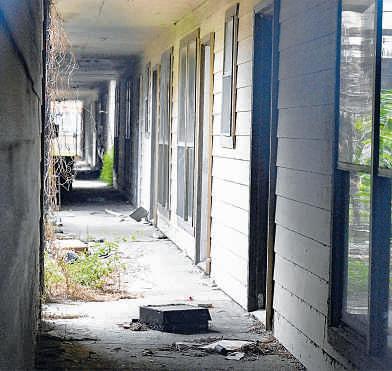
The building had been abandoned for years according to Shantae Johnson, the complex’s former property manager Johnson recalled meeting Shaquinnta Scott in the area a handful of times, saying she was friendly and apologetic when asked to leave a building. Even when tenants still lived
at the apartments, the building was plagued by black mold, feral cats and water stoppages, Johnson said. She left the business in 2024 after two years.
The property owner, Baton Rouge Multi-Family Holding, also owns multiple other abandoned apartments across Melrose East. Johnson said the com-
pearance of the housing areas and the lack of documentation calls those claims into doubt,” the report said.
Manhunt continues
The search for the remaining escapees continued Saturday evening, with authorities encouraging the public to remain vigilant and report any suspicious activity Rewards for tips leading to arrests of the escapees reached $12,000 on Saturday
The three inmates who have been rebooked include: Robert Moody, who is charged with battery and weapons offenses; Dkanen Dennis, who is charged with armed robbery and weapons offenses; and Kendell Myles, who is charged with attempted murder and other offenses.
The men were transported to the Louisiana State Penitentiary at Angola, authorities said. They were conveyed there by helicopters and, in the case of Myles, with a spit hood on to combat aggressive behavior
In age, the escapees range from 19 to 42 years old, and in size, from 5’5” and 150 pounds to 6’ and 230 pounds. According to Vinelink jail records, their most recent stints at Orleans Justice Center had seen them locked up for periods ranging from a week to more than two years.
Leo O. Tate Sr., 31, had the shortest stay, having been booked May 9 on parole violation, possession of firearm by felon and illegal carrying of weapon.
At the other end was Groves, booked on second-degree murder and attempted second-degree murder on Jan. 5, 2023. Law enforcement warned he may attempt to locate witnesses in the murder trial. Groves had been convicted in October of seconddegree murder in the 2018 Mardi Gras Day killing of two men in the 9th Ward.
The first inmate to be recaptured was arguably the most practiced at the art of escape and among the longest to be detained at Orleans Justice Center, having been booked there in January 2023. Myles, 20, gained notoriety as a teen for youth detention center escapes as violent as they were temporarily successful.
Tate, Grovers, Antoine Massey, Lenton Vanburen, Jermaine Donald, Corey Boyd and Gary Price remain at large.
pany originally planned to renovate the buildings, but that many were never made livable.
East Baton Rouge Parish Assessor’s Office and Sheriff’s Office records show the property is in adjudication, meaning the Sheriff’s Office seized it due to unpaid 2022 property taxes.
Attempts to reach the officer listed for Baton Rouge Multi-Family Holding about th e building have been unsuccessful.
Calls have been made to 311 to report blight and dumping there.
Police reports over the past five years also show a pattern of crime at the building, including thefts, narcotics and assault.
Will Belton, a board member with the Melrose East Crime Prevention District, which pays for security in the area, said abandoned buildings create environments for crime to flourish.
“Then it becomes a question, what do we do as a crime prevention district?” he said.
As for Shaquinnta Scott’s family, they are still troubled by the lack of apparent answers about what happened.
“She was a very beautiful person that loved and cared about everybody,” Charmaine Scott said of her daughter. “She would never do any harm to anybody, and I just don’t understand why somebody would want to harm her.”
Continued from page 1B
the audacity to succeed anyway You have to look into the eyes of no and say, ‘Why not?’”
The program, also known as drug court, is a cornerstone on the court’s roster of specialty courts. It was unveiled more than 20 years ago as an intense treatment model designed to teach substance abusers accountability to free them from the yoke of drug and alcohol addiction.
Addicts arrested on nonviolent felony drug offenses have to plead guilty to their charges before they can enroll in recovery court. In exchange, their cases are dismissed from their records once they complete the program.
Drug court is known for its intense demands. Participants are often required to make weekly court appearances, undergo therapy sessions, perform hundreds of hours of volunteer work, and they are subject to random screenings that can happen daily The most emphasized demand is that they remain drug and alcohol free.
When participants break that promise, or if they get arrested for another crime, the presiding judge can issue sanctions that include tossing them in jail for weeks or months.
Lee Jarvis admitted that he “gave Jorden a run for his money” early on in the process. But when program coordinators got fed up and threatened to kick him out, the judge gave him another chance and took increased interest in his case. During Friday’s ceremony, Jarvis thanked Jorden for not giving up on him.
“People have cars others don’t want that they treat as projects,” he said. “They work on them, fix them up, putting all the parts back in to see how everything comes together That’s how it felt. Like he saw something in me that was worth restoring.”
The idea of positive change through tough love and accountability was among the prevailing themes of Friday’s ceremony Lance Songy said Jorden’s words still ring in his head each day as a reminder to “change your algorithm.”
He said he has grown as a person during his time in recovery, learning discipline, responsibility and the importance of showing up.
“Recovery court wasn’t easy for me,” Songy said. “I realized after four years of fighting this system that I wasn’t supposed to be. Judge Jorden and the entire staff saw something in me that could be greater than just completing the program. They saw my true potential, and they held me accountable for everything in order to achieve that potential.”
Addiction breeds desperation, and it is in that hour of darkness that program coordinators often encounter defendants after they have lost everything, including their freedom.
Multiple graduates Friday admitted they originally saw drug court as their last option and only enrolled to escape prison time. They said they initially felt no real incentive to give an earnest effort, but eventually realized the program offered them a chance at spiritual transformation by helping them get clean and sober Mentors and program coordinators helped them pay rent, housed them when they were homeless, counseled them through relapses or when they lost loved ones.
Graduates basked in the fact that they have been able to restore broken relationships with family and friends, and developed a renewed sense of purpose in helping others break free from the grip of addiction.
The Rev Alexis Anderson, a local activist who serves as the recovery court’s community coordinator, said loved ones like those on hand Friday will serve as angels of support in the graduates’ lifelong battle to stay clean. But she noted policymakers in public office also need to play a role to help.
Continued from page 1B
vided by USGS.
On Friday, council member Dwight Hudson said his constituents in the central-eastern part of the parish rely on the gauges for their own emergency planning during periods of heavy rain. He pointed to a gauge on Claycut Bayou near Antioch Road.
“When there is a flood situation, they’ll monitor that gauge very closely to determine, you know, what they need to do as far as preparing their property, sandbags, that kind of thing,” he
said. Beyond those individual anecdotal examples, Hudson said the gauges’ data is important for parish stormwater planning and, ultimately, the pursuit of funding for flood improvements “I think everyone recognizes the value of the data, and we wanted to rectify that situation,” he said.
He said cutting the gauges wasn’t on the council’s radar late last year but it quickly became an issue this year after some appeared to cease operating USGS has since said the gauges were continuing to operate while the city-parish looked
for funding options but, by law, would eventually have to be shut off and removed. Last week, the Metro Council adopted the $205,170 annual contract for USGS so the federal agency can continue operating the gauges Following lengthy discussion and approval to put the Thrive! program’s property tax renewals and rededications on the Nov 15 ballot, the USGS contract was approved with little discussion and no opposition during a series of votes for other items constituting nearly $2 million in additional spending for legal settlements, an airport janitorial contract, road engineering services, demolition work
and a program to cut youth violence.
Fred Raiford, city-parish transportation and drainage director, said he didn’t like cutting the gauges but said he didn’t have a choice last year He said he was able to find carriedover dollars from the last fiscal year and avoid the cut to the gauges. “I don’t know what’s going to happen for next year I mean I really don’t. That’s an issue that depends on what happens with the voters in November,” Raiford said.
David J. Mitchell can be reached at dmitchell@ theadvocate.com.
“Recovery requires a holistic team. It requires adequate soil for people to be able to believe and overcome barriers,” Anderson said. “That’s why it’s with joy and gladness, every time we have a graduation, that I’m able to come into this space and see this room packed. Because it means they’re telling their story.”
LOTTERY FRIDAY, MAY 16, 2025 PICK 3: 7-5-5
Genealogist who found pope’s N.O roots passionate about city’s history
BY POET WOLFE Staff writer
When Jari Honora was 9, he asked his grandmother who her grandparents were.
His grandmother, who raised Honora in her Uptown New Orleans home on Danneel Street, often wove stories of the past into daily conversations. As they would drive through the neighborhood, running errands, she would often gesture toward an old house and tell her grandson which relatives used to live there.

But Honora’s curiosity stopped her in her tracks, he said last week.
“‘Well, I didn’t know any of my grandparents,’” Honora recalled his grandmother saying.
Honora, now a historian and genealogist at The Historic New Orleans Collection, can’t remember the exact moment he realized he had found his dream job, but that singular moment from fourth grade was the first time he remembers being called to the discovery of family lineage through tracing bloodlines and good old-fashioned research.
“I sort of took it upon myself to find those answers,” he said by phone Monday afternoon.
For two years after that conversation with his grandmother, Honora made trips to the New Orleans Main Library where he spent hours in the city archives section, loading reels of microfilm in a reader device. He also used the website Ancestry.com,
run by a genealogy company that was fairly new then
By the time he was 11, the boy had found the names of his great-greatgrandparents and more.
His roots in Louisiana date back over two centuries along Bayou Lafourche and St. John and St. James parishes, with some ancestors coming to the state because of the domestic slave trade.
Most children don’t question family origins until years later, when they have a stronger perception of the world and their own being.
Honora will admit it himself: His interests, from genealogy to coin collecting, were peculiar for a child.
His grandmother, who died in 2016, and other family members were well aware that he was mature for his age, Honora recalled, often repeating phrases like, “That boy has been here before.”
At the time, Honora didn’t see his hobbies, particularly relating to history as strange.
“It kind of came naturally,” Honora said. “Growing up in a place like New Orleans everything comes with a story.”
At 33, Honora still spends his days sifting through records and answering questions from people about their roots as part of his job at The Historic New Orleans Collection where he has worked for seven years.
But his most recent finding, on May 8, attracted attention from hundreds of international publications his first to gain that kind of notoriety Honora found that Robert Francis Prevost, now Pope Leo XIV, is descended from the Creole people of color in New Orleans — a discovery that highlights the city’s complex racial history and its strong Catholic presence.
Shortly after Prevost was selected as the first American-born pontiff, Honora posted his findings on Face-
book, as he does frequently without any assumption that it would go viral around the world.
The discovery of the pope’s Black Creole roots fueled pride among residents of New Orleans’ 7th Ward — where Prevost’s grandparents lived before moving to Chicago — and in Honora himself, who is Creole and Catholic. “I’m just incredibly proud,” Honora said. “Incredibly proud that we have this very close connection.”
He noted that tourists tend to view New Orleans as a party city without recognizing how many of its local celebrations are rooted in Catholicism, as it is home to the secondoldest Catholic diocese in the nation
Honora hopes his discovery “highlights the importance of Catholicism to our city, both spiritually, culturally, historically,” he said.
Honora’s passion for New Orleans, its history and its people is part of the reason he never left. To this day he still lives Uptown.
After graduating from St. Augustine High School in the 7th Ward, Honora attended Tulane University, where he earned a bachelor’s degree in history in 2013. He taught social studies at various New Orleans area charter schools for four years.
Next, Honora worked at Le Musée de f.p.c., a museum on Esplanade Avenue devoted to the history of the free people of color, for two years before taking a role at The Historic New Orleans Collection.
Honora said his lifelong dedication to unraveling history and family roots simply “came with the territory” of living in a historically and culturally rich city When asked if he ever plans to move, his answer was never “As far as I can see, always New Orleans,” Honora said. “Until we float away into the Gulf.”
Email Poet Wolfe at poet.wolfe@ theadvocate.com.
Oklahoma-based company plans to employ 160
BY ADAM DAIGLE Acadiana business editor
An Oklahoma-based company is looking to build a $1 billion refinery in Acadia Parish that it says would be the world’s first net-zero emissions facility and employ 160. Clean Refineries Inc. announced late Wednesday the project that it billed as one that will have no toxic emissions or detectable odors and a “dramatically reduced” carbon footprint. It will produce marine-grade bunker fuel, highperformance asphalt and ultraclean diesel, officials said.
CRI did not identify a specific location for the refinery but did indicate it would repurpose an existing petroleum terminal. Local officials in Acadia Parish and regional and state economic development officials could not verify the project as official but indicated talks are ongoing.
The company is eyeing a site near the Evangeline community in the western part of the parish, a source close to the deal told the Acadiana Advocate.
One Acadiana President and CEO Troy Wayman said Thursday the region is equipped to support this project and his agency will
work “with our local, regional and state partners to drive this opportunity forward.”
“Louisiana has the comprehensive economic ecosystem to support energy companies as they expand and innovate to meet global demand and standards,” said Susan Bourgeois, Louisiana Economic Development secretary
“We are pleased in Clean Refineries Inc.’s interest in our state and look forward to working closely with them and our partners to advance this project.”
Construction could begin this summer, company officials said, with the first production units online by late 2026. Additional phases are planned for 2027 through 2028. The company has announced similar projects in Oklahoma, Texas and Wyoming in recent months.
CRI would use its net-zero emissions technology for the manufacturing process to produce 20,000 barrels a day The technology, company officials indicated, includes significantly lower temperatures and pressures which leads to faster permitting, safer operations and cleaner outputs.
It would produce low-sulfur bunker fuels that would support Gulf Coast shipping operators, high-grade asphalt to overcome regional shortages and ultraclean, high-efficiency diesel that will have lower emissions and improved price stability

“This is a refinery built for today’s needs and tomorrow’s standards,” CRI president Derek Williamson said. “Southern Louisiana is a strategic gateway for marine transport, freight logistics and road infrastructure We’re delivering a next-generation supply chain that’s clean, reliable and built to last.”
Employees will earn an average salary of more than $105,000, company officials said.
The refinery will also create hundreds of indirect jobs among supply chains, logistics, and regional service providers, they said.
The facility will also include produced-water treatment systems to reclaim oilfield wastewater for agricultural and industrial reuse, officials said.
CRI announced similar plans in the Permian Basin area of Texas in October that include two plants in that region that will produce 20,000 barrels of crude per day Williamson told the Midland Reporter-Telegram at the time that the company was in talks with Louisiana officials on a project. He said the company is also in talks with officials in the south Texas city of Kenedy for a 30,000-barrel facility and in Wyoming for a 10,000-barrel per day facility refinery there.
Email Adam Daigle at adaigle@ theadvocate.com.




BY STEPHEN MARCANTEL Staff writer
Director Patrice Melnick
walked among the rooms of the Opelousas Museum and Interpretive Center on Opelousas’ North Main Street. The rooms detail the history of Louisiana’s thirdoldest city behind Natchitoches and New Orleans.
A neat trivia fact, but what’s less known is that St. Landry Parish had the second largest population of freedmen residing in it after the Civil War.
That history might have been forgotten if it hadn’t been for the work of the museum did to document it in its 2023 exhibit titled, “Still Rising: Free People of Color in St. Landry Parish.” The display tracks the history of free people of color across the parish. Some of those same families still reside in the town.
Grant funding was crucial for the project, Melnick said.
“We can keep the museum open but we couldn’t do this (without a grant) and this is the kind of project that has an important impact on the community,” Melnick said “If someone is curious and they want to learn more about who they are where they are, what’s possible. This is a really important resource for education and the community.”
Funding may become scarce in the future, as President Donald Trump continues a push to dismantle the National Endowment for the Humanities and National Endowment for the Arts. The president’s 2026 Discretionary Budget Request seeks to completely defund and shutter the agencies, which were created in 1965.
The Louisiana Endowment for the Humanities provided $5,000 for the Opelousas Museum to create its exhibit to highlight St. Landry Parish’s free people’s cultural history The grant allowed the museum to hire a genealogist, a designer and a graduate student to put together the display
LEH, a nonprofit and state affiliate of the NEH, receives about $1.1 million in federal funding, said Executive Director Miranda Restovic. On April 2, the organization received an email letting them know their funding had been cut off.
“NEH has reasonable cause to terminate your grant in light of the fact that the NEH is repurposing its funding allocations in a new direction in furtherance of the president’s agenda,” the letter stated.
“It didn’t give reasons and it didn’t give remedy options,” Restovic said. “Usually you would get an appeal or an opportunity to correct if there was something they found wrong.”
The case is similar to state affiliates across the country
“This is a 50-year relationship between the Louisiana Humanities Council and a federal agency that was literally canceled overnight,” she added.
‘Local history, local projects’ Federal spending accounts for around 20% to 30% of the LEH’s annual budget. In 2024, federal

grants made up 16.6% of the organization’s budget, with 46% coming from state grants and the rest coming from private donors, grants, and earned revenue, according to LEH’s annual report. Of that funding, 84% went to programming, with 10% going toward administrative costs.
LEH grants support projects all over the state, not just the urban cores, Restovic said. In addition to the Opelousas museum, the organization has worked with groups in Vermilion, St. Martin, Rapides and Iberia parishes in the Acadiana region.
“A lot of these projects are typically focused on local history, local projects, and local people who are involved,” Restovic said.
LEH has also provided grants for cultural events such as Festivals Acadiens et Creoles and the Southern Screen Festival in Lafayette. But while urban partners might be able to wrangle funding through another mechanism, it’s really the rural and small communities that will be hurt by these cuts, Restovic said. Those communities don’t have the resources and staff to be able to comb through and apply for other grants. The LEH actively works with groups around the state to help apply for funding. While the cuts didn’t come as a surprise, they have already had staffing impacts on the organization, Restovic said. LEH has lost about 10 employees, or a third of its staff, since November and a hiring freeze was implemented in January
Some relief has come in the form of private donors. Restovic said the Mellon Foundation awarded $15 million in emergency funding to state endowments for the humanities councils. Louisiana received $200,000.
‘We value culture’
Trump tried in his first term to eliminate the NEH and NEA but failed to garner the needed support from Congress, the only government branch that is legally authorized to dissolve an agency Trump’s first-term attacks ultimately backfired and led to Congress increasing spending to the NEA, finding bipartisan support. In 2024, the NEH cost taxpayers $207 million and accounted for 0.004% of the federal budget. It’s unclear what might happen next; eliminating the agency would require a majority vote in Congress, something that could be possible with the Republican advantage.
Restovic said she is optimistic that states’ endowment councils can convince their congress members to support the arts and humanities.
“As long as we can continue to cultivate and advocate for our work with our elected officials and hopefully make them understand how important the work that we do is,” Restovic said.
Melnick is also holding out hope that the agency will survive, but said Trump’s calls for gutting it are an attack on something deeper It strikes at the core of the unique cultures and histories that create the American experience.
“We value culture, we value people, who they are, and the art they create — we value those things. So it’s an attack on those values It’s a huge message that what you care about isn’t important,” Melnick said.




Arthur 'AJ'

Nancy Gertrude Boley, a native of St. Albans, West Virginia, and aresidentof Prairieville, LA, passed away at home on Tuesday, May 13, 2025, at the ageof 88. She worked and eventually retired as alegal secretary. Nancy enjoyed bowling, traveling, playing cards with friends, listening to music, and mostimportantly spending time with family, grandchildren, and great-grandchildren. Nancy was preceded in death by her husband, Joseph A. Boley; parents, Charles Frederick and Sarah Gertrude Reese; and her brother, Larry Reese She is survived by her children, Sarah B. Strain (David), James F. Boley (Kami), and David A. Boley; grandchildren, Reese Strain (Jodie), Lindsay CastroAguilar (Abimael), Kaylee Hebert (Adam), Kirstie Schieffler (Patrick), Bridget Boley, Charli Boley; great-grandchildren, Cale, Alex, Easton, Marlee Corbin, and Caiden; sisters, Marta June Ramsey and Karen Mullins (Bob); brothers, Charles Harvey Reese (Madge) and James William Reese; and numerous nieces and nephews. Visitation willbeheld at Resthaven Funeral Home, 11817 Jefferson Hwy. Baton Rouge, LA 70816,onMonday, May 19, 2025, from 12:30 p.m. until Funeral Service at 2:30 p.m. Interment will follow at Resthaven Gardens of Memory. The family would like to give special thanks to Dr. John Fraiche, Pinnacle Home Health and Hospice, and Our Lady of the Lake AscensionHospital. Family and friends may

Braud, Tamera Marie

Tamera Marie Braud passedawayatthe age66 on May8,2025,atAscensionOaksNursing Home whereshe spent the last six weeks. Tammy died of complications from ALS and Alzheimer's. Tammy was anative of St. Amant and along-time resident of Baton Rouge. Tammy was amember of The Church of Jesus Christ Latter-Day Saints Baton Rouge Ward. Sheissurvived by her son,JasonJames; brother, Travis Braud and wife Star and brother,Tod Braud; and numerousaunts, uncles, nieces, nephews and cousins. Tammy was preceded in death by her parents, Chester and Margaret Loupe Braud; grandparents, Clarenceand Cecile LaicheBraud;and grandparents, Felix and Bertine Matherne Loupe. For many years Tammy loved workingat O'Halleron'sJewelryinBatonRouge whereshe excelled in salesand customerrelations. Shehad a vibrant personalitythat her customersloved. Her laugh was contagious and could brighten anyone's day. Services forTamerawill be held at The Church of JesusChrist Latter-Day Saints Baton Rouge Ward on Saturday, May24th beginning at 11 am.

Arthur "AJ" Kellypassed away on May 3, 2025 at the ageof87. He was born on September 24, 1937 to DawsonV.Kelly Sr.and Annie Mae Whitehead Kelly. AJ was aUnited States Army Veteran and amemberofWoodlawnBaptist Church of Baton Rouge. For many years he didtile workinthe construction industry.
He is survivedbyhis siblings; Shirley(Dennis) Scivicque, DawsonKelly Jr., Joyce Cooper and Glenn Kellyand numerous nieces, nephews and family members. He was preceded in deathbyhis parentsand his siblings; Betty Harelson, Sarah Averett, ClaudeKelly andDanny Kelly.
Family and friends are invitedtoattend amemorial gathering at Ourso Funeral Home,13533 Airline Hwy. Gonzales, LA 70737, on Thursday,May 22, 2025, visitationwillbegin at 6pm with aserviceat7pm. In lieu of flowers,pleaseconsider donating to Woodlawn Baptist Church of BatonRouge.Fond memories and wordsofcondolences can be expressed at www.OursoFH.comfor the Kellyfamily

Legier, Bernice Bernice Thibodeaux Legierpassed away Thursday, May 15, 2025. She was 90 years old. Bernice was theyoungest child of Louis and Clemence Thibodeaux of Fordoche, Louisiana. She married Herman Legier in 1949, and they were married for60years. They had 8children. After raising her children, she went to school, became an LPN and workedasa nurse until she retired. Bernice, lovingly referred to as "Granny", was known for her love of childrenand family,aswellaskeeping
aspotlesshouse and cooking forher largefamily. She was blessed with a long, beautiful life and will be greatly missed. Bernice is survivedbyher children, Emily Taylor,Sonja St.Romain, VirginiaRay,MarjorieWeimer, FrancisLegier and AngelaWeimer and numerous grandchildren and greatgrandchildren. She is preceded in death by her parents, Louis and Clemence Thibodeaux, all six of her siblings, her loving husband, Herman Legier and twosons, Larry and James. Avisitation willbe held at St. Frances Cabrini Catholic Church in Livonia on Tuesday, May 20, 2025 from9:00 until themass of Christianburial at 11:00. The burial will follow in the church cemetery.
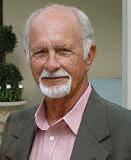
"Blessed are thepure in heart,for they shall see God." (Matthew5:8) Henry Don Locklar entered into thepresence of theLord on May 10, 2025, at theage of 86. Henry was born on July27, 1938, in NewBrockton, Alabama to Donald and RuthLocklar.Hewas marriedtothe love of his life,JaneMckeever Locklar for58years. They shared threechildrentogether, Brian,Kelly,and Kirk. Henry was agraduateofKenner High School and Louisiana StateUniversity, where he earneda degree in electrical engineering. He retiredfrom DEMCO afterservingasChief Executive Officerfor many years. He was also aproud veteran of theUnitedStates Navy and amember of St. GeorgeCatholic Church. Henry'sgreatest accomplishment was his family. He was kind,full of love and extremelyhard working.Hewas theabsolute best son, husband, dad, brother, and grandfather. He was also amentor and friend to allthose he worked with during his over 30 year career at DEMCO. We were allso blessed. Henryissurvived by his wife, Jane Locklar; their children, Brian Lock-
lar (Stephanie), KellyHufft, andKirkLocklar; grandchildren, Peyton Locklar, Ian Locklar,Gracie Hufft, Eliza Hufft, andRawls Hufft. Additionally, he is survived by hissister,Norma Nettles. He wasprecededindeathbyhis parents, Ruth andDonald Locklar; brother, Tex Locklar;and son in law, ChristopherHufft. Amass of Christian Burial will be held on Monday, May 19, 2025 at 10:00 AM at St George Catholic Church,located at 7807 St,George Dr., Baton Rouge,LA70809. Burial will follow at St George Catholic Church Cemetery

Mire, Peggy Cothern PeggyCothernMire passedaway on Thursday, May15, 2025, at the age of 98. Shewas born on October7,1926, to theunion of Sylvester andAline Cain CotherninMcComb, Mississippi.She graduated from Baton Rouge High School in 1944. After graduation, she attendedBaton Rouge Business School and later began hercareerwith theDepartmentofVeteransAffairs. In 1946, she marriedArthurJoseph Mire,Jr., andtheyhad two daughters. Shewas preceded in death by herparents;her belovedhusband; her brotherEugeneCothern andhis wife,AlvaMae; andson-in-law, Rusty Price. Sheissurvivedbyher loving daughters, Marline Mire Price,and PhyllisMire
Schledt(David); three grandchildren, Darren Schledt, Amber Brown (Bobby) and Cole Price (Holly); andher fivegreatgrandchildren, Elijah, Jonah andMia GraceBrown andMayes andWren Leslie Price;aswell as numerousnieces, nephews, otherfamilyand friends. Peggywas amember of Parkview Baptist Church andthe DorcasSunday School since 1953. She and hergoodfriend, Glynn























Watts, started the first kindergarten at Parkview Baptist Church.
Relatives and friends are invited to attend the Funeral Service at Parkview Baptist Church, 11795 Jefferson Highwayin Baton Rouge on Monday, May 19, 2025, at 2:30 p.m. A Visitation willbeheld at the church beginning at 1:30 p.m. Interment will follow at Resthaven Gardens of Memory. In honor of Peggy's love for bright colors, please come dressed in bright clothing of your choice. In lieu of flowers and for those so desiring, memorials in honor of Peggy Cothern Mire may be made to the charity of choice.
Family and friends may sign the online guestbook or leave apersonal note to the family at www.resthav enbatonrouge.com


Gerri Puyau, born Geraldine SallydiBenedetto, passed peacefullyatthe age of 94 on May 13, 2025 at her home in Baton Rouge, LA. Daughter of the late Salvador diBenedetto and Eunice Frisch diBenedetto of New Orleans, LA. Beloved wifeof the late Dr. Francis A. Puyau, sister to the late Robert L. diBenedetto, Betty Anne Mentel Ross, and Patricia diBenedetto. Survivedbyher sister Eunice Marie Allen Jennings. Loving mother of Michael (Susan);Stephen (Lynda); Jeanne Marie "Sally"; Julie (Doug); and Melissa "Lisa (Will). Grandmother of Daniel Puyau (Lindsay); Sarah Puyau Chappell (Adrian); Nathaniel Puyau (Bernardita "Bernie"); Renee Puyau Stelzer (Jason); JourdanPuyau; Noah Nagle; Anah Nagle; Mary Helen Manuel, Jimmy Manuel Great Grandmother of O'-
Malley and Bear Puyau, OakleyHarrell Davenport (Jarred) and RiverHarrell; Isabel and Violet Chappell; Calvin and Norah Puyau; Charlotte "Charlie" and Bernadette "Bernie" Stelzer.Gerri graduated from theAcademy of HolyAngels High School in 1947 and was an avid artist throughout her life. Herart reflected the culture of her native city,New Orleans, and the state of Louisiana. Sheworked in various mediums including oils, pastels, watercolor and her favorite, copperenameling using the Limoge technique.Her art education spans over manydifferent institutions including,L.E.Rabouin School for Commercial Art, NOLA; University of Tennessee, Nashville, TN;Aquinas College, Nashville, TN;Newcomb College, NOLA; and Penland School forCraft, Penland, NC.She was a founding member of the National EnamelistSociety and attendedmanyoftheir workshops. Shewas also a memberofthe National Enamelist Guild, Washington DC, Womeninthe Arts, Louisiana Crafts Council, Louisiana Artand Artist Guildand Associated Women in the arts. Gerri's exquisite artwork has won several awardsand has been exhibited in such prestigious exhibits such as the EnamelistSociety First and SecondJuried Exhibitions, Louisiana State Archives, Tulane University Medical Center,Louisiana Rural LifeMuseum, Louisiana Crafts Council JuriedExhibits, Baton Rouge ChamberofCommerce, Nashville Chamber of Commerce and the Parthenon in Nashville,TN. Serviceswillbeheldon Monday, May19, 2025,at St. Jude the Apostle ChurchinBaton Rouge. Serviceswillbegin with visitation from 9:00 AM to 11:00AMfollowedbya funeral Mass.




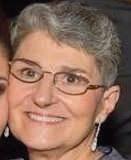
On May 15, 2025, at 12:13 a.m.,AnnetteBonfanti Rapier unexpectedly passed away at Baton Rouge General-Bluebonnet and entered her Heavenly Home at theage of 78. She wasbornonJanuary 5, 1947, and was theonly childtoJoe J. and JosephineCascioBonfanti. She was a1965 graduateof Baton Rouge High School and earnedher Bachelors and Masters+30 degrees in Educationfrom Louisiana StateUniversity. She was alongtime 4thgrade teacher at Bernard Terrace Elementary until her retirement in 1998. She then became her mother's caretakeruntil her death in 2006. She later became a retailassociateatColdwaterCreek. She had many roles in life:wife,mother, grandmother,teacher, and mentor. She was an avid nature photographer,and enjoyed volunteering at The Pregnancy Crisis Center. AdevoutCatholic, she was baptized, madeher First Communion,her Confirmation, and was married at St.Agnes Catholic Church. She is survived by her husband of 54 years, Terry Rapier; her children, Timothy Rapier-Fernandez (Chad), Terri Anne Chiasson (Ryan), and Melissa Rapier (Lydia Blanchard).
She was aproud Mimi to Thomas Joseph, Kaden Warren, PaisleyGrace, and SaigeRyann Chiasson. She is also survivedbynumerous cousins.She was preceded in death by her parents. Visitation willbeat St.Agnes CatholicChurch, 749 East Boulevard,Baton Rouge, La., on Wednesday, May 21, 2025, from10:00 a.m. until Mass of Christian Burialat12:00 p.m. PallbearerswillbeChad Fernandez, Ryan Chiasson, Thomas Chiasson, Kaden Chiasson, JosephL.Bonfanti, Jr,. and LewisA.Bonfanti. Privateburialinher parents' mausoleum crypt at Greenoaks Memorial Park willtake place at a laterdate.


Angela LeaTerrio, passedawaypeacefully on Tuesday,May 13, 2025. She was 35 yearsold andwas a residentofZachary.Visita‐tionwillbeatSt. John the Baptist Catholic Church on Monday, May19, 2025 from 12pmuntil Mass of Christ‐ian Burial at 2pm. Rosary willbeat11:45 am.Angela issurvivedbyher parents, Tommyand SusanTerrio.
Siblings,Sabrina Ferrage and husband, Warren Sharece Simmons, Emily Bergeronand JennaTerrio. 13niecesand nephews. She is preceded in death byher brother, Sammy Simmons,Jr.,nephew, Ko‐rbinSimmons andgrand‐parents,Lee andTheresa Terrioand JH andWinona McCaa. Pallbearerswillbe her nieces andnephews Angelaloved watching Dis‐ney movies.She enjoyed swimming andmusic and “borrowing” hersiblings textbooks.Flowers are welcome andfor those wishing to make adona‐tioninlieuof flowers, makedonations to shriner‐schildrens.orginAngela Terrio’sname. Sharesym‐pathies,condolences and memoriesatwww.Charlet FuneralHome.com.

Cornelius Henry 'Hank'
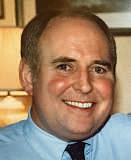
Traweek III passedaway peacefully at hishome in Solon, Ohio on April 5, 2025. He wasborninBaton Rouge on June 3, 1943 to parents C. HenryTraweek Jr.and Camille Montgomery Traweek.Henry graduatedfromBaton Rouge High School in 1961, and LSUin1965. After graduation,hejoinedthe United States AirForce as apilot andthere,gained thenickname "Hank". He is survivedbyhis loving wife of 56 years, Lois Olsen Traweek andsonsDan Keith(Meredith), Matt (Molly), andSteve (Ellen), as well as his siblings Mary Camille Maddox (Mike), Elizabeth Pisa (John),and Edward Traweek;and nieces Christen Maddox, Mary Beth Maddox (Aaron), andnephewDavid Maddox (Meghan). To see Henry's full obituary, go to Legacy.com.





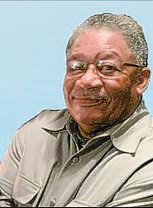
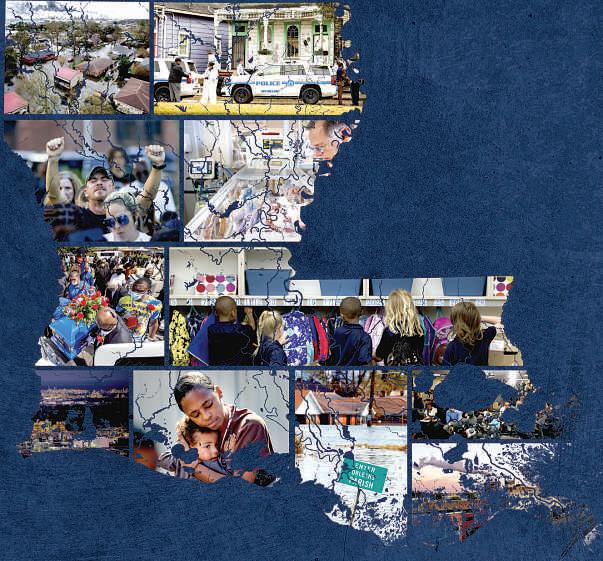


With the helpoflarge and smalldonors across Louisiana, we arestriving to publish journalism thatmakes a differenceinpeople’slives and that improves the state we alllove.
Butthis missionrequires continued support. We need to fortify, expand, and sustain our work foryearsand decades to come.




In one way at least, the Louisiana Legislature seems poised to apply the right lessons from earlier losses. After voters overwhelmingly defeated the 115-page constitutional Amendment 2inMarch, lawmakers arebreaking the key tax and fiscal proposals into bite-sized parts. This is as it always should have been. Voters deserve amenu of options to choose from when they mighthave an appetite for only some, but not all, of the offerings on the table. Especially when proposing to change the basic charter of the state’sgovernment, citizens should be able to weigh in on individualcomponents of the plan, so as to ensure that the final product truly representsthe public will.
As individual pieces of legislation,two of those proposals merit strong consideration as they aim to make our state more fiscally sound. Lawmakers wisely have been moving those proposals toward passage in the current session. Althoughperhaps afew tweaks to the current forms of the bills still wouldbeadvisable, these suggested statutes are moving in the right direction —and, at the very least,should be presented to the votingpublic individually without being tied to so many other,unrelated ideas.
One that has some worrisome aspectsbut also offers great rewards is House Bill 473 by Rep. Julie Emerson, R-Carencro. It would take three separate educational trust funds out of the constitution and use themoney to retire a large portion of the debt owed by the Teachers Retirement System of Louisiana, plus make permanent a$2,000 teacher pay raise —with tens of millions of dollarsper year leftover for other,presumably,educational purposes, rather than to make interest payments to banks.
Thetrade-offsare complicated, but Louisianans deserve the option to vote on them.
Asecond initiative —technically three bills, House Bill 366, by Rep. Daryl Deshotel, R-Hessmer,and House Bills 678 and 578byEmerson, which would work hand in hand —offers far more upside than downside. It wouldeliminate the state Revenue Stabilization Fund while using the money for amultitude of purposes, chief among them the effective elimination, for any parish that wishes to do so, of the largely counterproductiveinventory tax. It alsowould completely fill up aseparate rainy-day fund and provide more money for the state’sgeneral spending fund and for small cuts in both income and sales taxes.
That initiativecould amount to afour-way win. We aren’tashigh on resurrection of athird plank fromAmendment 2, namelywhat is now HB295, which wouldinstitute strict new spending limits on education, health care and prisons. Future legislatures, answering to their constituents, should have leeway to meet any newlydeveloped needs in those three key areas of state services, not be hamstrung by artificial limits. Either way,by movingtoward giving voters choices across the board, lawmakers this session are acting commendably.They shouldn’t let the momentumdissipate.
LETTERSTOTHE
Letters are published identifying name, occupation and/or title and the writer’scity of residence
TheAdvocate |The Times-Picayune require astreet address andphone number for verification purposes, but that information is not published. Letters are not to exceed 300 words. Letters to the Editor,The Advocate, P.O. Box 588, Baton Rouge, LA 70821-0588, or email letters@ theadvocate.com.

SEND US A

Never mind.
President Donald Trump’s145% tariffs on China ran smack into Stein’s law,the lateeconomist Herb Stein’s famousaxiom that “if something cannot go on forever,itwill stop.”


What was effectively an instant embargo on thebiggest importer into theUnited States wasn’t sustainable, and sure enough, it’snot going to be sustained.
The U.S. and China have mutually agreed toback off atitfor-tat trade war that quickly spiraled into territory that meantwanton economic destruction for bothsides.
The U.S.-China trade relationship wasn’tbuilt in aday,and it couldn’t plausibly be ended over afew days via presidential TruthSocial posts, either
During a90-day pause, theU.S. is takingits tariffs down from 145% to 30%, while China is dropping from 125% to 10%.
The problem with tariffs is that they are away of harming aforeign trade partner via imposing pain on your own businesses and consumers.
Small businesses were looking at potential extinction and retailers warning of empty storeshelves.
We’ve imposed embargoes on foreign countries before —for instance, theso-called ABCD encirclement that cut Japan off from raw materials during the early stages of World WarII. But we were abouttogotowar with Imperial Japan, whereas one hopes we won’tbeengaged in active hostilities with China any time soon.
While marketsare relieved that the 145% tariffs are off for now,wearen’t in agreat place. A30% tariff on China, plus theother tariffs that are in play

around the globe, mean we still have lurched into thehighest U.S. tariffregimesince the 1930s.
An on-again-off-again-on-again approach forces U.S. economic actors to deal withwildly gyrating uncertainty for no good reason.
Who knows what will happen in 90 days? The Soviet Union wasgoverned by Five-Year Plans; now,weare governed by 90-Day Pauses.
Trumpprides himselfonhis dealmaking, but he hasn’tgotten anything from theU.K. or China that he couldn’t have achieved withmuch less disruption
We could have gotten an outline of a trade deal with the Brits by working with them behind closed doors, and we could have gotten a30% tariff on China by imposing oneatthe outset, rather than 145%.
There is no doubt that China is a
hostile power and bad economic actor, and we should be putting our relationship on adifferent basis. The risk is that Trumphas, by tariffing everyone, friend or foe, madeitharder forusto deepen relationships with our allies and isolate our adversary As Robert Atkinson of the Information Technology and Innovation Foundation points out, the current tack will also hamper the moststrategically important, technologically advanced U.S. firmsthat are all globally integrated. The Trumptariffs will increase their costs by making imported inputs more expensive, while limiting their foreign markets by inviting foreign retaliation forTrump’stariffs. This is not awinning formula, and if China gets an upper hand as aresult, there will be no easy do-over Rich Lowry is on X, @RichLowry
When readers question why certain stories get coverage and others don’t, there’soften theimplication that these decisions are madewith some intention by the newspaper to endorse some activities or pointsofview and sideline others.
Butoften, many other factors come into play Sometimes, it’ssimply that we weren’taware of an event takingplace. At other times, there may be so much going on that we may not have theresources to be everywhere at once. Andyes, many times we are exercising news judgmentindeciding what deserves more attention.



This happens especially in sports. Fanswho rabidly cheer forateam often demand that we cover it more. When we can, we do try to add resources tocover moreof what interests you. Ialways appreciate letters from readers asking whywe don’tcover acertain topic more, andwealways forward them to the appropriate editor It makes us think about our priorities and adjust when we can.
cis and the selection of anew pope. And lastly,wereceived four letters on environmental issues.
Andthen there are theinterestsof our readers to consider.Newspapers trytoappeal to awide audience. So, events that are passionately followed by asmall, niche group may not get the coverage some feel they deserve.
Butunfortunately,there’snot always an easy answer to whyacertain event didn’tget coverage. As with much in life, it’scomplicated. Going to our letters inbox, in the week of April 17-24,wereceived 82 letters. Outside of national politics, the biggest topic was Louisiana’sinsurance crisis and what the Legislature is doing to address it. We received five letters on that topic. Next, we received four letters on thedeath of Pope Fran-

For the week of April 24 to May 1, we received 77 letters, with immigration atop issue. We received five letters on issues from immigration policy to the detention centers in Louisiana. A second topic also prompted five letters, and that was insurance. We received three letters on the topic of education and three on the warinUkraine. Lastly,areminder that we are still accepting letters forour Town Square feature. The question we are asking you to write about is: How important is your faith to your daily life, and what role, if any,should it play in public life? Send your responses to letters@ theadvocate.com.Wewill publish aselection in an upcoming edition.
Arnessa Garrett is Deputy Editor | OpinionPageEditor.Emailher at arnessa.garrett@theadvocate.com.

Apologies if this columnseems like awritten version of acollage, but please give it achance to cohere. When earlier this springI wrote that musicians and restaurateurs are two groups that, more than any other, define Louisiana for the world, afriend suggestedI also look into our “[visual] art scene and its international impact.” The friend was right about the thriving art scene —but as I looked into that,itled to another potential story,and then others, ranging fromart to Katrinarecoverytoneighborhood revitalization to an industrial controversy and back to food and music. So, just about everything Iwill mention deservesastory of its own, but the resulting weaveof all theelements creates apaean to the astonishing vibrancy of Louisiana’ssocio-cultural landscape.This place is amiracle. I’ll start with the Ferrara Showman Gallery on Julia Street. The internationalscope of its programs in the past 27 years was arevelation to me. The back-
ground offounder Jonathan Ferrara —the fascinating struggles andrisks he embraced to create today’s thriving gallery —isitself worth amajor feature story,asis the peripatetic journey of gallery co-owner Matthew Showman.


Thegallery’simmediate interest, though, is in kickingoff what surely will be astatewide spate of 20th anniversary remembrances of Hurricane Katrina. Thegallery’sKatrina remembrance comes in two parts. One of its currentfeatured exhibitions, through May 31, is of worksbymixed-media artist GinaPhillips, who came to New Orleansinthe 1990s by way of Kentucky. She earnednational acclaim after returning post-Katrina to theLower 9th Ward/Holy Cross neighborhood and securing a“long-armquilting machine” to create textile works of surpassing beauty.
If you imagine what schoolchildren know as “collages” (there’s that word again) being turned into truly fine art,that mightbehow laymen would describe Phillips’
colorful productions. Livingnot far from what was themusician’s house, Phillipsfirst gained poststorm acclaim for her Fats Domino Series of fabric paintings. Domino played ahuge role as well in the work of Paul Villinski, who began crafting vinyl butterflies from ruined LP records he found post-Katrina right down thestreet from Domino’shouse. Villinski’swork will be featured at Ferrara Showman in August, concurrent with the Katrina anniversary —and he’ll also do an installation at aNew Orleans public school, all part of what Ferrara calls “the abilityfor visual art to showcase theresilience and transformation of New Orleans.”
That leads back to Phillips: In thevery week her new exhibit opened at Ferrara Showman, she featured prominently in avery large story in the London-based Guardian by New Orleansessayist Jason Berry.Berry’sthesis begins withanassertionthat the Lower Ninth has becomeanartscentered “renaissance district” post-Katrina, withPhillips as one of its guiding lights. That renaissance, Berry posits, is now at risk
because of amajor grain terminal being builtnearby Well, the grain terminal is a subject for another day; but when Iasked Phillips about Berry’sdepiction of avibrantly artistic community, sheagreed but noted that both sides of the Industrial Canal, including the Bywater district oppositeher Holy Cross neighborhood, are flourishing. Fascinated, Imade apilgrimage that night to the wonderful Mazant Street barbecue haven called The Joint (it suffered afire just three days later,but should open again in several weeks), followed by ajaunt four blocks away to B.J.’sLounge. There, first the terrific musical fusionist Sunpie, playing in the backyard patio, and then the Deslondes, playing indoors, entertained an enthusiastic crowd of ages ranging from about 21 to 81.
Ihad neverheard of the Deslondes, but Phillips said on the phone that they feature asound distinctive to groups from that section of town. She described it as “country soul.” Ididn’tknow what she meant. Sure enough, though, theyplayed music somehow seem-
ing to fuse —oh, maybe Muddy Waters, the Allman Brothers and Johnny Cash. It was revelatory All of this —the art, music, food and renaissance —tumbled for me into asingle two-day span. This is how Louisiana rolls. I harken back to the closing stretch of the 2014 Senate race. On one day,Republican Bill Cassidy campaigned at the Lamar-Dixon Expo Center in Gonzales, among empty livestock stalls, as another pavilion featured afestive native-American gathering that then-Sen. David Vitter called a“powwow.”The sameday,an Opelousas event forDemocrat Mary Landrieu featured first a soul band and then an infectious zydeco outfit while couples joyfully danced as if it were afais do-do.
This multi-faceted ebullience is what makes Louisianans special. And if you find yourself pulled in too manydirections at once, as this column has been, well, just go with it. That’show Louisianans weave the fabric of our lives. Quin Hillyer can be reached at quin.hillyer@theadvocate.com.
ished,the resourcesand cooperation are not there,… (The) intent cannot be wind down and be ready to support (the)nation in a major response.”


As Louisiana stares down yet another hurricane season starting in two short weeks, here’sa statusupdatethat’sdefinitely not going to ease local concerns: “FEMA is not ready.” That chilling assessmentdidn’t come from some drive-by observer It’sthe conclusion of FEMA’s own internal agency review,obtained by CNN.
The document, prepared for new acting Administrator David Richardson, doesn’tjust point to longstanding problems within the disaster response agency; it also offers aglimpse into this chaotic moment within the federal government, as the second Trump administration’ssignature cut-first-ask-questions-later m.o. filters down through an agency whose very future existence has been called into question by those in charge.
Afew alarming lines reported by the news network:
n “As FEMA transforms to a smaller footprint, the intent for this hurricane season is not well understood.”
n “If an organization hears it should be eliminated or abol-
n Mosthurricane preparations have “been derailed this year due to other activities like staffing andcontracts.”
Add to thatthe same haphazard staff downsizing that has been happening across government agencies; the sudden termination of Richardson’s predecessor after he told Congress he didnot believe FEMA should be eliminated; and several anecdotal instances of even red states that have struggled to getexpected reimbursements following extremeweather,and the state of play ahead of June 1ishardly reassuring.
For his part,Richardson insists that thefact of the review itself is evidencethat things are workingasthey shouldbe.
“The slide (quoted by CNN) was used during adaily meeting Acting Administrator David Richardson hasheld everyday titledHurricane Readiness Complex Problem Solving. In other words, exactly whatthe head of an emergency management agency should be doing before Hurricane Season,” aspokesper-

son for theDepartment of Homeland, whereFEMA is housed, told CNN. “FEMA is fully activated in preparation for Hurricane Season.”
Well, let’shopeso.
But the dynamics described in the report are very real, and coming straight fromthe top. President Donald Trump hastalked of either overhauling FEMA or getting rid of it andpassing its functions on to states, which have widely varying resources and are
already hard-pressed during major emergencies Homeland Security Secretary Kristi Noem saidina March cabinetmeeting that “weare going to eliminate FEMA,” although she more recentlyhas talkedof reorienting it.U.S.Rep.ClayHiggins, R-Lafayette, who represents avulnerable coastal district, has introduced legislation to eliminate the agency andprovide federal block grants to states struck by disaster There’s also plentyofpushback, andnot just from theusual sources. Louisiana’s Republican U.S. Sen. JohnKennedy,who rarely strays from theTrump line,has introduced bipartisan legislation to improveFEMA’s operations.
“FEMA can’t go away,” Kennedy said earlythis year.“Ithink the first job of thefederal government is to protect people and property.”
Former DemocraticGov.John Bel Edwards,asked at arecent public eventinLakeCharles,offered asimilarpoint of view.
Edwards, who noted that 23 major federal disasterswere declaredonhis eight-year watch, said the idea of heading into something like amajor hurricane without “afederal partner lean-
ing intothatwithyou beforehand, andonthe ground withyou in a robustway immediatelyafter is very,very troubling to me.”
Letting states fend forthemselves, he said, is “in my estimation notgoing to endwellfor the large,complexdisasters.”
While Edwards voiced concern thatthe administrationinWashingtonhas alreadymadeits decision, he did allowthathewas encouragedtosee his former chief of staff Mark Cooper named to Trump’sFEMA Review Council. We should be,too. Unlike so many in this conversation,Cooper, who also oversawemergency preparedness forRepublican Gov.Bobby Jindal, hasbipartisan trust andexperience on thelocal levelboth in Louisiana and in California,aswellaswith theprivate suppliersector with Walmart. Hopefully,the politicianswho make up abouthalfthe council, which is co-chaired by Noem, will listen to his on-theground insights.
Thatmight be atallorder fora crowd that considers traditional government expertise suspect. Butmaybe they could keep their minds open,justthis once.
Email Stephanie Graceat sgrace@theadvocate.com.
Come July,MarshallSimien will be mayor of one of Louisiana’s largest cities. His journey from Lake Charles as achild to college to law school to asuccessful career as an attorney and areturn to the place where he was birthed ushered him into community and public service.


Now,he’smaking history Simien is not the firstBlack mayor of Lake Charles. Thefirst was Lake Charles District C Council member Rodney Geyen, who served as the city’s27th mayor for 41/2 months. The 28th mayor was Randy Roach Abunch of Democrats and aRepublican ran to replace Roach in 2017. Simien, then aDemocrat, was acandidate. Republican Nic Hunterwon the election, serving as the29th mayorsince. Simien missed facingoff with Hunter in arunoff by 100 votes. This time, Simien got aclean shot at Hunter in arunoff —and won by 654 votes earlier this month
When Simien is swornin, he’ll be thecity’sfirst Black elected mayor Louisiana communityand political activist Gary Chambers watched the Lake Charles election with great interest. “They gave themayor an opportunity, andthey’re going to give this brother achance,” he told me Thursday. Chambers said this election is another example why every vote counts, particularly every Black vote. The Lake Charles vote isn’tcomplicated; it’sjust split. There were 22,000 White voterseligible to cast ballots and21,116 eligible Black voters. That’s 48% White voters and 46% Black voters, with 6% of voters of other racial identifications. Lake Charles is aDemocratic city by voters’ partyregistration, butthe city sits in Calcasieu Parish, which overwhelmingly voted for Donald Trumpin2016 and2024.
trict has moreBlack voters. Now, four of theseven city council districts arerepresented by Black members.
Simien was one of those representatives, elected to represent predominantly Black North Lake Charles, downtown and the lakefront in District Afor two terms,startingin2005.

Simien was born in LakeCharles Charity Hospital and reared on North Adams Street in thecity’sGoosportneighborhood. The hospital is now Moss Memorial HealthClinic.
Agraduateofthe old Washington High School, Simien started his college education at what was then the University of Southwestern Louisiana, now the University of Louisiana at Lafayette, and finished at McNeese StateUniversity Likesomany young people, Simien didn’tstay home.
In recentdecades, three of the seven city council members represented majority Black districts. With more White residents movingoutsideof thecityinrecent years, afourthcity council dis-
Right out of college, Simien worked at Marathon Oil in Houston before attending and graduating from the Louisiana State University law school. Fresh out of law school, he did aclerkship in Orleans Civil District Court
with ajudgewho would become aLouisiana SupremeCourt chief justice —Bernette Johnson. Simien had asuccessful career with New Orleans’ Middleberg, Riddle &Gianna law firm,practicinginthe litigation division. In law school, he said he knew he wanted to “practice law,litigate and make money.” And he did.
While at the law firm and living in Mandeville, he got active in politics, working on Johnson’s 1994 Louisiana SupremeCourt and Marc Morial’s1994 mayoral campaign. He caught the political and public service bug.
When his dad becamefrail back home, he, his wife, a3-year-old son and a3-week-old son moved to be close to his dad.
He started the Simien Law Firm. His public service turned from helping others achieve their political goalstohelping his home city
Simien was on the Lake Charles BoardofZoning Adjustment, president of theLake Charles Facilities Corporation and the Board of Commissioners of the Lake Charles Harbor &Terminal District, thegroup that oversees the PortofLake Charles. He ran for city council and won. Twice.
Alifelong Democrat, Simien decided to makeanother run for mayor,this timeasanIndependent. “People want to get to the sameplace with different philosophies about how to get there,” he explained. “The two-party system hasn’tworked foralot of people. My real party is southwestern Louisiana.”
The truth is that the parish and the city are so Republican red that someRepublican, conservative Democratic, Independent or no party voters couldn’tvote for aDemocrat. Simien got enough of those votes to push him over the top.
Johnson has mentored many young attorneys. “I’m truly excited,” she said. “I’ve got judges and prominent attorneys, but Marshall is my first mayor.” Geyen, Chambers, Johnson and others are counting on Simien to be successful, bringing Lake Charles back from Hurricanes Rita and Laura. He can liftresidents’ spirits, give them hope. Soon it’ll be his timetoprove the voters were right.
Email Will Sutton at wsutton@ theadvocate.com.




































































N.O. to sink or swim with oneofmostinexperienced quarterbackrooms ever
Derek Carr is retired.
Jameis Winston is aNew York Giant. And Drew Brees isn’twalkingthrough that door
The New Orleans Saints aregoing to sink or swim this season with their trio of young quarterbacks.Ready or not, here come Tyler Shough, Spencer Rattler and Jake Haener


The Dat Pack is not just themost inexperienced and unproven quarterback room in the NFL. It’s the most inexperienced and unproven quarterback room in Saints history Combined, they have played in 15 games and thrown five touchdown passes and six interceptions. None of them has won asingle NFLstart. This is where the Saints find themselves after Carr’ssurprising retirement: With six NFL starts, Rattler is themost experienced passer on the roster At 26 years old and entering his third season, Haener is the oldest andlongesttenured.
And Shough, the No. 40 overall pick in the 2025 NFL Draft, is the highest-paid andmostlikely to start the season opener againstthe Arizona Cardinals on Sept. 7. In terms of experience andpedigree, it’safar cry from afew years ago, when the future Hall of Famer Brees started, and veteran backups Winstonand Teddy Bridgewater were behindhim.
No one really knows what to expect. Saints head coach Kellen Moore said all three players will compete for the job, but Shough and Rattler are expected toreceive the bulk of the first-team repsonce fullteam, on-field drills start this offseason.He said team officialswillnot rush into adecision and willbepatient before identifying astarter,meaning the competition likely will extend well into the preseason schedule in mid-August.
See DUNCAN, page 4C

STAFFPHOTO By DAVID GRUNFELD
Saints quarterback Tyler Shoughruns aplay during rookie minicamp on May10atthe team’sindoor practice facilityinMetairie. With Derek Carr gone, Shough is likely to be the team’sstarter this season.

STAFF PHOTOSByMICHAEL JOHNSON
SoutheasternLouisiana outfielder Colleen Kulivan slides into home to score the game-winning runagainst LSUinthe seventh inning of the Baton Rougeregional elimination game on SaturdayatTiger Park.
JIM KLEINPETER
BY
Contributingwriter
The Southeastern LouisianaLionscame to Tiger Park as theNo. 4seed in the Baton Rouge regional. By Saturday night,they looked like thebest team in the state
The Lions celebrated their first 50-win season by taking down No. 1-seeded LSU for the second timeintwo days, 8-7, to advance to the regional final against Nebraskaat 2p.m. Sunday at Tiger Park. The Lionsneed to beat Nebraska twice to advance to their first super regional. Three times, LSUcame back to tie the game, the last on abase hit by Jadyn Laneauxinthe topofthe seventh. But the Lions answered in thebottom half to walkoff the Tigers on their own field.
“I told them to empty the tank for thisgame, let’s give it all we got,” Southeastern coach Rick Fremin said. “I looked everybody in theeye as theyweretaking the field and made sure Ihad their attention. The way theywere shaking their heads, Iknew they were goingtogive everything they had in thelast inning. That’sall Ican ask.” Colleen Kulivan singledoff losingpitcher SydneyBerzon (18-8) and went to third whenfirst basemanToriEdwards fielded Kailey Dixon’sbunt and threw the ball intoright field forthe Tigers’ third error.Shenita Tucker walkedto set up aforce at home, but Kulivan scored easily on Shelby

LSU third baseman Danieca Coffeyreacts after the Tigers were defeated by SoutheasternLouisiana in aBaton Rougeregional elimination game on Saturday
Morris’ bouncer to secondbaseman Sierra Daniel.
The Lions, whomade it to championship Sunday at the Tuscaloosa regional last year,again used their smallball offense to freeze LSU fielders andforce theminto mistakes and bad decisions, especially in the first inning when they scored four unearned runs without ahit —or even aball leaving the infield.
See SOFTBALL, page 7C
BYKOKI RILEY Staff writer
COLUMBIA,S.C LSU hadalot on the line Saturday afternoon at Founders Park.
Awin in its series finale against South Carolina would more than likely clinch a top-eight seed in the NCAATournament and lock in atop-four seed in the SEC Tournament next week. In the final regular-season game of the year,Saturday’sresult would play amajor role in the Tigers’ postseason outlook
“I saytothe players, everything is training forsomething,” LSU coach JayJohnsonsaid. It wasn’t always pretty,but LSUtook care of business against South Carolina, earning a7-3 win to take the series and fortify its postseasonposition. With Saturday’s win, LSU will be theNo. 3seed inthe SEC Tournament and play the second game in Hoover,Alabama, on Friday
TheTigers will face either No.6 Auburn, the No. 11 seed (TBD)orNo. 14 TexasA&M. TheTigers earned two byesinthe singleelimination format
“Everybody will be happy,” Johnson said regardingLSU’sextra rest this week. “The coaches arehappy,the players are happy,the players’ girlfriends are happy.And the other thing. is thecoach is happybecause it al-
lows us to get some good work in this week.”
TheLSU bats started slow again Saturday, failing to score untiljuniorJared Jones hit a solo home run in the fourth to tie the game 1-1.
TheTigersthenscoredthree runs in the fifthinning. With thebases loaded and nobody out,Jones grounded into adouble play that letarun scorebeforejunior Daniel Dickinson blasted atwo-runhomer —his 10th of the year and second of the series to hand LSUa4-2 lead.
LSU’shome run spree continuedinto theseventhwhensophomore Jake Brown cracked his seventh long ball of the year to stretch theTigers’ advantage to three runs.
“Weactually had ameeting at the beginning of the seventhinning,” Johnson said.
“And it’slike,fromthis pointforward,
we’re going to dominate the seventh, eighth andninth inning on offense and defense.” LSU continued adding runs in the later innings, scoringinthe eighth andninthon two-out, run-scoringsingles from freshmanDerek Curiel and sophomore Steven Milam, respectively
“Good feeling to getback on track,” Curiel said. “It’sagreat winbyour team.”
Junior right-handerAnthony Eyanson started for LSU (42-13, 19-11 SEC). After allowing just one earned run in his last 15 innings, the UC SanDiego transfer surrendered two earned runs in seven innings against the Gamecocks (28-28, 6-24). He walkedthree batters and had just five
See LSU, page 7C
LSU golfer Svensson contends for NCAA title
CARLSBAD Calif. — LSU senior Elsa Svensson is firmly in contention for the NCAA individual championship halfway through stroke play at La Costa Resort and Spa, but her LSU team has work to do.
Svensson, a senior, shot even-par 72 Saturday and is tied for third at 4-under 140, three strokes back of individual leader Avery Weed of Mississippi State.
Aside from Svensson, LSU had its struggles. It counted a 73 from Rocio Tejedo, a 75 from Aine Donegan and a 77 from Taylor Riley to post a 9-over 297 and stand in 17th place at 14 over for the championship. Josefin Widal shot 78.
The Tigers need to improve at least two spots in Sunday’s third round to make the first cut.
Favorite squeezes out win at Preakness
BY STEPHEN WHYNO AP sports writer
BALTIMORE Journalism jostled with horses down the stretch, shrugged off the contact, burst through the lane and came from behind to win the 150th running of the Preakness Stakes on Saturday The odds-on favorite was bumped by Goal Oriented near the quarter pole, and it looked like another second-place finish was coming two weeks after being the runner-up to Sovereignty in the Kentucky Derby Journalism instead ran right by Gosger to give trainer Michael McCarthy his second win in a Triple Crown race.
“A lot of bouncing around there,” McCarthy said. “When I saw that, I kind of resigned myself to the fact it was another fantastic effort and maybe come up a little bit short But it just goes to show the testament that this horse has Couldn’t be prouder of him.” Gosger was second by a halflength. Sandman was third, and Bob Baffert-trained Goal Oriented fourth. Journalism went 1 3/16 miles in 1:55.37.
Umberto Rispoli became the first jockey from Italy to win any of the Triple Crown races.
“When I crossed the wire, the first things that comes up to my mind, it’s all of the 20 years of my career that pass in front of me,” Rispoli said. “I had to wait so long to be on a champion like that.” Journalism handled the adversity and thrived on a warm day that dried out the track after torrential rain fell at Pimlico Race Course for much of the past week. Those conditions suited him better than the slop at Churchill Downs in the Derby
“This victory symbolizes so much about life,” co-owner Aaron Wellman said. “It took guts for Umberto Rispoli to power his way through a seemingly impossible hole getting side-swiped and threading the needle and powering on through.
“And it took guts from an incredible horse to somehow will his way to victory.”
Journalism paid $4 to win, $2.80 to place and $2.40 to show

“He’s a remarkable horse,” Baffert said of Journalism. “I wanted to be on the lead and was behind horses I knew (Goal Oriented) was intimidated. He’s never run that way He ran well, but he’s still too green for that.”
Sovereignty did not take part after his owners and trainer Bill Mott decided to skip the Preakness, citing the two-week turnaround, and aimed for the Belmont on June 7. That made this a fifth time in seven years that the Preakness, for various reasons, was contested without a Triple Crown bid at stake.
But Journalism staked his claim for 3-year-old horse of the year by winning the $2 million American classic race run at the
old Pimlico Race Course for the last time before it’s torn down and rebuilt. While work went on around him before the postrace news conference, Wellman asked, “Are they already tearing this place down?”
Not yet, and not before Journalism could add a memorable chapter by squeezing through the space he had to win.
“I still can’t realize what this horse did,” Rispoli said. “It’s all about him. It’s a pleasure and privilege to ride a horse like him.”
The Preakness is set to be held at nearby Laurel Park, between Baltimore and Washington, D.C., next year before a planned return to the new Pimlico in 2027. McCarthy raved about the history at the place known as “Old Hilltop” and still remembers where he was when Sunday Silence beat Easy Goer at the wire in 1989 in a fashion similar to how Journalism won this time.
“Things kind of come full circle,” McCarthy said. “I’m sad to see this place go, but we’ll try to get back here next year, whichever locale it’s at.”
Journalism is the first horse to win the Preakness after running in the Kentucky Derby since Mark Casse-trained War of Will in 2019. He is the first Derby runner-up to follow that up by winning the Preakness since Exaggerator in 2016.
Only two others from the 19 in the Derby participated in the Preakness: Casse’s Sandman and fellow Hall of Famer D Wayne Lukas’ American Promise, who did not have the same positive response as Journalism.
“The best horse won,” Lukas said.
“He finished beautifully.”
BY MICHAEL MAROT AP sportswriter
INDIANAPOLIS Caitlin Clark opened the season with the third triple-double of her career, and the new-look Indiana Fever dominated the final 16 1/2 minutes Saturday to pull away from the revamped Chicago Sky 93-58.
Last season’s WNBA Rookie of the Year finished with 20 points, 10 rebounds and 10 assists while blocking a career-high four shots Aliyah Boston added 19 points, 13 rebounds and five blocks, while Natasha Howard scored 15 points in her Fever debut.
DeWanna Bonner also scored seven points to move into third on the WNBA’s career scoring last, passing Tina Thompson. Bonner now has 7,489 points.
Indiana’s victory margin matched the second-largest in franchise history Angel Reese had 12 points and 17 rebounds for the Sky, who
lost three of four last season to Indiana. Ariel Atkins added 11 points.
But the game was defined by the newest chapter in the Clark-Reese rivalry This time, it came on a hard foul from Clark across Reese’s arm, which jarred the ball loose and knocked Reese to the floor with 4:38 left in the third quarter
When Reese jumped up to confront Clark, Fever center Aliyah Boston stepped between the two players as Clark walked away from the skirmish.
The referees upgraded Clark’s foul to a flagrant 1 and assessed technical fouls to Reese and Boston following a replay review
But after Reese made one of two free throws and Courtney Vandersloot made a layup on the ensuing possession, Indiana closed the third quarter on a 9-0 run to take a 65-45 lead The Sky never really threatened Indiana’s lead. Fever coach Stephanie White

Hyde guided the team through an extensive rebuild and won manager of the year honors in 2023, but Baltimore’s performance slipped noticeably during the second half of last year Third-base coach Tony Mansolino will serve as interim manager The Orioles also fired major league field coordinator/ catching instructor Tim Cossins.
Hyde was in his seventh season. He endured seasons of 108 and 110 losses early on, but by 2023, the Orioles won the AL East with 101 victories.
Nuggets forward Gordon game-time decision Sunday
The Denver Nuggets went through a walkthrough practice session Saturday with Aaron Gordon. They went over the game plan as if Gordon was an integral part of it. Now, they wait. The high-flying forward will be a game-time decision because of a strained left hamstring as the Nuggets prepare to face the top-seeded Thunder in Oklahoma City on Sunday in Game 7.
Nuggets interim coach David Adelman didn’t know the grade of Gordon’s strain. He said that Gordon was acting just like himself at practice.
“He’s always the same. Aaron kind of saunters around with his West Coast style,” Adelman said “So you wouldn’t know if he was hurt or not.”
Paolini takes down Gauff to win home tournament
ROME Jasmine Paolini got the party started at the Foro Italico. And now the stage is set for Jannik Sinner Paolini took advantage of the crowd’s support and beat Coco Gauff 6-4, 6-2 to become the first home player to win the Italian Open in 40 years Saturday With the top-ranked Sinner to play Carlos Alcaraz in the men’s final Sunday, Italy could earn its first sweep of the Rome singles titles.
The last Italian woman to win the open was Raffaella Reggi in 1985 in Taranto. The last local man to raise the trophy was Adriano Panatta in 1976.
“I came here as a kid to see this tournament but winning it wasn’t even in my dreams,” Paolini said.
Royals place pitchers Ragans, Lugo on IL
KANSAS CITY, Mo. — Kansas City Royals All-Star pitchers Cole Ragans and Seth Lugo were placed on the 15-day injured list on Saturday
Left-hander Ragans was moved to the list with a left groin strain and right-hander Lugo, a Shreveport native, with a third finger sprain.
Lefties Noah Cameron and Evan Sisk were recalled from Triple-A Omaha in corresponding moves. Cameron is slated to start for the Royals against the St. Louis Cardinals on Saturday night. It would be the second start of his career
Catholic-New Iberia clinches state championship with four-run eighth
BY ROBIN FAMBROUGH Staff writer
SULPHUR — Emotions were
raw and tears flowed as University High left one final huddle with coach Jon
Ramsey
JD Hidalgo’s three-run homer off the scoreboard in the top of the eighth inning gave fourth-seeded Catholic High of New Iberia a 7-4 victory over the Cubs in Game 3 of the the Division III select title championship series played Saturday at McMurry Park.
Cohen Evans gave the Panthers a 4-3 lead in the eighth on a sacrifice fly before Hidalgo’s blast.
U-High got a run in the
bottom of the eighth, but it wasn’t enough
“We battled. We had everything we needed,” Ramsey said. “Like I told our guys sports can be cruel. We went from being on the verge of winning the game to having to fight for our lives. (Catholic-New Iberia) did what they needed to do.
“At the end, we were able to scratch together a run and a couple runners but couldn’t finish. This is tough and not fun. Hopefully we can build on this and make another run next year.”
Second-seeded U-High (28-11) was the reigning champion, while CHNI (2612) completed a bookend year It was one of five title

the season. CHSNI also sent coach David Jordan into retirement with a state championship. Lane Mixon had two hits for U-High. Hidalgo and Lane Fenske had two hits each for the Panthers.
U-High missed two key chances to score in the late innings. A low line drive hit up the middle off the bat of Jake McCann took a high bounce off the mound and stayed in the infield in the sixth.
Had the hit had gone to center field, two runs could have scored. Later, a line drive snared by the Panthers’ Lane Fenske was a run-saver
The score was tied at 4-4 when Hidalgo hit his gamewinner
and I thought it was a live ball, so I was running as hard as I could. When I saw how everyone was reacting I realized it was out.”
The game started with sophomore pitchers Luke Hewitt (CHNI) and Grant Volmer (U-High) stretching limits. Hewitt threw the LHSAA limit of 115 points in five innings. Volmer had 97 pitches when he was lifted in the fifth.
The Cubs took a 2-0 lead in the bottom of the first without getting a hit. The Panthers’ Hewitt walked five batters, which brought in both runs.
games that concluded the LHSAA baseball tournament. The Panthers won a foot-
ball title in the fall over
Dunham in the fall and then topped University in the final championship event of
“I didn’t think it went out,” he said of his home run. “It bounced back into the field
Catholic-New Iberia answered in the second with three runs on RBI singles by Maddox Nacol, Cohen Evans and Luke Landry off Volmer McCann scored to tie it in the sixth, setting up the final sequence.

Staff report
SULPHUR For seven innings Saturday, top-seeded Brusly High School tried to battle back in the final game of the Division II nonselect championship series, but the Panthers couldn’t conjure the same magic that lit up the scoreboard in Game 2 on Friday No. 2 North DeSoto clinched its first state championship since 2012 with a 7-4 win at McMurry Park. The Griffins of Stonewall in DeSoto Parish also won Game 1 on Thursday 8-2.
“I am very disappointed for our guys,” Brusly coach Jason Lemoine said. “For four years, some of these seniors started since they were freshmen, and it was
just built upon getting to this year And last year, we felt like we’d left some wins on the table, and came back this year, and took care of business, and got here.
“Lost Game 1, dominated Game 2 (15-0 in three innings), and we knew Game 3 was going to be tough. It’s for everything and they just kind of hit us in the mouth early “We responded, and just needed to respond a couple more times.”
Brusly (36-7) was trying to win its first state championship since 1977. They had the momentum going into the series finale but never led Saturday
After trailing 6-0 early, the Panthers loaded the bases with one out in the seventh
inning down 7-3. Aubrey St. Angelo scored on a fielder’s choice.
A walk loaded the bases again, but North DeSoto reliever Preston Eaves snuffed out the rally with a game-ending strikeout.
After struggling to find some offense in the first two innings and down 6-0 the Panthers cut the deficit in half in the third inning. Coy Purpera hit a two-run triple that got past a diving Luke Delafield in center field, and Josiah Hogan beat the throw to first base for an infield single to score Purpera to make it 6-3.
North DeSoto (30-14) made two big defensive plays that killed potential runs for the Panthers In the fourth inning, second baseman Trace
Ogle made a diving stop on a hard-hit ball by St. Angelo with two runners on base. Left fielder Cody Cory chased down a line drive by Hogan in the fifth inning and made a diving catch.
“Two diving catches. (If) they don’t make those, and I think that’s three or four more runs for us,” Lemoine said. “We left a lot of guys on base.
“We just kept plugging away We just gave up the three-run homer, and we responded and made it 6-3 in the next inning. We have first and third with no outs and just didn’t get anything from there, but we kept fighting at it.” Purpera went 3 for 4 with two RBIs and a run for the Panthers.
BY ROBIN FAMBROUGH Staff writer
SULPHUR
The third time was not the charm. And neither was the third game of a best-of-three series for top-seeded Live Oak.
Sam Houston scored twice in the top of the seventh inning to edge the Eagles 4-2 to close out the five-day LHSAA baseball tournament Saturday at McMurry Park.
“We didn’t make plays the way we needed to in the last two games,” Live Oak coach Jesse Cassard said. “We made some nice ones. They made more than we did.
“They got a couple of key hits when they needed them and that is the name of game.”
The win marked the third year in a row Sam Houston has ended Live Oak’s title hopes. The Broncos beat the Eagles in the semifinals the past two years.
Sam Houston (37-8), an 11th seed, grabbed the lead in the top of the final inning, following the same scenario as Friday night.
Charlie Donaldson hit a leadoff double and took third on a Conor Walker bunt. Pitcher Jace Griffin tried to throw out Donaldsonville at third, but the throw was wide and Donaldson scored. Finals MVP Owen Galley then singled in an insurance run.
Live Oak (33-8) had the bases loaded in the bottom of the seventh but couldn’t score. Brock Davis started the inning with a line shot to right-center but was thrown out trying to stretch a double into a triple.
After three Eagles reached base after being hit by pitches from freshman Kannon Keiser, Colton Donaldsonville replaced Keiser and closed out the game with a groundout.
“When you have two heavyweight teams going at it, you have to execute and have a little luck,” Cassard said. “We had Mac Beadle hit a line drive right at guy They took advan-
“We didn’t make plays the way we needed to in the last two games. We made some nice ones. They made more than we did.”
JESSE CASSARD, Live Oak coach
tage of that.”
Sam Houston opened the scoring with a run in the top of the second. Wyatt Harvey reached on an error with two outs, stole second and scored on a Donaldson single. LOHS regained the lead with two in the bottom of the inning. Infield hits by Dehkota Jones and Brayden Allen started the rally A sacrifice by Beadle moved the runners to second and third. Issac Ott’s double to left then scored both runners. The Eagles held the lead until the fifth. UL signee Cole Flanagan stroked a one-out single and later scored on a double by Ashton Bultron to tie it. Flanagan had three hits and Donaldson two for the winners. No Live Oak player had more than one hit.
Tourney notes
n Catholic High was the only one of Baton Rouge’s three top-seeded teams to win a title over the weekend.
The Bears beat Brother Martin 8-1 to sweep their Division I select series Friday night. It marks the first time Catholic has won back-to-back baseball titles.
n With Saturday’s victory, Sam Houston swept the Division I nonselect titles in baseball and softball. In both cases, the Broncos beat teams from District 5-5A in the final game to win titles. In softball, the Broncos beat Dutchtown 3-2 earlier this month at Sulphur’s Frasch Park.
Email Robin Fambrough at rfambrough@theadvocate.com


MATT yORK
Scottie Scheffler smiles on the seventhhole duringthe third round of the PGAChampionship at Quail Hollow on SaturdayinCharlotte,N.C.
BY DOUG FERGUSON AP golf writer
CHARLOTTE, N.C. APGA Championship missing star power got the best in golf Saturday when Scottie Scheffler deliveredaclinicover the closing stretch at Quail Hollow for a6-under 65 and athree-shot lead going into the final round.
Scheffler started his big run with a3-wood to just inside 3feet on the reachablepar-4 14th for an eagle, causing so much hysteria that BrysonDeChambeau had to back off his putt across the lake at the 17th. It ended with an 8-iron from the seam of adivot to just inside 10 feet for birdieonthe 18th,creating evenmore space between Scheffler and Alex Noren, who had a66and gets his firstshot in afinal group along with the No. 1player in the world.
DeChambeau, theU.S. Open champion who has been amajor force at golf’s biggest events, briefly took the lead with abirdie on the par-515th. And then it all came undone He missed a4-footpar putt on the 16th. He found the water on the par-3 17th —the cheer for Scheffler made him back off a25foot bogey putt that he eventually missed —and he had to scramble for par to salvage a69.
DeChambeauwas three behind when he finished, then sixbehind when Scheffler got donewithhis masterful performancebyplaying the final five holes in 5under Thethirdround was delayedby morning storms, forcing achange in teetimes to threesomesoff both tees that didn’tstart until shortly before noon. And then it became agame of musical chairs forthe lead.Nineplayers hadatleasta share of the lead at one point
One of them was two-time major champion JonRahm,who hasnot seriously contended in the four majors he has played since joining LIV Golf.
“Hard to express howhungryI may be for amajor,about as hungry as anybody can be in this situation,” Rahm said. “Veryhappyto be in this position.”
He finished nearly two hours before Scheffler and figured he
Continued from page1C
“(Carr’sretirement) will provide some of those younger quarterbacks achance to get ready from arep standpoint and an opportunity standpoint andobviously those guys will be readyand fired up for (the opportunity),” Moore said.
If no one seizes the day or the Saints don’tlike what they see, teamofficials will consider signingaveteran quarterback to join thecompetition. But at this stage of the game, the options arelimited. The late resolution of theCarr situation left the Saints stuck in No Quarterbacks Land. The Saints probably wouldhavebeen interested in adding someone such as Daniel Jones, Jimmy Garoppolo or Jacoby Brissett if they had known sooner about Carr’sunavailability Now,the free agent quarterback market is barren. Carson Wentz, Tyler Huntley andCase Keenum don’toffer much of an
PGA Championship ParScores Saturday At Quail HollowClub Charlotte, N.C. Yardage: 7,626; Par: 71 ThirdRound S. Scheffler, United States 69-68-65—202 -11 Alex Noren, Sweden 68-71-66—205 -8 J.T. Poston, United States 68-70-68—206 -7 DavisRiley,United States71-68-67—206 -7 Si WooKim, South Korea72-64-71—207 -6 Jon Rahm, Spain 70-70-67—207 -6 JVegas, Venezuela 64-70-73—207 -6 K.Bradley,United States68-72-68—208 -5 B. DeChmbu, United States71-68-69—208 -5 Tony Finau, United States 70-69-69—208 -5 Matt Fitzpatrick, England68-68-72—208 -5 Matthieu Pavon, France 71-65-72—208 -5 G. Higgo, South Africa 69-69-71—209 -4 J. Highsmith, United States73-67-69—209 -4 Adam Scott, Australia 69-71-69—209 -4 Matt Wallace, England 71-70-68—209 -4 Cameron Davis, Australia 66-74-70—210 -3 Ryan Fox, New Zealand 67-71-72—210 -3 R. Gerard, United States66-72-72—210 -3 L. Glover, United States 71-70-69—210 -3 M. Grysrmn, United States 71-72-67—210 -3 D. McCarthy, UnitedStates 70-68-72—210 -3 Ben Griffin, UnitedStates70-69-72—211 -2 RyoHisatsune, Japan 68-71-72—211 -2 R. Macintyre, Scotland68-70-73—211 -2 M. McNealy,United States70-72-69—211 -2 Taylor Pendrith, Canada69-70-72—211 -2 DavidPuig, Spain 71-72-68—211 -2 A. Smalley,United States67-71-73—211 -2 J.J. Spaun, United States 71-68-72—211 -2 Harry Hall, England 69-72-71—212 -1 Viktor Hovland, Norway 69-71-72—212 -1 T. Moore, UnitedStates73-69-70—212 -1 Joaquin Niemann, Chile 74-67-71—212 -1 M. Thrbjrsn, UnitedStates68-70-74—212 -1 R. Campos, PuertoRico 68-73-72—213 E Eric Cole, United States70-70-73—213 E N. Echavarria, Colombia 68-74-71—213 E H. English, United States 72-70-71—213 E Tyrrell Hatton, England 68-73-72—213 E Max Homa, UnitedStates73-64-76—213 E Aaron Rai, England 67-72-74—213 E C. Young, United States73-69-71—213 E W. Clark,United States72-69-73—214 +1 LukeDonald, England 67-74-73—214 +1 B. Hossler, United States71-70-73—214 +1 T. Olesen,Denmark 71-71-72—214 +1 Marco Penge, England 69-71-74—214 +1
C. Bezuidnht, South Africa 70-68-77—215 +2 RichardBland, England 70-69-76—215 +2 Sam Burns, United States 73-70-72—215 +2 Corey Conners, Canada 73-68-74—215 +2
R. McIlry,Northern Ireland 74-69-72—215 +2
T. McKbbn, Northrn Irelnd70-71-74—215 +2 X. Schauffle, United States72-71-72—215 +2
S. Stevens, United States 70-68-77—215 +2
D. Berger,UnitedStates71-71-74—216 +3
T. Fleetwood, England 70-70-76—216 +3
C. Morikwa,United States70-72-74—216 +3 R. Hojgaard, Denmark 68-74-75—217 +4 J. Lower, United States 69-73-75—217 +4 Kevin Yu,Chinese Taipei 73-70-74—217 +4 N. Hojgaard, Denmark 72-69-77—218 +5 Stephan Jaeger, Germany67-75-76—218 +5 M. Kim, UnitedStates71-72-75—218 +5 TomKim, South Korea71-72-75—218 +5 A. Eckroat, UnitedStates72-70-77—219 +6
B. Harman,United States71-72-76—219 +6 B. Campbell, UnitedStates73-69-78—220 +7 BudCauley,United States74-69-77—220 +7 ElvisSmylie, Australia 70-73-77—220 +7
B. HunAn, South Korea69-73-79—221 +8 Chris Kirk,United States73-70-78—221 +8 Sergio Garcia, Spain 75-68-79—222 +9
would be at least oneshot behind going into the final round.
“Thisgolfcourse is tricky,and oneshotisnothingon18holes,” Rahmsaid
He now faces afive-shotdeficit but armed with growing confidence in hisgame.
upgrade andhardly move the needle.The lone free agent QB with star power,Aaron Rodgers, is not underconsideration, according to sources, which makes sense for a team with afirst-time, 36-year-old head coach.
The Saints’ best option might be to wait out the competitions in Clevelandand New York to see whether abetter option such as Winston, Kenny PickettorJoe Flacco materializes via trade. But make nomistake, that’s PlanB,abreak-glass-in-case-ofemergency contingency situation. PlanA is to ride with theDat Pack.
The success of rookie quarterbacks JaydenDaniels andBoNix last season gives reason for optimism. Both led their teams to the playoffs in Year 1. Butthey weresupported by veteranteammates in thequarterback room What the Saints areattemptingtodoisrare. Extremely rare. Through staff research,wewere able to findonly twoother instances where ateam entered the season with so little experience and pedigree at thequarterback
BY DOUG FERGUSON AP golf writer
CHARLOTTE, N.C. Rory McIlroy was part of roughly 50 players whose drivers were tested before thePGA Championship, which was described Saturday as anormalprocedure designed to protect players whoare not aware if their clubs have exceeded limits.
McIlroy drew particular attentionwhen Sirius XM PGATour Radioreported Friday afternoon that his driver was deemed nonconformingand theMasters champion could no longer use it at Quail Hollow McIlroyhas notspokentothe media the last twodays.
Kerry Haigh, chiefchampionships officer for the PGA of America, confirmed the USGA was asked to test drivers at the PGA Championship. The USGA, which governsgolfinthe U.S. andMexico, regularly conducts tests on the PGA Tour when asked.
Results are confidential.
Scheffler posted the low score of anyround in amajor with his 65, whichmoved him to 11-under 202 as he goes for athird major
The 3-wood on the14th was what got it started.The up-and-down for birdie on thepar-5 15th gave him thelead forthe firsttime in thechampionship. Scheffler was equally pleased with thefinish, wanting the properconclusion to such an important round.
He holed an 18-foot birdie putt for oneofonly six birdiesonthe day at the 17th, then finished it off with aclosing birdie,each with a slight show of emotion.
“Big emotion for me,”Scheffler said with asmile. “It was an importanttime in theround. Iwanted to finish off the round the right way.Ihit some good shots down thestretch.”
Masters championRoryMcIlroy andreiging PGA champion Xander Schauffele had along day, nothing to do with each posting a 72. Theywere supposedtotee off at 8:25 a.m. and likely would be finished in time for lunch.
With thechange to threesomes of both tees, they didn’tstart until1:38 p.m. and were on the other side of Quail Hollow as all theaction was on the closing stretch.
Davis Riley,whosegame has been rounding intoform since he battled atwo-way miss at thestart of theyear, madethree straight birdiesaround the turn andtwo moreonthe scorable 14thand 15th holes for a67. He was at 7—under 206 along with North Carolina native J.T.Poston,who birdied his last hole for a68.
Rahm was tiedfor fifthwithSi WooKim and Jhonattan Vegas, who had two-shotleads after 18 holes and 36 holes and beganSaturday with two straight bogeys. But he steadied himself and was still in themix until driving into the water on the 15thfor bogey andfinishing out his 73 with a three-puttonthe 18th.
DeChambeau played in the final group at theMasterswithMcIlroy, andheplayedbogey-free through 15 holes until afinish that did more damage than he realized.
“It cost methree shotsand that’s what happens hereatQuail Hollow,” he said.
Haighsaidthe standardprocess is for one-third of the 156man field to have driver tests and thatwas the case at Quail Hollow
“Finding driver heads that have crept over the line of conformance is notanunusualoccurrence, especially for clubs that are hit thousands of times over a long period of time,” Haigh said in astatement. “The results are kept confidential to protect players, who are unaware the club has fallen out of conformance and not responsible for it falling out of conformance other than hitting
the club thousands of times.” Drivers that exceed USGA limits, particularly whenthe face gets too thin and can cause a slight trampoline effect, need to be replaced. Haigh said players change “without issue.”
“Topublicly identify players whose club did not conform can lead to that player being questioned unnecessarily,” Haigh said, referring to whyresults are confidential. “Neither theUSGA northe PGA of Americahaveany concerns about player intent.” Some companies tend to make the face as thin as possible, withinlimits, forgreater distance. Whenconstantly hit at swing speedsaround 115 mph, topping 120 mphfor the power players, thatcan allow aclub to become nonconforming, known as “creep.” Research indicates adrivercan start to creep after 5,000 swings, which is typically about four months depending on how much play or practice is involved. McIlroydrewextra attention because he was last amongthe 74 players who made the cut in driving accuracy,hitting only 10 fairways over 36 holes. He hit nine fairways on Saturdayinhis round of 72 and declinedfor the third straight day to speak to reporters. It wasatleast the secondtime that results of arandom driver test have been reported. Xander Schauffele hadtoreplace his driver at the 2019 British Open and he was furious with the R&A fornot keeping the matter private.

Rory McIlroy,ofNorthernIreland, watches his tee shot on the 17th hole during the third round of the PGAChampionshipatQuail Hollow on SaturdayinCharlotte, N.C.

The situation exacerbates an already challenging rookie season forMoore. No first-year Saints head coach has ever faced moredifficult circumstances from aquarterback standpoint. Jim Haslett had Jeff Blake. Sean Payton had Brees. Dennis Allen had Winston and Andy Dalton. To his credit, Moore remains undaunted. Aformer quarterback himself,heunderstands the position and can relate to his young trio of signal callers. Additionally, former quarterbacks DougNussmeier,Scott Tolzein and Scott Linehan are key members of his offensive staff.
position. The 1993 Seattle Seahawks who, coincidentally,Saints general manager Mickey Loomis was a part of —featured aquarterback room of rookie Rick Mirer,Dan McGwire(1-1 career record) and Stan Gelbaugh (0-11).That team
finished 6-10. The Carolina Panthers entered the2001 season with 29-year-old rookie ChrisWeinke and unproven young veterans Matt Lytle and Dameyune Craig. The Panthers went 1-15. Dubious company,for sure.
“Wefeel great about it,” Moore said. “Wefeel like we’ve set this quarterback room up in areally potentially successful waywith the experience that’sinthat room We feel like it’sgoing to be a good, developing, melting pot for them.” Moore has little choice other than to be optimistic. The fortunes of his first Saints team are on the arms of the DatPack. We know they’re willing. Time will tell if they’re able.
BY JOE MACALUSO
Contributing writer
Louisiana’s summer-long love affair withits coastal waters and the creatures living in this vast sweep of bayous, marshes, bays, lakes andoffshore depths begins this week.
The countdown this week leads up toSaturday’sS.T.A.R. —the Statewide Tournament &Anglers’ Rodeo —opening day and ends when S.T.A.R.’stwinkle fades at 5p.m. on Labor Day Between those 108 days are weekday-intoweekend fishing rodeos almost too many to count, including the 27th-annual Swollfest, every-year get-togethers for Catholic, Jesuit and Brother Martin high schools, the Golden Meadow-Fourchon Tarpon Rodeo taking in the Fourthof July holiday,and the Grand Isle TarponRodeo, which will celebrate its 97th gathering in late July making it our country’s oldest fishing event.
And, this just in: Clarence Foret called to talk about theNinth Wounded WarHeroeson June 26-28 and its aim to bring 50military veterans to Bridge Side Marina on Grand Isle.
The S.T.A.R. take center stage with itshundreds of thousands of dollarsprizeslikea pickup truck and boats/trailers for the first 10 entered anglers catching aspecially tagged redfish. Then there are rigged-out boats/trailersinfour regions for theheaviest speckled trout, and other big-money prizes for other species categories like red snapper,mangrove snapper,cobia, sheepshead along with special Ladies, Fly Fishing, Kayak and Youth divisions and the Calcasieu Calcutta,which is reserved for catches from Calcasieu Lake. Years of the Youth Division has made the summer special for 17-and-younger fishers. First, the youngster must enter theS.T.A.R. There’snoentryfee andkidsbecomeeligible when they catch a14-inch-longspeckled trout and/or sheepshead. They can enter their catch at aweighstation or by emailing aphoto of the youngster with the fish on aruler to the tournament director,this year being Red Trascher
This year is also the second year CCA organizers have a“Catch, Photo, Clip &Release” for all tagged redfish. The move came after changes to the Wildlife andFisheries changes in redfish size and daily creel limitslast year Now,instead of an angler needing to present one of the 100 specially red-tagged redfish at aweighstation,the fisherman need only to take aphoto or video of the catch, clip the tag, then releasethe fish.
After that, the angler will bring the clipped tag to the weighstation and send the photo or video to CCA Louisiana.
There are also 80 specially blue-tagged redfish, which, if captured, wins ayear’ssupply of Michelob Ultra.
All winners will be honored Oct. 16 at Live Oak at Cedar Lodge in Baton Rouge during the Baton Rouge Chapter’sannual banquet All rules, entry feesand weighstationsare listed on CCA’s website: ccastar.com
WoundedWar Heroes
Foret is along-time offshore fisherman, who competed in rodeos with his dad and uncle for years before dedicating his efforts to military veterans. It’sacompanion to the annual WWH basstournament heldfrom Doiron’sLanding in Stephensville.
“During the last eight years, we’ve leanred how much this rodeo means to our wounded veterans. It’saonce-in-a-lifetime eventfor them,” Foret said.
But, he’srun into aproblem thisyear
“Many of our usual captains have previ-
TUESDAY
LAFAYETTE KAYAKFISHINGCLUB
MEETING: 6p.m., Pack &Paddle, 601 E. Pinhook, Lafayette. Call (337) 232-5854. Website: lafayettekayakfishing.com
TUESDAY-THURSDAY
STATEOFTHE COAST CONFERENCE: Morial Convention Center, New Orleans. Coalition to Restore Coastal Louisiana event. Website: stateofthecoast.org
WEDNESDAY
FLIES &FLIGHTS: 7p.m., Rally Cap Brewing, 11212 PennywoodAvenue Baton Rouge. Flytying. Open to public. Sparetools, materialsfor novices. Email Chris Williams: thefatfingeredflytyer@gmail.com
THURSDAY
ACADIANA BUGS& BREWS: 6p.m., Pack &Paddle, 601 E. Pinhook Lafayette. Open to the public. Email Flip Siragusa: redfish452@gmail. com. Website: www.packpaddle. com

Lessons foryoung outdoorsmen
If a9-year-old’sintention is to become a field-to-table chef and is alreadyhandyinthe kitchen, then‘Outdoor Cooking for Kids’ will be ahit. Notonly does the 128-page book have easy-toprepare dishes, but this Falcon Guides bookgives helpful information on fire safety,avoiding burns, food handling and storage,and handling knives and other kitchen tools. The book costs $16.95 and is from The Globe Publishing Group in Essex,Connecticut.
ous commitments this year so we only have 15 boat owners lined up,” Foret said. “Weput two veterans on aboatsothe fishing trip is more personal, andweget to knoweach other With alist of at least 50 veterans,weneed volunteers to take themfishing, and all the fish caught are cleaned and divided among the veteranstobring home.”
Foret said volunteers cook allthree days, and “...we explain the purpose and goals of WoundedWar Heroes each night. Saturday night we have our awards nightand door prizes for the veterans.”
ASaturday night auction helps raisemoney forthe all-volunteer organizationtodefray costs.
To contact Foret, call (985) 414-8998.
Swollfest
There’ssomething differentthis year.It’s apartnership withthe annual Catholic High Alumni Rodeo, andit’sbecause both aregoing in thesameweekend —the June 4-7 Swollfest at theGrand IsleMarina andthe June 6-7 CHS’atFourchon Marina.
And, because Swollfest’sfishing begins
SATURDAY STATEWIDE TOURNAMENT &AN-
GLERS’ RODEO/S.T.A.R.: Opening day of CCAsummer-long fishing contest throughSept.1.Multiple species categories.CCA membership required. Website: ccalouisiana.com HUNTINGSEASONS SQUIRRELS: Statewide,through May 25, privatelands only.Closed on wildlife management areas.
AROUND THECORNER
MAY25—SOUTH LOUISIANA HIGHPOWER CLUB MATCH: 8:30 a.m. Ascension Parish Sheriff’s Range, St Landry Road, Gonzales. CMP GSSM, NRA match rifleor service rifle, 200-yard/50-rounds match course &Prone matches.Fee $15 members, $20 nonmembers, $5 juniors. $25 annual club (first match free) &Civilian MarksmanshipProgram membership (allows purchases from CMP). Call (337) 380-8120. Email MikeBurke: SouthLaHighPower@ hotmail.com
MAY25—BLESSING OF THE BOATS: 2p.m., Morrison Parkway public
Wednesday, June4,Catholic High’s organizers will open fishing thatday,too.Swollfest’s weigh-in begins Thursday,June 5and CHS will weigh fishfor entered anglers June 6-7. Catholic High uses fundraisingmoney for scholarships. Swollfesthas raised millions in its 26 years and has committed $250,000 this year to the Hogs House, aresidence forfamilies with children being treated at Our Lady of the Lake Children’sHospitalinBaton Rouge.
Overthe years, those millions raised have provided$500,000 to OLOL’s Children’s Hospital with hundreds of thousands of dollars spread among the American Diabetes Association, St. Jude Children’sResearch Hospital,the Muscular Dystrophy Association, to providing Action Track chairs andaccessories to families, Heroesonthe Water, the Dr Matt Matherne Memorial Scholarship Fund and many others.
Details for these two rodeos can be found on swollfest.com andthe Catholic High website.
If you have dates and information on other summertime fishing rodeos, email Advocate Outdoors: jmacaluso@theadvocate.com
launch, False River, New Roads. MAY26—MEMORIAL DAY
MAY27—REDSTICK FLYFISHERS FLY
TYING: 7p.m Orvis Shop, 7601 Bluebonnet Boulevard.Open to public. Hands-on clinic covering basics of flytying. Materials and tools provided. Website: rsff.org
MAY28—PUBLIC MEETING/NE LA. WILD TURKEY: 5:30 p.m. LSU AgCenter, 4589 La. 605, St.Joseph Wildlife and Fisheries-led discussion of turkey populations.Email Cody Cedotal: ccedotal@wlf,la.gov
MAY29-31–42NDPHOENIXBASS FISHING LEAGUEALL-AMERICAN: LakeHamilton, Hot Springs, Arkansas. First place $120,000. Website: MajorLeagueFishing.com
MAY30-31—BASSMASTER COLLEGE
SERIES/LUNKERS TRAIL: Chickamauga Lake, Dayton,Tennessee. Website: bassmaster.com.
MAY31-JUNE 1—BASSMASTER
KAYAKSERIES: LakeTenkiller, Cookson, Oklahoma. Website: bassmaster.com
ALLIGATORHARVEST APPLICATION
DEADLINE: June 15 for tagsfor taking alligators beginning Aug. 27 on 22 wildlife management areas, 28 public lakes &one CorpsofEngineersproperty.Applicant minimum age 16 &$8.50 fee. Rules/application website: louisianaoutdoors.com/lottery-applications.For more, email: LAalligatorprogram@wlf.la.gov
FISHING/SHRIMPING
SHRIMP: Spring inshoreseason open from Miss. River/SouthPass west to Freshwater BayouCanal (will open 6a.m., May19, La./Miss. line west to SouthPass &6 a.m., May22, Freshwater BayouCanal west to La./Texasline); alloutside waters open. Shrimp seasonin federal watersoff theTexas coast closed.
OPEN RECREATIONAL SEASONS: Redsnapper, gray triggerfish, flounder;lane, blackfin, queen and silk snappers &wenchmen among other snapper species; all groupers except closed for goliath &Nassau groupers in state/federal waters.
BY CLIFF BRUNT AP sports writer
OKLAHOMA CITY Shai GilgeousAlexanderand the Oklahoma City Thunder have reached amoment of truth.
The youngest teaminleague history to winatleast 60 regularseason games can validate that success when it hosts Nikola Jokic and the Denver Nuggets in Game 7of theWestern Conferencesemifinals on Sunday It’sabig deal for aThunder team thatlosttoDallasinthe conference semifinals last year as the No. 1seed in the West.
“It’sdoordie,” Gilgeous-Alexandersaidafter losing Game 6in Denver. “It’swhat you live for,it’s what youworkedyourwhole life for.It’seither your team continues or your dream ends.So, youlay it all out there on the floor and you live with the results.”
The winner advancestoplay Minnesota in the Western Conference finals, starting Tuesday Thunder coach Mark Daigneault said the team’sapproach will not change,evenwith allthatisat stake. Afterall, OklahomaCity won aleague-best 68 gamesinthe regular season.
“It’srecurring themes that you just revisit in these situations, and if youneed newmaterialinthese situations, then your material was wrong in the first place,” he said. Gilgeous-Alexander,anMVP finalist, has returned to form after aslow offensive start in the series. He is averaging 28.8 points, 7.0 rebounds and 7.0 assists while shooting 51% from the field.
Gilgeous-Alexander will face a Denversquad that won the NBA titlein2023 and notched aGame 7victory this season in thefirstround against the LosAngeles Clippers.
“We’ve got to do what we’ve been doing in theseries,”Denver interim coach David Adelman said. “We’ve got to hang early and then rely on our chemistry and the fact that we’ve been around each other for along time.
“That’swhere experiencecan really help you.”
Jokic, athree-time MVP and afinalist this year,has hadtwo great games in the series and three that are below his standards. He had 42 points and 22 rebounds in Game 1, aNuggets’win in Oklahoma City He had 44 points and 15 rebounds in aGame5loss. In thethree gamesinbetween, he shot 33% from the field and his scoring average dipped to 21.3 ppg.
One of Jokic’s most important helpers might not play.Adelman said Aaron Gordon, akey player forDenverthroughoutthe playoffs, will be agame-time decision with alefthamstring injury
The versatile 6-foot-8 forward hit thedramatic game winner in Game 1. He has averaged 14.5 points and 9.2 rebounds in theserieswhile shooting 45% from 3-point range. Thunder forward Chet Holmgren saidthe Thunder won’tworry about things out of their control.
“It’sgoing to comedowntowho’s willing to really execute and win each possession all throughout the game,” he said.
“You can’tworry aboutwinning the game, you’ve got to win apossession first and then worry about the next one. That’swhat we’ve we got to do, that’swhat they’re going to try and do, and we’ve got to do (it) better.”






BY KOKI RILEY
Staff writer
COLUMBIA, S.C. LSU earned the No. 3seed in the Southeastern Conference Tournament afterits 7-3 win on Saturday against South Carolina. The result means the Tigers will face ei-
Continued from page1C
Defense wasn’t theonly problem.LSU (4216) scored only 13 runs in the tournament despite hittingseveral offensive milestones in the regular season. LSU’stop two sluggers, Maci Bergeron and Tori Edwards, were acombined1for 13 with two RBIsin three games while walking acombined seven times.LSU alsoleft 31 runnersonbase in three games.
“They don’tgive you anyroom to breathe or make any kind of mistake, any bobble,” LSU coach Beth Torina said of the Lions. “They capitalize on every single thing you do,anything yougivethemfor free —a walk,not fielding abunt. (Rick) doesa great job of coaching his team to do thatconsistently year in, year out.”
The first inning was an LSU defensive disaster.Morris led off with awalkagainst LSU starting pitcher TatumCloptonand advancedtothird on third baseman Danieca Coffey’sthrowing error on Chloe Magee’s bunt. It was her second error in two games vs.Southeastern.
Maria Detillier hit achopper to shortstop Avery Hodge, who madeanill-advised throw home that was way too latetoget Morris. Bergeron, the catcher, compounded the mistake by holding theball while Detillier advanced to second. Cydnee Schneider next hit aone-hopper back to Clopton, who looked the runner back to third but didnot throw to first, andSchneider wassafeto load the bases.
Clopton then walked Brilee Ford to force in arun and was pulled in favor of Ashley Vallejo, who struck out Maddie Watson. But Vallejo walkedKulivan on a3-2 countto force in another run, and aground outby Dixon made it 4-1.
ther No. 6Auburn or thewinnerofNo. 11
Mississippi State vs. No. 14 TexasA&M in the second game in Hoover,Alabama, on Friday. This year’stournament is single elimination allthe way through.
TheTigers finished theirSoutheastern Conference schedule with a19-11 record andended the regular season at 42-13
overall.
LSU earned the No. 11 seed in last year’s SECTournamentbut stillreached thechampionship game, falling to No. 1 Tennessee4-3 in the final. The Tigers took down No. 6Georgia,No. 3Kentucky and No.10South Carolina twice to reach the title game


delivers apitch
“They’re very fast and they make you kind of speed up alittle bit,” Coffeysaid. LSU was quiet for thenext two innings butrallied to tie it in the fourth. Bergeron reached first on an error,and McKenzie Redoutey hit aone-out double to sendher to third.Back-to-back singles by Daniel andLaneaux brought home two more runs andfinished Southeasternstarter MacieLaRue.
Continued from page1C
strikeouts.
He gave up arun-scoring double in the second inning before freshman Beau Hollins blasted asolo home runinthe fourth that handed South Carolina a2-1 lead. Hollins’homer wasjustthe fourth long bomb Eyanson has allowed this year
“Honestly,(I) didn’thavemybest stuff,”Eyanson said.“Iwas waitingfor an outing like that to happen where I didn’thave my best stuff and just had to mentally grind.”
Eyanson ran into more trouble in the sixth inning, but like he has on numerous occasions this season,hegot out of it unscathed. With runners on thecornersand oneout, he forced adoubleplaytoend the inning and maintain LSU’s4-2 lead.
“I was more competitive withpitches as the outing went on,” Eyanson said. “Made them workharder to get on base andearn things.”
Freshman right-hander Mavrick Rizy replacedEyansoninthe eighth inning and forced aground out before exiting for freshmanleft-hander Cooper Williams.He recorded two outs to get outofthe inning, but
“We’ve asked alot of Zac (Cowan), and we’ve asked alot of Casan (Evans). And so to getout of this with 30 pitches or under for those two guys and winthe series, that’sabig win on top of winning two out of three.”
JAyJOHNSON,LSU coach
he alsosurrendered asolo home run that cut LSU’slead to 6-3. Williams got asecond strikeout to start the ninth butthen was replaced by redshirt sophomore Chase Shores, who walkedabatter but retired the other two he faced to end thegame.
“We’ve asked alot of Zac (Cowan), and we’ve asked alot of Casan (Evans),” Johnson said. “And so to get out of this with 30 pitches or under for those two guys and win theseries, that’sa big win on top of winning two out of three.”
LSU’s nextgame will be at theSEC Tournament on Friday.First pitch timehas yet to be determined but it will be the second game after No. 2-seededArkansas’ matchup at 3p.m
Email Koki Rileyat Koki.Riley@theadvocate.com.
Walker High School productLainee Bailey, whoheldLSU hitless Friday,relieved LaRue and got the second out but walked Hodge beforeuncorking awild pitch. Daniel scored on ahead-first slide that barely beat thecatcher to the plate to tieitat4-4.
Southeastern took a6-4 leadwith the help of Laneaux’sthrowing error on adouble by Watson, who later scored on afielder’s choice by Kulivan. LSU tied it on Jalia Lassiter’stwo-run double in thesixth.
LSUpitching hadperformed well and gotagood effortout of little-usedtransfer Vallejo, who allowed tworuns in 42/3 innings. Torina went to Berzon, who pitched afive-hit shutout earlier in the day against Connecticut but has been battling through undisclosed health issues.
“She’s battled through some different injuries, and we kept them close to the vest,” Torina said of Berzon. “She hasn’tbeen 100 percent in quite awhile.
“Wedon’tnecessarily have apitcher capable of stepping up andpunching people out. Syd doesn’thavethatinher now. She did agood job in Game 1finding outs, but if youhavetoget 21 outs on ground balls, it’s going to be along day.”
LSU 3, UConn 0: LSU staved off elimination earlier in the day by knocking of No. 3-seeded Connecticut behind Berzon. Berzon (18-7) pitcheda five-hitterfor her sixth shutout this season and 13th of her career.She struck out fiveand walked only two while inducing nine ground-ball outs. Twoofthose were turned into double plays, including the game-ending sequence when shortstop Avery Hodge fielded ahard grounder,stepped on second and threw to first while in the air to end the game. The LSU defense was strong, also turning a4-6-3 double playinthe first inning when Berzon put the Huskies first twobatters on base.
LSUhad nine hits andfive walks but struggled to comeupwiththe bighit,stranding 14 base runners after leaving nine on in the Friday loss to Southeastern. The Tigers loaded thebases with nobody out in each of the first twoinnings but could squeeze only three runs outofit. Edwards walked to force in arun in the first inning, but the next three hitters popped out, struck out and flied out, respectively UConn replaced starting pitcher PaytonKinney after abases-loaded force outatthe plate in thesecondinning, but Bergeron walked to force in arun, and Edwards drove aflyball to deep center to score another Nebraska beat Southeastern in thewinner’sbracket 14-1 earlier Saturday




Game 5—VirginiaTech vs.Belmont, 4p.m. Sunday Game 6—Alabama vs.Game 5winner,
3– Southeastern 7, McNeeseState 4
5– NW State 11, Southeastern8
6– No. 8UNO 3, NW State 2 Edinburgbracket
Game 3: No. 7Texas A&M-CC 8, Lamar 5 Game 4: Houston Christian 9, UTRGV 6 Saturday’sgames Game 5: UTRGV10, TexasA&M-Corpus Christi 4 Game 6: No. 6HCU 4, No. 2UTRGV2 College softball
NCAA tournament (Doubleelimination; x-if necessary) (Double elimination; x-if necessary)
Bryan-College Station (Texas) Regional
Friday Game 1—Liberty 10, Marist 5 Game 2—Texas A&M 18, St. Francis (Pa.) 0, 5innings
Saturday Game 3—Liberty 8, TexasA&M 5 Game 4—Marist 8, St. Francis 0, St. Francis (Pa.) eliminated Game 5—Texas A&M vs.Marist, 6p.m.
Sunday Game 6—Liberty vs.Game 5winner,3 p.m. x-Game 7—Game 6opponents,5:30 p.m. Norman (Okla.)Regional
Friday Game 1—California 1, Omaha 0 Game 2—Oklahoma 8, Boston U. 0, 5innings Saturday Game 3—Oklahoma 11, California2,5 innings Game 4—Omaha vs.Boston U.,3:30 p.m. Game 5—California vs.Game 4winner 6p.m.
Sunday Game 6—Oklahoma vs.Game 5winner
1p.m. x-Game 7—Game 6opponents,3:30 p.m.
Gainseville (Fla.)Regional
Friday Game 1—FAU 5, Georgia Tech 4, 8innings Game 2—Florida 8, Mercer 0, 5innings
4—UConn vs.LSU,2:30 p.m.
5—SELouisiana vs.Game4winner, 5p.m.
Saturday Game 3—Florida 14,FAU 6, 5innings Game 4—Mercer 7, GeorgiaTech 3, Georgia Tech eliminated Game 5—FAU vs.Mercer, 4p.m. Sunday Game 6—Floridavs. Game 5winner,noon x-Game 7—Game 6opponents, 2:30 p.m. Fayetteville (Ark.) Regional Friday Game 1—Oklahoma St. 11,Indiana 6 Game 2—Arkansas 10, Saint Louis 0, 5 innings Saturday Game 3—Arkansas 6, Oklahoma St. 5 Game 4—Indiana 4, Saint Louis2,Saint Louis eliminated Game 5—Oklahoma St. vs.Indiana, 5p.m. Sunday Game 6—Arkansas vs.Game 5winner, 3p.m. x-Game 7—Game 6opponents, 5:30 p.m. Tallahassee (Fla.) Regional Friday Game 1—South Florida12, Auburn 7 Game 2—Florida St. 10, RobertMorris 1, 5 innings Saturday Game 3—Florida St. 8, South Florida 0 Game 4—Auburn11, RobertMorris 3, 5innings, RobertMorris eliminated Game 5—South Floridavs. Auburn, 7p.m. Sunday Game 6—Florida St. vs.Game 5winner 11 a.m. x-Game 7—Game 6opponents, 1:30 p.m. Austin (Texas) Regional Friday Game 1—Michigan 4, UCF 3 Game 2—Texas 10,E.Illinois2,5innings Saturday Game 3—Texas 16,Michigan 4 Game 4—UCF 10, E. Illinois2,E.Illinois eliminated Game 5—Michigan vs.UCF,5 p.m. Sunday Game 6—Texas vs.Game 5winner,noon x-Game 7—Game 6opponents, 2:30 p.m. Knoxville (Tenn.) Regional Friday Game 1—Tennessee17, Miami (Ohio)0,5 innings Game 2—OhioSt. 9, North Carolina 6 Saturday Game 3—Tennessee4,OhioSt. 2 Game 4—Miami (Ohio) 4, North Carolina 3, North Carolina eliminated Game 5—OhioSt. vs.Miami (Ohio), 4p.m. Sunday Game 6—Tennesseevs. Game 5winner 11 a.m. x-Game 7—Game 6opponents, 1:30 p.m. Columbia (S.C.) Regional Friday Game 1—N.Florida2,Virginia 1 Game 2—South Carolina 5, Elon2 Saturday Game 3—South Carolina 3, N. Florida 0 Game 4—Virginia12, Elon 0, Elon eliminated Game 5—N.Floridavs. Virginia, 5p.m. Sunday Game 6—South Carolina vs.Game 5winner noon x-Game 7—Game 6opponents, 2:30 p.m. LosAngeles Regional Friday Game 1—UCLA 9, Santa Barbara 1 Game 2—San Diego St. 3, Arizona St. 2 Saturday Game 3—UCLA vs.San Diego St., 4p.m. Game 4—Santa Barbaravs. Arizona St., 6:30 p.m. Game 5—Game 3loser vs.Game 4winner 9p.m. Sunday Game 6—Game3winnervs. Game 5winner, 6:30 p.m. x-Game 7—Game6opponents,9 p.m. Baton Rouge Regional Friday Game 1—Nebraska 10, UConn 2 Game 2—SELouisiana 4, LSU 3 Saturday Game 3—Nebraska 14, SE Louisiana 1, 5
6—Nebraska vs.Game5 winner, 2p.m. x-Game 7—Game6opponents,4:30 p.m. Clemson (S.C.) Regional Friday Game 1—Northwestern4,Kentucky 0 Game 2—Clemson 10, SC-Upstate 2, 5 innings Saturday Game 3—Clemson 1, Northwestern 0, 9 innings Game 4—Kentucky 11, SC-Upstate 0, 6innings, SC-Upstate eliminated Game 5—Northwesternvs. Kentucky 5:30 p.m. Sunday Game 6—Clemson vs.Game 5winner, noon x-Game 7—Game6opponents,2:30 p.m. Lubbock (Texas) Regional Friday Game 1—Texas Tech 6, Brown0 Game 2—Mississippi St.6,Washington 3 Saturday Game 3—Texas Tech 10, Mississippi St.1 Game 4—Washington 13, Brown5,6innings, Browneliminated Game 5—Mississippi St.vs. Washington, 6p.m. Sunday Game 6—Texas Tech vs.Game 5winner, 2p.m. x-Game 7—Game6opponents,4:30 p.m. Tucson (Ariz.) Regional Friday Game 1—Arizona 13, Santa Clara5,5innings Game 2—Mississippi 7, Grand Canyon4 Saturday Game 3—Arizona vs.Mississippi, 3p.m. Game 4—Santa Claravs. Grand Canyon, 5:30 p.m. Game 5—Game 3loser vs.Game4winner, 8p.m. Sunday Game 6—Game 3winnervs. Game 5winner, 6:30 p.m. x-Game 7—Game6opponents,9 p.m. Durham(N.C.)Regional Friday Game 1—Duke12, Howard 0, 5innings Game 2—Georgia6,Coastal Carolina3 Saturday Game 3—Georgia8,Duke2 Game 4—Coastal Carolina9,Howard1,5 innings,Howardeliminated Game 5—Dukevs. Game CoastalCarolina, 5:30 p.m. Sunday Game 6—Georgiavs. Game 5winner, 11:30 a.m. x-Game 7—Game6opponents,4 p.m. Tuscaloosa (Ala.) Regional Friday Game 1—VirginiaTech 5, Belmont 0 Game 2—Alabama8,JacksonSt. 0 Saturday Game 3—Alabama4,VirginiaTech3 Game 4—Belmont 2, JacksonSt. 1, Jackson St. eliminated
Patten(2),Britain, 7-6(5),6-4. WTAParma Ladies Open Results Saturday At
Purse:$115,000 Surface: Redclay Seedings in parentheses Women’s Singles Championship Maiar Sherif AhmedAbdelaziz (5), Egypt, def. Victoria Mboko, Canada, 6-4, 6-4. Women’s Doubles Championship JesikaMaleckovaand Miriam Skoch, Czechia,def.Sabrina Santamaria, United States, and Qianhui Tang (4), China,6-2,6-0. WTATrophee Clarins Results Saturday At Lagardere Paris RacingClub-Paris Purse:$115,000 Surface: Redclay Seedings in parentheses Women’s Singles Semifinals KatieBoulter(2),Britain, def. Varvara Gracheva (8), Russia,6-0,3-6,6-3 Chloe Paquet, France, def. Aliaksandra Sasnovich,Belarus, 6-4, 6-3. Women’s Doubles Championship IrinaKhromacheva, Russia,and FannyStollar(2),Hungary,def.Olivia Nicholls, Britain, and Tereza Mihalikova, Slovakia,4-6,7-6 (5), 10-5. Transactions BASEBALL Major League Baseball American League BALTIMOREORIOLES—Fired manager Brandon Hyde.Named Tony Mansolino interim manager. CHICAGOWHITESOX —Placed LHP Tyler Gilbert on the 15-dayIL. RecalledLHP Jared ShusterfromCharlotte (IL).SentSSJacob Amaya outright to Charlotte (IL). CLEVELAND GUARDIANS —Reinstated RHP Slade Cecconi from the 15-dayIL. Optioned RHP ZakKenttoColumbus (IL) KANSAS CITY ROYALS —Placed RHP Seth Lugo


































Iwas in our laundry room the other day,lost in atrance of boredom as Icycled another load, when abright patchof yellow caught my eye. It was thetip of an old face mask that hadfallen into the corner,apparently hidden for years beneath aspare clothes hamper
Like the contents of atime machine, this little artifact of domestic life circa 2020 quickly took me back.
Along with many other Louisiana residents navigating the lockdown days of the pandemic, our family used alot of fabric masks as we ventured out for necessities,and keeping them clean became asomber ritual. Adozen wouldhang from drying racks in the laundry room, their varied colors creating amacabre mobile that underscored the weirdness of the times.
Memories of other grim oddities from those days came rushing back as Ifed abundle of bed sheets into the dryer.I remembered the bizarreminuet as the deliveryman brought our groceries each week, both of us dancing around each other in ashared gesture of social distancing.
Ithought about our national obsession with hand sanitizer along with the supply chain woes that left once proud Americans scrambling for bathroom tissue. To support our neighborhood restaurants as their dining rooms closed and they relied on takeoutorders to stayafloat, I’d pull into the parking lot of nearby eateries and nod to the waitstaff as they quickly passed packaged entrees through the car window
The whole exchange seemed glancingand vaguely illicit, like buying diamonds on the black market. That dark human comedy also came with devastating loss. Millions died from an unpredictable virus, and the economic hardship from the lockdowns was wide and deep Students languished at home, and families and friends endured separations too painful to quantify.We’re still debating the best course if another pandemic comes our way
Another vivid memory floated back to me as our dryer tumbled and rumbled through its hour of work. It occurred to me that amid the lockdowns, I’d struck one of those silly cosmic bargains so common among souls in distress.
“Make the pandemic go away,” I’d promised back then, “and Iwon’tcomplainabout anything again.”
ä See AT RANDOM, page 4D
BY JANRISHER Staff writer
Missy Andrade, from Lafayette, says she first heard the term“padookie” when shewas in thesixth grade and met a group of dancers from New Iberia who joined her Lafayette dance studio. “Britney Sonnier asked me one day if Ihad apadookie,”Andrade said. Over the years, whenever Andrade heard the word again,

BY SERENAPUANG Staff writer
As amother, Harmony Hobbs wanted to find aplace for her daughter,Pepper,tothrive. Middle school had been hardfor her,and due to differences in interests, it had been hard forher to connect withher peers. Over theyears,Hobbshas put her daughter in everything: ballet, soccer,volleyball, track, swim and music lessons, but nothing quite stuck. Someactivities weren’ta good fit;others were too expensive. Butwhen Hobbsheard about youth roller derby,she decided to give it achance. As she sat in theparking lot with Pepper before practice for thefirst time, Hobbswas hopeful that it would be different.
“I saw these kids getting outof cars, andall of them looked likemy kid,” she said. “I was like‘Oh my gosh, Pepper,theselooklike your people.’”
Since2017, theRed Stick Roller Derby Juniors hasserved Louisiana youth. The students are coached by members of the adult

roller derby team andoften start fromscratch, learningthe basics of skating before graduating to the full-contact, fast-paced sport. They now have skaters from age 6to18. People travel from New Orleans and Lafayette to skate in the youth roller derby in Baton Rouge. Anna Lacy,who goes by thederby name “Trash Panda” (she likes
ä See ROLLERDERBY, page 4D
There’salot of queer kids, and there’salot of queer adultsplaying thesport. It was really my first introductioninto seeingqueer people— like Ican live this long and stillbe happy.This canbemylife, and Ican stillbeaccepted.” ELICARR

she’d ask, “Where are you from?” Theanswer was always the same: New Iberia. Earlier this year, Andrade asked aco-worker if she had a ponytail holder.The co-worker’s blank stareprompted her to say, “Hold up —you’re from New Iberia. What doyou call it?”
Theanswer: “Padookie.”
“It got me thinking, where doesthat term comefrom?”




BYJAN RISHER Staff writer
Friends of LPB honors 6 at Legends Gala on May 1
Friends of Louisiana Public Broadcasting welcomed more than 200 guests to the 35th annual Louisiana Legends Awards Gala on May 1 at Louisiana’s Old State Capitol to honor Louisiana’s best and brightest as Louisiana Legends
The gala began with a cocktail reception in the rotunda, followed by dinner in the Senate Chamber Guests then participated in a live auction. LPB President and CEO Clarence “C.C” Copeland expressed gratitude to the bidders, sponsors and Friends of LPB members.
The awards ceremony was broadcast live statewide from the House Chamber The ceremony included video biographies about each honoree, followed by remarks from each of the 2025 inductees The ceremony was co-hosted by John Denison, past board member of Friends of LPB, and Dr Robyn Merrick, vice president of external affairs for the Southern University System and board member of the Foundation for Excellence in LPB. The ceremony can be streamed at lpb.org/ legendsgala2025.
Rannah Gray was the Louisiana Legends chairperson. Friends of LPB chairperson is Bo Harris The 2025 Louisiana Legends are: n Claire Babineaux-Fontenot, dedicated to combating hunger and strengthening communities. Since 2018, Fontenot has served as the CEO of Feeding America, the largest charity in the United States. Fontenot was named one of Time Magazine’s 100 Most Influential People of 2020 and was among Forbes 50 over 50 in 2022.
n Judi Betts, an internationally acclaimed watercolor painter, instructor, juror and author Her work has been exhibited in invitational exhibitions in Nanjing and Shanghai, China; Japan; Taiwan; Canada; and galleries across the United States. She has received several awards, including the Louisiana Governor’s Award and a Lifetime Achievement Award from The Watercolor USA Honor Society
n Dan Borné, with a distinguished career across media, government, education, industry and health care. He retired as president of the Louisiana Chemical Association and has held significant roles with the Louisiana Chemical Industry Alliance and the Louisiana Foundation for Excellence in Science, Technology, and
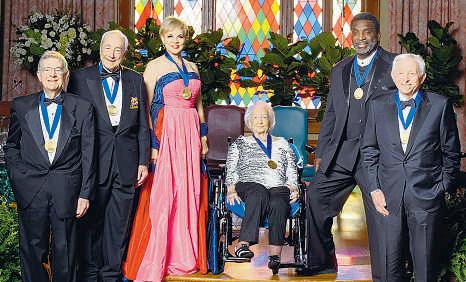

Education. His passion for LSU athletics shines through in his long-standing role as the public address announcer at Tiger Stadium and the Pete Maravich Assembly Center
n John H. Dalton, appointed the 70th secretary of the Navy in 1993 by President Bill Clinton and honored with the 1997 International Security Leadership Award from the National Security Caucus. In 1977, President Jimmy Carter nominated him to lead the Government National Mortgage Association. In 2016, he was awarded the Distinguished Graduate Award from the U.S. Naval Academy and serves as an emeritus member of the board of directors of the White House Historical Association.
n The Goldring Family, who through their foundation fund nonprofit organizations in greater New Orleans whose missions encourage environmental sustainability, animal welfare, arts and culture, civil affairs, educational and recreational opportunities for children, human services, health, and Jewish causes. Bill Goldring is chairman of The Goldring Family Foundation, as well as Sazerac Company, producing more than 500 brands of spirits, many of which are sold worldwide.
n Doug Williams, who began his football
career at Grambling State University, mentored by iconic coach Eddie Robinson. In 1978, Williams made history by being selected 17th overall in the NFL draft by the Tampa Bay Buccaneers, becoming the first African American quarterback chosen in the first round. Later, he joined the Washington Redskins (now Washington Commanders), where he led the team to victory in Super Bowl XXII in 1988. From 1998 to 2003, and then again from 2011 to 2013, Williams served as head coach at Grambling. He is an inductee of the College Football Hall of Fame, the Tampa Bay Buccaneers Ring of Honor and the Washington Commanders Ring of Fame. The Louisiana Legends Auction, featuring more than 90 items, including items donated by the honorees, is open until 11:59 p.m. Sunday at lpb.org/auction The auction showcases original works of art, including pieces by Clementine Hunter, unique experiences, including a turkey hunt with LSU and NFL greats Bo Harris and Kevin Mawae, an LSU Golden Girls Experience, suite tickets to a Dallas Cowboys preseason game, Andrea Bocelli VIP experience and much more. Visit lpb.org/legends to learn more about Louisiana Legends.

Red Stick Kiwanis Club
Levar Robinson, the founder and chief executive officer of Fathers On A Mission (FOAM), spoke to the Red Stick Kiwanis Club at Lake Sherwood Village Retirement Community on April 9. Robinson talked about his work to advocate a lasting impact on at-risk youth with a deep commitment to support fathers and father figures through ongoing training sessions on personal development life skills, financial literacy relationship skills building and responsible fatherhood. Shown are, from left, kneeling, Oni Watson and Dee Green; standing, Angelle Davis, Club President Cherryl Matthews Matt Robinson, Jim Ragan, Clarence Lawson, guest speaker Robinson, Mike Nichols, Gary LaBauve, Wayne Jamieson, Jerry Hammons and Phil and Diane Divincenti.



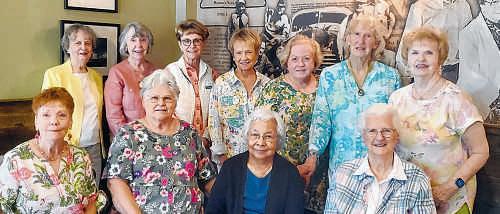
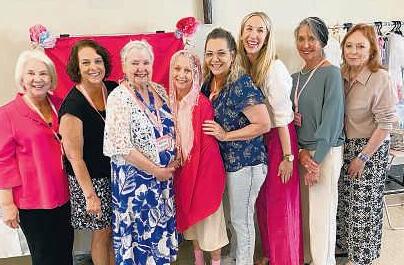
BY LAUREN CHERAMIE Staff writer
When the stars align, abouteight months out of the year,the Milky Wayand its 100 billion stars can be seen in some form.
In thespringand summer,that includes the early morning hours March through May and between dark and midnight Junethrough August.
Some datesthat have thepotential to be great times to see the Milky Wayinthe next few months are:
n May 19-28
n July 22-31
n Aug. 14-20.
However,tobest view the Milky Way, afew factors come into play
Thesky must be devoidoflight pollution, or brightening of the nightsky causedbystreetlights andother man-made sources.Most people have to drive out of city limits to find this.
Additionally,afull moon can drown out the faint stars in the sky, so it’sbest to pick atime during a new moon when the moonispositioned between the earth and the sun. During this time, there’sless moonlight interference.
To help stargazers know how bright the sky will be in agiven location, the Bortle scale and its nine levels are useful. Class 1includes the darkest sky someonecan find, while class 9isthe most light-polluted sky.For most people, aclass 3or4 locationisdark enough to see stars.
In Louisiana, Dewey Wills Wildlife Management, Kisatchie National Forest and Tensas River National Wildlife Reserve typically fall under the Bortle scale class 2. The closest class 1locations are in Texas at Big Bend National Park and Greater Big Bend Dark Sky Reserve.
Other stargazingplacesinLouisiana include:
n Alexander State Forest
n Black Bayou NationalWildlife Reserve
n Catahoula Lake
n Chemin-A-Haut StatePark
n Cypremort Point State Park
n Highland RoadPark Observatory
n Lake D’Arbonne State Park
n Lake Fausse Pointe StatePark
n North Toledo Bend State Park
n Palmetto Island StatePark
By ChristopherElliott

n Rockefeller National Wildlife Refuge
n SouthToledoBend State Park.
DeweyW.Wills Wildlife Management
The Louisiana Department of Wildlife andFisheries manages the four campsitesonthis remote wildlife management area.
Severalgamespecies are available tohuntatDewey W. Wills, includingdeer,squirrel, rabbit, raccoon,waterfowl andwoodcock,and there are fiveconcreteboat ramps for recreational and commercial fishing.
Thesite is also great for birding, with avariety of songbirds,wading birds and shorebirds
KisatchieNationalForest
With more than 600,000 acres, KisatchieNational Forest is the state’sonlynational forest. It’s located in sevenparishes in central and northern Louisiana.Someof

the recreational eventsinclude eagle nest cams, off-highway vehicle trails, hunting and fishing. TheLongleaf VistaTrailleads
to overnight camp spots. Set up a telescope in theparking area or venture down to the bluffside gazebo to seethe stars.
Tensas RiverNationalWildlife Reserve
Thousands of people visit Tensas RiverNational Wildlife Reserve each year to take part in hunting, wildlifephotography and observation and environmental education. There are morethan400 species of mammals, birds, reptiles, amphibians and fish on the property, which was establishedin1980. The refuge includes the state’slargest population of the Louisiana black bear
While the U.S. Fish and Wildlife Service-maintained grounds close to visitors two hours after sunset, ahandful of paid campgrounds on the refuge’sborder offer overnight chances to see the stars.
Writer Jessica Fender contributed to this report.
Email Lauren Cheramie at lauren.cheramie@theadvocate. com.
Irecently booked aroom through Hotels.
com near Glacier National Park in Montana. Ireceived an email from the property saying my reservation wasn’t guaranteed and my card hadn’tbeen charged

Christopher Elliott

The hotel asked me to call about my reservation, but the answering machine said the owner wasinlaborand wouldn’tbeable to respond to messages My credit card wascharged for the room Itried calling the hotel multipletimes, but the answering machine messageremained the same. Other numbers provided

















































were either busy or disconnected. Hotels.com wouldn’thelp, simply forwardingmyconcerns to the property Ifeel like I’ve been scammed. Ijust want my $169 back and to warn others about this place. Can youhelp me? —Steve Eliason, Minnetonka,Minnesota
The hotel should have honored your booking —and if it couldn’t Hotels.com should have refunded your $169.Whenahotel can’thonor areservation, the booking site is obligatedtofind you comparable accommodations or to return your money. That’sa standard practice in the travelindustry































































This is the first timeinmyyears of advocating cases thatsomeone has closed ahotel to give birth. I hope mom and the baby are OK and thatthe hotel opens again soon. In this situation, you did everything rightbytrying to contact the property and Hotels.com. Youalso kept adetailed paper trailofall correspondence, including emails and phone call records.This documentation shows thatyou gave the systemachance to resolve your problem.
Most importantly,the correspondenceshows that thehotel sent youanemail saying that your
























reservation wasnot confirmed and thatyou wouldn’tbecharged. So someone —either the hotel or Hotels.com —really screwed up here.
If your initial attempts fail, considerescalating the issue to asupervisor or executive. Youcan find contact information for Hotels. com executivesonmyconsumer advocacy website,Elliott.org.
If Hotels.com hadn’tbeen able to help, and if you hadn’treached out to me, you could have disputed your Hotels.com charges. Under the Fair Credit Billing Act, your credit card can refund you for an
item you paid for but didn’treceive, like ahotel stay Icontacted Hotels.com on your behalf. Arepresentative acknowledged the unusual circumstances of your case and agreed to issue afull refund. Youreceived your $169 refund from Hotels.com, along with a$50 credit for future bookings.
Christopher Elliott is the founder of Elliott Advocacy,anonprofit organization that helps consumers solve their problems. Email him at chris@elliott.org or get help by contacting him on his site.




















Continued from page 1D
Recently, I attended six public gatherings in a week. Last month, my wife and I danced at a friend’s wedding, savoring the joy of the crowd. Meanwhile, my long-ago promise to stop my griping in exchange for better days has, as you might expect, been a bit of a bust.
I continue to quibble about little things — the twinge in my shoulder the squirrels in our flower bed, the lawnmower that has, once again, failed to start. Even so, I’m trying to tell myself that this anxious spring in the life of the country whatever its challenges, has been the kind of season my pandemic self could only have hoped for
Email Danny Heitman at danny@dannyheitman.com

MICHAEL JOHNSON
STAFF PHOTO By
American Idol finalist John Foster rides along Vaughn Drive for a special visit to Brusly High School on Wednesday in Brusly
Continued from page 1D
and clean-cut demeanor, not to mention his throwback performances (like his Elvis tribute). Younger fans are drawn to his energy, style and relatability — a college student chasing a dream.
In Louisiana, folks see him as one of their own, carrying culture and pride into a national spotlight. Here are five things to know about the rising singer:
1
He was co-valedictorian of his high school class.
Foster graduated as covaledictorian of Brusly High School’s Class of 2024, alongside Emrie LeBlanc.
2
He just finished his freshman year at LSU
Foster is a biology major at LSU and has plans to attend medical school His goal: to become an oncologist.
3
His family owns a Cajun meat market.
Foster’s grandparents started Benoit’s Country Meat Block in 1982. The West Baton Rouge Parish store has been open since 1982 in Addis, where they sell Cajun classics like boudin, stuffed deboned chicken, beef jerky and boudin balls. The family recipes are rooted in Foster’s grandparents deep Cajun roots in Lawtell and Church Point. His personal favorites? Pepper jack boudin balls, crawfish étouffée and chicken and sausage gumbo.
4
He’s the middle child and an only son Foster has two sisters: Elizabeth, 29, and Presley, 4. His younger sister was named in honor of Elvis Presley — fitting, given his energetic rendition of “Jailhouse Rock” on “American Idol.” Foster is named after his father and grandfather; his full name is John Foster Benoit III. He has many cousins, aunts, uncles and other relatives. Many in his family have traveled to Hollywood to cheer him on in “American Idol.”
5His girlfriend is a former cheerleader Foster has been dating Brooklyn Bourque, a former Brusly High cheerleader, for about a year
How to vote you can vote up to 30 times during Sunday’s live show (from 7 p.m. to 10 p.m.) to help Foster win American Idol.
n Text 13 to 21523 (up to 10 times)
n Vote at americanidol.com (up to 10 times)
n Vote on the American Idol app (up to 10 times)
Email Jan Risher at jan. risher@theadvocate.com

Continued from page 1D
raccoons), found skating in 2016 as a way to meet people when she moved back to Baton Rouge after some time away The next year she had to be off skates for four months due to an injury and decided to spend the time founding the junior league.
“When I started skating, I really found a community of people who I felt like really supported me,” she said “I just kept thinking, if I had this when I was a kid, my life would’ve been so much different in high school.”
For the uninitiated, roller derby is played on an oval track between two teams of five skaters each. The skaters try to make a way for one designated player, called a “jammer” on their own team, to pass the other skaters and score points while also trying to protect their own jammer From the outside, it might look like chaos, but there’s strategy and lots of technique involved.
That being said, for most kids, youth roller derby starts with getting lost on the way to practice. The nondescript warehouse that they
Continued from page 1D
Andrade said “It’s not a Cajun French word Why is it only isolated to the boundaries of New Iberia? Where did it come from, and why did it stick?”
A regional riddle
The question sparked what may be the most elaborate game of telephone in Curious Louisiana history — with more than 17 people in the chain of calls. Each conversation provided at least one more detail and the name of another woman who went to Mt. Carmel Academy in New Iberia with a critical piece of padookie information.
It also required multiple points of clarification.
First, Mt. Carmel Academy was a Catholic girls’ school that operated in New Iberia from 1870 until 1988. It was run by nuns of the Congregation of Our Lady of Mount Carmel. Many of its tightknit group of alumni remain in close touch, and the school plays a critical role in the world of padookie lore.
Secondly many in St. Martin Parish and some in Vermilion Parish also use the term padookie to refer to ponytail holders.
Third, depending on the generation padookie could refer to only the double loops of elastic string, each having a round bead that overlapped the other to secure hair There is a general consensus that, originally, “padookie” only referred to those types of ponytail bands. However, in the 60+ years of documented usage of the term, many now use it as a catchall term for any ponytail holder
Most people who use the term admit they have no idea where it came from. It’s simply what they’ve always called ponytail holders — and they’ll fight for its place in the lexicon.
Generational endurance
Joy Blanchard, who teaches education at LSU, sits firmly in the St. Martinville padookie camp.
Now 47, Blanchard remembers hearing the word “padookie” sleeping over at a friend’s house, but she also remembered her mother using the word. Her mother, Rita Blanchard, is 84.
“It is padookie, and that’s the only word I ever heard, but I don’t know where it comes from,” said Rita Blanchard. “My oldest daughter was born in ’63, and
practice in is a little run-down, has no air conditioning or heat and is definitely not well marked. To this day Lacy still has no idea how she got a group of parents to bring their kids there in the beginning.
But inside the unassuming space is where the magic happens.
At the beginning of practice, the skaters stretch as parents chat while sitting on old church pews, donated couches or chairs. Then, they start to skate along the track marked with bright pink tape
Some kids fall, others are shaky at first and then lean forward, confidently crossing one leg in front of the other Still, others skate as if they’ve been doing it forever, effortlessly gliding and helping other less-experienced skaters.
Unlike other sports where kids are grouped by age, roller derby kids are grouped by skill. For those who don’t know how to skate, there’s a beginner class for the fundamentals. Then, there are three levels. In level one, they learn how to jump, how to make sharp turns and basic hits or pushes. In level two, they learn to take a hit and keep on skating and the basic maneuvers that they need to make contact with other skaters while still following rules. In

when her hair was long, we made a ponytail and used a padookie.”
That said, Susan Latiolais Tauzin, who is 79 and grew up on the levee in Catahoula in St. Martin Parish, said she only used the word “padookie” as a word to replace “thingamajig.”
“It’s kind of a nonsense word. In my circle, it represented something silly,” Tauzin said. “I’ve never seen it used specifically It was a catch-all jar.”
A cousin from Lake Providence
One theory holds that the word was brought to the deMahy family home in the summer of 1966 by a cousin named Beth, who was from Lake Providence — she told a group of fellow 12-year-old girls that the elastic hair ties with beads were called “padookies.”
Carmen deMahy Nicholson and her sister, Marie deMahy Rathe, have no clear memory of the incident.
“But then I don’t remember some things that happened last week,” Nicholson joked. “But I was gone and already married in the summer of ’66. I don’t know where it came from, but I do know that padookies were the ones with the balls.”
The cousin from Lake Providence appears to be Beth Howington Malone, now living in Reno, Nevada. She did spend weeks with her deMahy cousins in the summer of 1966 and was 12 years old at the time.
At first blush, Malone had no recollection of the word “padookie,” but she wondered if her younger sister Katherine Sandifer, now living in Florida, would remember “I had to be reminded of what we called them, but now it’s com-
level three, they’re playing the full sport. They learn strategy and play by the same rules that adult roller derby players do.
In the process they take on derby names — often pun-based monikers that reveal a little about the skater, their interests or skills. It’s a tradition within the sport, but it has a function too.
Off the track, they might be “Hope,” “Annie” or “Dandi,” but when they’re skating around, they inhabit a new persona. They’re “Hell on Wheels,” “Eagle Eye” and “Spewlia,” and there’s a new confidence and community that comes with it. Among the skaters, many don’t even know each other’s government names. Jess Everhart, secretary of the league and parent to three skaters, said that when her daughter started, coaches thought she was nonverbal because she was so quiet. Now she speaks up and gives directions on the track and communicates with other skaters about where they need to be.
“I don’t think the confidence level that my kids are at would be the same without roller derby,” said Everhart. “It’s given them that gift across the board.”
For Eli Carr who is trans, the
ing back,” Sandifer said. “Beth is six years older than me. I was only 6 years old that summer She was 12. I called it whatever my older sisters called it.”
Curious, Sandifer called other cousins in Lake Providence to ask if they remembered the word. At least one cousin was still very familiar with the term.
“As an adult, I had short hair from college to now,” Sandifer said. “As I’m wearing my hair longer I was saying the other day, ‘What are these things called?’ Now, it will be a padookie. It will regain its name.”
Padookie capital of the world?
Katy Shae Svendson, who grew up in New Iberia and went to Mt. Carmel with some of the deMahy girls, only knows ponytail holders to be called padookies.
“I have one on right now,” Svendson said. “First, they were like the ones shaped like a number 8, a hair tie. That’s what I called padookies.”
These days, she calls all hair ties and ponytail holders padookies.
And how long has she called them that?
“Sixty-four years,” Svendson said. “Ever since I met one. Maybe New Iberia is the padookie capital of the world.”
She even wondered if the word could have some African or Caribbean origins and suggested calling her friend, Becky Owens. Owens is an anthropologist who also went to Mt. Carmel.
“Supposedly, it started in New Iberia,” Owens said. “You should call Phyllis Mata. She seems to know a lot about it. It may have gotten started in her class at Mt. Carmel.”
Mata has written a tribute to Mt. Carmel published in The Daily Iberian, in which she mentions three 1970 graduates of the school who had a spend-the-night party in the home of Courtney Viator Louvier The other two girls were Annette Viator Clifford and Mary Beth Bourgeois. Other girls in attendance were Tere Ramos Thomas, Suzette Buford Armentor Sally Molbert Angers and Bonnie Ferguson Segura.
“They were sitting on the floor reading album covers and eating macaroni and cheese and listening to Otis Redding with rollers in their hair when Courtney asked one of the girls to hand her something, but instead of calling it a whatchamacalit, she called it ...,” Mata writes. The girls, according to Mata,
Skaters hold on to each other while doing laps around the rink during Red Stick Roller Derby Juniors practice on April 18.
youth roller derby is the place where he has found community and made queer friends his own age
He said it was the first time he saw queer people older than him leading the lives that he wants to live.
“It was eye-opening, and it definitely saved my life,” he said.
After starting in 2022, he quickly progressed through the levels, and in a little less than a year, he started competing on the travel team He goes by the derby name “Edgar Allan Toe Stop.”
“There’s a lot of queer kids, and there’s a lot of queer adults playing the sport,” he said. “It was really my first introduction into seeing queer people — like I can live this long and still be happy This can be my life, and I can still be accepted.”
Pepper Hobbs, the skater who tried lots of other activities before roller derby, is a level 1 skater who goes by “Fireball” now Her mother said that even if she never skates competitively, the whole experience has been worth it.
“I’m just so excited for her to be moving her body in a supportive environment and meeting other kids,” she said.
For more information about joining the Red Stick Roller Derby Juniors, visit redstickjuniors.site.
went to school Monday morning and were visiting with other friends. The group was known for inventing words and somehow assigned the word “padookie” to the figure-8 shaped hair tie.
“It spread like wildfire through the hallowed halls of Mt. Carmel and way beyond,” Mata writes, adding that she doesn’t know anyone from the area who doesn’t use the word.
Multiple friends who were a part of the group remember the incident and attribute the word padookie to either Louvier or Clifford, but did not want to be quoted in the article.
Louvier now lives in Chicago and Clifford in Georgia. Neither was available for comment on the padookie incident.
A celebration of quirk
New Iberia artist Paul Schexnayder has painted multiple pieces as an ode to the New Iberia padookie, and for a while, he sold a T-shirt that simply read, “PADOOKIE: It’s a New Iberia thing.” Clai Rice, associate professor at University of Louisiana-Lafayette, focuses some of his research on contemporary theories of linguistics. Rice says perhaps part of the reason the word “padookie” has stayed local and has had staying power is its orientation in usage toward kid or teenage culture.
“We know when you learn your own home language, you don’t really know that there’s something unusual about it until you can travel away or other people come and visit you. So if you have a kids’ word, then it stays really local,” Rice said. Secondly he noted that the word itself is simply an interesting word it has a good rhythm to it and has the word “dookie” in it.
“That creates some staying power,” Rice said.
In raising the question of padookie, Andrade in Lafayette said she was a history major
“Whether we realize it or not, we are very connected by the quirks of our culture,” she said.
“In many ways, south Louisiana likes to celebrate those quirks as opposed to trying to assimilate.” Padookie, it seems, is a grand celebration of just that.
Do you have a question about something in Louisiana that’s got you curious? Email your question to curiouslouisiana@ theadvocate.com. Include your name, phone number and the city where you live.
Cornbread
Serves 10-12

Olivia Regard

With late spring grilling and picnic seasonupon us,menus arefilled with food that canwithstand theoutdoor heat and feed acrowd.On some occasions, Ihave the luxury oftime to plan amenu On otheroccasions, however, spontaneity is the drivingforce,and Imust quickly work with pantry staples to create dishestocontribute to the meal. When time is an issue,I return to aknowncrowd pleaser: cornbread. Whetherfromabox mix or made from scratch, hot-from-theoven cornbreadisalways ahit. As Southerners, we takegreat pride in our cooking, and cornbreadis no exception. Debates abound as to theingredients that make a“proper cornbread” with individuals drawing clearlinesin thesand over the inclusion ofsugarand flour
While recipesmay vary,one thing on which I think we can all agree is that cornbread needs a good, crispy crust.
The recipes below may break some of thecornbreadrules,but theoutcomeisnot disappointing. Theserecipesinclude flour,haveahint of sweetness andmay even double as dessertwith the additionoffruit and aglaze.
For the first recipe, Browned ButterCornbread builds upon abasic cornbreadrecipe but includes both asweetener (Steen’ssyrup) and flour.Donot be alarmed, however,asthe sweetness from the syrupisbalanced by the nuttiness ofthe browned butter and the tartnessofthe buttermilk. The crunchy, buttery crust is achievedbybaking the cornbread in ahot skillet/cast-iron pan. The heavy, heat-retaining material will give the crust adark colorand rich flavor, but any large ovenproofskillet will work
If youdon’thave askillet bigenough to holdall the batter, halve therecipe orbake the extra cornbreadbatter in amuffin tin. The muffins willnot have the same dark crust, but the moistcrumb is ample recompense. To branchout even more, add bits of cooked bacon, sauteedonions or shallots, chilipowderorcumin, choppedchiliesorherbs, grated cheeseorcorn.
The second recipe, BlueberryLemon Cornmeal Cake, is equally versatile
This rich and tender cornmeal cake is punctuatedbybright, sweetblueberriesand lots of lemon zest, but the recipe can easily swapout the blueberriesfor strawberries or blackberries.The cake can also be served withoutthe suggestedlemonglaze. Enjoy it as an afternoon treatoradd more blueberries and whipped cream to dress it up for dessert
Here’s my almost summer wish for us: deliciousmeals that include fresh-bakedcornbread good salted butter and sweet, connectedtime with friends or family beforethe swelteringheatof summer keeps us indoors.
1. Preheat oven to 375 degrees. On thestovetop, in an 11- or 12-inch skillet (ovenproof and preferably cast-iron),brown the butter by meltingthe butter over medium heat.Cook, swirling thepan to lightly coat the sides and bottom. The butter will begin to foam. Continue cooking and stirring slightly untilthe foam subsides and thebutter turns adeep nut brown.
2. While the butter browns, whisk together the cornmeal, flour,baking powder, saltand baking soda. Set aside.
3. Once the butter is browned,pour the butter into alarge bowl. Do not wipe out the pan. Return the pan to thewarm burner
4. Whisk themaple syrup into thebutter,then whisk in buttermilk.The mixture should be cool to the touch; if not,let cool then whisk in theeggs.
5. Fold thedry ingredients into thebuttermilk mixture and stir to combine.
6. Pourthe batter into the warmskillet.(Note: If the skillet is no longer hot, reheat it briefly on the stove fora few minutes.)
7. Bakeuntil thetop is golden brown and atoothpick inserted into it emerges clean, 25-30 minutes. Cool in theskillet for 10 minutes before serving.

Serves 12
1. Preheat oven to 350 degrees.
2. Butter an 8-inch square pan and line with parchment paper
3. Zest the2lemons into alarge mixing bowl. Add the sugarand theeggs, andwhisk vigorously until pale and smooth.
4. Whisk in thesour cream, melted butter andsalt until smooth and emulsified.
5. Whisk in the baking powder andbaking soda.
6. Addthe flour and cornmeal, andstir until incorporated.
7. Fold in 2⁄3 of the blueberries.
8. Spoon thebatter into the prepared pan. Topthe batter with theremaining blueberries slightly pressing theberries into the batter
9. Sprinkle thetop of the batter with 2tea-


spoons of turbinado sugar
10. Bake the cake until golden brownand askewer inserted comes out clean, approximately 35-40 minutes.
11. Let the cake cool slightly then gently remove the cake and allow to cool on awire rack.
12. Optional (if using the glaze): While the cake cools, makethe glaze by mixing 2tablespoons of lemon juice with powdered sugar and apinch of salt. Whisk until smooth, adding morelemon juice as necessary to makeathin but still opaque glaze.
13. Using afork, prick holes onto the top of the cake. Drizzle the glaze over the warm cake and let it set forafew minutes before serving.






























BY RIEN FERTEL Contributing writer
“Neutral Ground: New Orleans 19902005” by William Greiner, University of New Orleans Press, 96 pages.
Photographer William Greiner’s new collection, “Neutral Ground,” is four decades in the making Shot in Greiner’s hometown between 1990 and 2005, the scenescapes featured in these 85 photographs feel both eerily foreign and hauntingly familiar. Rusted signage, empty buildings and buildings consumed by cat’s claw vine take space on the pages — these photos could have been taken a century ago or last week Greiner started photographing New Orleans as a teenage newspaper reporter In college, he fell under the sway of William Eggleston, whose vibrant color palette and innovative framing techniques inspired Greiner to see photography as art. Success came quickly
The Museum of Modern Art in New York purchased several of his pieces in 1991. Soon after, his work hung alongside that of his mentor, Eggleston, in a dual exhibit at New Orleans’s Contemporary Arts Center His work can be found in collections around the world: The Art Institute of Chicago, J. Paul Getty Museum and the National Portrait Gallery in London. Today, Greiner lives in Santa Fe, New Mexico. Since leaving New Orleans, he has largely abandoned analog photography for a range of other artistic mediums: painting, collage and sculpture.
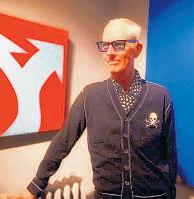
Perhaps south Louisiana is made for the camera’s eye. For here, even the air is unique,” Greiner writes in “Neutral Ground,” “soaked in humidity, which affects the light.”
This interview has been condensed and edited
How did you start as a photographer?
I started out interested in sports journalism. I was the youngest photographer in the NFL when I was 19. I was the first American to cover the Tour de France in 1981. But I went back to college and, long story short, I met two kids from Memphis, Tennessee, and they introduced me to William Eggleston, a pioneer in fine-art color photography That sort of changed my whole interest and trajectory with the medium He opened up a door. Like you’ve been listening to classical music all your life and all of a sudden you stumble onto Led Zeppelin.
I was turned on to this idea that
photography could be very personal and not have any specific meaning or purpose.
How does “Neutral Ground” fit into that long career?
It was a body of work that went on for quite a long time with no real purpose, per se, except I was reacting to my city, my hometown. Then only subsequent to Katrina, looking back and realizing, “Why did I make these pictures? How did I make these pictures? And what do they mean?”
Those photographs resonated in a different way at that point. I think I had this intuitive sense of foreboding. But then you had all this disaster-porn photography, and I didn’t want to be associated with that. So I waited. Five years turned to 10 years, 10 years turned to 15 years. So it’s a 35year book in the making.
How did you decide what to include?
This was probably culled from 10,000 photographs, which is not really that many as far as photographers go. But it’s a lot of pictures. Sometimes I would go out specifically with the idea to make photographs, but oftentimes it was just kind of happenstance. Unlike a lot of photographers that seem to need to go someplace else to make work, someplace new to them, I decided to do the exact opposite. I embrace, like Clarence John Laughlin, the photograph-at-home mentality I would keep a camera in my car, and if something caught my eye, I would just stop. I’ve worked on a bunch of — I’ll call them sub-projects. There was a group of pictures of flora and fauna. There was another group

about urban homes. For a few years, I was interested in children, because I was getting ready to have a child, and I started thinking about how children take on a personality and adult characteristics. It’s all that mashed up together
One of the images that most resonated with me is of a kid in the backseat of a cop car She looks frightened. She might be holding Mardi Gras beads. I can’t tell. That’s one thing that I like about photography Pictures lend themselves to allowing the viewer to make up their own story about what’s going on. I realized that we all bring our own preconceived notions, experiences, visual acumen to everything we look at. That specific photograph was a parade in Mandeville. This little girl’s in the back of this cop car, and she looks pleadingly at me. But actually, it’s a very festive occasion. It’s kind of weird and kind of confusing, which I like.
Recently you’ve exhibited in a variety of mediums — collage, painting sculpture. I don’t really photograph very much anymore. In part because
of where I live I’m not really interested in photographing here. And also in part because I never embraced digital technology I never liked it. It’s just so overcomplicated. Analog photography was pretty easy for me. Shutter speed, aperture, focus and film speed: four elements. So I thought, what else can I do to express myself? I really grasped collage and assemblage.
If you were to return to New Orleans today, what do you think your camera’s eye would gravitate toward?
I was in New Orleans two weeks ago for a book signing, but I don’t get back very often. I’ve thought about it, about how the city has changed and what that looks like. I don’t know if it would feel brand new, but it definitely feels a little foreign. I see the change. I could point out people, could tell if they were local or not. I could see myself photographing there again.
Rien Fertel is the author of four books, including, most recently, “Brown Pelican.”
‘Daughters of the New year’ explores the Vietnamese American experience in the South
BY RACHEL MIPRO
Contributing writer
Elizabeth Tran was standing in the snack aisle of the New Orleans Costco when she learned that her novel — something she’d worked on for five years in several states had been sold to a publisher

“It was very much a full circle moment where it felt like I was writing about New Orleans and I had finally come home, and I got to sell this book,” Tran said. “That definitely felt like a homecoming.”
“Daughters of the New Year,” released in 2022, went on to make waves for its intricate femalecentric portrayal of a Vietnamese immigrant family The book set in modern-day New Orleans, centers on the three Trung sisters and their relationship to their mother, while also delving intopolitical history faith traditions, contemporary beauty standards and sexuality Tran, one of three daughters raised by Vietnamese refugees herself, used this debut novel to explore the Vietnamese American experience in the American South.
Three years later, Tran’s novel is
generating new conversations as the One Book One New Orleans’ 2025 selection The organization seeks to promote literacy and community in the Crescent City by asking New Orleanians to read and discuss a selected book each year — essentially creating a citywide book club.
This interview has been edited for length and clarity
You grew up here in New Orleans.What was that like?
My family moved here in the ’80s. My dad worked at Touro as a biomedical engineer, and he also did the local Vietnamese newspaper, The Little Saigon News, and so growing up, we delivered the newspaper to New Orleans East businesses in Versailles and to Vietnamese businesses on the West Bank. I don’t think I really realized the importance of the Vietnamese community until I left after Hurricane Katrina in 2005 and moved to Los Angeles, and then came back. So yeah, born and raised and came back. And hopefully here to stay I have to say, I love your book so much. You hit so many different themes and it’s like a love song to New Orleans.What made you start writing it?
I was doing my doctoral research, and a lot of the books I was reading were about Vietnamese history and southeast Asian history I just really wanted to learn more about my culture, because I didn’t feel that I learned much about it at all in history classes, growing up in school, even in college.
So part of my research was just learning about my own culture

and learning about my own family history just because my family didn’t really talk about it either The Vietnam War was a very traumatic experience, and being displaced and being refugees was very traumatic for them.
Vietnam can be quite a malecentered society and has historically valued a certain kind of really inflexible masculinity It was really curious to me that some of the few historic and mythologized figures were women, and I wanted to include them in my novel.
What other influences did you kind of borrow from your own life? There’s that constant theme of alienation. Did you feel that growing up here?
Oh for sure. I think that actually the alienation came from really unexpected places. I felt like I didn’t necessarily belong in mainstream American culture, especially growing up in the ’90s, in the early 2000s. Mainstream American culture was the girl next door It was Barbie, it was a very particular kind of American experience. I didn’t see myself reflected in that. When you’re in an immigrant community you become this new thing. You’re Vietnamese American, and so I wanted to give page space to this really unique experience. Reading up about your background, I remember you said you couldn’t read a book your dad had written in his native language. Do you speak Vietnamese?
I don’t, and actually, the language barrier was a really big part of my alienation growing up, and it continues to be something that I struggle with. But I

also think that it’s important to acknowledge what happens when you have a displaced refugee community, right?
You have parents who speak a language and their children who might not speak it as fluently or not at all. And so that language gap and that language barrier was something that I really wanted to write about and explore. One of my dreams is one day to hopefully get the language back. What are you working on right now?
I’m writing a different novel, and it’s about the father figure Cuong in the book, I’m writing it from his perspective, but in 1960s and ’70s Vietnam. So it’s kind of like a companion novel to “Daughters of the New Year,” but just from his perspective.
And it’s the anniversary of the Fall of Saigon, which led to a huge flood of immigra-

tion into the city Is that something that’s on your mind?
There’s a lot of stuff happening across town, actually, that’s really exciting and interesting. I think it’s really special that New Orleans is including Vietnamese experience in the history of the city, and it’s doing it in its important institutions like The Historic New Orleans Collection and the Ogden Museum, but I also think that it’s a reminder that a lot of our immigrant community is in New Orleans East, in these neighborhoods that are often forgotten or not taken care of. And if we want to preserve the culture, all this color and wonderful vibrancy that’s brought in by our immigrants, we have to make sure that we also put our money where our mouth is, and build infrastructure and build programs.
Let’s end with the One Book One New Orleans’ selection. How are you feeling about that?
It’s really special to have the book be picked because it feels like a kind of acceptance of the Vietnamese community and Vietnamese experiences and Vietnamese American livelihood, and all those things are also part and parcel of being New Orleans. My book is a New Orleans book, and yet it shows New Orleans East, it shows the West Bank, it shows Versailles. It shows Vietnamese supermarkets in the suburbs. And those are just a part of as much of New Orleans as anything else. And so it’s really, really special for a nonprofit and an organization like OBONO to also recognize that.

TheJellicleCatswillstart gathering at LSU’sShaver Theatre whenCYT Baton Rouge opensthe musical, “Cats,” on May 22
The show is aproduction by the theater company’s Young Actors program and will feature acatcostumed cast.
Andrew Lloyd Webber wrotethe
music for “Cats,” which is based on T.S. Eliot’s1939 book of poems, “Old Possum’sBook of Practical Cats.” Eliot is credited for thelyrics, as well as TrevorNunn and Richard Silgoe.
“Cats” premiered in 1981 on London’sWest End, then moved to Broadway in 1982.
Thestory opensonone special night ofthe year,when theJellicle
cats meet at the Jellicle Ball. This is where Old Deuteronomy,their wise and benevolentleader,announceswhich of them willgoup to The Heaviside Layer andbereborn intoawhole new Jellicle life. Set among alarger-than-life junkyard playground, the story is alivewith such felinesasRum TumTugger,Mr. Mistoffelees, Macavity,Jennyanydots, OldDeuter-
THEARTSAND CULTURESCENE
Guild of Louisiana workshops:
Spring Chickens tickets
Tickets areonsale for TheSpringChickens —AnEvening of Bluegrass at 7p.m. Saturday, May24, at the Sullivan Theater, 8849 Sullivan Road,Baton Rouge. Tickets are$15.
Tickets also areonsale for thetheater’s production of “Oklahoma!”,opening June 13. Tickets are$25-$35. Visit sullivantheater.com.
‘Treasures’toopen
The “Treasures of Pointe Coupee” exhibit will run May30-June 1and again June 6-8atthe PoydrasCenter, 500 W. Main St., New Roads. The exhibit will open with areception from 6p.m. to 9p.m. Friday, May30, with food, drink,music and the “Treasures” and “PetiteGallerie” exhibits, as well as asilent auction Saturdayevents include workshops for children and adults, art markets, conversations with an artist, and the popular treasurehunt. Exhibitsare also open on the twoSundays during the“Treasures” time frame. Formoreinformation, visit artscouncilofpointecoupee.org.
ArtAvenue, Mental Health
Re
flection Of The Green Leaf will host the Art Avenue and Mental Health Awareness Expo, avibrant andimpactful event aimed at reducingthe stigma surrounding mental healththroughthe powerofartistic expression,from1 p.m to 4p.m. Sunday, June 1, at TheGuru inside Circa 1857, 1857 Government St. This immersivecommunity eventinvites attendees to explorethe intersection of creativity and mental wellnesswith morethan 15 local artistbooths, live music, food trucks and on-sitemental healthand wellness services. Admission is free. Visit reflectionofthegreenleaf.com
ArtGuild workshops Registration is open forupcoming Art
n Larry Downs,Drawing 3: Putting It All Together: This acrylics class runs weekly from 3p.m.to6 p.m. Thursdays from June 5-26.
n Roberta Loflin, Watercolor Basics
Focus on Perspectivewith City Scenes: 9a.m. to noon weekly on Saturdays June 7-28.
Formoreinformation, visitartguildlouisiana.org
French workshop
Little By Little, in collaboration with local French experts and area museums, will offer aday of French languagetours from 9:30 a.m. to 4:30 p.m. Saturday, May 31, withanoptional wine pairing dinner immediately following.Tours will be ledbyFulbright Scholar and co-author of “Parcours Louisianais” Margaret Marshall andBabeth Schlegel, executive director for the Friends of Magnolia Mound and anativeFrench speaker
This immersiveand interactiveworkshop includes tours of theLSU Rural Life Museum, Magnolia Mound Museum and Historic Site, theLouisiana State Capitol and the murals of Angela Gregoryatthe Watermark Hotel. Inaddition, guests maypurchase afour-course wine pairing dinner ledbyLevel 2sommelier and ownerofBlend Wine Bar Scott Higgins. Tickets are$185 for the workshop and $295 forthe workshop and dinner.The ticket includes transportation to museums,cheese tasting by Crafted Nibbles, all museum entries and French study materials. Wine dinner tickets maybe purchased separately for $120. Visit littlebylittle.ticketspice.com/vivela-france-in-baton-rouge or https:// littlebylittle.live/day-trips-and-events.
Summercamp
Limited space is still available forthe ARTisTRYKidsSummer Arts Camp at theHammondRegional Arts Center, 217 E. Thomas St., Hammond. Therewill be threedistinct weeklong
onomy,Skimbleshanks and Grizabella. The cast includes Calvin Carline as Rum TumTugger,Avery Perkins as Munkustrap, Berkley Case as Bombalurina,ElijahJames as OldDeuteronomy,Ella Grace Gayle as Grizabella and Madelynn Shreeman as Demeter
The show will run 7p.m. May 22 and 23, 2p.m. and 6p.m. May 24
camps in June, each focusing on adifferent artistic discipline: visual arts, dance &movementand young actors.To register, visithammondarts.org.
At NUNU
Tickets areonsale for afundraising potluck dinner, featuring livemusic by the PotLuck Trio,at6p.m.Saturday, May 24, at NUNU Arts &CultureCollective, 1510 Courtableau Highway, Arnaudville. Admission is $20. Attendees areasked to bring acovered dish. Adult and nonalcoholic beverages will be available. Fortickets, visit events.humanitix.com/ nunu-fundraising-potluck-dinner-featuring-live-music-by-the-pot-luck-trio?. Also, NUNU is showing the exhibit, “Chaosand Harmony,”featuring work by Elise Dupuis Fontenot, DavidP.Morrowand Ashley Walker through June 30. Formoreinformation,visit nunucollective.org.
In NewIberia
Celebrate Louisiana artwith aMurals &Street Art Tour of downtown New Iberia led by local artist and muralist Paul Schexnayder in partnership with Shadows-on-the-Teche. Toursare set for 9:30 a.m.,10:30 a.m. and 11:30 a.m. Saturday, May31, beginning and ending at the ShadowsVisitorCenter, 320 E. Main St NewIberia. All participants must be age 21 or older Tickets are$20 and includerefreshments. Additional programs in this series are Zebulon’sDream, 5:30 p.m. Thursday, June 19. Shadowsispartnering with the Iberia African American Historical Society to host this originalpoetry cycle by Suzanne Wiltzabout her maternal ancestor, Zebulon Richardson; and Clementine Hunter and Louisiana Folk Art at 5:30 p.m. July 17, featuring avirtual webinar with TommyWhitehead, author of “Clementine Hunter:Her Life and Art.” Fortickets or moreinformation,shadowsontheteche.org.
and3 p.m. May25inthe Shaver Theatre in the LSU Music and Dramatic Arts Building, Dalrymple Drive. Advance tickets are $19, standard; $16 for children younger than age12; and$16 for groups of 15 or more. All tickets are$22 at the door For tickets, visit cytbatonrouge. org/shows/CATS-young-actorsedition/29.
Learn how to effectively serve fire, EMS, military and police first responders. Peer support, chaplains, church leaders, nonprofit volunteers, counselors,hospice personneland anyone who hasa heartfor first responders can serve. Chaplains provide avital service.
Hostedbythe Louisiana State Police, the training will be from 9a.m. to 3p.m. on May 29 at the Louisiana State Police Training Academy, 7901 Independence Blvd., BatonRouge.The cost is $99per personplus Eventbrite serviceand processing fees. Buy four or moretickets for $74.25 per person plus Eventbrite serviceand processing fees for agroup discount.
Attendees do not need to have take the first twoclasses. This Level 3Training will equip eachstudent with practical tips, tools and techniques to provide care and support to first responders. Some of the topicsinclude healthy boundaries, tactical intervention andpsychological fundamentals of health forthe first responder For questions, contact Barry Young at barrymichaelyoung@yahoo.com or 30seconddevo@gmail.com. For more information, visit servingheroes.serveandshield.com Lights Out Initiativefor May
The Louisiana Department of Wildlifeand Fisheries is joining with partners to support the Lights Out Initiative —calling on residents and businesses to turn off unnecessary lighting from 11 p.m. to 6a.m., through May 31 during peak spring migration. Every spring, morethan 325 bird species takeflight across the continent. Thanks to the Mississippi Flyway, Louisiana is in the middle of one of the world’sgreatest wildlife migrations, but bright artificiallightscan disorient birds, leading to fatalcollisions with buildings or windows. Here’s howyou













By The Associated Press
Today is Sunday,May 18, the138th day of 2025. There are 227 days left in the year
Todayinhistory
On May 18, 1980, the Mount St. Helens volcanoinWashington state erupted, leavinganestimated 57 people deador missing.
On this date:
In 1863, the Siege of Vicksburg began during the Civil War, endingJuly4with aUnion victory
In 1896, the U.S. Supreme Court,in Plessy v. Ferguson, endorsed “separate but equal”racial segregation.(Thedecision was reversed 58 years laterby Brown v. Board of Education of Topeka.)
In 1927, in America’sdeadliest school attack, part of aschoolhouse in Bath Township, Michigan, was blown upwith explosives plantedbylocal farmer Andrew Kehoe, who then set offabomb in his truck; the attacks killed 38 children and six adults, including Kehoe,who’d earlier killed his wife. (Authorities said Kehoe, who suffered financial difficulties, was seeking revengefor losinga township clerk election.)
In 1933, President Franklin D. Roosevelt signed ameasurecreatingthe Tennessee Valley Authority, thelargest public utilityinAmerica.
In 1973, Harvard law professor Archibald Cox was appointed Watergate special prosecutor by U.S. Attorney General Elliot Richardson.
In 1981, the New York Native, agay newspaper,carried astory concerningrumorsof“an exotic new disease” among LGBTQ+ people; it wasthe first published report about what came to be knownasAIDS.
In 1998, the U.S. government filed an antitrust case against Microsoft,saying the powerful software company had a “choke hold” on competitors thatwas denyingconsumers important choices about howthey bought and used computers. (The Justice Departmentand Microsoft reached asettlementin2001.)
In 2018, a17-year-old armed with a shotgun and apistol opened fire at a Houston-areahigh school, killing eight students and two teachers.
Today’sBirthdays: Baseball Hall of Famer Reggie Jackson is 79. Musician Rick Wakeman (Yes) is 76. Musician-composerMark Mothersbaugh(Devo) is 75. Country musicianGeorge Strait is 73. Actor Chow Yun-Fat is 70. Hockey Hall of Famer Jari Kurri is 65. TennisHall of Famer Yannick Noah is 65. Comedianwriter Tina Fey is 55. Rock singerJack Johnson is 50. Heisman Trophywinner Travis Hunter is 22.
Dear Miss Manners: What’s happened to mealtime conversation?


We have friends who are perfectly capable of talking about all kinds of interesting subjects, but only so long as there is no food in front of them. If we meet at restaurantsor for meals at each other’shouses, all they ever talk about is the food. They grill (sorry!) waitstaff at length about theingredients before they order.They even ask us, if they’recoming to our house, what we plan to serve —and make not-too-subtle suggestionsfor changing the menu. Not to accommodate allergies, which Iwould understand, but just preferences.
Iwould even stomach (sorry!) all that ifthey then talked about something else during dinner Butthey don’t. Partofitiscritiquing thefood we’re eating, and if they likewhat we made, they thinkit’sa compliment to ask for therecipe while we’re eatingit.
Butthat’snot all. We have
to hear about what foods they like in general, and where they get them; which foods disagree with them, including descriptionsofdisgusting reactions; and which foods they think are bad for everybody.Wehear about their diets, how much weight they lost or didn’tlose, and the food habits of people we don’teven know.It’senough to makemelose my appetite (not sorry!).
Then there is the endless talk about restaurants —not just theone we happen to be in, but others they’ve gone to, which ones they like, which ones they don’tlike and what they ate there. Andplaces they have heard about but haven’ttried yet Iamfed up! (Sorry!)
You’ll probably tell us to get new friends. Butthese include childhood and college friends, who share our interests as well as our history.Some are work friends, who have lots to say about our respective fields. Someare theparents of our children’sfriends, who have thesame goals about improving education. There’smywalking partner,who keeps me amused. Andthere are relatives we like —aswell as afew we just have
to tolerate. In other words, they’re not just bores, and we can’tfire them and get awhole new set.
Gentle reader: There is an old rule of etiquette that Miss Manners leftgathering dust in thecupboard, because circumstances had changed, no one pays attention to it now,and she hadn’tconsidered it worth afight. Until she got your letter
The rule prohibits talking about food while consuming a meal. This even prohibits complimenting the food, which is practicallyconsidered mandatorythese days.
But the rule dates from atime when people whoentertained were likely to employ cooks. (That did not mean that they were necessarily rich; “help” was paid shockingly little.) So rather than being flattered by compliments, the host would suspect that the guest might attempt to steal the chef.
Whether or not people had fewer allergies then, guests either ate what they were given or pushed it around their plate.
The ban on food talk relieved them of being questioned or urged
Today’setiquette does require
hosts to ask in advance whether their guests have eating restrictions. But at the table, they may gently say,“I’mputting food talk off limits.”
Miss Manners’ guess is that the guests will be relieved to eat —ornot eat —inpeace.
Dear Miss Manners:I have a friend whoconstantly solicits gifts foravariety of occasions, both forherself and forher 12-year-old son. Most recently she tagged me on social media next to alink to agiftregistry forher son’s8th grade graduation.
Is this athing?
It seemsshe feels he is entitled to gifts and recognition forbeing promoted to the next grade. How should Iapproach these kinds of requests?
Gentle reader:Ofcourse it is a thing. Are you not constantly being solicited formoney and goods from just about everyone whohas your contact information?
But Miss Manners assures you that that does not makeita proper thing, nor one requiring aresponse.
Email Miss Manners at dearmissmanners@gmail. com.


Dear Heloise: Our cityhas arecycling program for cans and plastics, but there arerules thatthe items need to be clean without any food residue Since we live in the desert, Idon’t want to waste waterwhen washing these items. After dinner, Iusually washsome dishesinthe sink; then afterward,I rinseout the recyclables in this water and toss themin the recycle bin. —J.B.,Tucson, Arizona
Charging hearingaids
Dear Heloise: Iwanted to comment on PaulH.’sletter regard-
ing charging hearing aid batterieswhen theelectricitygoes out.His idea of asmall battery stationisagood one. The last twosets of hearing aids thatI have gotten came withtheir own charging stationand contained batteries. When the charging station is fully charged, it can charge the hearing aids at leastthree times without being plugged into electricity. These camewiththe hearing aids at no extra charge. Iwasn’tawarethat their charging stations had batteries until Iread the literature that came witheach setofhearing aids.Your readersmight have the solution to charging their hearing aids without realizing it, which would be thecharg-


ing station that camewith their hearing aids. If not, it might be worth it to buy one. Iwas able to keep my hearing aid batteriescharged during the recent fireswehad in Southern California so that Icould hear during the blackouts and evacuation orders that applied to my family. When Ihad hearing aids withreplaceable batteries, I always hadatleast amonth’s worth of batteries available.
J.R., Porter Ranch, California Smallfurniture assembly
DearHeloise: Alot of small furniture assembly calls foranAllen wrench or ahex key,which always comes with the assorted screw.But Ibought an Allen wrench set that comes in ahan-
dle, which folds neatly up. The handle makes it much easier to grip the wrench so that you can tighten the screwsmore easily —Tim Hammond, viaemail
Themayonnaisemethod
Dear Heloise: If you want anice, moist turkey,try this: Rub the turkey all over with agenerous amount of mayonnaise before cooking. Make an aluminum tent over the turkey and bake at 325 Ffor the calculated time. Remove the aluminum tent about 30 minutes before the turkey is done cooking, and you’ll have atasty,moist turkey! —R.C., in Colorado
Send ahinttoheloise@heloise com.















BY RICH COLLINS Staff writer
Blueflite, aDetroit-based drone manufacturer with aglobal footprint,isexpanding into Louisiana, where it has partnered with AcadianAmbulance to develop potentially lifesaving technology to deliver blood to accidentsites. The deal is one of several potential ventures in thestate forthe nearly 8-year-old startup, which
BY BLAKE PATERSON Staff writer
Jordan Losavio, co-founder of BatonRouge-based tech startup
Encore CO2, needed acustom part last month for aprototype that aims to transform carbon emissions into useful chemicals.
Alocal machine shop told her it would take nine days and $350 to make the part. Instead, she turned to amachinist 1,500 miles away at the Brooklyn, New York, headquartersofNewlab. Losavio handed over $50 and the design specifications. Twenty-four hourslater,she had theiPhonesized Teflon ring she needed for Encore’slatest test.
“When you’re astartup, you don’t have weeks to wait,” Losavio said.
“I need to be able to try something out, then say,‘Hey,pivot thisbyX percentage,’ go back to that manufacturing hub and make it again.” Avoiding those types of delays,


hasbegun interviewing potential employees for itssoftwaredevelopment office in downtown Lafayette. Anditcomes as the company is attracting the attention of local investors.
Last month,the Ochsner Louisiana Innovation Fund, which invests in health care startups, invested $250,000inBluefliteto supportits development of medical logisticstechnology. Boot 64 Ventures,a Metairie-based fund
targetingtechstartups, also has invested an undisclosed amount in the business. “These are strategicinvestors, people in aspace we want to operate in, not somejackass venture capitalist that just wants the returns,” Blueflite co-founder James McClearen saidinaninterview.
“Ochsner is investing because they believe our tech will help
ä See DRONE, page 2E
“When you’reastartup, you don’thaveweeks to wait. Ineed to be able to trysomething out, then say,‘Hey,pivot this by Xpercentage,’ go back to that manufacturing hub and make it again.”
JORDAN LOSAVIO,co-founderofBaton Rouge-based techstartup Encore CO2

BY TIMOTHY BOONE Business editor
Cornerstone Chemical Co. said it is shutting down one of the units at its Waggaman manufacturing facility, a move that will put 116 employees out of work.
In a letter it sent to the Louisiana Workforce Commission on May 5, the company said it will mothball the acrylonitrile unit on July 31, and that 71 hourly plant workers will be laid off by Dec. 31 The layoffs will occur in three batches between July 31 and the end of the year
Cornerstone said 45 salaried workers have also been notified that they will be laid off because of the plant closure. Those layoffs will also happen in the second half of the year
Acrylonitrile is used to make hard plastics, synthetic rubber and acrylic fibers that are used for TVs, phones, tires and clothes.
Matt Sokol, Cornerstone’s CEO, said in a statement the layoffs were a “difficult step” that were “part of a broader effort to streamline operations and ensure the long-term sustainability of the business.” The layoffs represent 29% of the

company’s total workforce at the Waggaman plant.
Cornerstone said the unit is being shut down for potential future use by the company or another tenant but said the timeline for bringing back the plant is unknown.
Global trend
Cornerstone cited a number of
factors in the decision to close the plant, including rising feedstock costs and an oversupply of acrylonitrile.
According to Prismane Consulting, a global chemical research firm, a plant in Bahia, Brazil, also is shutting down. Combined with the Waggaman plant, the facilities accounted for 20% of the acryloni-
trile production capacity in North and South America.
Asian plants, particularly those in China, have also played into the global oversupply of acrylonitrile, Prismane said. That’s despite the recent shutdown of a facility in Hiroshima, Japan.
Cornerstone manufactures intermediate chemicals, used to

Continued from page 1E
their business.”
Ochsner Health Senior Vice President Aimee Quirk said Ochsner’s fund invested in Blueflite because it is looking to improve health care accessibility, efficiency and outcomes, while also helping to spur economic development opportunities.
Boot 64 Managing Partner John Roberts said his fund was attracted to the company because of its potential applications
“Blueflite represents a unique opportunity, combining technology and a physical product to provide solutions to problems across the globe,” Roberts said.
Quintessential ‘garage startup’
Blueflite’s move into Louisiana comes nearly a decade after the first commercial drone flight took place in 2014 in Alaska, when oil giant BP began using unmanned aerial vehicles to survey roads, pipelines and equipment.
In the years since, the evolution of drone technology, software and regulations has enabled the commercialization of the autonomous devices in construction, agriculture, infrastructure, energy, health care and other sectors of the economy A research organization estimates the value of the global industry to be about $40 billion.
Tech giants Amazon and Google — along with California-based startup Zipline have begun using drones to make deliveries in a few states, but the vision of drones as a part of daily life is still far from reality
Blueflite, co-founded by McClearen and Frank Noppel in 2018, hopes to change that by providing a turnkey solution for big companies that want to use drone technology but don’t want to make it themselves.
The company sells hardware and software that it designs and manufactures at two facilities in Michigan and New York. It has 20 employees in five locations around the world.
McClearen described the company as the “quintessential garage startup” that, until a few years ago, was still making drones out of his house.
Now, McClearen, an Atlanta native
and graduate of Georgia Tech, will be spending time away from that home as he helps launch Blueflite’s Louisiana outpost. The firm’s new Lafayette office will focus on managing several Louisiana projects. It will be located in the Opportunity Machine startup hub, across the street from FlyGuys, a Louisiana startup that provides an online marketplace of drone services.
McClearen said the company was attracted to the area by a talent pool of software developers that would provide value at a lower cost compared with cities on the West Coast.
“We’re really stingy about opening new offices, because it’s a small company, and managing all this stuff can be a nightmare,” McClearen said. “It was a strategic decision.”
Lifesaving blood
One of the Blueflight’s main reasons for coming to Louisiana is its partnership with Acadian Ambulance, the Lafayettebased, multistate medical transportation powerhouse. In 2023, the two companies — through Blueflite’s subsidiary, Darkflite — received a federal grant to study the feasibility of using drones to deliver blood and other supplies to the scene of auto accidents and other medical emergencies.
The study was completed and submitted late last year
“If you can get blood to an accident site, you can save lives,” McClearen said. “But ambulances and helicopters don’t all carry blood because it’s such a valuable commodity and has a shelf life.”
The partners are waiting for approval to begin phase two of the project, which would mean putting the proposed plan in action in a limited way, testing delivery of blood to crash sites via drones in Louisiana. A third phase of the grant, if approved, would support full commercialization of the service.
Blueflite already is making different types of deliveries for a health care system in Michigan as part of a state-funded project. In early May, its drone pilots began delivering lab samples between buildings on a medical campus.
McClearen said he expects to learn the fate of the next phase of the Louisianabased pilot program in the next couple of weeks, and is optimistic it’s going to be approved.
“That will allow us to bring additional hardware into the state,” he said.
In addition to providing a location to manage that potential pilot program, McClearen said the Lafayette office will be the headquarters for its new software division, which makes tools for drone fleet management, inventory tracking, pilot qualification and flight data analysis.
“We started as a hardware drone company, but we’re moving pretty fast into software,” he said.
Australian mines, Gulf Coast oil rigs
McClearen said the new Louisiana office has spotlighted Blueflite’s potential for the oil and gas industry
That sector of the economy was a focus of the company in its early days; now it’s coming back to the forefront.
“We actually started the company with the idea to kill the helicopter in the oil and gas industry,” he said. “The helicopters are $3,000 an hour, and sometimes they’re flying things like a little circuit board because the whole rig’s down. It’s not like they need a drill head or something; they just need something that’s the size of a tissue box.”
A good test case for the viability of this type of delivery might be the mining industry in Australia, where Blueflite and its partners hope to convince mining companies they can save money and time by delivering small items to remote locations via drone.
Blueflite sent one of its drones to Australia so business development teams can host demonstrations He said the company has Australian connections because it has partnered with Charles Darwin University in Australia to research a hydrogen-based drone power supply The goal is to extend a drone’s range without adding weight. McClearen thinks what works for Australian mines will work just fine for Louisiana energy companies, particularly anyone that needs to get supplies to offshore rigs. He hopes to explore that possibility more with more potential Louisiana partners, including the owners of FlyGuys, the drone company across the street.
“It’s early in the relationship, but we’re thinking about going to a show together to pitch the oil and gas industry,” he said.
Email Rich Collins at rich.collins@ theadvocate.com.
make day-to-day products such as car batteries, particle board and laminated plastics at its Waggaman facility The plant is part of the company’s larger Cornerstone Energy Park, an 800-acre facility that opened in 1952. Other tenants include CF Industries, electric parts manufacturer Rohm and UBE, a Japanese firm that plans to open a facility next year that will manufacture solvents used for electric vehicles
Along with shutting down the acrylonitrile unit, Cornerstone sold off the sulfuric acid operations at the Waggaman plant to Ecovyst for an undisclosed sum in a deal that was finalized earlier this month.
Forty of the 45 employees working on the sulfuric acid side were kept onboard by Ecovyst, while some workers chose to remain with Cornerstone.
Sokol said the sale of the sulfuric acid business was part of a strategy to build “a cleaner, more modern, and resilient organization.”
With the closure of the acrylonitrile plant and the sale of the sulfuric acid unit, Cornerstone’s operations at the Waggaman plant will be down to producing melamine, used to make everything from flame-retardant foam to low-emission spray paint and urea, used in fertilizer and to reduce air pollutants
Email Timothy Boone at tboone@theadvocate.com.
Continued from page 1E
companies that Idea Village is working with can take advantage of Newlab’s lab space and equipment.
“Hopefully, there will be a revolving door,” she said. Kris Khalil, head of the New Orleans BioInnovation Lab, said he sees “tremendous opportunities for collaboration, where our biotech founders might benefit from Newlab’s advanced prototyping and expertise, and in turn, we can offer specific insights for biotech or health applications in Newlab’s portfolio.”
The Newlab facility will span 30,000 square feet and will be staffed with a team of experts in 3D printing, advanced machining and more to help startups quickly make the custom parts they need.
The site will also include a set of industrial bays — equipped with overhead cranes and fume hoods — where start-ups can build and test their prototypes. That access to machinery and industrial space is hard to come by and means that startups can focus resources on scaling up research instead of spending it on building out their own workshop.
Newlab, which calls itself a “venture platform,” also helps startups find investors, market their technologies and work with industrial partners to test out their designs in the real world.
“Newlabs’ presence here is a bridge between where we’ve been and where we’re going,” LED Secretary Susan Bourgeois said at Monday’s announcement, calling it a “milestone in Louisiana’s economic evolution.”
Why Newlab is coming to Louisiana
The global push to decarbonize the economy can be measured in trillions of dollars, Josh Fleig, LED’s chief innovation officer said at Monday’s event. If Louisiana doesn’t invest in new forms of energy production now it will cede its role in the future as a global leader in energy to places like Texas, Fleig said.
Louisiana’s massive industrial base produces an outsized amount of planet-warming emissions That “deep industrial legacy” is part of what attracted Newlabs to Louisiana, said David Belt, the company’s co-founder and CEO. “You’re sitting on one of the most strategic hubs of energy in the country,” he said.
Newlab New Orleans will initially focus on accelerating technologies across three different sectors: industrial power, carbon management and utilization, and shipping and maritime.
Newlab focuses on working with “deep tech” startups — a term for companies that are building hardware based on years of research and development.
That includes Encore CO2, which is planning to move into Newlab New Orleans once it’s built. The start-up, which was born out of research done at LSU, is developing technology that transforms carbon emissions into high-value industrial chemicals with potential applications from consumer goods to agriculture.
Encore CO2 has already demonstrated that its propriety technology works on a small-scale in a laboratory, Losavio said. It’s now trying to scale up that technology for an industrial setting. The company became a member of Newlab last year with funding from a Department of Energy grant.
Robert Twilley, LSU’s vice president for research and economic development, said he hopes Newlab’s expertise will help usher academic research into the market.
“One thing we do a great job of is generating knowledge,” Twilley said. “We don’t do a very good job of commercializing it.”
Losavio, who is pursuing a Ph.D. at LSU, said that in her many years on the Baton Rouge campus, she never once heard faculty or staff mention turning research into entrepreneurship.
“That’s a fundamental problem, and Newlab understand that’s problem,” she said.
Newlab is expected to open its hub in New Orleans by the end of 2026.
Email Blake Paterson at bpaterson@ theadvocate.com.
BY RICH COLLINS Staff writer
Scott Cowen, president of Tulane University from 1998-2014, led the one of the nation’smost prestigious schools through the unprecedented and uncharted challenges brought on by Hurricane Katrina in 2005.
The storm that swamped New Orleans sent Tulane students scattered for asemester and threatened the future of auniversity that dates back to 1834.
Cowen’swork rebuilding the school —and simultaneously helping reimagine K-12 education in NewOrleans —earned him a reputation as acapable leader in times of crisis.
Or as he puts it, he became the “master of disaster.”
In 2020, while Cowen was serving as interim president of Case Western Reserve University in Cleveland, Ohio, his crisis management skills were againput to the test by the COVID-19 pandemic. He said he used the lessons learnedfrom Katrina to steer the ship.
Cowen traces his lifelong interest in leadership to his days as high school class president in his New Jersey hometown,through his time in the U.S. Army and as an undergrad at the Universityof Connecticut.
During the half-century career in academia as aresearcher,professor and top administrator,he honed his leadership skills and, even, distilled many of the lessons he learned into aleadership class he created for Tulane. The course continues to this day
Now Cowen, 79, has written a new book, his fifth, called “Lead and Succeed.” His aim is to pass on what he’slearned as astudent, infantry officer and educatorto thenextgeneration. Cowen’s intended readers are college students and high schoolers who will be taking the reins in the years to come. This conversation has been edited for brevity and clarity
Whythis book and whynow?
Iwant to share with young peo-

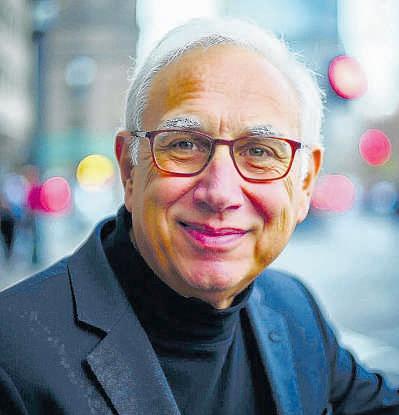
“I want thenextgeneration to learnhow to lead.”
ple what I’ve learned. Iwantthe next generation to be effective, thoughtful and moral leadersin aworld that seems increasingly lacking in such figures. I’mworried about the next generation, so Iwanted toaddress them. How didthis project fitinto your other obligations? Ihad been thinking about this fora very long time. WhenI stepped down after being president, Iwas teaching at Tulane. I asked if Icouldcreate acourse on leadership, whichI hadnever done before. The more Isaw the impact the class was having on students, Irealized, “This is working. If Ican do this, maybe somebody elsecan do it, too.” They’re still teaching that course every year at Tulane and at CaseWest

ern. Is the book adistillation of the lessons you’ve been using in the classroom? Yes, and my own experience growingup. When Iwas in high school, Iwas captainofthe football team.Iwas head of the student body,but to be honest, I didn’tknow what the hell to do half the time.During one high school speech, instead of saying what Ihad prepared, Ithrew away my notes andsaid, “Hey, listen,you want me becauseI’m cool. And, by theway,I’ll get beer in theschool.” Idon’tknow what Iwas thinking. After Ifinished, a facultymembersaid, “Mr. Cowen, one of twothings is going to happentoyou. You’re either going to be nothing or you’re going to do


In thebook, youtalkabout ahumbling momentatthe University of Connecticut when you tried asimilar speech, but it was not well received. It didn’twork at all. Icame offassome crazy guy,and they put it in the school newspaper.I learnedmylesson thereand decidedI should be alittle bit more thoughtful. Iwas trying to be abig man,not knowing what Iwas doing or whatI wantedtodofor the university.Itwas embarrassing. How much have you been out there promoting the new book? Alot morethanIthought. I’ve gotten alot of requests to speak Iwent through auniversity to releasemyother books. This time Iused ahybrid publisher,who helps you build your book. (In this model, authors pay higher upfront costs but keep more of the back-end royalties.) Not only did I learn from them,but they’vebeen so good aboutpromotion. Youhaveasection in thebook about the importance of being vulnerable.Whyisthat important?
Youhave to let people know who you are andwhat you stand for.Myviewiswhatyou see is what you get withme. There’s no bulls*** with it. It is what it is. Beware of anybody who thinks they’rethe smartest person in the room. I’d rather be the personthat says, “Hey,Ihavesome thoughts, but Ineed help.”

withthe endinmind?
If people are struggling to make aplan, I’ll say,“What does winning look like? What do you want to get done?” If they don’tknow, Iencourage them to really think aboutit. Take my book,for instance. Why am Idoing this? It’s because Iwant thenext generationtolearnhow to lead. Ialways talk about the end game. What is it youwanttosee happen, andhow canyou getfromwhere youare nowtothere?
Ilearned alot about that after Katrina.I saidtoeverybody, “This is amess, but we’re going to make this institutionbetter.” And Imeant it. We got our students out in the community to work, andthe city’spublic school systemisbetterbecause of it. Tulane is abetter institution because of it. And Ithink New Orleans is better off overall.
What were the mostimportant lessons you learned during thepandemic? To emphasize communication. Talk aboutwhat’sgoing on, what’s working, what’snot working, my expectations, other people’ssuggestions. Find out if there are silverlinings. Before the pandemic, mostfaculty members didn’t know how to use Zoom. Now we alldo. So something came outof it thatwas good What makesyou mostproudabout your time at Tulane?
Going through what we all did after Katrina was aheroic moment. Ithink most people did a very, verygoodjob. And Iwas glad that if it was going to happen that Iwas there and could do something to help. And, because of that experience, whenuniversitieshaveaproblem, they call me What’s nextfor you?
Ithink probably in another year, I’m going to sayenough is enough and spend the rest of my life hanging around anddoing whatever it is thatIwanttodo. I’ve beenatit for avery,very long time. I’m getting older.Knock wood, I’m still in good shape. I’m not at that point right now, but I’mgetting there. EmailRich Collins at rich.







For many,the anxiety around taxes extends beyond the traditional April 15 deadline.
As official notices from the IRS begin to arrive, adifferent kind of worry takes hold —the unsettling prospect of an unresolved issue, an unexpected tax bill or questions about areturn. This was the case withtwo readers calling into my Ask Post line looking for advice. One involved alate return; the other,an erroneous W-2.
First, the question about filing a late return.
Areader wanted to confirm that there are no penalties for filing alate return if you don’towe Uncle Sam. “I called the IRS to ask this question, and the woman Ispoke to refusedbasically to answer,” the caller said. “I was quite dismayed at the inabilityto get any answers on this because it seemed like asimple matter.”
Isuspect the IRS representative didn’tfeel comfortable assuringthe reader he wouldn’tbe penalized because shecouldn’t know for sure if the agency might conclude that taxes were owed, which may result in interest and penalties.
But generally,you won’tbe penalized for filing areturn late if youdon’tultimately owe any taxes. However,penalties are associated with owing taxes and either failing to file on time or failing to pay the amount due by thetax deadline.
Now to the question on the W-2 associated with identity theft which is happening moreoften
Fool’sTake:
Semiconductors, anyone?


because of the numerous data breaches thathave exposed people’spersonal information, including Social Security numbers.
“My son, out of theblue, received aW-2 from acompany he had never worked for,had never applied towork for,withhis correct Social Securitynumber,full name, and address,” aconcerned mother said.
TheW-2 listed$32,000 in income. The mother is concerned thather son, whose earnings are below the filing threshold, might be liable for taxes on income he hadn’treceived.
Unfortunately,Ihave experience withthis exact issue.
Afew years ago, someoneused my husband’sSocial Security number to get avirtual call-centerjob withanArizona company
Thecompany issued a1099-NEC —typically used by businesses to report payments toindependent contractors or self-employed individuals.The form indicated thatmyhusband had earned just over $10,000 as an independent contractor
TheIRS compareswhat it receives on documents such as W-2s or 1099s withwhat people report on their federal income taxreturns.
Iasked IRS spokesman Eric Smithabout such cases, and he toldmethat theson may get aCP2000. Such anotice might question whether ataxpayer has underreported income, leading to abill for unpaid taxes, interest and penalties. “If that happens,hecan call the phone number on that notice to explain the situation, or respond to thenotice in writing,” Smith said. With this type of fraud, you need to do several things, which themother had herson do.
Get an identity protection PIN from the IRS This six-digit number preventssomeone from filing atax return using your Social Security number.Dothis even if you don’t have afiling requirement.
Smithalsorecommended filing IRS Form 3949-A, Information Referral,which allows people to report alleged tax law violations by abusinessorindividual.
Check your credit reportfor anyemployer information you don’trecognize. By law,the three major credit bureaus —Equifax, Experian and TransUnion —mustgive you afree copy of your file every 12 months. At the onset of the pandemic, thebureaus made it even easier for people to view their credit history by offering free weekly credit reports. Although theoffer was supposed to sunset, thebureaus have permanently extended it. Here’sthe official site where you can get your reports free —annualcreditreport. com. Reportthe identity theft to the Federal
Trade Commission. File areportonline at IdentityTheft.gov or call theirhotline at 1-877-438-4338. For the online form, you will be asked how the identity thief used your information, and there’san option to note it wasthrough employment.
Lock down your credit files. Youhave aright to afreecredit freeze, also known as asecurity freeze, at all three major credit bureaus. Youcan learnhow to place a freeze on the FTC’swebsite by searching for“Credit Freeze.”
Employers may check acredit report to verify an applicant’s identity. Onceafreeze is placed, thecredit bureauscan’trelease any informationwithout your permission. The mother who reached out to me wondered what else herson should do. “I’m just so stressed by this,” she said on the call. Irecommend threeadditional steps. Contact the company. The responsibilityofresolving this matter doesn’tjust fall on you. According to theIRS, employers are responsible for filing accurate W-2s and 1099s. If the form is wrong, theIRS requires the company to correct it. Contact the Social Security Administration. Let the agency knowthat someonehas stolen your Social Securitynumberand is fraudulently using it fortheir employment.
Block electronic access to your Social Security number If you knowyour Social Security numberhas been compromised, you can ask the
Social Security Administration to block electronic access by calling (800) 772-1213. Youwill have to verify your identity if you want to remove the block.
Youcan geta “Self Lock” with E-Verify —a free online service thatthe federalgovernment providestoemployers to check if an employeeiseligible to work in the U.S. andalso protects against identity fraud. It’snot foolproof because it requiresanemployer to use the system. Individuals can also createanE-Verify account. If you use this option, youcan unlock your Social Security numberto allowanemployer to check your status.
Iknowthis is alot to do. Navigating the complexities of your tax-filing obligations and the rising threat of identity-related fraud is challenging and frustrating. As for my husband’scase, the companythatissuedhim the incorrect 1099 initially wasn’t cooperative, sending him an emailwith an appalling lack of accountability: “Unfortunately, the responsibility of resolving this matter andsafeguarding personal information falls on you as the victim.”
We responded with equal firmness, citing the clearIRS rule theyweredisregarding. Only thendid theyfinally issue acorrected 1099.
EmailMichelle Singletary at michelle.singletary@washpost. com.
recovered from recessions.

We’re in aperiod of economic uncertainty, and at times like this, pickingindividual stocks can be especially difficult. Instead, you may want to invest in exchange-traded funds—funds that tradelike stocks.
VanEckSemiconductor ETF is poised todeliver strong growth. (TheMotley Fool owns shares of andrecommendsNvidia and Taiwan Semiconductor Manufacturing. Itrecommends Broadcom.)

If you’re willing to accept some riskfor ashotat market-beating returns, check out the VanEck Semiconductor ETF (ticker: SMH), which tracks an index of 25 companies in the semiconductor production and equipment industry.Its shares of Nvidia, Taiwan Semiconductor Manufacturing and Broadcom make up over 40% of the fund’s value. All three have performed well in recent years and are leaders in the artificial intelligence boom.
The ETF has averaged annual gains topping 21% over the past 15 years. It looks well-positioned to keep outperforming the stock market, with its top stocks growing rapidly.The need for semiconductors should continue to grow,driven by AI andfuture technologies Meanwhile, these stockshave all builtformidablecompetitive advantages, which should help them continue to outperform the broadmarket. While the coming monthsare likely to remain volatile, the
Fool’sSchool: Keep up with investments
Aclassicbit of investing advice is to “buy and hold,” but we suggest buying TO hold —buying with the intention of holding for along time, while you keep up with your investments’ developments. (If astock no longerinspires confidence, there isn’tagood reason to keep holding it.)
Savvy investors often check in with their holdings every quarterwhencompanies release their quarterlyreports. Most publicly traded American businesses issue adetailed “10-K” report every year.Atthe ends of the other three quarters, they issue shorter (but still informative) “10-Q” reports. Both reportstypically offer three key financial statements —abalance sheet, income statement and statement of cash flow and sometimes additional data. These statements reveal growth rates, profit margins, cash levels, debt loads, inventory levels and more.
Many companies’ management teams also hold informative conference calls with Wall Street analystseach quarter You’ll often be able to listen to these via the company websites,
and with an onlinesearch you might even turn up transcripts of these calls. To follow theprogress of your holdings,ataminimum, read theirquarterlyand annual reports andsearch online for any news related to each company (You’llfind enlightening articles on many companies at Fool. com and elsewhere online.) Ask yourself: Is this company growing? What areits challenges and opportunities? Is it going in any new directions? Are there any red flags or troubling trends (such as debt growing faster than revenue) in thefinancial statements? Do Istill believe in thecompany’sfuture,and is it still one of my bestinvestment ideas?
Bookssuch as these can help you learnhow to make sense of financial statements: “Reading Financial Reports for Dummies” by LitaEpsteinand “The Little Book That Still Beats the Market”byJoel Greenblatt. If all this seems like alot of work, it kind of is. Fortunately you can always just opt to invest in asimple, low-fee S&P500 index fund.
Ask the Fool: The rule of 110
What’sthe “Ruleof110”? —G.L., Pasadena, California
It’sa rough guideline for how you might allocateyour assets. It’sconventional wisdom that as we age, we might shift some of our investment portfolio
from stocks to “safer” categories, such as bonds and even certificates of deposit or money market accounts. But how much should you keep in stocks at any one time? Enter the Rule of 110. According to the rule, if you start with the number 110 and subtract your age, you’ll arrive at the best percentage of your portfolio to keep in stocks. So if you’re 50, you’d be 60% in stocks. If you’re 30, you’d be 80% in stocks
Of course, we’re all different, with different risk tolerances, goals and needs, and the rule isn’tideal foreveryone. Some recommendstarting with 120 if you want to be moreaggressive. Others point out that if you’re still young —maybe 25 or even 35 —you might want to keep mostorall of your long-term dollars in stocks. How willweknowifwe’re in arecession? —N.H, LittleRock,Arkansas Recessionsare defined in different ways. The International Monetary Fund defines it as “a sustained period when economic output falls and unemployment rises.”The nonprofit National Bureau of Economic Research notes that arecession typically lasts at least afew months and “begins when theeconomy reaches apeak of activity and ends when the economy reaches its trough.”
Many consumers are worried that arecession could be looming, as the economy contracted in the first quarter.Remember though, that the U.S. has always
My Dumbest Investment:
Theworst beststock
My most recent regrettable investment wasbuying into arenewable energycompanyonaninvesting app, whenitwas listed as the best-performing stock that day. It wasaterrible buy!Itdropped by more than half. Ihopeatsome point it recovers enough so Ican break even.— G.T., online
Youmade somecommon rookie mistakes —such as being wowedbyastrong-performing investment. If astock or fund surges over aday or even ayear, manypeople might buy into it, thinking it will do that frequently.But it may wellbethe only timeitdoes so —and the much higher current price might have moved the investment into overvalued territory It’s best not to rely solely on a recommendation, but to do your own digging into any potential investment. Any company you’re interested in should have agood website with an area forinvestors, where you should find its quarterly and annual reports. If the site has little information, that’sabad sign. Youwere smart to think that renewable energy is likely to grow in prominence, but not all renewable energy companies will be great investments; some will prosper while others flame out. Finally,consider just selling this (or any other) stock if you no longer believe in the company Aim to earn your lost money back in amore promising stock.















Landon Hester hasbeen hired as executivedirector of the Baton Rouge Bar Association

He replaces Ann K. Gregorie,who retired after 38 years as executive director Hester recently was communications leadfor the Center for Planning Excellence.Beforethat,he spent four years as communications coordinator for thebar association.
He earned abachelor’sinmass communicationsand amaster’s in strategic communications, both from LSU.
St. James Place has made two changes to its leadership team.

MikeChampagne is now executive director for assisted living and memory care. Champagne has more than 15 years of experience in senior health care. He has workedon the sales, marketing and operations side.
Amy Nelson is now executive director of health care.

Nelson has been amember of the St. James Place leadership team since 2019, when she was hired as director of assisted living. She has worked in longterm care since 2006.
She earned abachelor’sinmarketing andamaster’sinbusiness administration, both from Southeastern Louisiana University

Ochsner Health has added four new orthopedic and sports medicine providers.
Joseph Halphen practices ortho-
logical sciencesfrom Franciscan Missionaries of Our Lady University and abachelor’sinphysician assistant studies from Louisiana State University Health Sciences Center in Shreveport.
Lindsey Thompson is afamily nurse practitionerspecializing in orthopedic medicine at OchsnerHealth Center-Prairieville an dO chsner Health CenterGonzales

She earned a bachelor’sinnursing from Nicholls State University and amaster’sinfamily nursing from the University of South Alabama Patrick Arcement practices orthopedic medicine at OchsnerHealth Center-Denham Springs and Ochsner Orthopedics and SportsMedicine Institute at Elite Training Complex-Burbank.

He earned amaster’s in physician assistant studies from Our Lady of theLake College, now Franciscan Missionaries of Our Lady University
Callie Amedee practices orthopedic medicine at Ochsner Medical Complex-The Grove.

She earned a bachelor’sinkinesiology and amaster’sinbiologymedical sciences, both from LSU and amaster’s in physician assistant studies fromMississippi College.
TiffanyFranklin hasbeennamed vice chancellor for extension and outreach at the Southern University Agricultural Research and Extension Center

Franklin is a program specialist for the U.S. Department of Agriculture’sOffice of
Food and Agriculture and associate youth specialist andprogram leader for 4-H andyouth development at the Southern Ag Center
She earned abachelor’s in therapeuticrecreationand leisure studies,a master’sinpublic policy and programmanagementand adoctorate in publicpolicy, allfrom Southern University
Raquel SquareAyles hasbeen named associate vice chancellor for extensionand outreach.

Ayles serves as Southern Ag Center’sYouth Development Program leader and STEAM specialist. Before theAgCenter,she was chief academic officer of the AlgiersCharter School Association and superintendent of Charter Schools USAin Louisiana.
Sheearned abachelor’sinelementary education, amaster’s in education administration and supervision andadoctorate in public policy,all from Southern University

Stefan Pasiakos has joined thefaculty of Pennington Biomedical Research Center as professor anddirector of human performance optimization Pasiakos most recently served as director of the National Institutes of HealthOffice of Dietary Supplements. He held several senior leadership positionsatthe U.S. ArmyResearch Institute of Environmental Medicine from 2009 to 2023 wherehefocused on military nutritionand operationaleffectiveness.
He earned abachelor’sinhuman performance from Southern Connecticut StateUniversity,a master’sinexercisephysiologyfrom Adelphi University anda doctorate in nutritional science from the University of Connecticut. Pasiakosspent more than eight years as an ArmyMedical Service Corps

MagnoliaCommunity Services as facilities
director
Stevens has nearly 15 years of experience in facilities management and previously served as facilities director for Wynhoven Healthcare.
Paul Babineaux has joined Gordon Arata as an associateinthe New Orleans office. Babineauxjoins thelitigation team where he willworkona range of matters, including con-

struction, energy and general commercial litigation He previously practiced at an insurancedefense firm andserved as an assistant attorney general in the Civil Litigation Divisionofthe Louisiana Department of Justice. He earned abachelor’sinmass communications-journalism from LSUand alaw degree from Loyola University New Orleans College of Law.Babineaux wasaDean’s Merit ScholaratLoyola.


Many Americansare fortunate to havedental coverage fortheir entire working life, through employer-provided benefits.Whenthose benefits end with retirement, paying dental bills out-of-pocket can come as a shock, leading people to putoff or even go without care. Simply put —without dentalinsurance, there may be an importantgap in your healthcare coverage.
When you’re comparingplans ...
may limitthe numberof procedures —orpay forpreventive care only.
Look forcoverage with no deductibles. Some plans mayrequire you to payhundredsout of pocket before benefits are paid.
Shop forcoveragewithnoannual maximum on cash benefits. Some planshaveannual maximums of $1,000.




















































































Anyone knowingthe whereabouts of TommyB.Doise please contact attorney LarryMcAlpineat225-3171956. 141429-May17-19,








































































































































































































Meet with an Install Designer Completethe In-Home Assessment -Location of generator -Sizerequired -How it works -How install happens -Qualify for financing -Answer questions
Receive aWritten Quote -Location of generator -kWsizer report -Install details -Total Price
Schedule Installation -Pick install date -Pay Down Payment -Sign Agreement













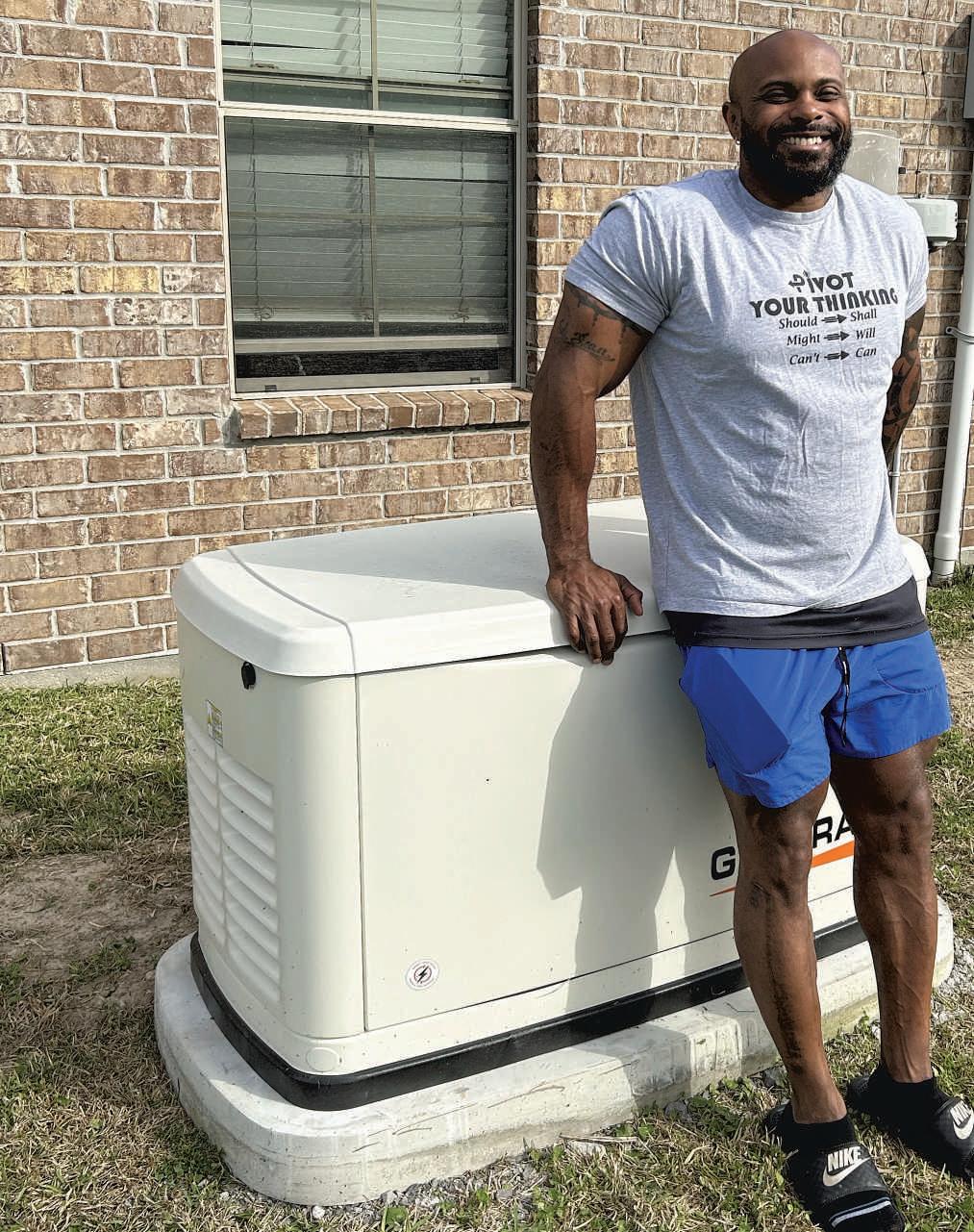








BY SHANTELLGOMEZ
Contributing writer
According to many sources, most Americans spend more than six hours a daylooking at screens—and thenumbers are rising. Taking abreak from screens is more importantthan ever.
In 2023, the Pew Research Center conducted astudy that foundnearlyhalfof teens use the internet “almost constantly.” That’s roughly double the 24% of teenswho used theinternet at this rate in the 2014-2015 survey
According to researchatthe Centers for Disease Control and Prevention
high levels of screen time have been linked with adverse health outcomes, including poor sleep habits, fatigue and symptoms of anxietyand depression
But it’snot just ateen or Gen Zproblem, even adults who grew up without technology strugglewith self-regulation when it comes to screen time —the effects on children who have only known to rely on their screens are worse.
Dr.Katie Fetzer,a mental health counselor who has been practicinginLouisiana for 15 years, said there is acorrelation between screen timein youth and building empathy
“There’sa longitudinal study National Institutes of Health is doing, specifically measuring the brain —the adult, the child and adolescent brain —for those who are exposed to screen timemedia,” Fetzer said. “They’re seeing aweakening in the neurological part of the brain where empathy is built.”
Adigital detox can provide amuchneeded break from the cycle of self-

According to research at the Centers for Disease Control and Prevention, high levels of screen timehavebeen linkedwith adverse health outcomes,including poor sleep habits, fatigue and symptoms of anxiety and depression.
sabotage and offer afresh perspective, allowing people to look up andengage with the world.
The benefits of adigitaldetox are many.According to aUCLA study,preteenswho hada five-daybreak from screens were much better at reading people’semotions(nonverbal skills) than children who continued using screens.
Waytoreduce screen time include:
n Trya mini digital detox during a time when it is less necessary or tempting to be connected to work,perhaps over aweekend.
n Enlistsupport. Tell friends and fam-

ily about going offline.
n Dig out acamerasothere’snoreason to grab aphone.
n Go outside —without aphone.
Stepping away from devices, even for aday,can reduce stress, better sleeping habits, enhance relationships and make way for more activities in the day
According to theNationalLibrary of Medicine, 92% of Americans use their phones before bed, which disrupts sleep patterns. The blue light emitted from devices suppresses melatonin, the
La.schools roundout firstyearrestricting cellphoneuse
BY JANRISHER Staff writer
As Louisiana wraps up its first school year under anew statewide cellphone ban, someeducators say they’re witnessing something they haven’tseen in years: students talking to each other
While the cellphone ban enacted before the 2024-25 school year hasn’t been perfect,most educators sayit’sa stepinthe right direction.
In July 2024,Louisiana became one of at least nine states with tough restrictions on the use of cellphones in schools.
LouisianaSenateBill207 states that “no students shall possess, on their person, an electronic telecommunication device throughout the instructional day.Ifastudent brings an electronic telecommunicationdevice in any public elementary or secondary school building or on thegrounds thereof during an instructional day, theelectronic device shall either be turnedoff andproperly stowed away forthe durationofthe instructionalday or prohibited from being turned on and used during the instructional day.”
The phone ban came after years of mounting concerns. For more than adecade, teachers have been navigating classrooms in which students are creating TikToks, scrolling, andgaming instead of doing classwork.
As thefirst school year under the cellphone ban comes to a close, many Louisiana educators say they are seeing thepower of change firsthand.
Jean-Luc Billeaudeaux,a teacher at Lafayette High School with 21 yearsofexperience, says the cellphone ban has been apositive move. He says, in this school year,hehas seen moreinteraction among students at lunch and in between classesthaninprevious years as phone usage steadily increased.
“The last few years, before the statestepped in,weredifficult with phones in class,”Billeadeaux said. “Each classperiod, I found myself addressing phone useduring instruction.And many times, parental contacts werenonfactors, student behaviors rarely changed.”
Billeadeauxlaments the necessity of the state’sinterventionbut saysafter an almostcompleted school year withthe ban, he believesthe positivesoutweigh the negatives.
Not allstudents say thephone banhas made abig difference. Some, like 16-year-old Alex Martin, ajunior at Comeaux High in Lafayette, saytheywerealready less reliant on screensinsocial settings.
ä See BAN, page 2X


Spanish-speaking health care provider celebrates 52-year, multigenerational legacy
BY MARGARET DELANEY Staff writer
The Mendoza family has been providing health services in pediatric and family care for the Kenner community for 50 years, in both English and Spanish. Now the Mendoza Medical Clinic, plans to expand the business (and keep it in the family). In 1965, the Mendoza parents immigrated to New York from Honduras. Dr Roberto Mendoza, who had completed medical school at the Unversidad Autonoma de Medicina de Honduras, set his sights on becoming a pediatric doctor in the United States.
Dr Mendoza got his neonatology
certification at the Bronx-Lebanon Hospital in New York City
While on a trip to Walt Disney World in Florida (Roberto Mendoza was well known for being a Disney fanatic), the family spent some time visiting friends in New Orleans during Mardi Gras season.
Roberto and Mirna Mendoza instantly fell in love with the city, according to their daughters.
“He came home to West Virginia from his trip and said to us ‘I found the perfect family atmosphere. We’re moving to New Orleans,’” said Peggy Mendoza, the daughter and operations manager at the Mendoza Medical Clinic in Kenner
Dr Mendoza was inspired by the connection between Honduras and New Orleans. He sought to fill a gap in the city: a Latin physician for the Latin community
In 1973, 52 years ago this month, Roberto and Mirna Mendoza, real entrepreneurs according to their daughters, established a private practice in the city.
“Our parents really believed in the American Dream,” Peggy Mendoza said.
Originally, the family had two locations — one in New Orleans
and one in Kenner However, as Dr Mendoza got older, his family encouraged him to downsize and focus on one clinic.
In 2011, Dr Mendoza died. His wife and family had to wrestle with the future of the clinic.
“We wanted to keep my dad’s legacy and his approach to the practice and how our providers helped patients,” said Peggy Mendoza.
“I didn’t realize how much of a privilege it was to be at the clinic every single day with my dad,”
Minny Mendoza Lavelle said, the current family doctor at the clinic. “Who’s better to take care of your business than your family?”
Minny Mendoza Lavelle followed in her mother’s footsteps and is a nurse practitioner at the Mendoza Medical Clinic. Peggy Mendoza, who received her master’s in business, runs the financial and business operations for the clinic as the chief operations officer
And, Mirna Mendoza, the 84-year-old matriarch of the family, is the chief executive officer and owner of the clinic. She still practices as a registered nurse at the clinic (as she has since the Kenner location opened in 1986).
Roberto and Mirna Mendoza’s sons, Roberto Jr and Ricky Mendoza, chose a different path than medicine but continue to contribute to the family business. Roberto Mendoza Jr studied civil engineering at MIT in Massachusetts but has since returned to live in Metairie. Ricky Mendoza joined the Navy soon after high school and served for 10 years. Now, he lives in the New Orleans house where family grew up
Minny Mendoza Lavelle’s daughter, Gabrielle Leche, is studying to be a nurse practitioner and plans to be the third generation of Mendozas working at the clinic when she graduates. Originally opened for pediatric

PHOTOS PROVIDED
ABOVE: The original Mendoza Medical Clinic building at 3100 Williams Blvd. in Kenner opened in 1986. RIGHT: The new and improved Mendoza Medical Clinic was finished in May.
care, the clinic expanded its services in 2011 to provide family medicine for both children and adults — and they pride themselves on offering personalized care to their community that goes the “extra mile.”
“We know that parents are much better at making sure their kids are getting their annual visit,” Peggy Mendoza said. “But sometimes as adults, we are not as good at that. That’s why we chose to put both adult and child care all together in one place.”
A new look
To bring the practice to a new age, the Mendoza family unveiled the clinic after $1 million in renovations with new exams rooms, modern restrooms, new doorknobs, windows, lights and more to bring the building up to current standards. Construction on the building ended in April, and the family has moved the practice back into the building.
Additionally the family is planning to unveil a new wellness spa near the current location of the clinic. Although no official opening date is planned, the Mendoza Med Spa should welcome new patients this year


“Our family cares for your whole family,” Minny Mendoza Lavelle said. “We get to know a lot of families — grandmas are now coming in, and we’ve treated their kids, and now their babies too.”
Mayo Clinic News Network (TNS)
People are starting to engage in outdoor activities after a winter spent largely indoors and perhaps with less physical activity than during more temperate seasons. In other climates, people may be starting an indoor, less-active time.
Gosia Wamil, M.D., Ph.D., a cardiologist at Mayo Clinic Healthcare in London, offers five tips to protect your heart when you spring into action after a sedentary period.
It may be tempting to immediately move garden equipment and furniture out of storage, start a landscaping project, go on a long
hike or engage in other physically demanding activities that were on hold due to poor weather
“Spring is a great time to reconnect with nature and enjoy movement, but it’s vital to respect your body’s limits,” Wamil says. “Even light daily activity can have meaningful benefits for heart health. Consistency matters more than intensity.”
Busy lifestyles and, for many people, long days spent working at a desk, compound seasonal challenges that may mean less activity.
Together, the lack of movement may decondition your body, requiring a bit of time before you re-
turn to more optimal shape. Stress can further compound demands on the heart.
Wamil’s first tip: Ease into physical activity gradually
“After a long season of reduced activity it’s important not to jump straight into strenuous tasks,” she explains. “Start with light activities like walking or gentle stretching and gradually build up intensity. This helps reduce the risk of injury or sudden cardiac stress.”
2. Warm up before and cool down after physical activity
“Whether you’re gardening or going for a hike, taking five to 10 minutes to warm up prepares your
muscles and heart for the activity ahead,” Wamil says. “A proper cool-down helps your body return to baseline and prevents dizziness or blood pressure drops.”
3. Listen to your body — and don’t ignore warning signs.
“If you feel chest discomfort, unusual shortness of breath, dizziness, or palpitations, stop immediately and seek medical attention,” Wamil advises. “These symptoms could signal a heart problem, especially in people who haven’t been active for a while.”
4. Stay hydrated and dress appropriately for the weather
“Dehydration and overheating can put extra strain on the heart,
especially in older adults,” Wamil says. “Wear layers you can remove as you warm up, and drink water regularly even if you don’t feel thirsty.”
5. If you have known heart disease or risk factors, talk to your doctor before starting a new physically demanding activity
“People with high blood pressure, diabetes, or a history of heart conditions should check in with their health care provider before beginning more vigorous outdoor tasks,” explains Wamil, whose tools to diagnose a variety of heart diseases include cardiac magnetic resonance imaging (cardiac MRI). “A tailored plan can keep you safe and active.”
Staff reports
The new Special Care Clinic, at 1100 Florida Blvd. in New Orleans, will treat those with any conditions that complicate receiving dental treatment including those with intellectual and developmental disabilities and or complex medical histories. The clinic opened in May, and future patients are instructed to call (504) 619-8770 to schedule an appointment.
Continued from page 1X
“I don’t really use my phone as a social network,” Martin said. “I’d rather be in person with other people.” His attitude reflects a broader Gen Z trend toward analog postcards, Polaroids, and vinyl — in a quiet rebellion against the digital saturation of their lives.
Meanwhile, Diana Lombana, a Spanish teacher at Comeaux High School, says she has found the cellphone ban beneficial
“It reduces distractions and improves focus, leading to better concentration and academic performance,” Lombana said “Dur-
The Baton Rouge Rehab Hospital, at 8595 United Plaza Blvd., will provide high level inpatient rehabilitative care to patients who have experienced mild to moderate brain damage from a motor vehicle accident, falls, tumors, strokes or other sources of trauma in their new Specialized Brain Injury Unit. This unit is the first of its kind in the Baton
ing lunch time, I have noticed that there is more face-to-face social interaction.” Hayden Lathers, who is finishing 11th grade at Liberty Magnet High in Baton Rouge, says the lack of phones has “made this year less memorable,” because students couldn’t take impromptu snapshots with friends through the school day and year On the other hand, Lathers, who is 17, believes the phone ban is “inherently good, but it’s not the best solution.” Even so, Lathers says there are absolute upsides to less phone usage in school.
“We’ve had more engagement, more activity in class with the phones down,” Lathers said. “Students are actually participating in class that’s what school should
Rouge area.
NOLA Smoke-Free Ordinance turns 10
Since enacting the smoke-free ordinance on April 22, 2015, to limit smoking and vaping in indoor and some outdoor spaces, smoking rates in the city decreased from 23% in 2014 to 19% in 2021, according to the New Orleans Health Department.
To celebrate the public health
be about, learning and engaging. If phones are a huge distraction, they should be regulated.”
Even with a statewide mandate, enforcing no-phone usage remains a challenge. Christopher Kovatch, an English teacher and basketball coach at Carencro High, says learning is back on the upswing and TikTok isn’t viewed in class nearly as much as it was. “The cellphone use isn’t gone,” Kovatch said, “but it has returned sanctity to the classroom.”
As schools across the country debate similar bans, Louisiana classrooms offer an imperfect but early glimpse of what happens when students are nudged back into the present one unplugged lunch, one focused classroom at a time.
milestone, Mayor LaToya Cantrell issued an official proclamation declaring April 22, 2025, as the “10-Year Anniversary of the New Orleans Smoke-Free Air Act Day.”
Gonzales foundation raises $625K
In support of Mary Bird Perkins Cancer Center’s Invest in Ascension campaign, the Gonzales Area Foundation announced a gift of $625,000 that will go to-
ward the Cancer Center’s expansion of its Gonzales location at 1104 W. Highway 30. The 6,000-square-foot addition will feature a 2,500-square-foot infusion suite, state-of-the-art lab, retail pharmacy new exam rooms and more. Health Notes is an occasional listing of health happenings around Louisiana. Have something you’d like to share? Contact us at margaret.delaney@ theadvocate.com.
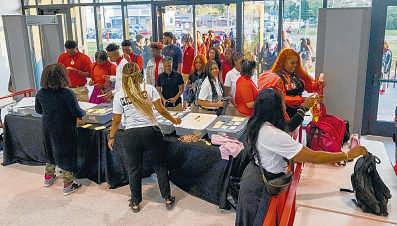

Agood salad can setthe tone for thewhole meal. At this time of year, when springis warming into afast-approaching summer, astrawberry-centric first course can be especially appealing.EnterStrawberryFieldsForever,acrisp, refreshingstartersaladfromTheEnglishTeaRoom inCovington.
Withfreshstrawberries,cinnamon-spicecandied walnuts, creamygoat cheese and atea-infused vinaigrette,thissaladhasitall:thesweet,thesalty andthespicy.Whenmadewithripe,flavorfullocal strawberries,itisveritablyirresistible Ripe,withnutrients
We are deep into strawberry seasonherein Louisiana. But buyinglocalisn’t justabout taste. Producethattravelsfewermilescanbeharvested whenit’sfullyripe,andlongertimetoripenonthe vinemeansmorenutrientdensity.
Strawberriescontainessentialvitamins,minerals anddietaryfiber,andcomparedtomostfruits,they arerelatively lowinsugar. Acup of strawberries contains about 7grams of sugar, 45 calories, 3 grams of dietary fiber andmorevitamin Cthanan orange. In addition to vitamin C, an antioxidant


Strawberry FieldsForever: Aseasonal salad that’sripe
thathelpsprotectthebodyagainst oxidative stress, strawberries are rich in anthocyanins, whichgive strawberries their red colorand can helpreduceinflammationin thebody
Awell-dressedsalad
Strawberries may getstar billinghere, but theTea-Infused Berry Vinaigrette is what really makesthissalad sing. It also checksalotofboxes:glutenfree, vegan,low carb and low sodium. It starts with freshlysteeped raspberry tea andabottle of Hanley’sStrawberryVinaigrette.
Hanley’s, based in Baton Rouge, started as afarmers market stand andnow liveson store shelves statewide.I love their strawberry vinaigrette for its simple ingredients, all of which we could conceivably have in our home pantry Because it’stea-infused, and not acream-based dressing,itkeepsforuptofourweeksinthefridge.
Goat cheese, which has about75% less sodium than traditional feta, delivers asalty creaminess that pairs perfectly with our zerosugarcandiedwalnuts.
The candied walnut recipe on thispage is one of my go-to favorites, for both its sugar-free sweetnessanditsversatility.MadewithSwerve—a natural, zero-calorieplant-based sweetener—the recipealsoworksformakingketo-friendly‘candied’ cashews,pecansormacadamias.
FindtheseandotherEatFit-approvedrecipesin theEatFitCookbook.Visitochsnereatfit.comtoget a10%discountonthebook’ssecondeditionwhen youusepromocodeADVOCATEatcheckout.
MollyKimball,RD,CSSD,isaregistereddietitian withOchsnerHealthandfounderofOchsner’sEatFit nonprofitinitiative.Formorewellnesscontent,tuneinto Molly’spodcast,FUELEDWellness+Nutrition,andfollow @MollykimballRDand@EatFitOchsneronsocialmedia. Emailnutrition@ochsner.orgtoconnectwithMollyor scheduleaconsultwithherteam
BY THENUMBERS
Thepercent
StrawberryFields ForeverwithTea-Infused BerryVinaigrette –TheEnglishTeaRoom Makes2servings 6cupsspringmix 1cupstrawberries,sliced 1/4cupcandiedwalnuts(recipe below) 1/4cupcrumbledgoatcheese 1/2cupcherrytomatoes 1/2cucumber,thinlysliced 2tablespoonsgratedcarrot 2ouncesTea-InfusedBerry Vinaigrette(recipebelow)
Inalargesaladbowl,tosstogether springmix,strawberries,candied walnuts,goatcheese,tomatoes, cucumberandcarrots.Divvyuponto twoplatesandservewith Tea-InfusedBerryVinaigrette.
Perserving:260calories,19grams fat,5gramssaturatedfat,230mg sodium,22gramscarbohydrate (15netcarbs),7gramsfiber, 9gramssugar,3gramsadded sugar,8gramsprotein
•Wantaveganversion?
Replacebutterwithcoconut oiltomakethecandied walnutsandsprinklewitha plant-based‘feta’crumble insteadofgoatcheese
•Needitnutfree?Swapout walnutsforsunflowerseeds toastedwiththesamesweetspicyseasoning.
Continuedfrom page 1X
hormone that helps induce sleep.
Reducing screen time, especially before bed, can improve thequalityofsleep.
Tea-InfusedBerry Vinaigrette
Makesnearly2cups
2ouncesfreshlybrewedraspberrytea One12-ouncebottleHanley’s StrawberryVinaigrette Steepteaandallowtocool.Inalarge bottleormasonjarwithanairtightlid, combinetwoouncesofteaandbottle ofvinaigretteandshakewell.Store refrigeratedforuptofourweeks
CandiedWalnuts
2tablespoonsbutter(orcoconutoil) 1cupchoppedwalnuts
2tablespoonsSwerveGranular 1/4teaspoongroundcinnamon
1/8teaspoonTonyChachere’sCajun seasoning
2tablespoonsSwerveBrownSugar Replacer
Meltbutterinasaucepanover mediumheat.Oncemelted,add walnutstopanandcoat.Sprinkle withSwerveGranular,cinnamon, andTonyChachere’s.Stiruntil caramelized.Removefromheat spreadontoparchmentpaperand separate.SprinklewithSwerveBrown SugarReplacer.Allowtofullycool beforeserving.
•Wantmorewalnuts?
Therecipeyieldsjustenough fortwosalads,butdouble(or quadruple)therecipeforsweet andsavorysnackinglater.
•Can’tfindHanley’s StrawberryVinaigrette? Makeyourownalternative dressingbywhiskingtogether balsamicvinegar,oliveoilanda spoonfulofno-sugarjam.
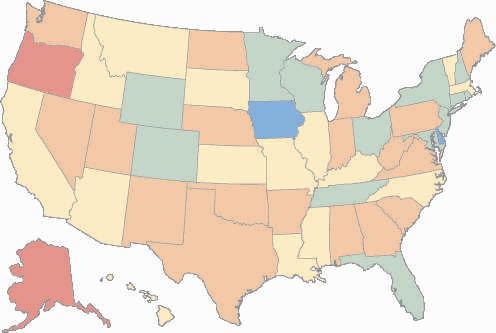

More than 40% of America reported experiencing feelings of loneliness at least sometimes, according to data collected by the United States Census Bureau’s Household Pulse Surveybetween July23 and Aug. 19, 2024.
Louisiana has the 22nd-highest rate of loneliness in the United States, with 39.91% of adults reporting feeling loneliness at least sometimes.
The Census Bureau surveyasked adults whether howoften theyfeltlonely,ona scale from never, rarely,sometimes, usually andalways. Outof 3.3 million Louisianans surveyed, just over 1.3 million reported feeling lonely at least sometimes.
The five loneliest states in America include in descending order: n Alaska with 45.10% adultsreporting loneliness
n Oregon with 44.04% adults reporting loneliness n Virginia with 41.97% adults reporting loneliness n West Virginia with 41.96% adults reporting loneliness n Utah with 41.64% adults reporting loneliness.
Theleast lonely states in America include, in ascendingorder: n Iowa with 34.89% adults reporting loneliness n Delaware with 35.62% adults reporting loneliness n Tennessee with 36.02% adults reporting loneliness n Wisconsin with 36.62% adults reporting loneliness n Newyork with 36.68% adults reporting loneliness.
Without constant digital distractions, many individuals find they are more focused, efficient and productive. Adigital detox doesn’t have to be extreme or all-ornothing. It can be small and gradual.
According to research from the National Library of Medicine, adigital detox can lead to positive changes in addiction and healthrelated outcomes,which were able to be maintained post-intervention.
Tips to reduce screen time include:
n On adaily basis, set screen-free times: Designatespecific times during theday to be screen-free. It helps createhealthier routines and reduces dependency on screens.
n Use an alarm clock so that having aphone by the bed is not anecessity
n Usetimers: Many phoneshave built-in featurestotrack andlimit the useofdevicesorapps.Set adaily reminder to take a digital break.
n Replace high-stimuli apps with low-stimuli activities: Instead of mindlessly scrolling, pick up abook, take awalkorengage in a new hobby. Activities like reading or playing amusical instrumentare great

to relyontheirscreensare worse.
alternatives that don’tinvolve screens.
n Go analog: Consider using an old-school DVD player instead of tablets or smartphonesfor road trips or family downtime.
The limited options help children collaborate on decisions, which is great for their development.
Leadingbyexample
Amanda Shea, aLafayette mother looking at adigital detox, notes that her oldest child is notafraid to callher outfor being on the phone too much. “I often find myself reachingfor my phonetodistract or avoid, which only hinders my productivity,” she said. “WhenI am overly connected to my phone, I feel moreanxious.”
TheLouisiana Health section is focused on providing in-depth, personal accounts of health in the state.This sectionlooks at medical innovations, health discoveries, state and national health statistics and reexamining tried and true methods on ways to livewell.
Shea’shonesty is areminder: Children are watching, andtheyare absorbing the habits modeled forthem
“There’sresearch showing that reading from aphysical text leads to better comprehension andretention than reading on ascreen,” said Andrea Hernandez, afaculty memberatthe Episcopal School of Acadiana in Cade. “Whenweread on paper, we create‘mental maps’ that help us recall information more effectively.Similarly,handwriting encourages summarizing rather than transcribing, which strengthensmemoryand understanding.”
Margaret DeLaney (margaret.delaney@ theadvocate.com)contributed to this report.
Health editions will also profile people whoare advancing health for the state of Louisiana. Do youhavea health story? We want to hear fromyou. Email margaret.delaney@ theadvocate.com to submit health questions, stories and more. WE WANT TO
Astrokeoccurswhenabloodvesselinthebrain“clogs”up,deprivingbraintissueofbloodandthenutrientsitneeds. BEFASTisahelpfulacronymtorememberwhengettinghelpforsomeoneexperiencingastroke,becauseeverysecondcounts.
Isthepersonunabletomaintainproperbalance?
Istheperson’svisionaffected? Aretheeyesdeviatedtooneside?
Doesonesideofthefacedrooporisitnumb?
Isonearmweakornumb?
Isspeechslurred?

Ifapersonshowsanyofthesesymptoms,evenifthesymptoms goaway,call911andgetthemtoahospitalimmediately.
Fromsymptomstotreatments, it’simportanttoknowthefacts aboutstrokes.




Astrokecanhappenatanyage.Aquarterofstrokesoccurinpeopleyounger than65,andasmanyas10%ofstrokepatientsareyoungerthan45.
Strokesaffectthebloodvesselsintheneckorbrain,whichiswhythey’re alsocalledbrainattacks.
Somepatientsdescribethepaintheyexperienceduringastrokeastheworst headachethey’veeverhad.Butnotallstrokesaresignaledbyaheadache.
About85%ofstrokescanbetreatedwitha“clot-busting’’drugcalledtissue plasminogenactivator(tPA),butitmustbeadministeredwithinthreehours oftheonsetofthestroke.InspecializedfacilitieslikeOchsnerMedicalCenter –NewOrleans,someoftheworstkindsofstrokescannowbetreatedupto 24hoursfromwhenthesymptomsbegan.
Upto80%ofstrokescanbeprevented.
Controlyourbloodpressure. Highbloodpressureisamajorrisk factorifleftuntreated.
Askyourdoctoraboutatrialfibrillation(Afib),anothermajor riskfactor.Afibsymptomscanincludeheartpalpitations, lightheadedness,dizzinessandshortnessofbreath.
Stopsmoking.Ochsner’sfreeSmokingCessationProgramcan help.Learnmoreatochsner.org/quit.
Limitalcoholuseoravoiditcompletely.
Manageyourcholesterollevels.
Getregularexerciseandfollowahealthydiet.
Gettreatmentforcirculationproblems.
Controldiabetes.TolearnhowtheOchsnerDigitalMedicine programcanhelpyoumonitoryourdiabetesfromthecomfort ofyourownhome,visitochsner.org/digitalmedicine

Whenalovedoneexperiencesastroke,itcanpush youintounfamiliarwaters.Thesesixessentialtips canhelpyounavigatenewresponsibilities.
Becomestrokesmart
Committolearningallyoucanaboutstrokes andtreatments.
Gettoknowthecareteam
Establishaconnectionwiththedoctorsandnurses overseeingyourlovedone’scare.
Advocateforrehab Acornerstoneofstrokerecoveryisawell-structured rehabilitationprogram
Writeitalldown Documenteveryaspectoftreatment.View appointmentsummariesandtestresultswiththe MyOchsnerapp.
Createasafeplace Preparingasafelivingenvironmentforthepatientis essentialafterahospitalstay.
Helppreventanotherstroke Lifestylemodifications,includingexerciseanddiet, canreducetheriskoffurthercomplications. ProgramssuchastheOchsnerTeleStrokeProgram canbealifelinetopatientswhodosufferastroke. TeleStrokeallowsdoctorsatdozensofhospitalsin LouisianaandMississippitoconsultOchsnervascular neurologistsviavideotechnology.Thisaccessto specialistshelpskeeppatientssafeandreducesthe needtotransferthemoutoftheircommunities.
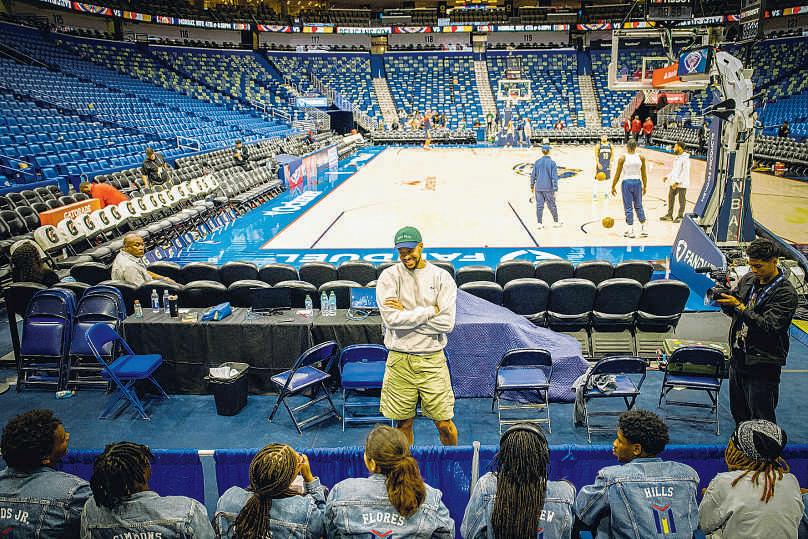
Seniorsget $80K in scholarships from N.O. star C.J. McCollum
BY JOSEPH CRANNEY Staff writer
Zayden Hills says he knewwhat he wantedtobewhen he grew up by the time hewas 6years old Alawyer
He was acreative kidwhose mom, ateacher, encouragedhim to readand write. He loved “The ChroniclesofNarnia” and thriller novels. He read Maya Angelou and wrote poemsheperformed at open mics when he was still in elementary school. But it was aworkday visit tohis uncle’sNew Orleans law firmthat really settled it.
“I foundbeing an attorney to be the most interesting thing when Iwas younger,” said Hills, nowa senior at Edna Karr High School, about to pursue acareer in the law
Hills is among 11 New Orleans high school seniorsselected to this year’sclass ofMcCollum Scholars, aprogram funded by NewOrleans Pelicans star C.J. McCollum and his wife, Elise. McCollum Scholars launched last year in partnershipwiththe
New Orleans-based nonprofit College Beyond. Each scholar receives $80,000 over four years in last-dollar scholarships, designed specifically to closethe financial aid gaps that remain after grants, institutional aid, andother scholarshipsare applied.The scholarship includes access to one-on-onecounseling, monthly workshops and college tours.
“Inacitywhere thenarrative around New Orleans youthistoo oftenshapedbydeficit and limitation, the McCollum Scholars program stands as apowerful counterexample,” said Clara Baron-Hyppolite, CollegeBeyond’s executivedirector. “It shows what young people are capable of when they are supported, seen, and no longerheld back by financialbarriers.”
Baron-Hyppolite says that the scholarship is specifically intended to reducestudents’ family contributions and eliminate the need for loans
Among the universities where this year’s classwill attend: Vanderbilt University, Syracuse University,Providence College andTulane University
“I want to provide students with theresources they need to think outside the box aboutwhatthey canachieve in their lives,” McCollumsaid in amessage on College
Beyond’swebsite. He joinedthe Pelicans team in 2022. Hills, theEdnaKarrstudent body president with agrade-pointaverageabove four points, will attend theUniversity of Southern California, where he’llmajor in English, an educationthatwill allow him to continue to read and writealot, becauseafter all: To be agood lawyer youhavetobeagoodwriter,Hills said.
He had lotsofoptions when it came to deciding wheretogoto college —USC,Amherst College in Massachusetts, Morgan State in Baltimore, Loyola University New OrleansorLehigh University in Pennsylvania, McCollum’salma mater.
In making hischoice, Hills went back to afeelinghehad as akid in NewOrleans. Adream that he could be faraway,somewhereat peace. California, he thought. “California, when Iwas younger,alwaysseemed like an escape to me,” he said. “I always knew I wantedtogo…I just didn’tknow how.
The remaining2025 McCollum Scholarsare: n KeyriaBillew,Livingston Collegiate Academy,will attend Tulane University on the Mayoral Scholarship. n Arsenio BoldsJr.,Edna Karr
ä See PELICAN, page 2Y
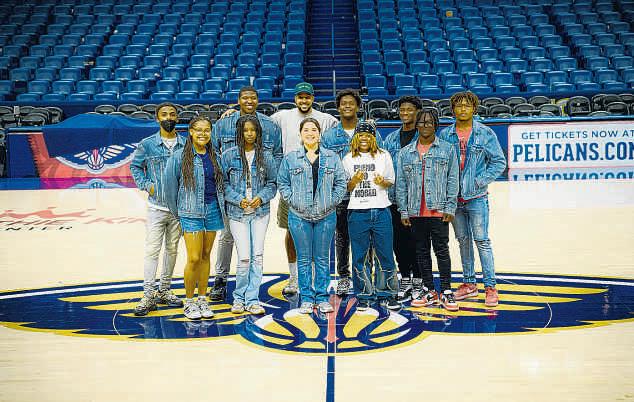


‘Wemustbe kind when we can’
The near noon sun offered no slanting light. It was brash. It was bold. It was blinding.
When Itook my seat on the bench, Ithought about aline from aCher movie Inever saw, but an old boyfriend told me about 34 years ago. He told me about acharacter in the movie “Mask” whotalked about things that wereadrag, listing “holes in my shoe, dust in my hair,no money in my pocket and the sun shining on my face.” Isat on the bench and reflected on what the character from the movie Inever saw meant

Then Ithought about so many other people who, like that old boyfriend, said things I’ve mostly forgotten —except for the strange snippetsthat stuck. Words, phrases and moments that still shape how Isee the world —and ripple into the lives of others I’ve touched.
Ithought of Mrs. McLean, my high school junior English teacher,who in class one day off-handedly said, “Ifyour ears are pierced, you should never leave your house without earrings.” In the more than 16,000 days since, Ican count on one hand the times that Iforgot to put on earrings to go whereverI was going.
Ithought of acaterer whose name Ican’tremember.Imet her in Reno, Nevada, in 1990. She quickly told me how to make adish with Italian sausage, freshbasil, Roma tomatoes,whole cream, Parmesan cheese and penne pasta. Imade it shortly thereafter and loved it. I’ve been making it ever since, and it is “the meal” my family loves most,though my husband might argue that that designation lies with his tacos
Ithought of aSlovak woman I met on abus in 1993 who helped me navigate aconfusing bus transfer and ended up actually giving me abus ticket whenthe snow started to fall. Iprotested that Icouldn’taccept the bus ticket. Her English wasbroken, but somehow she said one of the most poetic sentences anyone has ever uttered to me. She said, “The world is small. We must be kind when we can. Take the ticket.” And so Idid, and the sentence and moment profoundly changed the way Isaw the world. Back to the realityofthe present day,Ilooked at the notso-far-away horizon across the lake at Solomon Retreat Center and considered the fuzzy line between where Iend and others begin —and how we all get meshed together in so many ways. The sun continued to shine as Ilistened to the songs of aCarolina wren, apersistent tufted titmouse and ablue jay Aperfect breeze came along and blew my
Shirley known as Louisiana Sea Grant and LSU AgCenter marine extension agent
BY LAUREN CHERAMIE Staff writer
Mark Shirley, a Louisiana Sea Grant and LSU AgCenter marine extension agent, retired in March after 41 years of service. He is known for many things during his career, but most notably, he developed Marsh Maneuvers established in 1989 as an immersive education program for 4-H students to experience Louisiana’s coast. The program motivates students toward studying coastal ecology and biological sciences
Shirley is an aquaculture specialist with expertise in crawfish, alligator and recreational fish production. Since the ‘80s, he has educated new crawfish farmers on production and harvesting practices.
In 2024, Shirley received the Lifetime Achievement Award from the Louisiana Wildlife Federation
This interview was edited for length and clarity
How did your love for nature come about?
I grew up in the middle of New Orleans, so I’m a city kid born and raised. But my dad and I went fishing a lot, so I enjoyed coastal Louisiana as a kid. I was catching speckled trout and redfish. I was in Boy Scouts and enjoyed camping and the outdoors.
I went to LSU for my bachelor’s degree in wildlife management, and then I got my master’s in wildlife management. My first job was at Rockefeller Wildlife Refuge in Grand Chenier, where the center of alligator research was and still is for the world. Back in the ’70s, they came up with the idea of having an alligator harvest system and the alligator farm program.
At Rockefeller, I got a lot of experience working with alligators but also with water fowl research, duck banding, river otters and marsh management.
When did you start working with the Louisiana Sea Grant program and LSUAgCenter?
In 1984, I started working for the program and the center The Louisiana Sea Grant organization is similar to the land grant university program. Basically, I was a double agent.
Congress allocates money which comes through the National Oceanic Atmospheric Administration to fund research and extension work on coastal issues in all the coastal states and Great Lake states.
On the AgCenter side, when the land grant university system started, Congress developed that program to do agricultural research and later figured out that they needed to have extension agents. They did research but also extended the information to farmers around the country
I was a marine extension agent with Louisiana Sea Grant and a county agent with the LSU AgCenter
What were some of the daily tasks of a double agent?
As a marine extension agent, I was involved in communicating the research that was developed at LSU and any other coastal university to shrimpers and fishermen. I worked with landowners who harvest wild alligators, farmers who developed their alligator farms and with crawfish farmers to help them develop their businesses.
Over the years, my expertise involved coastal issues, marine fisheries, freshwater fisheries, crawfish aquaculture and alligator aquaculture.
Within all of that, I also did the Marsh Maneuvers 4-H program that’s available to students from fourth grade to high school.
As an expert in crawfish aquaculture, do you prefer seasoning in or on top of your crawfish?
It makes a big difference. Do not put salty spices in your crawfish boiling water
When you boil your crawfish in salt water, it’ll make part of the meat stick to the shell and make them a little bit harder to peel.
Once you boil them, put them in a container and sprinkle spices on top, and they will absorb some of that flavor
If you boil them just right, the backstrap — the piece of meat that sits on top the vein — stays on the tail. That gives you much more meat. If they cook just right and not too long, and not in salt water,

Continued from page 1y
High School, will attend University of Arkansas-Pine Bluff on a football scholarship.
n Kiali Brown, The Willow School New Orleans, will attend Lehigh University
n Alejandra Flores-Rasgado, Livingston Collegiate Academy, will attend Macalester College as a QuestBridge Scholar
n Nandi Gayles, Ben Franklin High School, will attend Providence College on the Posse Foundation
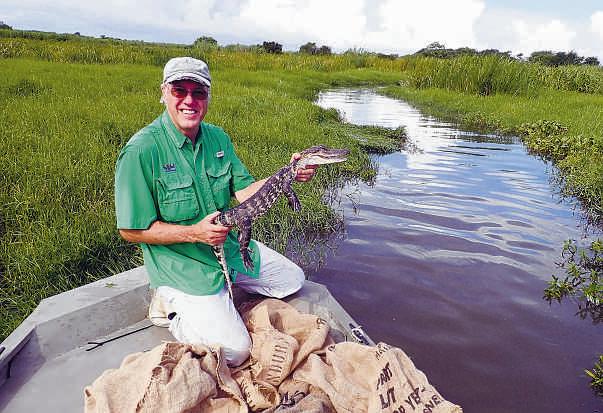
of service.
when you pinch the tail, you can actually pull that vein out.
If you add a couple of sticks of butter or margarine to your boil, that’ll help them peel a little bit easier too.
How can the average Louisianan be a good steward of the coast?
It gets into the policy and political arena to support the coastal restoration efforts and organizations The state government has the Coastal Protection Restoration Authority, and the federal government has the Coastal Wetlands Planning, Protection and Restoration Act.
Along the coast, we have the Coalition to Restore Coastal Louisiana, as well as the Louisiana Wildlife Federation and Barataria-Terrebonne National Estuary Get involved with some of these nongovernmental conservation groups that sometimes do field trips, encourage policy decisions and encourage the investment of tax dollars to projects.
I look at coastal restoration as paying rent to keep using this
Scholarship.
n Gerald Jackson, Abramson Sci Academy, will attend Louisiana State University
n Elissa Merlin, The Willow School New Orleans, will attend Tulane University
n Akeim Nelson, G.W Carver High School, will attend Tulane University
n Jayden Simmons, G.W Carver High School, will attend Vanderbilt as a QuestBridge Scholar
n Ezekiel Whitley St. Augustine High School, will attend Syracuse University on the Please Foundation Scholarship.

RISHER
Continued from page 1y
— and when the sun shines on my face.
Email Jan Risher at jan.risher@ theadvocate.com.
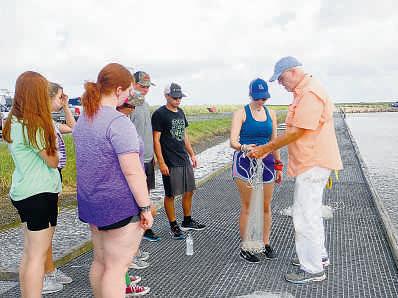
BY JOY HOLDEN Staff writer

“James,” by Percival Everett, the second book for the 2025 Louisiana Inspired Book Club, has won the Pulitzer Prize for fiction, in addition to the National Book Award and the Kirkus Prize. A twist on the classic Mark Twain novel “The Adventures of Huckleberry Finn,” this work of fiction features Jim as the narrator, not Huck, and fills in the gaps of the original text when the two became separated. This selection will be an excellent read to transition into the summer Take the journey with the Louisiana Inspired Book Club and read “James,” then join in the discussion on the virtual Inspired Book Club discussion at 12:15 p.m., June 10. Everett is a distinguished professor of English at the University of Southern California Dornsife College of Letters, Arts and Sciences, and is widely regarded as one of the most original voices in American literature. His body of work spans satire, Westerns and experimental prose. His 2001 novel “Erasure” was adapted into the Oscarwinning 2023 film “American Fiction.”
He has received the Windham Campbell Prize from Yale University He lives in Los Angeles with his wife, the writer Danzy Senna, and their children. Everett reimagines the epic tale of Huck and Jim with Jim’s Odyssean journey to freedom for himself and his family The relationship with Huck is still there, but the focus is on Jim and the

by
is the summer selection for the Inspired Book Club
people he meets along the way
The novel is darkly funny at times and achingly sad at others, yet action-packed and irresistible.
When the enslaved Jim overhears that he is about to be sold to a man in New Orleans, separated from his wife and daughter forever, he decides to hide on a nearby island until he can formulate a plan. Meanwhile, Huck Finn has faked his own death to escape his violent father As readers of American literature know, thus begins the dangerous journey by raft down the Mississippi River toward elusive freedom.
Jim has always been a favorite character in American literature, but “James” elevates him to a multidimensional hero who exhibits intelligence, wit, courage and compassion.
Email Joy Holden at joy.holden@ theadvocate.com.
‘Planting forfuture generations’
JANA ROSE SCHLEIS
Contributing writer
Editor’snote: This story,created by Jana Rose Schleisfor KBIAispart of the Solutions Journalism Network. Louisiana Inspired features solutions journalismstories that provide tangibleevidence that positive change is happening in other places and in our own communities —solutions that can be adopted around the world. Throughoutthe month of April, Columbia, Missouri, residents observe Arbor Day —the conservation holiday that encourages planting trees —with tree seedlings givenout in fourth gradeclassrooms and at aSaturday farmers market. For Missourians, many of the Arbor Day tree seedlings originate at the state-run tree nursery
This year,approximately 80,000 sycamore seedlings were sent to fourth graders across the state. The fast-growing tree is native to Missouri and doesespecially well in the state’s streamside habitats. Generally planted in spring, sycamores are beneficial for wildlife as the tree’s soft wood affords birdsand smallmammals aplace to burrow
The tiny trees begin their journey where they’re growninthe Texas County townofLicking. The seedlings are inspected by about adozenstaffatMissouri’s George O. White State Forestfor length,thicknessand root quality
The nursery was founded by theU.S.ForestService in the1930s to assist landowners in reforesting the state. The Ozarks had been heavilylogged as railroads stretched west. The original site was just
40 acres andnow standsat 100 acres. It’sowned and operated by the Missouri Department of Conservation.
Nursery supervisor Mike Fiaoni manages the tree production facility, andselects the species thatare sent —free of charge —to students across the state for Arbor Day. Teachers also receivematerialstoinclude in lessons about the species and how to plant the trees
“Wewant to educate young students as faras the importance of trees, the values of trees andso this is the way we can do that …startreachingthemata young age,” Fiaoni said.
Fiaoni picked the sycamore for this year’sArbor Day tree because it can grow well across theentire state. Theseedlings are carefully packaged in bundlesof25. They’re placed on top of abed of moss, given a spritz of water,wrapped in tear-proofpaper,placed in a cardboard box and stacked in aUPS trailer for the journey across the state.
The nursery grows,cultivates, packages and ships 2 million bare-rootseedlings to landowners, farmers, schoolsand local governments eachyear
“A lot of folks think, ‘I want to do something for conservation but I’m one person or Idon’t have alot of money.Whatcan Ido?’”
Fiaoni said.
“By simply plantinga tree—whether it lives 10 years, 20 years, maybeeven 100 years —the ecosystem you’re formingaround that tree, thevalue that it’s adding to your home or tothe property,the oxygen it’s giving off, the value it’s adding to the wildlife,”he said. “There’sjustsomuch of an ecosystemthat’sgoing to evolve around that single tree …it’ssoimportant.”
From LickingtoColumbia
This year, morethan 1,000
of those seedlings traveled the127 miles to Columbia and weregiven to enthusiastic farmers market shoppers, manyofwhomlined up early on aSaturday morning.
“Wehad people waiting,” saidEricSchmittel, aforester withthe cityofColumbia. “Weshowed up here probably about 6:30 —there were people waiting here already,and the line hasjust been around the corner.”
Schmittelmanages trees in the city’s70parks and trails as well as those in the urbanenvironment downtown. Schmittel orders around 15 to 20 species of seedlings to give away for ArborDay and said themost sought-after are thosethat producefruit, nuts or flowers. Columbia recognizes “Arbor Month” —culminating withthe seedling giveaway
“They’re free first of all, which is everybody’sfavoriteprice,but then they’re also really excited about the differentvarieties,” said Hollie Campbell, amember of avolunteer group called “TreeKeepers” whospent themorning handing out seedlings to eager market attendees.
The TreeKeepers are trained by city foresters on the basics of treecare planting, pruning andwatering —and assist in conservation projects across the city, including invasive honeysuckle removal.
Campbell has been apart of the group for three years and said she initiallyjoined to learn more abouttrees and“give back”through conservation in her community.
“This is theonly planet we have, and Ithink it’s really important thatwehonor that,” Campbell said.
Cruz Chavez and his daughter Violetta waited in line at the farmers market hoping to score native fruit trees suchaspawpaws,ser-

vice berries or persimmons. Chavez plants atree each year withhis kids for Arbor Day
“The tree kind of gets to grow withthem. Ithink they getreallyexcitedseeing it get alittle bigger every year,” Chavez said.
Since Violetta is learning about howtrees help the environmentinschool, her father Cruz said she’s“obsessed” with planting trees Including thisyear’s Arbor Daytree, andher favorite, thesycamore.
“I likethe color when the bark comesoff. Ithink it’s really cool,”she said.
Alocal climatesolution
Arbor Day’sroots began in Nebraska in the 19thcentury and hassince grown into aglobally-observedday of conservation.
For more than 50 years, the Arbor Day Foundation’s mission has been to help communities plant, nurture and celebrate trees. “Wetalka lot abouttrees


…and themessaging we sometimes forget is it’snot about the trees, it’sabout the people,” said Eric North, program manager forurban forestry at the Arbor Day Foundation.
North said trees can enhancequality of life.They improve water and air quality and can reduce the impacts of increasing severe weather caused by climate change like heat in the summer and wind in the winter “Wefeelverystrongly and passionately that trees are really part of abig solution to helpimprove thelivesof people livingincommunities, to help improve things that might be negatively impacting the climate,” he said.
North said as the threats of climate change intensify theArbor Day Foundation has heard from morepeople and organizations who want to implement the solution of planting trees. He helps those folks understand when, whatand howtoplant.
The city of Columbia has participatedinthe Arbor Day Foundation’sTreeCity USAprogram for30years, Schmittel said. To qualify participating cities must observeArbor Day, have atree board or forestry department andcommita minimum $2 per capita annual investment in trees. Schmittel said the city of Columbia spends more than $5 per capita on trees each year Bare root seedlings like those cultivated at thestate tree nursery and handed out each year at theColumbia Farmers Market are small and need care. Schmittel recommends residents place mulch around the seedling to help it maintainmoisture and encircle it with wire to ward off critters. When watered, it can eventually grow into amature tree.
“Especially these really small seedlings, you’re not necessarilyplanting it for yourself,”Schmittel said “You’re planting it for future generations.”
































Cows produce more milk than average
BY RICHA KARMARKAR Contributing writer
On a quiet Sunday on rural Pennsylvania farmland, Dhruva and his favorite cow, Tabby, meet at dawn
While one recites a mantra to Lord Krishna using prayer beads, the other listens to religious chants as she’s milked. But they’re joined together at breakfast — both enjoying a sattvic, or spiritually pure vegetarian meal of organic produce sanctified by God before consumption.
Cows on the Gita Valley dairy farm outnumber humans by about 5 to 1, but the 20 full-time human residents prefer it that way
“They’re like big dogs that like to run up to you and try to eat your hands or something,” said the commune’s head chef, Madhupan. Parijata, Dhruva’s wife, called the cows “friends, but also living entities that make a contribution and deserve our respect.” (As initiated members of the International Society for Krishna Consciousness, or ISKCON, the residents of the farm, besides eschewing illicit sex, intoxication, meat-eating and gambling, use only one name.)
Of Tabby the “mascot of the herd” that has been producing milk for the longest among the cows, Dhruva simply said, “She’s a grain thief.”
On this farm and creamery run by Hindu devotees and modeled after a traditional Indian gaushala, or cow sanctuary, the only one of its kind in the United States, both soil and soul are cultivated with God in mind The 102 rescued bovines on the 430-acre property roam free providing emotional support to their human companions as well as fresh milk
In line with the owners’ belief system, Gita Valley is the first USDA-certified dairy farm that refrains from violence against its cows. They aren’t dehorned, poked, prodded, bred, branded or confined in any way, and the cows are not sent to market (“a sanitized term for slaughtered,” said Dhruva) after they can no longer produce milk, as they are at most U.S. dairy farms.
The 16 female cows who are able to produce each give 400 gallons a week — more than average a fact Dhruva attributes to the principle that “when we’re happy, when we’re taken care of, we’re willing to give more.”
ISKCON adherents believe cows are the ultimate mothers providing protein, nutrition and sustenance and asking for nothing in return. Gita Valley’s priority Dhruva said, is not profit but for rescuing the animals from a capitalist culture that forces cows (and their farmers) into exploitation
“It’s very clear from the Vedas that humanity as a whole is suffering today as a result of the slaughter of cows,” he said, referring to sacred Hindu texts.
Dhruva, 52, the farm’s president, and his wife, who goes by PJ, gave up successful careers in South Africa (“I was promoted,” said Dhruva, who worked as an engineer) to move to Port Royal in 2009. Devoting their lives to Krishna the blue-skinned deity and cowherd whom ISKON members consider the Supreme Lord, they adopted a dietary regimen free of meat, onions, garlic, caffeine or any other spiritually disruptive ingredients.
They moved onto the farm founded in 1974 by Swami Prabhupada, ISKCON’s founder, who had named the land Gita Nagari, or “land of the Bhagavad Gita,” Hinduism’s holiest book, so Hare Krishnas, as ISKON followers are known, could live out their faith without worldly distractions.
The project, now rebranded as Gita Valley, was started with four Brown Swiss cows and innumerable peacocks — “a headache for the plants,” said Dasya, the head gardener Ashok Dudakia, one of the swami’s original initiates, describes the guru as having “tears in his eyes” when he arrived in the U.S. in the late 1960s and saw how Americans treated their cows.
“He said, ‘how can I educate these people on nonviolence?’ ” said Dudakia, who goes by the name Adya. “Actually it’s not nonviolence, it’s just etiquette. We are the supreme species, God has given us that, and we should be taking care of animals, not mistreating them.”
Dhruva said a growing ethical veganism movement, whose adherents may consume animal byproducts if the source is guaranteed to be non-exploitative, has been increasing demand for Gita Valley’s dairy products, evidenced by Gita Valley’s waitlist of hundreds of hopeful consumers.
The farm’s operation is nonetheless mostly funded by weekend retreats organized by a third party, which brings almost 3,000 people a year Other revenue comes from milk subscriptions (price: $18 per gallon) from nearby ISKCON temples, the farm’s gift shop, “Mootique,” and undergraduate workstudy programs. (One eager GenZer created a viral TikTok video that led to 1,200 applications for the program’s 54 spots.)
Outsiders can “adopt” or “rescue” a cow through regular donations; the latter allows donors to name a cow and participate in a cow puja, or Hindu blessing.
Drawing larger investors is a challenge, said Dhruva. Even though “there’s still this romantic idea of farming,” he said, it’s hard to find individuals willing to contribute to the farm’s mission even

though they are likely to see competitive returns.
The gardener, Dasya, 35, an initiated Hindu monk who came to live in Gita Valley in 2019, observed that farm life is “always a battle between living simply and wanting more.” He admitted, “It’s tough sometimes to keep the vision, because in the immediate it might seem like, ‘What are we doing out here?’”
“When you’re here, you really see how dependent you are on a higher force, because you don’t know what’s gonna happen,” he said. “The wind could come and take out the greenhouse, take out your crops. You’re more connected to nature, and that ultimately brings you closer to knowing and acknowledging that there’s something higher.”
Yet he regards living on the farm as part of a “spiritual revolution” that makes him able to thrive “separated from the man.” The neighboring Mennonites who trade produce with him, said Dasya, admire the Hare Krishna farmers’ “pure, unmotivated love of God, without distraction of material wealth,” something, they tell him their own communities could stand to work on.
Madhupan, the farm’s vegan chef (and Dasya’s fiancé) lived in Wellington, New Zealand, in an ISKCON community before joining Dasya, whom she has long been dating, about a year and a half ago. Madhupan sees people outside ISKCON moving toward a more conscious, plant-based diet. “Many are not in a proximity
where they can purchase dairy that comes from places like this,” said the chef, who notes “sadly” that she lacks the enzymes to properly digest dairy “But it’s really a consciousness thing, being like, ‘Okay where does my milk actually come from? It doesn’t just come from Weiss or Wegmans. It comes from the cow And what’s the consciousness of that living entity?’”
Preeti Sharma, a pediatrician who visits the farm with her two teenagers every month and lives there part time, goes a step further, saying even vegan milk is produced from the living entities of trees: “It’s not so much about who’s better a vegetarian or a non-vegetarian,” she said, as much as bearing in mind that we are what we eat. “We are trying to work on our consciousness, and food is a fundamental part.”
Ashok Dudakia’s daughter, Kunti, a frequent visitor from her Washington-area home, is raising her two young daughters in the ISKCON tradition. She hopes the love she has cultivated in them for the farm’s cows (and its smell) will be passed on to the next generation.
“Whenever you see Krishna as a cowherd boy with cows, they’re always in an open pasture, free roaming,” she said. “Coupling Krishna’s pastimes with the actual experience of being on a farm with cows made it real for me and made me fully understand why Krishna was so passionate. They have such sweet energy, and they’re so giving of themselves.
I just think they’re really misunderstood in American culture like just cattle, or a product.” Dudakia, who lives in California, visited the farm’s temple to pray for the growth of the farm before he departed for his flight home. He is planning to open an Ahimsa Dairy shop on the West Coast, he said, to expand their reach. “They need serious help, and we have to do something now,” he said.
Dhruva said he also prays to Krishna, asking that new money will come in from Hindu temples in the United States that reflect the Hindu American community’s wealth About an hour away by car is Vraj Temple, one of the largest Hindu houses of worship in the nation.
“A lot of people grew up in India and tell me, ‘We always had a family cow, I remember milking the cow,’” he said. “But when they come here, they forget very quickly The idea is that in one sense, Krishna will make some arrangements, but we don’t want to leave it all to him to do So we’re taking some practical steps to search out succession.”
Sharma, the pediatrician, believes that all that’s needed is for more people to visit and “get a real taste:” both of the non-violent milk and of the healing nature of Gita Nagari.
“Here, you live every day,” she said. “In the outside place, you pass days to live later Gita Nagari is a place where you can come with all your worries, sit with the cows, and they’ll lick it all out of you.”
The congregation also recognizes Holocaust writing contest winners
BY JOY HOLDEN Staff writer
On May 4, the Unified Jewish Congregation of Baton Rouge, in partnership with Jewish Federation of Greater Baton Rouge, held its service for Holocaust Remembrance, where they honored not only the victims and survivors of the Holocaust 80 years after the concentration camps were liberated, but also the American soldiers who liberated the camps. The annual event is called Yom HaShoah.
The service included prayers and a series of presentations, including the Texas Liberators Project and a conversation with Bill Kongable.
Kongable is a World War II veteran of the 89th Infantry Division and a Texas Liberator
The event also recognized the winners of the Jewish Federation of Greater Baton Rouge Annual Holocaust Writing Contest. It concluded with the Mourn-
er’s Kaddish and Prayer for Peace.
Rabbi Sarah Smiley introduced Fran Berg, the founding commissioner of the Texas Holocaust and Genocide Commission, who has been championing liberators’ oral history and sharing the liberators’ witness for a long time. The Texas Holocaust and Genocide Commission created the Texas Liberator project in collaboration with Texas Tech University and the Texas Holocaust museums. The project is an educational resource that teaches the history of the Holocaust and liberation. The website texasliberators.org provides the liberators’ oral testimonies, maps of the camps they liberated and an honor roll of 723 liberators Berg said that by providing their eyewitness testimonies, liberators protect and preserve the values affecting them to Europe in the first place, freedom, morality, truth, duty, honor and country At 99, Kongable is sharp and sincere with a sense of humor He was a part of the liberation of Ohrdruf, which was the first concentration camp to be liberated He and his daughter Trish Ramsey, took turns
telling his story to the quiet room full of listeners in the Unified Jewish Congregation of Baton Rouge synagogue.
When asked his feelings about Germans after he witnessed the atrocities of the Holocaust, Kongable said his family was German, but more than negative feelings toward Germans, he said he wanted to get to know every Jewish person he met for the rest of his life.
“We have to learn history,” said Kongable. “If you don’t know your history, you are more likely to repeat it. That’s my main advice.”
He also said that the value in sharing his story 80 years later lies in the responses of his audience.
“The value is to hear people who appreciate the message, and the more people I can talk to, then the more people I can convince that the Holocaust really did happen,” said Kongable.
Remembering with writing
Ellen Sager, the executive director of the Jewish Federation of Greater Baton Rouge, described the organization’s Annual Holocaust Writing Contest and recognized the teachers in the sanctuary who accompa-
nied their finalist students to the event. The contest is free and open to all public, private, and charter middle and high schools throughout Louisiana. The purpose of this contest is to encourage students to learn about and understand the lessons of the Holocaust, including the nature and repercussions of unchecked hate and prejudice taken to their ultimate extreme, and use the lessons of the Holocaust to promote tolerance, acceptance and respect for others. The middle school essay finalists were n First place — Lila Morton, a seventh grader from LSU Laboratory School
n Second place — Ava Ash, an eighth grader from Central Private School
n Third place — Laila Williams, a seventh grader from Sherwood Middle Academic Magnet. High School essay finalists were:
n First place Sophie Crochet, a 10th grader from Ascension Catholic High School
n Second place — Mia Comeaux, a ninth grader from Delcambre High School
n Third place — Anderson Paine, a 10th grader from Ascension Catholic High

School.
Crochet’s winning essay includes the following: “An ignorant society makes and consumes stereotypes, which only makes them complacent in their igno-
rance. Stereotypes are dangerous, but our casual acceptance of them is the real danger.” Email Joy Holden at
SUNDAY, MAY 18, 2025

























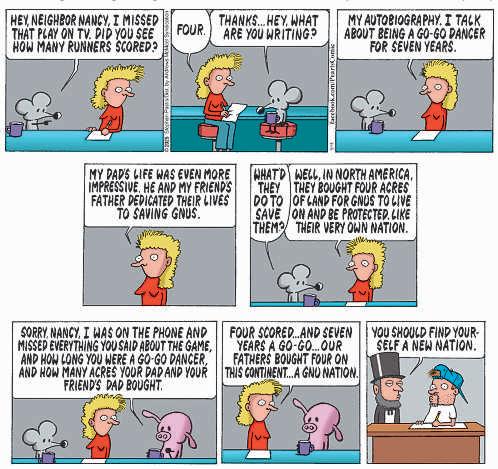




directions: Make a 2- to 7-letter word from the letters in each row Add points of each word, using scoring directions at right. Finally, 7-letter words get 50-point bonus. “Blanks” used as any letter have no point value All the words are in the Official SCRABBLE® Players Dictionary, 5th Edition.
instructions: 1. Words must be of four or more letters. 2. Words that acquire four letters by the addition of “s,” such as “bats” or “dies,” are not allowed. 3. Additional words made by adding a “d” or an “s” may not be used. 4. Proper nouns, slang words, or vulgar or sexually explicit words are not allowed.
todAY's Word — recouPed: rih-
KOOP'D: Regained.
Average mark 38 words Time limit 60 minutes
Can you find 55 or more words in RECOUPED?


instructions: 1 -Each rowand each column must contain thenumbers 1through4 (easy) or 1through6 (challenging) without repeating 2 -The numbers within the heavily outlinedboxes, called cages, must combine using thegiven operation (inany order)toproduce the target numbersinthe top-left corners. 3 -Freebies: Fillinthe single-boxcages withthe numberinthe top-left corner
instructions: Sudoku is anumber-placing puzzle based on a 9x9 gridwith several given numbers. The object is to placethe numbers 1to 9in theempty squares so that each row,each column and each 3x3 boxcontains the same number only once. The difficultylevel of the Conceptis Sudoku increases from Monday to Sunday
directions: Complete thegridso that numbers 1–132 connect horizontally, vertically or diagonally

Edited by Rich Norris and Joyce Nichols Lewis
Today’s deal is from a recent National Championship pair game contested in Memphis.
South was Geoff Hampson, one of the USA’s leading players Hampson’s three-diamond bid showed a fit for diamonds. He would have bid three clubs if he did not like diamonds North bid game hoping there would be nine tricks.

Hampson saw that there were only eight tricks and the heart suit was wide open. The heart suit would not be so easy to run on this deal, as West would have to unblock his nine of hearts not an impossible play but beyond the imagination of many Hampson couldn’t know this, and he showed nerves of steel by smoothly ducking the opening spade lead. East’s play to this trick might well have been an encouraging signal. West wasn’t sure and shifted to the king of clubs. Hampson played low again! West reverted to spades and led the eight. Hampson won with dummy’s jack, giving him nine tricks, and he ran all six of dummy’s diamonds. In the ensuing four-card ending, West had to come down to queen doubleton in both black suits. Hampson led a spade to his ace and,
reading the position perfectly, led another spade, discarding the jack of clubs from dummy West won and had to lead a club into Hampson’s ace-10, giving Hampson an overtrick! He will be arrested if he keeps this up.
Tannah Hirsch welcomes readers’ responses sent in care of this newspaper or to Tribune Content Agency inc., 2225 Kenmore Ave., Suite 114, Buffalo, Ny 14207. E-mail responses may be sent to gorenbridge@ aol.com. © 2025 Tribune Content Agency
TAURUS (April 20-May 20) Lead the way. Choose intellectual banter over a shouting match, and you’ll gain the respect and confidence of onlookers waiting and watching to see what you do next.
GEMINI (May 21-June 20) Keep an open mind but a closed wallet. Don’t be tempted by any hype from someone eager to part you from your cash Discover your niche instead of buying into someone else’s.
CANCER (June 21-July 22) Keep life simple, conversations civil and intentions honorable. Strive for peace and enjoy what life has to
offer Refrain from taking risks with your health or physical wellbeing. LEO (July 23-Aug. 22) Make room for new beginnings, and fulfill your dreams Learn from experience, listen to your heart and choose peace and love. Your success is attached to the you collaborate with and what you do next. VIRGO (Aug. 23-Sept. 22) Prioritize travel, learning, reconnecting with old friends or going on an adventure that sparks your imagination. A change to your environment or routine will help you find inner peace.
LIBRA (Sept. 23-Oct. 23) Uncertainty signals that something has run amok. A thorough investigation will help you find solutions. A partnership will give you the strength and courage to take on something you wouldn’t do on your own.
SCORPIO (Oct. 24-Nov. 22) Be careful when dealing with emotional situations. Arguments will make matters worse Be patient, listen attentively and size up your feelings and wants before responding.
SAGITTARIUS (Nov. 23-Dec. 21) Excitement will fuel your fire. Be the instigator and paint a picture that is hard to resist. Engage in chal-
lenges that depend on physical and emotional courage and strength, and rise to the occasion.
CAPRICORN (Dec. 22-Jan. 19) Making compensations will help level the playing field and ensure stability as living costs increase. When in doubt, take a break and do something that makes you happy
AQUARIUS (Jan. 20-Feb. 19) Push for the changes that will end the blockages you face. Deal with people who are causing you grief and set boundaries that show you mean business.
PISCES (Feb. 20-March 20) Lock into what works for you and rid your-
self of uncertainty Avoid unnecessary domestic expenses. Look for ways to lower your overhead and give yourself some financial relief.
ARIES (March 21-April 19) Let your intuition take you on a journey Follow the path that leads to people who offer new possibilities. Participate in events that push you to challenge yourself physically
The horoscope, an entertainment feature, is not based on scientific fact.
© 2025 by NEA, inc., dist. By Andrews McMeel Syndication
Answers to puzzles
1. Johnny.2.George.3.Jim.4.Jerry.5.John. 6. Ernest. 7. Jimmy. 8. Steven. 9. Harry 10. Charlie. 11. Mary.12. Carl. 13. Edgar.14. Lily 15. Garry.
SCORING: 24 to 30 points —congratulations, doctor; 18 to 23 points—honorsgraduate; 13 to 17 points —you’replenty smart, but no grind; 5to12points —you really shouldhit the booksharder;1point to 4points —enroll in remedial courses immediately; 0points who reads thequestions to you?
Cryptoquote Answer
There are alwaysflowers forthose who want to see them. —Henri Matisse
word GAme Answer super quiz

sudoKu Answer jumble Answer

Crossword Answers
sCrAbble Answers wuzzles Answers
Ken Ken Answers




